Novel Thyromimetics
von Geldern; Thomas ; et al.
U.S. patent application number 16/803853 was filed with the patent office on 2021-02-25 for novel thyromimetics. The applicant listed for this patent is Autobahn Therapeutics, Inc.. Invention is credited to Bradley Backes, Thomas von Geldern.
| Application Number | 20210053917 16/803853 |
| Document ID | / |
| Family ID | 1000005240341 |
| Filed Date | 2021-02-25 |




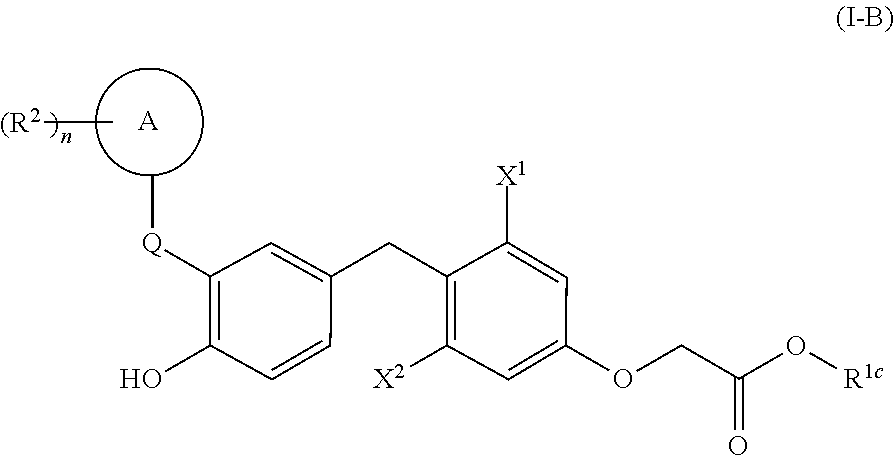

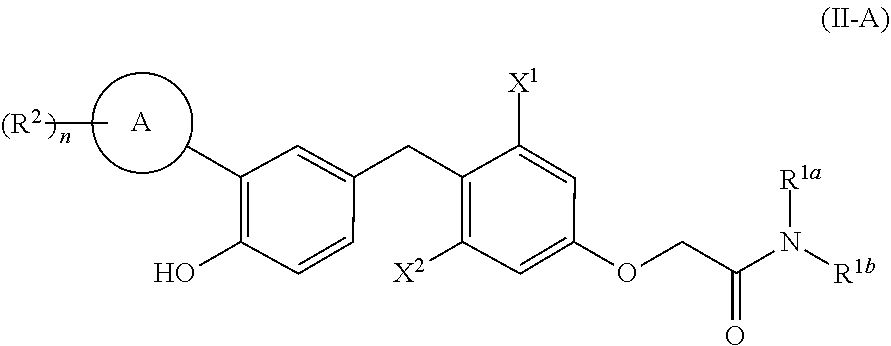





View All Diagrams
| United States Patent Application | 20210053917 |
| Kind Code | A1 |
| von Geldern; Thomas ; et al. | February 25, 2021 |
NOVEL THYROMIMETICS
Abstract
Compounds are provided having the structure of Formula (I): ##STR00001## or a pharmaceutically acceptable isomer, racemate, hydrate, solvate, isotope, or salt thereof, wherein A, X.sup.1, X.sup.2, Q, R.sup.1, R.sup.2 and n are as defined herein. Such compounds function as thyromimetics and have utility for treating diseases such as neurodegenerative disorders and fibrotic diseases. Pharmaceutical compositions containing such compounds are also provided, as are methods of their use and preparation.
| Inventors: | von Geldern; Thomas; (Richmond, IL) ; Backes; Bradley; (San Francisco, CA) | ||||||||||
| Applicant: |
|
||||||||||
|---|---|---|---|---|---|---|---|---|---|---|---|
| Family ID: | 1000005240341 | ||||||||||
| Appl. No.: | 16/803853 | ||||||||||
| Filed: | February 27, 2020 |
Related U.S. Patent Documents
| Application Number | Filing Date | Patent Number | ||
|---|---|---|---|---|
| 62953100 | Dec 23, 2019 | |||
| 62812890 | Mar 1, 2019 | |||
| Current U.S. Class: | 1/1 |
| Current CPC Class: | C07D 205/04 20130101; C07D 207/08 20130101; C07D 213/55 20130101; C07C 235/34 20130101; C07C 69/734 20130101; C07D 203/16 20130101; C07C 59/68 20130101; C07C 317/46 20130101; C07C 235/38 20130101; C07D 307/54 20130101; C07D 333/28 20130101; C07D 333/24 20130101; C07D 239/26 20130101 |
| International Class: | C07D 205/04 20060101 C07D205/04; C07C 59/68 20060101 C07C059/68; C07C 69/734 20060101 C07C069/734; C07C 235/34 20060101 C07C235/34; C07C 235/38 20060101 C07C235/38; C07C 317/46 20060101 C07C317/46; C07D 333/24 20060101 C07D333/24; C07D 333/28 20060101 C07D333/28; C07D 307/54 20060101 C07D307/54; C07D 213/55 20060101 C07D213/55; C07D 239/26 20060101 C07D239/26; C07D 203/16 20060101 C07D203/16; C07D 207/08 20060101 C07D207/08 |
Claims
1. A compound having the structure of Formula (I): ##STR00448## or a pharmaceutically acceptable isomer, racemate, hydrate, solvate, isotope, or salt thereof, wherein: X.sup.1 is lower alkyl, lower haloalkyl, or halo; X.sup.2 is lower alkyl, lower haloalkyl, or halo; R.sup.1 is --NR.sup.1aR.sup.1b or --OR.sup.1c; R.sup.1a and R.sup.1b are each, independently, H, lower alkyl, lower alkenyl, lower alkynyl, --OR.sup.a, --NR.sup.aR.sup.b, carbocycle, carbocyclealkyl, heterocycle, or heterocyclealkyl, or Ria and R.sup.1b taken together with the nitrogen atom to which they are attached form heterocycle; R.sup.1c is H, lower alkyl, carbocycle, heterocycle, carbocyclealkyl, or heterocyclealkyl; Q is a bond, --C(R.sup.3R.sup.4)-- or --{C(R.sup.3R.sup.4)}.sub.2--; A is aryl or heteroaryl; each R.sup.2 is, independently, halo, cyano, lower alkyl, lower alkenyl, lower alkynyl, lower haloalkyl, carbocycle, heterocycle, carbocyclealkyl, heterocyclealkyl, --OR.sup.a, --NR.sup.aR.sup.b, --C(O)R.sup.a, --C(O)OR.sup.a, --C(O)NR.sup.aR.sup.b, --NR.sup.aC(O)R.sup.b, --S(O).sub.2R.sup.a, or --S(O).sub.2OR.sup.a; R.sup.3 and R.sup.4 are each, independently, H, halo, cyano, lower alkyl, lower alkenyl, lower alkynyl, lower haloalkyl, --OR.sup.a, --NR.sup.aR.sup.b, carbocycle, heterocycle, carbocyclealkyl, or heterocyclealkyl, or R.sup.3 and R.sup.4, together, form .dbd.O or .dbd.S; n is 0-5; and R.sup.a and R.sup.b are each, independently, H, lower alkyl, or lower haloalkyl; wherein R.sup.1a, R.sup.1b, R.sup.1c, R.sup.2, R.sup.3, R.sup.4, R.sup.a, and R.sup.b are each, independently, optionally substituted with one or more halo, cyano, --OR', --NR'R'', --S(O).sub.2R' or --S(O).sub.2OR', wherein R' and R'' are each, independently, H, lower alkyl, or lower haloalkyl; and wherein X.sup.1 is lower haloalkyl or halo when Q is --CH.sub.2--, A is phenyl, and n is 0.
2-3. (canceled)
4. The compound of claim 1, wherein Q is a bond and having the structure of Formula (II): ##STR00449## or a pharmaceutically acceptable isomer, racemate, hydrate, solvate, isotope, or salt thereof, wherein: X.sup.1 is lower alkyl, lower haloalkyl, or halo; X.sup.2 is lower alkyl, lower haloalkyl, or halo; R.sup.1 is --NR.sup.1aR.sup.1b or --OR.sup.1c; R.sup.1a and R.sup.1b are each, independently, H, lower alkyl, lower alkenyl, lower alkynyl, --OR.sup.a, --NR.sup.aR.sup.b, carbocycle, carbocyclealkyl, heterocycle, or heterocyclealkyl, or Ria and R.sup.1b taken together with the nitrogen atom to which they are attached form heterocycle; R.sup.1c is H, lower alkyl, carbocycle, heterocycle, carbocyclealkyl, or heterocyclealkyl; A is aryl or heteroaryl; each R.sup.2 is, independently, halo, cyano, lower alkyl, lower alkenyl, lower alkynyl, lower haloalkyl, carbocycle, heterocycle, carbocyclealkyl, heterocyclealkyl, --OR.sup.a, --NR.sup.aR.sup.b, --C(O)R.sup.a, --C(O)OR.sup.a, --C(O)NR.sup.aR.sup.b, --NR.sup.aC(O)R.sup.b, --S(O).sub.2R.sup.a, or --S(O).sub.2OR.sup.a; n is 0-5; and R.sup.a and R.sup.b are each, independently, H, lower alkyl, or lower haloalkyl; wherein R.sup.1a, R.sup.1b, R.sup.1c, R.sup.2, R.sup.a, and R.sup.b are each, independently, optionally substituted with one or more halo, cyano, --OR', --NR'R'', --S(O).sub.2R' or --S(O).sub.2OR', wherein R' and R'' are each, independently, H, lower alkyl, or lower haloalkyl.
5-6. (canceled)
7. The compound of claim 1, wherein A is phenyl and having the structure of Formula (III): ##STR00450## or a pharmaceutically acceptable isomer, racemate, hydrate, solvate, isotope, or salt thereof, wherein: X.sup.1 is lower alkyl, lower haloalkyl, or halo; X.sup.2 is lower alkyl, lower haloalkyl, or halo; R.sup.1 is --NR.sup.1aR.sup.1b or --OR.sup.1c; R.sup.1a and R.sup.1b are each, independently, H, lower alkyl, lower alkenyl, lower alkynyl, --OR.sup.a, --NR.sup.aR.sup.b, carbocycle, carbocyclealkyl, heterocycle, or heterocyclealkyl, or Ria and R.sup.1b taken together with the nitrogen atom to which they are attached form heterocycle; R.sup.1c is H, lower alkyl, carbocycle, heterocycle, carbocyclealkyl, or heterocyclealkyl; A is aryl or heteroaryl; each R.sup.2 is, independently, halo, cyano, lower alkyl, lower alkenyl, lower alkynyl, lower haloalkyl, carbocycle, heterocycle, carbocyclealkyl, heterocyclealkyl, --OR.sup.a, --NR.sup.aR.sup.b, --C(O)R.sup.a, --C(O)OR.sup.a, --C(O)NR.sup.aR.sup.b, --NR.sup.aC(O)R.sup.b, --S(O).sub.2R.sup.a, or --S(O).sub.2OR.sup.a; n is 0-5; and R.sup.a and R.sup.b are each, independently, H, lower alkyl, or lower haloalkyl; wherein R.sup.1a, R.sup.1b, R.sup.1c, R.sup.2, R.sup.a, and R.sup.b are each, independently, optionally substituted with one or more halo, cyano, --OR', --NR'R'', --S(O).sub.2R' or --S(O).sub.2OR', wherein R' and R'' are each, independently, H, lower alkyl, or lower haloalkyl.
8-10. (canceled)
11. The compound of claim 1 having the structure of Formula (IV): ##STR00451## or a pharmaceutically acceptable isomer, racemate, hydrate, solvate, isotope, or salt thereof, wherein: X.sup.1 is lower alkyl, lower haloalkyl, or halo; X.sup.2 is lower alkyl, lower haloalkyl, or halo; R.sup.1 is --NR.sup.1aR.sup.1b or --OR.sup.1c; R.sup.1a and R.sup.1b are each, independently, H, lower alkyl, lower alkenyl, lower alkynyl, --OR.sup.a, --NR.sup.aR.sup.b, carbocycle, carbocyclealkyl, heterocycle, or heterocyclealkyl, or Ria and R.sup.1b taken together with the nitrogen atom to which they are attached form heterocycle; R.sup.1c is H, lower alkyl, carbocycle, heterocycle, carbocyclealkyl, or heterocyclealkyl; R.sup.2a is halo, cyano, lower alkyl, lower alkenyl, lower alkynyl, lower haloalkyl, carbocycle, heterocycle, carbocyclealkyl, heterocyclealkyl, --OR.sup.a, --NR.sup.aR.sup.b, --C(O)R.sup.a, --C(O)OR.sup.a, --C(O)NR.sup.aR.sup.b, --NR.sup.aC(O)R.sup.b, --S(O).sub.2R.sup.a, or --S(O).sub.2OR.sup.a; each R.sup.2b is, independently, halo, cyano, lower alkyl, lower alkenyl, lower alkynyl, lower haloalkyl, carbocycle, heterocycle, carbocyclealkyl, heterocyclealkyl, --OR.sup.a, --NR.sup.aR.sup.b, --C(O)R.sup.a, --C(O)OR.sup.a, --C(O)NR.sup.aR.sup.b, --NR.sup.aC(O)R.sup.b, --S(O).sub.2R.sup.a, or --S(O).sub.2OR.sup.a; m is 0-4; and R.sup.a and R.sup.b are each, independently, H, lower alkyl, or lower haloalkyl; wherein R.sup.1a, R.sup.1b, R.sup.1c, R.sup.2a, R.sup.2b, R.sup.a, and R.sup.b are each, independently, optionally substituted with one or more halo, cyano, --OR', --NR'R'', --S(O).sub.2R' or --S(O).sub.2OR', wherein R' and R'' are each, independently, H, lower alkyl, or lower haloalkyl.
12-13. (canceled)
14. The compound of claim 1, wherein Q is --C(R.sup.3R.sup.4)-- and having the structure of Formula (V): ##STR00452## or a pharmaceutically acceptable isomer, racemate, hydrate, solvate, isotope, or salt thereof, wherein: X.sup.1 is lower alkyl, lower haloalkyl, or halo; X.sup.2 is lower alkyl, lower haloalkyl, or halo; R.sup.1 is --NR.sup.1aR.sup.1b or --OR.sup.1c; R.sup.1a and R.sup.1b are each, independently, H, lower alkyl, lower alkenyl, lower alkynyl, --OR.sup.a, --NR.sup.aR.sup.b, carbocycle, carbocyclealkyl, heterocycle, or heterocyclealkyl, or Ria and R.sup.1b taken together with the nitrogen atom to which they are attached form heterocycle; R.sup.1c is H, lower alkyl, carbocycle, heterocycle, carbocyclealkyl, or heterocyclealkyl; A is aryl or heteroaryl; each R.sup.2 is, independently, halo, cyano, lower alkyl, lower alkenyl, lower alkynyl, lower haloalkyl, --OR.sup.a, --NR.sup.aR.sup.b, --C(O)R.sup.a, C(O)OR.sup.a, C(O)NR.sup.aR.sup.b, --NR.sup.aC(O)R.sup.b, --S(O).sub.2R.sup.a, or --S(O).sub.2OR.sup.a; R.sup.3 and R.sup.4 are each, independently, H, halo, cyano, lower alkyl, lower alkenyl, lower alkynyl, lower haloalkyl, --OR.sup.a, NR.sup.aR.sup.b, carbocycle, heterocycle, carbocyclealkyl, or heterocyclealkyl, or R.sup.3 and R.sup.4, together, form .dbd.O or .dbd.S; n is 0-5; and R.sup.a and R.sup.b are each, independently, H, lower alkyl, or lower haloalkyl; wherein R.sup.1a, R.sup.1b, R.sup.1c, R.sup.2, R.sup.3, R.sup.4, R.sup.a, and R.sup.b are each, independently, optionally substituted with one or more halo, cyano, --OR', --NR'R'', --S(O).sub.2R' or --S(O).sub.2OR', wherein R' and R'' are each, independently, H, lower alkyl, or lower haloalkyl; and wherein X.sup.1 is lower haloalkyl or halo when R.sup.3 and R.sup.4 are each H, A is phenyl, and n is 0.
15-16. (canceled)
17. The compound of claim 1, having the structure of Formula (VI): ##STR00453## or a pharmaceutically acceptable isomer, racemate, hydrate, solvate, isotope, or salt thereof, wherein: Q.sup.1, Q.sup.2, Q.sup.3, Q.sup.4, and Q.sup.5 are each, independently, CH, CR.sup.2, or N; X.sup.1 is lower alkyl, lower haloalkyl, or halo; X.sup.2 is lower alkyl, lower haloalkyl, or halo; R.sup.1 is --NR.sup.1aR.sup.1b or --OR.sup.1c; R.sup.1a and R.sup.1b are each, independently, H, lower alkyl, lower alkenyl, lower alkynyl, --OR.sup.a, --NR.sup.b, carbocycle, carbocyclealkyl, heterocycle, or heterocyclealkyl, or Ria and R.sup.1b taken together with the nitrogen atom to which they are attached form heterocycle; R.sup.1c is H, lower alkyl, carbocycle, heterocycle, carbocyclealkyl, or heterocyclealkyl; each R.sup.2 is, independently, halo, cyano, lower alkyl, lower alkenyl, lower alkynyl, lower haloalkyl, --OR.sup.a, --NR.sup.aR.sup.b, --C(O)R.sup.a, --C(O)OR.sup.a, --C(O)NR.sup.aR.sup.b, --NR.sup.aC(O)R.sup.b, --S(O).sub.2R.sup.a, or --S(O).sub.2OR.sup.a; R.sup.3 and R.sup.4 are each, independently, H, halo, cyano, lower alkyl, lower alkenyl, lower alkynyl, lower haloalkyl, --OR.sup.a, NR.sup.aR.sup.b, carbocycle, heterocycle, carbocyclealkyl, or heterocyclealkyl, or R.sup.3 and R.sup.4, together, form .dbd.O or .dbd.S; and R.sup.a and R.sup.b are each, independently, H, lower alkyl, or lower haloalkyl; wherein R.sup.1a, R.sup.1b, R.sup.1c, R.sup.2, R.sup.3, R.sup.4, R.sup.a, and R.sup.b are each, independently, optionally substituted with one or more halo, cyano, --OR', --NR'R'', --S(O).sub.2R' or --S(O).sub.2OR', wherein R' and R'' are each, independently, H, lower alkyl, or lower haloalkyl; and wherein X.sup.1 is lower haloalkyl or halo when R.sup.3 and R.sup.4 are each H, and Q.sup.1, Q.sup.2, Q.sup.3, Q.sup.4, and Q.sup.5 are each CH.
18-19. (canceled)
20. The compound of claim 1, having the structure of Formula (VII): ##STR00454## or a pharmaceutically acceptable isomer, racemate, hydrate, solvate, isotope, or salt thereof, wherein: X.sup.1 is lower alkyl, lower haloalkyl, or halo; X.sup.2 is lower alkyl, lower haloalkyl, or halo; R.sup.1 is --NR.sup.1aR.sup.1b, --OR.sup.1c or heterocycle; R.sup.1a and R.sup.1b are each, independently, H, lower alkyl, lower alkenyl, lower alkynyl, --OR.sup.a, --NR.sup.aR.sup.b, carbocycle, carbocyclealkyl, heterocycle, or heterocyclealkyl, or Ria and R.sup.1b taken together with the nitrogen atom to which they are attached form heterocycle; R.sup.1c is H, lower alkyl, carbocycle, heterocycle, carbocyclealkyl, or heterocyclealkyl; each R.sup.2 is, independently, halo, cyano, lower alkyl, lower alkenyl, lower alkynyl, lower haloalkyl, --OR.sup.a, --NR.sup.aR.sup.b, --C(O)R.sup.a, --C(O)OR.sup.a, --C(O)NR.sup.aR.sup.b, --NR.sup.aC(O)R.sup.b, --S(O).sub.2R.sup.a, or --S(O).sub.2OR.sup.a; R.sup.3 and R.sup.4 are each, independently, H, halo, cyano, lower alkyl, lower alkenyl, lower alkynyl, lower haloalkyl, --OR.sup.a, --NR.sup.aR.sup.b, carbocycle, heterocycle, carbocyclealkyl, or heterocyclealkyl, or R.sup.3 and R.sup.4, together, form .dbd.O or .dbd.S; n is 0-5; and R.sup.a and R.sup.b are each, independently, H, lower alkyl, or lower haloalkyl; wherein R.sup.1a, R.sup.1b, R.sup.1c, R.sup.2, R.sup.3, R.sup.4, R.sup.a, and R.sup.b are each, independently, optionally substituted with one or more halo, cyano, --OR', --NR'R'', --S(O).sub.2R' or --S(O).sub.2OR', wherein R' and R'' are each, independently, H, lower alkyl, or lower haloalkyl; and wherein X.sup.1 is lower haloalkyl or halo when R.sup.3 and R.sup.4 are each H and n is 0.
21-22. (canceled)
23. The compound of claim 1, having the structure of Formula (VIII): ##STR00455## or a pharmaceutically acceptable isomer, racemate, hydrate, solvate, isotope, or salt thereof, wherein: X.sup.1 is lower alkyl, lower haloalkyl, or halo; X.sup.2 is lower alkyl, lower haloalkyl, or halo; R.sup.1 is --NR.sup.1aR.sup.1b or --OR.sup.1c; R.sup.1a and R.sup.1b are each, independently, H, lower alkyl, lower alkenyl, lower alkynyl, --OR.sup.a, --NR.sup.aR.sup.b, carbocycle, carbocyclealkyl, heterocycle, or heterocyclealkyl, or Ria and R.sup.1b taken together with the nitrogen atom to which they are attached form heterocycle; R.sup.1c is H, lower alkyl, carbocycle, heterocycle, carbocyclealkyl, or heterocyclealkyl; R.sup.2a is halo, cyano, lower alkyl, lower alkenyl, lower alkynyl, lower haloalkyl, carbocycle, heterocycle, carbocyclealkyl, heterocyclealkyl, --OR', --NR.sup.aR.sup.b, --C(O)R.sup.a, --C(O)OR.sup.a, --C(O)NR.sup.aR.sup.b, --NR.sup.aC(O)R.sup.b, --S(O).sub.2R.sup.a, or --S(O).sub.2OR.sup.a; each R.sup.2b is, independently, halo, cyano, lower alkyl, lower alkenyl, lower alkynyl, lower haloalkyl, carbocycle, heterocycle, carbocyclealkyl, heterocyclealkyl, --OR.sup.a, --NR.sup.aR.sup.b, --C(O)R.sup.a, --C(O)OR.sup.a, --C(O)NR.sup.aR.sup.b, --NR.sup.aC(O)R.sup.b, --S(O).sub.2R.sup.a, or --S(O).sub.2OR.sup.a; R.sup.3 and R.sup.4 are each, independently, H, halo, cyano, lower alkyl, lower alkenyl, lower alkynyl, lower haloalkyl, --OR.sup.a, --NR.sup.aR.sup.b, carbocycle, heterocycle, carbocyclealkyl, or heterocyclealkyl, or R.sup.3 and R.sup.4, together, form .dbd.O or .dbd.S; m is 0-4; and R.sup.a and R.sup.b are each, independently, H, lower alkyl, or lower haloalkyl; wherein R.sup.1a, R.sup.1b, R.sup.1c, R.sup.2a, R.sup.2b, R.sup.3, R.sup.4, R.sup.a, and R.sup.b are each, independently, optionally substituted with one or more halo, cyano, --OR', --NR'R'', --S(O).sub.2R' or --S(O).sub.2OR', wherein R' and R'' are each, independently, H, lower alkyl, or lower haloalkyl.
24-25. (canceled)
26. The compound of claim 1, or a pharmaceutically acceptable isomer, racemate, hydrate, solvate, isotope, or salt thereof, wherein R.sup.3 is H, carbocycle, lower alkyl, or --OR.sup.a.
27-31. (canceled)
32. The compound of claim 1, or a pharmaceutically acceptable isomer, racemate, hydrate, solvate, isotope, or salt thereof, wherein R.sup.1a is lower alkyl.
33. The compound of claim 32, or a pharmaceutically acceptable isomer, racemate, hydrate, solvate, isotope, or salt thereof, wherein R.sup.1a is methyl.
34. The compound of claim 1, or a pharmaceutically acceptable isomer, racemate, hydrate, solvate, isotope, or salt thereof, wherein R.sup.1b is H.
35. The compound of claim 1, or a pharmaceutically acceptable isomer, racemate, hydrate, solvate, isotope, or salt thereof, wherein R.sup.1c is H or lower alkyl.
36. (canceled)
37. The compound of claim 35, or a pharmaceutically acceptable isomer, racemate, hydrate, solvate, isotope, or salt thereof, wherein R.sup.1c is methyl.
38. (canceled)
39. The compound of claim 1, or a pharmaceutically acceptable isomer, racemate, hydrate, solvate, isotope, or salt thereof, wherein X.sup.1 is methyl.
40. (canceled)
41. The compound of claim 1, or a pharmaceutically acceptable isomer, racemate, hydrate, solvate, isotope, or salt thereof, wherein X.sup.1 is Cl or Br.
42-44. (canceled)
45. The compound of claim 1, or a pharmaceutically acceptable isomer, racemate, hydrate, solvate, isotope, or salt thereof, wherein X.sup.1 is --CF.sub.3.
46. (canceled)
47. The compound of claim 1, or a pharmaceutically acceptable isomer, racemate, hydrate, solvate, isotope, or salt thereof, wherein X.sup.2 is methyl.
48. (canceled)
49. The compound of claim 1, or a pharmaceutically acceptable isomer, racemate, hydrate, solvate, isotope, or salt thereof, wherein X.sup.2 is Cl or Br.
50-52. (canceled)
53. The compound of claim 1, or a pharmaceutically acceptable isomer, racemate, hydrate, solvate, isotope, or salt thereof, wherein X.sup.2 is --CF.sub.3.
54. The compound of claim 1, or a pharmaceutically acceptable isomer, racemate, hydrate, solvate, isotope, or salt thereof, wherein at least one R.sup.2 is lower alkyl.
55. The compound of claim 1, or a pharmaceutically acceptable isomer, racemate, hydrate, solvate, isotope, or salt thereof, wherein at least one R.sup.2 is lower alkyl substituted with --OR', wherein R' is H or lower alkyl.
56-57. (canceled)
58. The compound of claim 1, or a pharmaceutically acceptable isomer, racemate, hydrate, solvate, isotope, or salt thereof, wherein at least one R.sup.2 is lower haloalkyl.
59. The compound of claim 1, or a pharmaceutically acceptable isomer, racemate, hydrate, solvate, isotope, or salt thereof, wherein at least one R.sup.2 is --OR.sup.a.
60-61. (canceled)
62. The compound of claim 1, or a pharmaceutically acceptable isomer, racemate, hydrate, solvate, isotope, or salt thereof, wherein at least one R.sup.2 is --C(O)R.sup.a.
63. (canceled)
64. The compound of claim 1, or a pharmaceutically acceptable isomer, racemate, hydrate, solvate, isotope, or salt thereof, wherein at least one R.sup.2 is --NR.sup.aC(O)R.sup.b.
65. The compound of claim 64, or a pharmaceutically acceptable isomer, racemate, hydrate, solvate, isotope, or salt thereof, wherein R.sup.a is H and R.sup.b is lower alkyl.
66. (canceled)
67. The compound of claim 1, or a pharmaceutically acceptable isomer, racemate, hydrate, solvate, isotope, or salt thereof, wherein at least one R.sup.2 is --C(O)OR.sup.a.
68-69. (canceled)
70. The compound of claim 1, or a pharmaceutically acceptable isomer, racemate, hydrate, solvate, isotope, or salt thereof, wherein at least one R.sup.2 is --S(O).sub.2R.sup.a.
71-72. (canceled)
73. The compound of claim 1, or a pharmaceutically acceptable isomer, racemate, hydrate, solvate, isotope, or salt thereof, wherein at least one R.sup.2 is halo.
74. The compound of claim 73, or a pharmaceutically acceptable isomer, racemate, hydrate, solvate, isotope, or salt thereof, wherein at least one R.sup.2 is F.
75. The compound of claim 1, or a pharmaceutically acceptable isomer, racemate, hydrate, solvate, isotope, or salt thereof, wherein at least one R.sup.2 is cyano.
76. The compound of claim 1, or a pharmaceutically acceptable isomer, racemate, hydrate, solvate, isotope, or salt thereof, having the structure of any one of the following compounds: TABLE-US-00003 Compound Number Structure 1 ##STR00456## 2 ##STR00457## 3 ##STR00458## 4 ##STR00459## 5 ##STR00460## 6 ##STR00461## 7 ##STR00462## 8 ##STR00463## 9 ##STR00464## 10 ##STR00465## 11 ##STR00466## 12 ##STR00467## 13 ##STR00468## 14 ##STR00469## 15 ##STR00470## 16 ##STR00471## 17 ##STR00472## 18 ##STR00473## 19 ##STR00474## 20 ##STR00475## 21 ##STR00476## 22 ##STR00477## 23 ##STR00478## 24 ##STR00479## 25 ##STR00480## 26 ##STR00481## 27 ##STR00482## 28 ##STR00483## 29 ##STR00484## 30 ##STR00485## 31 ##STR00486## 32 ##STR00487## 33 ##STR00488## 34 ##STR00489## 35 ##STR00490## 36 ##STR00491## 37 ##STR00492## 38 ##STR00493## 39 ##STR00494## 40 ##STR00495## 41 ##STR00496## 42 ##STR00497## 43 ##STR00498## 44 ##STR00499## 45 ##STR00500## 46 ##STR00501## 46 ##STR00502## 47 ##STR00503## 48 ##STR00504## 49 ##STR00505## 50 ##STR00506## 51 ##STR00507## 52 ##STR00508## 53 ##STR00509## 54 ##STR00510## 55 ##STR00511## 56 ##STR00512## 57 ##STR00513## 58 ##STR00514## 59 ##STR00515## 60 ##STR00516## 61 ##STR00517## 62 ##STR00518## 63 ##STR00519## 64 ##STR00520## 65 ##STR00521## 66 ##STR00522## 67 ##STR00523## 68 ##STR00524## 69 ##STR00525## 70 ##STR00526## 71 ##STR00527## 72 ##STR00528## 73 ##STR00529## 74 ##STR00530## 75 ##STR00531## 76 ##STR00532## 77 ##STR00533## 78 ##STR00534## 79 ##STR00535## 80 ##STR00536## 81 ##STR00537## 82 ##STR00538## 83 ##STR00539## 84 ##STR00540## 85 ##STR00541## 86 ##STR00542## 87 ##STR00543## 88 ##STR00544## 89 ##STR00545## 90 ##STR00546## 91 ##STR00547## 92 ##STR00548## 93 ##STR00549## 94 ##STR00550## 95 ##STR00551## 96 ##STR00552## 97 ##STR00553## 98 ##STR00554## 99 ##STR00555## 100 ##STR00556## 101 ##STR00557## 102 ##STR00558## 103 ##STR00559## 104 ##STR00560## 105 ##STR00561## 106 ##STR00562## 107 ##STR00563## 108 ##STR00564## 109 ##STR00565## 110 ##STR00566## 111 ##STR00567## 112 ##STR00568## 113 ##STR00569## 114 ##STR00570## 115 ##STR00571## 116 ##STR00572## 117 ##STR00573## 118 ##STR00574## 119 ##STR00575## 120 ##STR00576## 121 ##STR00577##
122 ##STR00578## 123 ##STR00579## 124 ##STR00580## 125 ##STR00581## 126 ##STR00582## 127 ##STR00583## 128 ##STR00584## 129 ##STR00585## 130 ##STR00586## 131 ##STR00587## 132 ##STR00588## 133 ##STR00589## 134 ##STR00590## 135 ##STR00591## 136 ##STR00592## 137 ##STR00593## 138 ##STR00594## 139 ##STR00595## 140 ##STR00596## 141 ##STR00597## 142 ##STR00598## 143 ##STR00599## 144 ##STR00600## 145 ##STR00601## 146 ##STR00602## 147 ##STR00603## 148 ##STR00604## 149 ##STR00605## 150 ##STR00606## 151 ##STR00607## 152 ##STR00608## 153 ##STR00609## 154 ##STR00610## 155 ##STR00611## 156 ##STR00612## 157 ##STR00613## 158 ##STR00614## 159 ##STR00615## 160 ##STR00616## 161 ##STR00617## 162 ##STR00618## 163 ##STR00619## 164 ##STR00620## 165 ##STR00621##
77. A pharmaceutical composition comprising a compound of claim 1, or a pharmaceutically acceptable isomer, racemate, hydrate, solvate, isotope, or salt thereof, and a pharmaceutically acceptable excipient.
78. A method of treating a subject having a neurodegenerative disease comprising administering to the subject in need thereof a pharmaceutically effective amount of the compound of claim 1, or a pharmaceutically salt or composition thereof.
79-81. (canceled)
82. The method of claim 78, wherein the neurodegenerative disease is multiple sclerosis, MCT8 deficiency, X-linked adrenoleukodystrophy (ALD), amyotrophic lateral sclerosis (ALS), Alzheimer's disease, frontotemporal dementia, or lacunar stroke.
83. (canceled)
84. A method of treating a subject having a medical condition associated with over-expression of TGF-.beta. comprising administering to the subject in need thereof a pharmaceutically effective amount of the compound of claim 1, or a pharmaceutically salt or composition thereof.
85-86. (canceled)
87. A method of treating a subject having adult Refsum disease, infantile Refsum disease, Alexander disease, Alzheimer's disease, Balo concentric sclerosis, Canavan disease, central pontine myelinolysis (CPM), cerebral palsy, cerebrotendineous xanthomatosis, chronic inflammatory demyelinating polyneuropathy (CIDP), Devic's syndrome, diffuse myelinoclastic sclerosis, encephalomyelitis, idiopathic inflammatory demyelinating disease (IIDD), Krabbe disease, Leber hereditary optic neuropathy, leukodystrophy, Marburg multiple sclerosis, Marchiafava-Bignami disease, metachromatic leukodystrophy (MLD), multifocal motor neuropathy (MMN), multiple sclerosis (MS), paraproteinemic demyelinating polyneuropathy, Pelizaeus-Merzbacher disease (PMD), progressive multifocal leukoencephaalopathy (PML), tropical spastic paraparesis (TSP), X-linked adrenoleukodystrophy (X-ALD, ALO, or X-linked ALO), Zellweger syndrome, MCT8 deficiency, amyotrophic lateral sclerosis (ALS), frontotemporal dementia, lacunar stroke, primary age-related tauopathy (PART), Pick's disease, frontotemporal dementia and parkinsonism linked to chromosome 17 (FTDP-17), adrenomyeloneuropathy (AMN), cerebral form of adrenoleukodystrophy (cALD), nonalcoholic steatohepatitis (NASH), idiopathic pulmonary fibrosis (IPF), systemic scleroderma, or Alport syndrome, the method comprising administering to the subject in need thereof a pharmaceutically effective amount of the compound of claim 1, or a pharmaceutically acceptable salt or composition thereof.
88. A method of treating a subject having NASH, NAFLD, NAFLD with hyperlipidemia, alcoholic liver disease/alcoholic steatohepatitis, liver fibrosis associated with viral infection (HBV, HCV), fibrosis associated with cholestatic diseases (primary biliary cholangitis, primary sclerosing cholangitis), (familial) hypercholesterolemia, dyslipidemia, genetic lipid disorders, cirrhosis, alcohol-induced fibrosis, hemochromatosis, glycogen storage diseases, alpha-1 antitrypsin deficiency, autoimmune hepatitis, Wilson's disease, Crigler-Najjar Syndrome, lysosomal acid lipase deficiency, liver disease in cystic fibrosis, the method comprising administering to the subject in need thereof a pharmaceutically effective amount of the compound of claim 1, or a pharmaceutically acceptable salt or composition thereof.
89. A method of treating a subject having Alport syndrome, diabetic nephropathy, FSGS, fibrosis associated with IgA nephropathy, chronic kidney diseases (CKD), post AKI, HIV associated CKD, chemotherapy induced CKD, CKD associated with nephrotoxic agents, nephrogenic systemic fibrosis, tubulointerstitial fibrosis, glomerulosclerosis, or polycystic kidney disease (PKD), the method comprising administering to the subject in need thereof a pharmaceutically effective amount of the compound of claim 1, or a pharmaceutically acceptable salt or composition thereof.
90. A method of treating a subject having IPF, ILD, pulmonary fibrosis, pulmonary fibrosis associated with autoimmune diseases like rheumatoid arthritis, scleroderma or Sjogren's syndrome, asthma-related pulmonary fibrosis, COPD, asbestos or silica induced PF, silicosis, respiratory bronchiolitis, Idiopathic interstitial pneumonias (IIP), Idiopathic nonspecific interstitial pneumonia, Respiratory bronchiolitis-interstitial lung disease, desquamative interstitial pneumonia, acute interstitial pneumonia, Rare IIPs: Idiopathic lymphoid interstitial pneumonia, idiopathic pleuroparenchymal fibroelastosis, unclassifiable idiopathic interstitial pneumonias, hypersensitivity pneumonitis, radiation-induced lung injury, progressive massive fibrosis-pneumoconiosis, bronchiectasis, byssinosis, chronic respiratory disease, chronic obstructive pulmonary disease (COPD), emphysema, pulmonary arterial hypertension (PAH), or Cystic fibrosis, the method comprising administering to the subject in need thereof a pharmaceutically effective amount of the compound of claim 1, or a pharmaceutically acceptable salt or composition thereof.
91. A method of treating a subject having scleroderma/systemic sclerosis, graft versus host disease, hypertrophic scars, keloids, nephrogenic systemic fibrosis, porphyria cutanea tarda, restrictive dermopathy, Dupuytren's contracture, dermal fibrosis, nephrogenic systemic fibrosis/nephrogenic fibrosing dermopathy, mixed connective tissue disease, scleromyxedema, eosinophilic fasciitis, fibrosis caused by exposure to chemicals or physical agents. GvHD induced fibrosis, Scleredema adultorum, Lipodermatosclerosis, or Progeroid disorders (progeria, acrogeria, Werner's syndrome), the method comprising administering to the subject in need thereof a pharmaceutically effective amount of the compound of claim 1, or a pharmaceutically acceptable salt or composition thereof.
92. A method of treating a subject having atrial fibrosis, endomyocardial fibrosis, cardiac fibrosis, atherosclerosis, restenosis, or arthrofibrosis, the method comprising administering to the subject in need thereof a pharmaceutically effective amount of the compound of claim 1, or a pharmaceutically acceptable salt or composition thereof.
93. A method of treating a subject having mediastinal fibrosis, myelofibrosis, post-polycythermia vera myelofibrosis, or post essential thrombocythemia, the method comprising administering to the subject in need thereof a pharmaceutically effective amount of the compound of claim 1, or a pharmaceutically acceptable salt or composition thereof.
94. A method of treating a subject having Crohn's disease, retroperitoneal fibrosis, intestinal fibrosis, fibrosis in inflammatory bowel disease, ulcerative colitis, GI fibrosis due to cystic fibrosis, or pancreatic fibrosis due to pancreatitis, the method comprising administering to the subject in need thereof a pharmaceutically effective amount of the compound of claim 1, or a pharmaceutically acceptable salt or composition thereof.
95. A method of treating a subject having endometrial fibrosis, uterine fibroids, or Peyronie's disease, the method comprising administering to the subject in need thereof a pharmaceutically effective amount of the compound of claim 1, or a pharmaceutically acceptable salt or composition thereof.
96. A method of treating a subject having macular degeneration, diabetic retinopathy, retinal fibrovascular diseases, or vitreal retinopathy, the method comprising administering to the subject in need thereof a pharmaceutically effective amount of the compound of claim 1, or a pharmaceutically acceptable salt or composition thereof.
97. A method of treating a subject having scarring associated with trauma, the method comprising administering to the subject in need thereof a pharmaceutically effective amount of the compound of claim 1, or a pharmaceutically acceptable salt or composition thereof.
98-119. (canceled)
Description
BACKGROUND
Technical Field
[0001] The invention relates to thyromimetic compounds and to products containing the same, as well as to methods of their use and preparation.
Description of the Related Art
[0002] Thyroid hormone (TH) is a key signal for oligodendrocyte differentiation and myelin formation during development, and also stimulates remyelination in adult models of multiple sclerosis (MS) (Calza et al., Brain Res Revs 48:339-346, 2005). However, TH is not an acceptable long-term therapy due to the limited therapeutic window in which remyelination can be achieved while avoiding the cardiotoxicity and bone demineralization associated with chronic hyperthyroidism. Some thyroid hormone analogs can activate thyroid hormone-responsive genes while avoiding the associated downsides of TH by exploiting molecular and physiological features of thyroid hormone receptors (Malm et al., Mini Rev Med Chem 7:79-86, 2007). These receptors are expressed in two major forms with heterogenous tissue distributions and overlapping but distinct sets of target genes (Yen, Physiol Rev 81:1097-1142, 2001). TR.alpha. is enriched in the heart, brain, and bone while TR.beta. is enriched in the liver (O'Shea et al., Nucl Recept Signal 4:e011, 2006).
[0003] It has also been reported that TH can inhibit the transforming growth factor beta (TGF-.beta.) signaling, and, therefore, attenuate fibrotic responses (Alonso-Merino et al., Proc Natl Acad Sci USA. 113(24):E3451-60, 2016). TGF-.beta. is a cytokine with pleiotropic effects in tissue homeostasis that plays a key role in pathological processes such as fibrosis (Massague, Nat Rev Mol Cell Biol. 13(10):616-630, 2012). By inhibiting TGF-.beta. signalling, TR ligands or agonists could have beneficial effects to block the progression of fibrotic diseases, such as idiopathic pulmonary fibrosis (IPF) or systemic sclerosis (Varga et al., Curr Opin Rheumatol. 20(6): 720-728, 2008).
[0004] Developing selective thyromimetics has been challenging due to the high sequence homology of thyroid hormone receptor subtypes; namely, only one amino acid residue on the internal surface of the ligand binding domain cavity varies between the .alpha.1 and .beta.1 forms. Despite this challenge, several groups have reported TR.beta.-selective agonists. Scanlan et al. identified GC-1 (sobetirome) as one of the first potent analogs to demonstrate significant TR.beta.-selectivity in vitro (Chiellini et al., Chem Biol 5:299-306, 1998; Yoshihara et al., J Med Chem 46:3152-3161, 2003) and in vivo (Trost et al., Endocrinology 141:3057-3064, 2000; Grover et al., Endocrinology 145:1656-1661, 2004; Baxter et al., Trends Endocrinol Metab 15:154-157, 2004). As used herein, the term "sobetirome" refers to a synthetic diarylmethane derivative that was investigated clinically as a potential therapeutic for hypercholesterolemia (see U.S. Pat. No. 5,883,294, which is incorporated by reference herein). Other names for sobetirome found in the literature and regulatory filings include QRX-431 and GC-1. Metabasis employs a similar core with a novel liver-targeting prodrug strategy in MB07811 (Erion et al., PNAS 104(39), 15490-15495, 2007). Madrigal has reported TR.beta.-selective activity in vivo for MGL-3196 (Taub et al., Atherosclerosis 230(2):373-380, 2013). KaroBio has reported on eprotirome (KB2115; Berkenstam et al., PNAS 105(2):663-668, 2008) and KB-141 (Ye et al., J Med Chem 46:1580-1588, 2003), both of which demonstrate improved TR.beta.-selectivity in vitro. Further studies from this group highlight additional selective compounds (Hangeland et al., BMCL 14:3549-3553, 2004). Two TR.beta.-selective agonists, identified as SKL-12846 and SKL-13784, have been reported to accumulate in the liver and to reduce cholesterol levels in rodents (Takahashi et al., BMC 22(1):488-498, 2014; Xenobiotica 2015, 1-9). Kissei has also reported selective compounds (Shiohara et al., BMC 20(11), 3622-3634, 2012).
[0005] While progress has been made in this field, there remains a need in the art for further selective thyromimetic compounds, as well as to products containing the same, and for methods related to their use and preparation.
BRIEF SUMMARY
[0006] Disclosed herein are compounds according to Formula I:
##STR00002##
or a pharmaceutically acceptable isomer, racemate, hydrate, solvate, isotope, or salt thereof, wherein A, X.sup.1, X.sup.2, Q, R.sup.1, R.sup.2 and n are as defined below.
[0007] In an embodiment, a pharmaceutical composition is provided comprising a compound having the structure of Formula (I), or a pharmaceutically acceptable isomer, racemate, hydrate, solvate, isotope, or salt thereof, in combination with a pharmaceutically acceptable carrier, diluent, or excipient. In an embodiment, the pharmaceutical composition is for use in treating a neurodegenerative disorder including neurodegenerative disorders classified as a demyelinating disease such as X-linked adrenoleukodystrophy or multiple sclerosis. In another embodiment, the pharmaceutical composition is for use in treating a medical condition associated increased activity of TGF-.beta., such as a fibrotic disease.
[0008] In an embodiment, a method is provided for treating a neurodegenerative disorder in a subject in need thereof, comprising administering a compound having the structure of Formula (I), or a pharmaceutically acceptable salt or composition comprising the same. In some aspects, the neurodegenerative disorder can be classified as a demyelinating disease such as X-linked adrenoleukodystrophy or multiple sclerosis.
[0009] In another embodiment, a method is provided for treating a medical condition associated with over-expression of TGF-.beta. in a subject in need thereof, comprising administering a compound having the structure of Formula (I), or a pharmaceutically acceptable salt or composition comprising the same. In some aspects, the medical condition associated with over-expression of TGF-.beta. is a fibrotic disease.
DETAILED DESCRIPTION
[0010] As mentioned above, the invention relates to thyromimetic compounds, to products comprising the same, and to methods for their use and synthesis.
[0011] In one embodiment, compounds are provided having the structure of Formula (I):
##STR00003##
or a pharmaceutically acceptable isomer, racemate, hydrate, solvate, isotope, or salt thereof, wherein:
[0012] X.sup.1 is lower alkyl, lower haloalkyl, or halo;
[0013] X.sup.2 is lower alkyl, lower haloalkyl, or halo;
[0014] R.sup.1 is --NR.sup.1aR.sup.1b or --OR.sup.1c; [0015] R.sup.1a and R.sup.1b are each, independently, H, lower alkyl, lower alkenyl, lower alkynyl, --OR.sup.a, --NR.sup.aR.sup.b, carbocycle, carbocyclealkyl, heterocycle, or heterocyclealkyl, or R.sup.1a and R.sup.1b taken together with the nitrogen atom to which they are attached form heterocycle; [0016] R.sup.1c is H, lower alkyl, carbocycle, heterocycle, carbocyclealkyl, or heterocyclealkyl;
[0017] Q is a bond, --C(R.sup.3R.sup.4)-- or --{C(R.sup.3R.sup.4)}.sub.2--;
[0018] A is aryl or heteroaryl;
[0019] each R.sup.2 is, independently, halo, cyano, lower alkyl, lower alkenyl, lower alkynyl, lower haloalkyl, carbocycle, heterocycle, carbocyclealkyl, heterocyclealkyl, --OR.sup.a, --NR.sup.aR.sup.b, --C(O)R.sup.a, --C(O)OR.sup.a, --C(O)NR.sup.aR.sup.b, --NR.sup.aC(O)R.sup.b, --S(O).sub.2R.sup.a, or --S(O).sub.2OR.sup.a;
[0020] each R.sup.3 and R.sup.4 are, independently, H, halo, cyano, lower alkyl, lower alkenyl, lower alkynyl, lower haloalkyl, --OR.sup.a, --NR.sup.aR.sup.b, carbocycle, heterocycle, carbocyclealkyl, or heterocyclealkyl, or R.sup.3 and R.sup.4, together, form .dbd.O or .dbd.S;
[0021] n is 0-5; and [0022] R.sup.a and R.sup.b are each, independently, H, lower alkyl, or lower haloalkyl; [0023] wherein R.sup.1a, R.sup.1b, R.sup.1c, R.sup.2, R.sup.3, R.sup.4, R.sup.a, and R.sup.b are each, independently, optionally substituted with one or more halo, cyano, --OR', --NR'R'', --S(O).sub.2R' or --S(O).sub.2OR', wherein R' and R'' are each, independently, H, lower alkyl, or lower haloalkyl; and [0024] wherein X.sup.1 is lower haloalkyl or halo when Q is --CH.sub.2--, A is phenyl, R.sup.1=--OH, and n is 0.
[0025] The acid compounds of the present invention (R.sup.1=--OR.sup.1c and R.sup.1c=H) are active agonists selectively activating the TR.beta. receptor. The amide compounds of the present invention (R.sup.1=--NR.sup.1aR.sup.1b) may act as substrates for the specific hydrolase enzyme fatty acid-amide hydrolase (FAAH), which cleaves the amide, liberating the thyromimetic. Thus, prodrug conversion to drug is enhanced in tissues that express high levels of FAAH such as the central nervous system. The ester compounds of the present invention (R.sup.1=--OR.sup.1c and R.sup.1c.noteq.H) are also prodrugs, typically processed through the action of esterases which may exist selectively in specific tissues.
[0026] As used herein, "lower alkyl" means a straight chain or branched alkyl group having from 1 to 8 carbon atoms, in some embodiments from 1 to 6 carbon atoms, in some embodiments from 1 to 4 carbon atoms, and in some embodiments from 1 to 3 carbon atoms. Examples of straight chain lower alkyl groups include, but are not limited to, methyl, ethyl, n-propyl, n-butyl, n-pentyl-, n-hexyl, n-heptyl, and n-octyl groups. Examples of branched lower alkyl groups include, but are not limited to, isopropyl, iso-butyl, sec-butyl, t-butyl, neopentyl, isopentyl, and 2,2-dimethylpropyl groups.
[0027] As used herein, "lower alkenyl" means a straight chain or branched alkenyl group having from 2 to 8 carbon atoms, in some embodiments from 2 to 6 carbon atoms, in some embodiments from 2 to 4 carbon atoms, and in some embodiments from 2 to 3 carbon atoms. Alkenyl groups are unsaturated hydrocarbons that contain at least one carbon-carbon double bond. Examples of lower alkenyl groups include, but are not limited to, vinyl, propenyl, butenyl, pentenyl, and hexenyl.
[0028] As used herein, "lower alkynyl" means a straight chain or branched alkynyl group having from 2 to 8 carbon atoms, in some embodiments from 2 to 6 carbon atoms, in some embodiments from 2 to 4 carbon atoms, and in some embodiments from 2 to 3 carbon atoms. Alkynyl groups are unsaturated hydrocarbons that contain at least one carbon-carbon triple bond. Examples of lower alkynyl groups include, but are not limited to, ethynyl, propynyl, butynyl, pentynyl, and hexynyl.
[0029] "Halo" or "halogen" refers to fluorine, chlorine, bromine, and iodine.
[0030] "Hydroxy" refers to --OH.
[0031] "Cyano" refers to --CN.
[0032] "Lower haloalkyl" refers to a lower alkyl as defined above with one or more hydrogen atoms replaced with halogen. Examples of lower haloalkyl groups include, but are not limited to, --CF.sub.3, --CHF.sub.2, and the like.
[0033] "Lower alkoxy" refers to a lower alkyl as defined above joined by way of an oxygen atom (i.e., --O-(lower alkyl). Examples of lower alkoxy groups include, but are not limited to, methoxy, ethoxy, n-propoxy, n-butoxy, isopropoxy, sec-butoxy, tert-butoxy, and the like.
[0034] "Lower haloalkoxy" refers to a lower haloalkyl as defined above joined by way of an oxygen atom (i.e., --O-(lower haloalkyl). Examples of lower haloalkoxy groups include, but are not limited to, --OCF.sub.3, and the like.
[0035] "Cycloalkyl" refers to alkyl groups forming a ring structure, which can be substituted or unsubstituted, wherein the ring is either completely saturated, partially unsaturated, or fully unsaturated, wherein if there is unsaturation, the conjugation of the pi-electrons in the ring do not give rise to aromaticity. Examples of cycloalkyl include, but are not limited to, cyclopropyl, cyclobutyl, cyclopentyl, cyclohexyl, cycloheptyl, and cyclooctyl groups. In some embodiments, the cycloalkyl group has 3 to 8 ring members, whereas in other embodiments the number of ring carbon atoms range from 3 to 5, 3 to 6, or 3 to 7. Cycloalkyl groups further include polycyclic cycloalkyl groups such as, but not limited to, norbornyl, adamantyl, bornyl, camphenyl, isocamphenyl, and carenyl groups, and fused rings such as, but not limited to, decalinyl, and the like.
[0036] "Cycloalkylalkyl" are alkyl groups as defined above in which a hydrogen or carbon bond of the alkyl group is replaced with a bond to a cycloalkyl group as defined above.
[0037] "Aryl" groups are cyclic aromatic hydrocarbons that do not contain heteroatoms. Thus, aryl groups include, but are not limited to, phenyl, azulenyl, heptalenyl, biphenyl, indacenyl, fluorenyl, phenanthrenyl, triphenylenyl, pyrenyl, naphthacenyl, chrysenyl, biphenylenyl, anthracenyl, and naphthyl groups. In some embodiments, aryl groups contain 6-14 carbons in the ring portions of the groups. The terms "aryl" and "aryl groups" include fused rings wherein at least one ring, but not necessarily all rings, are aromatic, such as fused aromatic-aliphatic ring systems (e.g., indanyl, tetrahydronaphthyl, and the like). In one embodiment, aryl is phenyl or naphthyl, and in another embodiment aryl is phenyl.
[0038] "Carbocyclyl," "carbocycle," or "carbocyclic" refers to alkyl groups forming a ring structure, which can be substituted or unsubstituted, wherein the ring is either completely saturated, partially unsaturated, or fully unsaturated, wherein if there is unsaturation, the conjugation of the pi-electrons in the ring may give rise to aromaticity. In one embodiment, carbocycle includes cycloalkyl as defined above. In another embodiment, carbocycle includes aryl as defined above.
[0039] "Carbocyclealkyl" are alkyl groups as defined above in which a hydrogen or carbon bond of the alkyl group is replaced with a bond to a carbocycle group as defined above.
[0040] "Heterocyclyl," "heterocycle," or "heterocyclic" refers to aromatic and non-aromatic ring moieties containing 3 or more ring members, of which one or more is a heteroatom such as, but not limited to, N, O, S, or P. In some embodiments, heterocyclyl include 3 to 20 ring members, whereas other such groups have 3 to 15 ring members. At least one ring contains a heteroatom, but every ring in a polycyclic system need not contain a heteroatom. For example, a dioxolanyl ring and a benzdioxolanyl ring system (methylenedioxyphenyl ring system) are both heterocyclyl groups within the meaning herein.
[0041] Heterocyclyl groups also include fused ring species including those having fused aromatic and non-aromatic groups. A heterocyclyl group also includes polycyclic ring systems containing a heteroatom such as, but not limited to, quinuclidyl, and also includes heterocyclyl groups that have substituents, including but not limited to alkyl, halo, amino, hydroxy, cyano, carboxy, nitro, thio, or alkoxy groups, bonded to one of the ring members. A heterocyclyl group as defined herein can be a heteroaryl group or a partially or completely saturated cyclic group including at least one ring heteroatom. Heterocyclyl groups include, but are not limited to, pyrrolidinyl, furanyl, tetrahydrofuranyl, dioxolanyl, piperidinyl, piperazinyl, morpholinyl, pyrrolyl, pyrazolyl, triazolyl, tetrazolyl, oxazolyl, isoxazolyl, thiazolyl, pyridinyl, thiophenyl, benzothiophenyl, benzofuranyl, dihydrobenzofuranyl, indolyl, dihydroindolyl, azaindolyl, indazolyl, benzimidazolyl, azabenzimidazolyl, benzoxazolyl, benzothiazolyl, benzothiadiazolyl, imidazopyridinyl, isoxazolopyridinyl, thianaphthalenyl, purinyl, xanthinyl, adeninyl, guaninyl, quinolinyl, isoquinolinyl, tetrahydroquinolinyl, quinoxalinyl, and quinazolinyl groups.
[0042] "Heterocyclealkyl" are alkyl groups as defined above in which a hydrogen or carbon bond of the alkyl group is replaced with a bond to a heterocycle group as defined above.
[0043] "Heteroaryl" refers to aromatic ring moieties containing 5 or more ring members, of which, one or more is a heteroatom such as, but not limited to, N, O, and S. Heteroaryl groups include, but are not limited to, groups such as pyrrolyl, pyrazolyl, pyridinyl, pyridazinyl, pyrimidyl, pyrazyl, pyrazinyl, pyrimidinyl, thienyl, triazolyl, tetrazolyl, triazinyl, thiazolyl, thiophenyl, oxazolyl, isoxazolyl, benzothiophenyl, benzofuranyl, indolyl, azaindolyl, indazolyl, benzimidazolyl, azabenzimidazolyl, benzoxazolyl, benzothiazolyl, benzothiadiazolyl, imidazopyridinyl, isoxazolopyridinyl, thianaphthalenyl, purinyl, xanthinyl, adeninyl, guaninyl, quinolinyl, isoquinolinyl, tetrahydroquinolinyl, tetrahydroisoquinolinyl, quinoxalinyl, and quinazolinyl groups. The terms "heteroaryl" and "heteroaryl groups" include fused ring compounds such as wherein at least one ring, but not necessarily all rings, are aromatic, including tetrahydroquinolinyl, tetrahydroisoquinolinyl, indolyl, and 2,3-dihydro indolyl.
[0044] In one embodiment, compounds are provided having the structure of Formula (I-A):
##STR00004##
or a pharmaceutically acceptable isomer, racemate, hydrate, solvate, isotope, or salt thereof, wherein:
[0045] X.sup.1 is lower alkyl, lower haloalkyl, or halo;
[0046] X.sup.2 is lower alkyl, lower haloalkyl, or halo; [0047] R.sup.1a and R.sup.1b are each, independently, H, lower alkyl, lower alkenyl, lower alkynyl, --OR.sup.a, --NR.sup.aR.sup.b, carbocycle, carbocyclealkyl, heterocycle, or heterocyclealkyl, or R.sup.1a and R.sup.1b taken together with the nitrogen atom to which they are attached form heterocycle; [0048] Q is a bond, --C(R.sup.3R.sup.4)-- or --{C(R.sup.3R.sup.4)}.sub.2--; [0049] A is aryl or heteroaryl; [0050] each R.sup.2 is, independently, halo, cyano, lower alkyl, lower alkenyl, lower alkynyl, lower haloalkyl, carbocycle, heterocycle, carbocyclealkyl, heterocyclealkyl, --OR.sup.a, --NR.sup.aR.sup.b, --C(O)R.sup.a, --C(O)OR.sup.a, --C(O)NR.sup.aR.sup.b, --NR.sup.aC(O)R.sup.b, --S(O).sub.2R.sup.a, or --S(O).sub.2OR.sup.a; [0051] each R.sup.3 and R.sup.4 are, independently, H, halo, cyano, lower alkyl, lower alkenyl, lower alkynyl, lower haloalkyl, --OR.sup.a, --NR.sup.aR.sup.b, carbocycle, heterocycle, carbocyclealkyl, or heterocyclealkyl, or R.sup.3 and R.sup.4, together, form .dbd.O or .dbd.S; [0052] n is 0-5; and [0053] R.sup.a and R.sup.b are each, independently, H, lower alkyl, or lower haloalkyl; [0054] wherein R.sup.1a, R.sup.1b, R.sup.1c, R.sup.2, R.sup.3, R.sup.4, R.sup.a, and R.sup.b are each, independently, optionally substituted with one or more halo, cyano, --OR', --NR'R'', --S(O).sub.2R' or --S(O).sub.2OR', wherein R' and R'' are each, independently, H, lower alkyl, or lower haloalkyl.
[0055] In one embodiment, compounds are provided having the structure of Formula (I-B):
##STR00005##
or a pharmaceutically acceptable isomer, racemate, hydrate, solvate, isotope, or salt thereof, wherein:
[0056] X.sup.1 is lower alkyl, lower haloalkyl, or halo;
[0057] X.sup.2 is lower alkyl, lower haloalkyl, or halo; [0058] R.sup.1c is H, lower alkyl, carbocycle, heterocycle, carbocyclealkyl, or heterocyclealkyl;
[0059] Q is a bond, --C(R.sup.3R.sup.4)-- or --{C(R.sup.3R.sup.4)}.sub.2--;
[0060] A is aryl or heteroaryl;
[0061] each R.sup.2 is, independently, halo, cyano, lower alkyl, lower alkenyl, lower alkynyl, lower haloalkyl, carbocycle, heterocycle, carbocyclealkyl, heterocyclealkyl, --OR.sup.a, --NR.sup.aR.sup.b, --C(O)R.sup.a, --C(O)OR.sup.a, --C(O)NR.sup.aR.sup.b, --NR.sup.aC(O)R.sup.b, --S(O).sub.2R.sup.a, or --S(O).sub.2OR.sup.a;
[0062] each R.sup.3 and R.sup.4 are, independently, H, halo, cyano, lower alkyl, lower alkenyl, lower alkynyl, lower haloalkyl, --OR.sup.a, --NR.sup.aR.sup.b, carbocycle, heterocycle, carbocyclealkyl, or heterocyclealkyl, or R.sup.3 and R.sup.4, together, form .dbd.O or .dbd.S;
[0063] n is 0-5; and [0064] R.sup.a and R.sup.b are each, independently, H, lower alkyl, or lower haloalkyl; [0065] wherein R.sup.1a, R.sup.1b, R.sup.1c, R.sup.2, R.sup.3, R.sup.4, R.sup.a, and R.sup.b are each, independently, optionally substituted with one or more halo, cyano, --OR', --NR'R'', --S(O).sub.2R' or --S(O).sub.2OR', wherein R' and R'' are each, independently, H, lower alkyl, or lower haloalkyl; and [0066] wherein X.sup.1 is lower haloalkyl or halo when Q is --CH.sub.2--, A is phenyl, R.sup.1c is H, and n is 0.
[0067] In one embodiment, compounds are provided having the structure of Formula (I-B), wherein A is heteroaryl and, in more specific embodiments, furanyl or thiophenyl.
[0068] In one embodiment, compounds are provided having the structure of Formula (II):
##STR00006##
or a pharmaceutically acceptable isomer, racemate, hydrate, solvate, isotope, or salt thereof, wherein:
[0069] X.sup.1 is lower alkyl, lower haloalkyl, or halo;
[0070] X.sup.2 is lower alkyl, lower haloalkyl, or halo;
[0071] R.sup.1 is --NR.sup.1aR.sup.1b or --OR.sup.1c; [0072] R.sup.1a and R.sup.1b are each, independently, H, lower alkyl, lower alkenyl, lower alkynyl, --OR.sup.a, --NR.sup.aR.sup.b, carbocycle, carbocyclealkyl, heterocycle, or heterocyclealkyl, or R.sup.1a and R.sup.1b taken together with the nitrogen atom to which they are attached form heterocycle; [0073] R.sup.1c is H, lower alkyl, carbocycle, heterocycle, carbocyclealkyl, or heterocyclealkyl;
[0074] A is aryl or heteroaryl;
[0075] each R.sup.2 is, independently, halo, cyano, lower alkyl, lower alkenyl, lower alkynyl, lower haloalkyl, carbocycle, heterocycle, carbocyclealkyl, heterocyclealkyl, --OR.sup.a, --NR.sup.aR.sup.b, --C(O)R.sup.a, --C(O)OR.sup.a, --C(O)NR.sup.aR.sup.b, --NR.sup.aC(O)R.sup.b, --S(O).sub.2R.sup.a, or --S(O).sub.2OR.sup.a;
[0076] n is 0-5; and [0077] R.sup.a and R.sup.b are each, independently, H, lower alkyl, or lower haloalkyl; [0078] wherein R.sup.1a, R.sup.1b, R.sup.1c, R.sup.2, R.sup.a, and R.sup.b are each, independently, optionally substituted with one or more halo, cyano, --OR', --NR'R'', --S(O).sub.2R' or --S(O).sub.2OR', wherein R' and R'' are each, independently, H, lower alkyl, or lower haloalkyl.
[0079] In one embodiment, compounds are provided having the structure of Formula (II-A):
##STR00007##
or a pharmaceutically acceptable isomer, racemate, hydrate, solvate, isotope, or salt thereof, wherein:
[0080] X.sup.1 is lower alkyl, lower haloalkyl, or halo;
[0081] X.sup.2 is lower alkyl, lower haloalkyl, or halo; [0082] R.sup.1a and R.sup.1b are each, independently, H, lower alkyl, lower alkenyl, lower alkynyl, --OR.sup.a, --NR.sup.aR.sup.b, carbocycle, carbocyclealkyl, heterocycle, or heterocyclealkyl, or R.sup.1a and R.sup.1b taken together with the nitrogen atom to which they are attached form heterocycle;
[0083] A is aryl or heteroaryl;
[0084] each R.sup.2 is, independently, halo, cyano, lower alkyl, lower alkenyl, lower alkynyl, lower haloalkyl, carbocycle, heterocycle, carbocyclealkyl, heterocyclealkyl, --OR.sup.a, --NR.sup.aR.sup.b, --C(O)R.sup.a, --C(O)OR.sup.a, --C(O)NR.sup.aR.sup.b, --NR.sup.aC(O)R.sup.b, --S(O).sub.2R.sup.a, or --S(O).sub.2OR.sup.a;
[0085] n is 0-5; and [0086] R.sup.a and R.sup.b are each, independently, H, lower alkyl, or lower haloalkyl; [0087] wherein R.sup.1a, R.sup.1b, R.sup.1c, R.sup.2, R.sup.a, and R.sup.b are each, independently, optionally substituted with one or more halo, cyano, --OR', --NR'R'', --S(O).sub.2R' or --S(O).sub.2OR', wherein R' and R'' are each, independently, H, lower alkyl, or lower haloalkyl.
[0088] In one embodiment, compounds are provided having the structure of Formula (II-B):
##STR00008##
or a pharmaceutically acceptable isomer, racemate, hydrate, solvate, isotope, or salt thereof, wherein:
[0089] X.sup.1 is lower alkyl, lower haloalkyl, or halo;
[0090] X.sup.2 is lower alkyl, lower haloalkyl, or halo; [0091] R.sup.1c is H, lower alkyl, carbocycle, heterocycle, carbocyclealkyl, or heterocyclealkyl;
[0092] A is aryl or heteroaryl;
[0093] each R.sup.2 is, independently, halo, cyano, lower alkyl, lower alkenyl, lower alkynyl, lower haloalkyl, carbocycle, heterocycle, carbocyclealkyl, heterocyclealkyl, --OR.sup.a, --NR.sup.aR.sup.b, --C(O)R.sup.a, --C(O)OR.sup.a, --C(O)NR.sup.aR.sup.b, --NR.sup.aC(O)R.sup.b, --S(O).sub.2R.sup.a, or --S(O).sub.2OR.sup.a;
[0094] n is 0-5; and [0095] R.sup.a and R.sup.b are each, independently, H, lower alkyl, or lower haloalkyl; [0096] wherein R.sup.1a, R.sup.1b, R.sup.1c, R.sup.2, R.sup.a, and R.sup.b are each, independently, optionally substituted with one or more halo, cyano, --OR', --NR'R'', --S(O).sub.2R' or --S(O).sub.2OR', wherein R' and R'' are each, independently, H, lower alkyl, or lower haloalkyl.
[0097] In one embodiment, compounds are provided having the structure of Formula (III):
##STR00009##
or a pharmaceutically acceptable isomer, racemate, hydrate, solvate, isotope, or salt thereof, wherein:
[0098] X.sup.1 is lower alkyl, lower haloalkyl, or halo;
[0099] X.sup.2 is lower alkyl, lower haloalkyl, or halo;
[0100] R.sup.1 is --NR.sup.1aR.sup.1b or --OR.sup.1c; [0101] R.sup.1a and R.sup.1b are each, independently, H, lower alkyl, lower alkenyl, lower alkynyl, --OR.sup.a, --NR.sup.aR.sup.b, carbocycle, carbocyclealkyl, heterocycle, or heterocyclealkyl, or R.sup.1a and R.sup.1b taken together with the nitrogen atom to which they are attached form heterocycle; [0102] R.sup.1c is H, lower alkyl, carbocycle, heterocycle, carbocyclealkyl, or heterocyclealkyl;
[0103] each R.sup.2 is, independently, halo, cyano, lower alkyl, lower alkenyl, lower alkynyl, lower haloalkyl, carbocycle, heterocycle, carbocyclealkyl, heterocyclealkyl, --OR.sup.a, --NR.sup.aR.sup.b, --C(O)R.sup.a, --C(O)OR.sup.a, --C(O)NR.sup.aR.sup.b, --NR.sup.aC(O)R.sup.b, --S(O).sub.2R.sup.a, or --S(O).sub.2OR.sup.a;
[0104] n is 0-5; and [0105] R.sup.a and R.sup.b are each, independently, H, lower alkyl, or lower haloalkyl; [0106] wherein R.sup.1a, R.sup.1b, R.sup.1c, R.sup.2, R.sup.a, and R.sup.b are each, independently, optionally substituted with one or more halo, cyano, --OR', --NR'R'', --S(O).sub.2R' or --S(O).sub.2OR', wherein R' and R'' are each, independently, H, lower alkyl, or lower haloalkyl.
[0107] In one embodiment, compounds are provided having the structure of Formula (III-A):
##STR00010##
or a pharmaceutically acceptable isomer, racemate, hydrate, solvate, isotope, or salt thereof, wherein:
[0108] X.sup.1 is lower alkyl, lower haloalkyl, or halo;
[0109] X.sup.2 is lower alkyl, lower haloalkyl, or halo; [0110] R.sup.1a and R.sup.1b are each, independently, H, lower alkyl, lower alkenyl, lower alkynyl, --OR.sup.a, --NR.sup.aR.sup.b, carbocycle, carbocyclealkyl, heterocycle, or heterocyclealkyl, or R.sup.1a and R.sup.1b taken together with the nitrogen atom to which they are attached form heterocycle;
[0111] each R.sup.2 is, independently, halo, cyano, lower alkyl, lower alkenyl, lower alkynyl, lower haloalkyl, carbocycle, heterocycle, carbocyclealkyl, heterocyclealkyl, --OR.sup.a, --NR.sup.aR.sup.b, --C(O)R.sup.a, --C(O)OR.sup.a, --C(O)NR.sup.aR.sup.b, --NR.sup.aC(O)R.sup.b, --S(O).sub.2R.sup.a, or --S(O).sub.2OR.sup.a;
[0112] n is 0-5; and [0113] R.sup.a and R.sup.b are each, independently, H, lower alkyl, or lower haloalkyl; [0114] wherein R.sup.1a, R.sup.1b, R.sup.1c, R.sup.2, R.sup.a, and R.sup.b are each, independently, optionally substituted with one or more halo, cyano, --OR', --NR'R'', --S(O).sub.2R' or --S(O).sub.2OR', wherein R' and R'' are each, independently, H, lower alkyl, or lower haloalkyl.
[0115] In one embodiment, compounds are provided having the structure of Formula (III-B):
##STR00011##
or a pharmaceutically acceptable isomer, racemate, hydrate, solvate, isotope, or salt thereof, wherein:
[0116] X.sup.1 is lower alkyl, lower haloalkyl, or halo;
[0117] X.sup.2 is lower alkyl, lower haloalkyl, or halo; [0118] R.sup.1c is H, lower alkyl, carbocycle, heterocycle, carbocyclealkyl, or heterocyclealkyl;
[0119] each R.sup.2 is, independently, halo, cyano, lower alkyl, lower alkenyl, lower alkynyl, lower haloalkyl, carbocycle, heterocycle, carbocyclealkyl, heterocyclealkyl, --OR.sup.a, --NR.sup.aR.sup.b, --C(O)R.sup.a, --C(O)OR.sup.a, --C(O)NR.sup.aR.sup.b, --NR.sup.aC(O)R.sup.b, --S(O).sub.2R.sup.a, or --S(O).sub.2OR.sup.a;
[0120] n is 0-5; and [0121] R.sup.a and R.sup.b are each, independently, H, lower alkyl, or lower haloalkyl; [0122] wherein R.sup.1a, R.sup.1b, R.sup.1c, R.sup.2, R.sup.a, and R.sup.b are each, independently, optionally substituted with one or more halo, cyano, --OR', --NR'R'', --S(O).sub.2R' or --S(O).sub.2OR', wherein R' and R'' are each, independently, H, lower alkyl, or lower haloalkyl.
[0123] In a more specific embodiment, compounds are provided having the structure of any one of above Formulas (I), (I-A), (I-B), (II), (II-A), (II-B), (III), (III-A), or (III-B), or a pharmaceutically acceptable isomer, racemate, hydrate, solvate, isotope, or salt thereof, wherein n is 1-5 and one R.sup.2 is R.sup.2a substituted at the 3-position of ring A.
[0124] In one embodiment, compounds are provided having the structure of Formula (IV):
##STR00012##
or a pharmaceutically acceptable isomer, racemate, hydrate, solvate, isotope, or salt thereof, wherein:
[0125] X.sup.1 is lower alkyl, lower haloalkyl, or halo;
[0126] X.sup.2 is lower alkyl, lower haloalkyl, or halo;
[0127] R.sup.1 is --NR.sup.1aR.sup.1b or --OR.sup.1c; [0128] R.sup.1a and R.sup.1b are each, independently, H, lower alkyl, lower alkenyl, lower alkynyl, --OR.sup.a, --NR.sup.aR.sup.b, carbocycle, carbocyclealkyl, heterocycle, or heterocyclealkyl, or R.sup.1a and R.sup.1b taken together with the nitrogen atom to which they are attached form heterocycle; [0129] R.sup.1c is H, lower alkyl, carbocycle, heterocycle, carbocyclealkyl, or heterocyclealkyl;
[0130] R.sup.2a is halo, cyano, lower alkyl, lower alkenyl, lower alkynyl, lower haloalkyl, carbocycle, heterocycle, carbocyclealkyl, heterocyclealkyl, --OR.sup.a, --NR.sup.aR.sup.b, --C(O)R.sup.a, --C(O)OR.sup.a, --C(O)NR.sup.aR.sup.b, --NR.sup.aC(O)R.sup.b, --S(O).sub.2R.sup.a, or --S(O).sub.2OR.sup.a;
[0131] each R.sup.2b is, independently, halo, cyano, lower alkyl, lower alkenyl, lower alkynyl, lower haloalkyl, carbocycle, heterocycle, carbocyclealkyl, heterocyclealkyl, --OR.sup.a, --NR.sup.aR.sup.b, --C(O)R.sup.a, --C(O)OR.sup.a, --C(O)NR.sup.aR.sup.b, --NR.sup.aC(O)R.sup.b, --S(O).sub.2R.sup.a, or --S(O).sub.2OR.sup.a;
[0132] m is 0-4; and [0133] R.sup.a and R.sup.b are each, independently, H, lower alkyl, or lower haloalkyl; [0134] wherein R.sup.1a, R.sup.1b, R.sup.1c, R.sup.2a, R.sup.2b, R.sup.a, and R.sup.b are each, independently, optionally substituted with one or more halo, cyano, --OR', --NR'R'', --S(O).sub.2R' or --S(O).sub.2OR', wherein R' and R'' are each, independently, H, lower alkyl, or lower haloalkyl.
[0135] In one embodiment, compounds are provided having the structure of Formula (IV-A):
##STR00013##
or a pharmaceutically acceptable isomer, racemate, hydrate, solvate, isotope, or salt thereof, wherein:
[0136] X.sup.1 is lower alkyl, lower haloalkyl, or halo;
[0137] X.sup.2 is lower alkyl, lower haloalkyl, or halo; [0138] R.sup.1a and R.sup.1b bare each, independently, H, lower alkyl, lower alkenyl, lower alkynyl, --OR.sup.a, --NR.sup.aR.sup.b, carbocycle, carbocyclealkyl, heterocycle, or heterocyclealkyl, or R.sup.1a and R.sup.1b taken together with the nitrogen atom to which they are attached form heterocycle;
[0139] R.sup.2a is halo, cyano, lower alkyl, lower alkenyl, lower alkynyl, lower haloalkyl, carbocycle, heterocycle, carbocyclealkyl, heterocyclealkyl, --OR.sup.a, --NR.sup.aR.sup.b, --C(O)R.sup.a, --C(O)OR.sup.a, --C(O)NR.sup.aR.sup.b, --NR.sup.aC(O)R.sup.b, --S(O).sub.2R.sup.a, or --S(O).sub.2OR.sup.a;
[0140] each R.sup.2b is, independently, halo, cyano, lower alkyl, lower alkenyl, lower alkynyl, lower haloalkyl, carbocycle, heterocycle, carbocyclealkyl, heterocyclealkyl, --OR.sup.a, --NR.sup.aR.sup.b, --C(O)R.sup.a, --C(O)OR.sup.a, --C(O)NR.sup.aR.sup.b, --NR.sup.aC(O)R.sup.b, --S(O).sub.2R.sup.a, or --S(O).sub.2OR.sup.a;
[0141] m is 0-4; and [0142] R.sup.a and R.sup.b are each, independently, H, lower alkyl, or lower haloalkyl; [0143] wherein R.sup.1a, R.sup.1b, R.sup.1c, R.sup.2a, R.sup.2b, R.sup.a, and R.sup.b are each, independently, optionally substituted with one or more halo, cyano, --OR', --NR'R'', --S(O).sub.2R' or --S(O).sub.2OR', wherein R' and R'' are each, independently, H, lower alkyl, or lower haloalkyl.
[0144] In one embodiment, compounds are provided having the structure of Formula (IV-B):
##STR00014##
or a pharmaceutically acceptable isomer, racemate, hydrate, solvate, isotope, or salt thereof, wherein:
[0145] X.sup.1 is lower alkyl, lower haloalkyl, or halo;
[0146] X.sup.2 is lower alkyl, lower haloalkyl, or halo; [0147] R.sup.1c is H, lower alkyl, carbocycle, heterocycle, carbocyclealkyl, or heterocyclealkyl;
[0148] R.sup.2a is halo, cyano, lower alkyl, lower alkenyl, lower alkynyl, lower haloalkyl, carbocycle, heterocycle, carbocyclealkyl, heterocyclealkyl, --OR.sup.a, --NR.sup.aR.sup.b, --C(O)R.sup.a, --C(O)OR.sup.a, --C(O)NR.sup.aR.sup.b, --NR.sup.aC(O)R.sup.b, --S(O).sub.2R.sup.a, or --S(O).sub.2OR.sup.a;
[0149] each R.sup.2b is, independently, halo, cyano, lower alkyl, lower alkenyl, lower alkynyl, lower haloalkyl, carbocycle, heterocycle, carbocyclealkyl, heterocyclealkyl, --OR.sup.a, --NR.sup.aR.sup.b, --C(O)R.sup.a, --C(O)OR.sup.a, --C(O)NR.sup.aR.sup.b, --NR.sup.aC(O)R.sup.b, --S(O).sub.2R.sup.a, or --S(O).sub.2OR.sup.a;
[0150] m is 0-4; and [0151] R.sup.a and R.sup.b are each, independently, H, lower alkyl, or lower haloalkyl; [0152] wherein R.sup.1a, R.sup.1b, R.sup.1c, R.sup.2a, R.sup.2b, R.sup.a, and R.sup.b are each, independently, optionally substituted with one or more halo, cyano, --OR', --NR'R'', --S(O).sub.2R' or --S(O).sub.2OR', wherein R' and R'' are each, independently, H, lower alkyl, or lower haloalkyl.
[0153] In one embodiment, compounds are provided having the structure of Formula (V):
##STR00015##
or a pharmaceutically acceptable isomer, racemate, hydrate, solvate, isotope, or salt thereof, wherein:
[0154] X.sup.1 is lower alkyl, lower haloalkyl, or halo;
[0155] X.sup.2 is lower alkyl, lower haloalkyl, or halo;
[0156] R.sup.1 is --NR.sup.1aR.sup.1b or --OR.sup.1c; [0157] R.sup.1a and R.sup.1b are each, independently, H, lower alkyl, lower alkenyl, lower alkynyl, --OR.sup.a, --NR.sup.aR.sup.b, carbocycle, carbocyclealkyl, heterocycle, or heterocyclealkyl, or R.sup.1a and R.sup.1b taken together with the nitrogen atom to which they are attached form heterocycle; [0158] R.sup.1c is H, lower alkyl, carbocycle, heterocycle, carbocyclealkyl, or heterocyclealkyl;
[0159] A is aryl or heteroaryl;
[0160] each R.sup.2 is, independently, halo, cyano, lower alkyl, lower alkenyl, lower alkynyl, lower haloalkyl, --OR.sup.a, --NR.sup.aR.sup.b, --C(O)R.sup.a, --C(O)OR.sup.a, --C(O)NR.sup.aR.sup.b, --NR.sup.aC(O)R.sup.b, --S(O).sub.2R.sup.a, or --S(O).sub.2OR.sup.a;
[0161] R.sup.3 and R.sup.4 are each, independently, H, halo, cyano, lower alkyl, lower alkenyl, lower alkynyl, lower haloalkyl, --OR.sup.a, --NR.sup.aR.sup.b, carbocycle, heterocycle, carbocyclealkyl, or heterocyclealkyl, or R.sup.3 and R.sup.4, together, form .dbd.O or .dbd.S;
[0162] n is 0-5; and [0163] R.sup.a and R.sup.b are each, independently, H, lower alkyl, or lower haloalkyl; [0164] wherein R.sup.1a, R.sup.1b, R.sup.1c, R.sup.2, R.sup.3, R.sup.4, R.sup.a, and R.sup.b are each, independently, optionally substituted with one or more halo, cyano, --OR', --NR'R'', --S(O).sub.2R' or --S(O).sub.2OR', wherein R' and R'' are each, independently, H, lower alkyl, or lower haloalkyl; and [0165] wherein X.sup.1 is lower haloalkyl or halo when R.sup.3 and R.sup.4 are each H, A is phenyl, R.sup.1 is --OH, and n is 0.
[0166] In one embodiment, compounds are provided having the structure of Formula (V), wherein A is heteroaryl and, in more specific embodiments, furanyl or thiophenyl.
[0167] In one embodiment, compounds are provided having the structure of Formula (V-A):
##STR00016##
or a pharmaceutically acceptable isomer, racemate, hydrate, solvate, isotope, or salt thereof, wherein:
[0168] X.sup.1 is lower alkyl, lower haloalkyl, or halo;
[0169] X.sup.2 is lower alkyl, lower haloalkyl, or halo; [0170] R.sup.1a and R.sup.1b are each, independently, H, lower alkyl, lower alkenyl, lower alkynyl, --OR.sup.a, --NR.sup.aR.sup.b, carbocycle, carbocyclealkyl, heterocycle, or heterocyclealkyl, or R.sup.1a and R.sup.1b taken together with the nitrogen atom to which they are attached form heterocycle;
[0171] A is aryl or heteroaryl;
[0172] each R.sup.2 is, independently, halo, cyano, lower alkyl, lower alkenyl, lower alkynyl, lower haloalkyl, --OR.sup.a, --NR.sup.aR.sup.b, --C(O)R.sup.a, --C(O)OR.sup.a, --C(O)NR.sup.aR.sup.b, --NR.sup.aC(O)R.sup.b, --S(O).sub.2R.sup.a, or --S(O).sub.2OR.sup.a;
[0173] R.sup.3 and R.sup.4 are each, independently, H, halo, cyano, lower alkyl, lower alkenyl, lower alkynyl, lower haloalkyl, --OR.sup.a, --NR.sup.aR.sup.b, carbocycle, heterocycle, carbocyclealkyl, or heterocyclealkyl, or R.sup.3 and R.sup.4, together, form .dbd.O or .dbd.S;
[0174] n is 0-5; and [0175] R.sup.a and R.sup.b are each, independently, H, lower alkyl, or lower haloalkyl; [0176] wherein R.sup.1a, R.sup.1b, R.sup.1c, R.sup.2, R.sup.3, R.sup.4, R.sup.a, and R.sup.b are each, independently, optionally substituted with one or more halo, cyano, --OR', --NR'R'', --S(O).sub.2R' or --S(O).sub.2OR', wherein R' and R'' are each, independently, H, lower alkyl, or lower haloalkyl.
[0177] In one embodiment, compounds are provided having the structure of Formula (V-B):
##STR00017##
or a pharmaceutically acceptable isomer, racemate, hydrate, solvate, isotope, or salt thereof, wherein:
[0178] X.sup.1 is lower alkyl, lower haloalkyl, or halo;
[0179] X.sup.2 is lower alkyl, lower haloalkyl, or halo; [0180] R.sup.1c is H, lower alkyl, carbocycle, heterocycle, carbocyclealkyl, or heterocyclealkyl;
[0181] A is aryl or heteroaryl;
[0182] each R.sup.2 is, independently, halo, cyano, lower alkyl, lower alkenyl, lower alkynyl, lower haloalkyl, --OR.sup.a, --NR.sup.aR.sup.b, --C(O)R.sup.a, --C(O)OR.sup.a, --C(O)NR.sup.aR.sup.b, --NR.sup.aC(O)R.sup.b, --S(O).sub.2R.sup.a, or --S(O).sub.2OR.sup.a;
[0183] R.sup.3 and R.sup.4 are each, independently, H, halo, cyano, lower alkyl, lower alkenyl, lower alkynyl, lower haloalkyl, --OR.sup.a, --NR.sup.aR.sup.b, carbocycle, heterocycle, carbocyclealkyl, or heterocyclealkyl, or R.sup.3 and R.sup.4, together, form .dbd.O or .dbd.S;
[0184] n is 0-5; and [0185] R.sup.a and R.sup.b are each, independently, H, lower alkyl, or lower haloalkyl; [0186] wherein R.sup.1a, R.sup.1b, R.sup.1c, R.sup.2, R.sup.3, R.sup.4, R.sup.a, and R.sup.b are each, independently, optionally substituted with one or more halo, cyano, --OR', --NR'R'', --S(O).sub.2R' or --S(O).sub.2OR', wherein R' and R'' are each, independently, H, lower alkyl, or lower haloalkyl; and [0187] wherein X.sup.1 is lower haloalkyl or halo when R.sup.3 and R.sup.4 are each H, A is phenyl, R.sup.1c is H, and n is 0.
[0188] In one embodiment, compounds are provided having the structure of Formula (VI):
##STR00018##
or a pharmaceutically acceptable isomer, racemate, hydrate, solvate, isotope, or salt thereof, wherein:
[0189] Q.sup.1, Q.sup.2, Q.sup.3, Q.sup.4, and Q.sup.5 are each, independently, CH, CR.sup.2, or N;
[0190] X.sup.1 is lower alkyl, lower haloalkyl, or halo;
[0191] X.sup.2 is lower alkyl, lower haloalkyl, or halo;
[0192] R.sup.1 is --NR.sup.1aR.sup.1b or --OR.sup.1c; [0193] R.sup.1a and R.sup.1b are each, independently, H, lower alkyl, lower alkenyl, lower alkynyl, --OR.sup.a, --NR.sup.aR.sup.b, carbocycle, carbocyclealkyl, heterocycle, or heterocyclealkyl, or R.sup.1a and R.sup.1b taken together with the nitrogen atom to which they are attached form heterocycle; [0194] R.sup.1c is H, lower alkyl, carbocycle, heterocycle, carbocyclealkyl, or heterocyclealkyl;
[0195] each R.sup.2 is, independently, halo, cyano, lower alkyl, lower alkenyl, lower alkynyl, lower haloalkyl, --OR.sup.a, --NR.sup.aR.sup.b, --C(O)R.sup.a, --C(O)OR.sup.a, --C(O)NR.sup.aR.sup.b, --NR.sup.aC(O)R.sup.b, --S(O).sub.2R.sup.a, or --S(O).sub.2OR.sup.a;
[0196] R.sup.3 and R.sup.4 are each, independently, H, halo, cyano, lower alkyl, lower alkenyl, lower alkynyl, lower haloalkyl, --OR.sup.a, --NR.sup.aR.sup.b, carbocycle, heterocycle, carbocyclealkyl, or heterocyclealkyl, or R.sup.3 and R.sup.4, together, form .dbd.O or .dbd.S; and [0197] R.sup.a and R.sup.b are each, independently, H, lower alkyl, or lower haloalkyl; [0198] wherein R.sup.1a, R.sup.1b, R.sup.1c, R.sup.2, R.sup.3, R.sup.4, R.sup.a, and R.sup.b are each, independently, optionally substituted with one or more halo, cyano, --OR', --NR'R'', --S(O).sub.2R' or --S(O).sub.2OR', wherein R' and R'' are each, independently, H, lower alkyl, or lower haloalkyl; and [0199] wherein X.sup.1 is lower haloalkyl or halo when R.sup.3 and R.sup.4 are each H, R.sup.1 is --OH, and Q.sup.1, Q.sup.2, Q.sup.3, Q.sup.4, and Q.sup.5 are each CH.
[0200] In one embodiment, compounds are provided having the structure of Formula (VI-A):
##STR00019##
or a pharmaceutically acceptable isomer, racemate, hydrate, solvate, isotope, or salt thereof, wherein:
[0201] Q.sup.1, Q.sup.2, Q.sup.3, Q.sup.4, and Q.sup.5 are each, independently, CH, CR.sup.2, or N;
[0202] X.sup.1 is lower alkyl, lower haloalkyl, or halo;
[0203] X.sup.2 is lower alkyl, lower haloalkyl, or halo; [0204] R.sup.1a and R.sup.1b are each, independently, H, lower alkyl, lower alkenyl, lower alkynyl, --OR.sup.a, --NR.sup.aR.sup.b, carbocycle, carbocyclealkyl, heterocycle, or heterocyclealkyl, or R.sup.1a and R.sup.1b taken together with the nitrogen atom to which they are attached form heterocycle;
[0205] each R.sup.2 is, independently, halo, cyano, lower alkyl, lower alkenyl, lower alkynyl, lower haloalkyl, --OR.sup.a, --NR.sup.aR.sup.b, --C(O)R.sup.a, --C(O)OR.sup.a, --C(O)NR.sup.aR.sup.b, --NR.sup.aC(O)R.sup.b, --S(O).sub.2R.sup.a, or --S(O).sub.2OR.sup.a;
[0206] R.sup.3 and R.sup.4 are each, independently, H, halo, cyano, lower alkyl, lower alkenyl, lower alkynyl, lower haloalkyl, --OR.sup.a, --NR.sup.aR.sup.b, carbocycle, heterocycle, carbocyclealkyl, or heterocyclealkyl, or R.sup.3 and R.sup.4, together, form .dbd.O or .dbd.S; and [0207] R.sup.a and R.sup.b are each, independently, H, lower alkyl, or lower haloalkyl; [0208] wherein R.sup.1a, R.sup.1b, R.sup.1c, R.sup.2, R.sup.3, R.sup.4, R.sup.a, and R.sup.b are each, independently, optionally substituted with one or more halo, cyano, --OR', --NR'R'', --S(O).sub.2R' or --S(O).sub.2OR', wherein R' and R'' are each, independently, H, lower alkyl, or lower haloalkyl.
[0209] In one embodiment, compounds are provided having the structure of Formula (VI-B):
##STR00020##
[0210] or a pharmaceutically acceptable isomer, racemate, hydrate, solvate, isotope, or salt thereof, wherein:
[0211] Q.sup.1, Q.sup.2, Q.sup.3, Q.sup.4, and Q.sup.5 are each, independently, CH, CR.sup.2, or N;
[0212] X.sup.1 is lower alkyl, lower haloalkyl, or halo;
[0213] X.sup.2 is lower alkyl, lower haloalkyl, or halo; [0214] R.sup.1c is H, lower alkyl, carbocycle, heterocycle, carbocyclealkyl, or heterocyclealkyl;
[0215] each R.sup.2 is, independently, halo, cyano, lower alkyl, lower alkenyl, lower alkynyl, lower haloalkyl, --OR.sup.a, --NR.sup.aR.sup.b, --C(O)R.sup.a, --C(O)OR.sup.a, --C(O)NR.sup.aR.sup.b, --NR.sup.aC(O)R.sup.b, --S(O).sub.2R.sup.a, or --S(O).sub.2OR.sup.a;
[0216] R.sup.3 and R.sup.4 are each, independently, H, halo, cyano, lower alkyl, lower alkenyl, lower alkynyl, lower haloalkyl, --OR.sup.a, --NR.sup.aR.sup.b, carbocycle, heterocycle, carbocyclealkyl, or heterocyclealkyl, or R.sup.3 and R.sup.4, together, form .dbd.O or .dbd.S; and [0217] R.sup.a and R.sup.b are each, independently, H, lower alkyl, or lower haloalkyl; [0218] wherein R.sup.1a, R.sup.1b, R.sup.1c, R.sup.2, R.sup.3, R.sup.4, R.sup.a, and R.sup.b are each, independently, optionally substituted with one or more halo, cyano, --OR', --NR'R'', --S(O).sub.2R' or --S(O).sub.2OR', wherein R' and R'' are each, independently, H, lower alkyl, or lower haloalkyl; and [0219] wherein X.sup.1 is lower haloalkyl or halo when R.sup.3 and R.sup.4 are each H, R.sup.1c is H, and Q.sup.1, Q.sup.2, Q.sup.3, Q.sup.4, and Q.sup.5 are each CH.
[0220] In one embodiment, compounds are provided having the structure of Formula (VII):
##STR00021##
or a pharmaceutically acceptable isomer, racemate, hydrate, solvate, isotope, or salt thereof, wherein:
[0221] X.sup.1 is lower alkyl, lower haloalkyl, or halo;
[0222] X.sup.2 is lower alkyl, lower haloalkyl, or halo;
[0223] R.sup.1 is --NR.sup.1aR.sup.1b, --OR.sup.1c or heterocycle; [0224] R.sup.1a and R.sup.1b are each, independently, H, lower alkyl, lower alkenyl, lower alkynyl, --OR.sup.a, --NR.sup.aR.sup.b, carbocycle, carbocyclealkyl, heterocycle, or heterocyclealkyl, or R.sup.1a and R.sup.1b taken together with the nitrogen atom to which they are attached form heterocycle; [0225] R.sup.1c is H, lower alkyl, carbocycle, heterocycle, carbocyclealkyl, or heterocyclealkyl;
[0226] each R.sup.2 is, independently, halo, cyano, lower alkyl, lower alkenyl, lower alkynyl, lower haloalkyl, --OR.sup.a, --NR.sup.aR.sup.b, --C(O)R.sup.a, --C(O)OR.sup.a, --C(O)NR.sup.aR.sup.b, --NR.sup.aC(O)R.sup.b, --S(O).sub.2R.sup.a, or --S(O).sub.2OR.sup.a;
[0227] R.sup.3 and R.sup.4 are each, independently, H, halo, cyano, lower alkyl, lower alkenyl, lower alkynyl, lower haloalkyl, --OR.sup.a, --NR.sup.aR.sup.b, carbocycle, heterocycle, carbocyclealkyl, or heterocyclealkyl, or R.sup.3 and R.sup.4, together, form .dbd.O or .dbd.S;
[0228] n is 0-5; and [0229] R.sup.a and R.sup.b are each, independently, H, lower alkyl, or lower haloalkyl; [0230] wherein R.sup.1a, R.sup.1b, R.sup.1c, R.sup.2, R.sup.3, R.sup.4, R.sup.a, and R.sup.b are each, independently, optionally substituted with one or more halo, cyano, --OR', --NR'R'', --S(O).sub.2R' or --S(O).sub.2OR', wherein R' and R'' are each, independently, H, lower alkyl, or lower haloalkyl; and [0231] wherein X.sup.1 is lower haloalkyl or halo when R.sup.3 and R.sup.4 are each H, R.sup.1 is --OH, and n is 0.
[0232] In one embodiment, compounds are provided having the structure of Formula (VII-A):
##STR00022##
or a pharmaceutically acceptable isomer, racemate, hydrate, solvate, isotope, or salt thereof, wherein:
[0233] X.sup.1 is lower alkyl, lower haloalkyl, or halo;
[0234] X.sup.2 is lower alkyl, lower haloalkyl, or halo; [0235] R.sup.1a and R.sup.1b are each, independently, H, lower alkyl, lower alkenyl, lower alkynyl, --OR.sup.a, --NR.sup.aR.sup.b, carbocycle, carbocyclealkyl, heterocycle, or heterocyclealkyl, or R.sup.1a and R.sup.1b taken together with the nitrogen atom to which they are attached form heterocycle;
[0236] each R.sup.2 is, independently, halo, cyano, lower alkyl, lower alkenyl, lower alkynyl, lower haloalkyl, --OR.sup.a, --NR.sup.aR.sup.b, --C(O)R.sup.a, --C(O)OR.sup.a, --C(O)NR.sup.aR.sup.b, --NR.sup.aC(O)R.sup.b, --S(O).sub.2R.sup.a, or --S(O).sub.2OR.sup.a;
[0237] R.sup.3 and R.sup.4 are each, independently, H, halo, cyano, lower alkyl, lower alkenyl, lower alkynyl, lower haloalkyl, --OR.sup.a, --NR.sup.aR.sup.b, carbocycle, heterocycle, carbocyclealkyl, or heterocyclealkyl, or R.sup.3 and R.sup.4, together, form .dbd.O or .dbd.S;
[0238] n is 0-5; and [0239] R.sup.a and R.sup.b are each, independently, H, lower alkyl, or lower haloalkyl; [0240] wherein R.sup.1a, R.sup.1b, R.sup.1c, R.sup.2, R.sup.3, R.sup.4, R.sup.a, and R.sup.b are each, independently, optionally substituted with one or more halo, cyano, --OR', --NR'R'', --S(O).sub.2R' or --S(O).sub.2OR', wherein R' and R'' are each, independently, H, lower alkyl, or lower haloalkyl.
[0241] In one embodiment, compounds are provided having the structure of Formula (VII-B):
##STR00023##
or a pharmaceutically acceptable isomer, racemate, hydrate, solvate, isotope, or salt thereof, wherein:
[0242] X.sup.1 is lower alkyl, lower haloalkyl, or halo;
[0243] X.sup.2 is lower alkyl, lower haloalkyl, or halo; [0244] R.sup.1c is H, lower alkyl, carbocycle, heterocycle, carbocyclealkyl, or heterocyclealkyl;
[0245] each R.sup.2 is, independently, halo, cyano, lower alkyl, lower alkenyl, lower alkynyl, lower haloalkyl, --OR.sup.a, --NR.sup.aR.sup.b, --C(O)R.sup.a, --C(O)OR.sup.a, --C(O)NR.sup.aR.sup.b, --NR.sup.aC(O)R.sup.b, --S(O).sub.2R.sup.a, or --S(O).sub.2OR.sup.a;
[0246] R.sup.3 and R.sup.4 are each, independently, H, halo, cyano, lower alkyl, lower alkenyl, lower alkynyl, lower haloalkyl, --OR.sup.a, --NR.sup.aR.sup.b, carbocycle, heterocycle, carbocyclealkyl, or heterocyclealkyl, or R.sup.3 and R.sup.4, together, form .dbd.O or .dbd.S;
[0247] n is 0-5; and [0248] R.sup.a and R.sup.b are each, independently, H, lower alkyl, or lower haloalkyl; [0249] wherein R.sup.1a, R.sup.1b, R.sup.1c, R.sup.2, R.sup.3, R.sup.4, R.sup.a, and R.sup.b are each, independently, optionally substituted with one or more halo, cyano, --OR', --NR'R'', --S(O).sub.2R' or --S(O).sub.2OR', wherein R' and R'' are each, independently, H, lower alkyl, or lower haloalkyl; and [0250] wherein X.sup.1 is lower haloalkyl or halo when R.sup.3 and R.sup.4 are each H, R.sup.1 is --OH, and n is 0.
[0251] In one embodiment, compounds are provided having the structure of Formula (VIII):
##STR00024##
or a pharmaceutically acceptable isomer, racemate, hydrate, solvate, isotope, or salt thereof, wherein:
[0252] X.sup.1 is lower alkyl, lower haloalkyl, or halo;
[0253] X.sup.2 is lower alkyl, lower haloalkyl, or halo;
[0254] R.sup.1 is --NR.sup.1aR.sup.1b or --OR.sup.1c; [0255] R.sup.1a and R.sup.1b are each, independently, H, lower alkyl, lower alkenyl, lower alkynyl, --OR.sup.a, --NR.sup.aR.sup.b, carbocycle, carbocyclealkyl, heterocycle, or heterocyclealkyl, or R.sup.1a and R.sup.1b taken together with the nitrogen atom to which they are attached form heterocycle; [0256] R.sup.1c is H, lower alkyl, carbocycle, heterocycle, carbocyclealkyl, or heterocyclealkyl;
[0257] R.sup.2a is halo, cyano, lower alkyl, lower alkenyl, lower alkynyl, lower haloalkyl, carbocycle, heterocycle, carbocyclealkyl, heterocyclealkyl, --OR.sup.a, --NR.sup.aR.sup.b, --C(O)R.sup.a, --C(O)OR.sup.a, --C(O)NR.sup.aR.sup.b, --NR.sup.aC(O)R.sup.b, --S(O).sub.2R.sup.a, or --S(O).sub.2OR.sup.a;
[0258] each R.sup.2b is, independently, halo, cyano, lower alkyl, lower alkenyl, lower alkynyl, lower haloalkyl, carbocycle, heterocycle, carbocyclealkyl, heterocyclealkyl, --OR.sup.a, --NR.sup.aR.sup.b, --C(O)R.sup.a, --C(O)OR.sup.a, --C(O)NR.sup.aR.sup.b, --NR.sup.aC(O)R.sup.b, --S(O).sub.2R.sup.a, or --S(O).sub.2OR.sup.a;
[0259] R.sup.3 and R.sup.4 are each, independently, H, halo, cyano, lower alkyl, lower alkenyl, lower alkynyl, lower haloalkyl, --OR.sup.a, --NR.sup.aR.sup.b, carbocycle, heterocycle, carbocyclealkyl, or heterocyclealkyl, or R.sup.3 and R.sup.4, together, form .dbd.O or .dbd.S;
[0260] m is 0-4; and [0261] R.sup.a and R.sup.b are each, independently, H, lower alkyl, or lower haloalkyl; [0262] wherein R.sup.1a, R.sup.1b, R.sup.1c, R.sup.2a, R.sup.2b, R.sup.3, R.sup.4, R.sup.a, and R.sup.b are each, independently, optionally substituted with one or more halo, cyano, --OR', --NR'R'', --S(O).sub.2R' or --S(O).sub.2OR', wherein R' and R'' are each, independently, H, lower alkyl, or lower haloalkyl.
[0263] In one embodiment, compounds are provided having the structure of Formula (VIII-A):
##STR00025##
or a pharmaceutically acceptable isomer, racemate, hydrate, solvate, isotope, or salt thereof, wherein:
[0264] X.sup.1 is lower alkyl, lower haloalkyl, or halo;
[0265] X.sup.2 is lower alkyl, lower haloalkyl, or halo; [0266] R.sup.1a and R.sup.1b are each, independently, H, lower alkyl, lower alkenyl, lower alkynyl, --OR.sup.a, --NR.sup.aR.sup.b, carbocycle, carbocyclealkyl, heterocycle, or heterocyclealkyl, or R.sup.1a and R.sup.1b taken together with the nitrogen atom to which they are attached form heterocycle;
[0267] R.sup.2a is halo, cyano, lower alkyl, lower alkenyl, lower alkynyl, lower haloalkyl, carbocycle, heterocycle, carbocyclealkyl, heterocyclealkyl, --OR.sup.a, --NR.sup.aR.sup.b, --C(O)R.sup.a, --C(O)OR.sup.a, --C(O)NR.sup.aR.sup.b, --NR.sup.aC(O)R.sup.b, --S(O).sub.2R.sup.a, or --S(O).sub.2OR.sup.a;
[0268] each R.sup.2b is, independently, halo, cyano, lower alkyl, lower alkenyl, lower alkynyl, lower haloalkyl, carbocycle, heterocycle, carbocyclealkyl, heterocyclealkyl, --OR.sup.a, --NR.sup.aR.sup.b, --C(O)R.sup.a, --C(O)OR.sup.a, --C(O)NR.sup.aR.sup.b, --NR.sup.aC(O)R.sup.b, --S(O).sub.2R.sup.a, or --S(O).sub.2OR.sup.a;
[0269] R.sup.3 and R.sup.4 are each, independently, H, halo, cyano, lower alkyl, lower alkenyl, lower alkynyl, lower haloalkyl, --OR.sup.a, --NR.sup.aR.sup.b, carbocycle, heterocycle, carbocyclealkyl, or heterocyclealkyl, or R.sup.3 and R.sup.4, together, form .dbd.O or .dbd.S;
[0270] m is 0-4; and [0271] R.sup.a and R.sup.b are each, independently, H, lower alkyl, or lower haloalkyl; [0272] wherein R.sup.1a, R.sup.1b, R.sup.1c, R.sup.2a, R.sup.2b, R.sup.3, R.sup.4, R.sup.a, and R.sup.b are each, independently, optionally substituted with one or more halo, cyano, --OR', --NR'R'', --S(O).sub.2R' or --S(O).sub.2OR', wherein R' and R'' are each, independently, H, lower alkyl, or lower haloalkyl.
[0273] In one embodiment, compounds are provided having the structure of Formula (VIII-B):
##STR00026##
or a pharmaceutically acceptable isomer, racemate, hydrate, solvate, isotope, or salt thereof, wherein:
[0274] X.sup.1 is lower alkyl, lower haloalkyl, or halo;
[0275] X.sup.2 is lower alkyl, lower haloalkyl, or halo; [0276] R.sup.1c is H, lower alkyl, carbocycle, heterocycle, carbocyclealkyl, or heterocyclealkyl;
[0277] R.sup.2a is halo, cyano, lower alkyl, lower alkenyl, lower alkynyl, lower haloalkyl, carbocycle, heterocycle, carbocyclealkyl, heterocyclealkyl, --OR.sup.a, --NR.sup.aR.sup.b, --C(O)R.sup.a, --C(O)OR.sup.a, --C(O)NR.sup.aR.sup.b, --NR.sup.aC(O)R.sup.b, --S(O).sub.2R.sup.a, or --S(O).sub.2OR.sup.a;
[0278] each R.sup.2b is, independently, halo, cyano, lower alkyl, lower alkenyl, lower alkynyl, lower haloalkyl, carbocycle, heterocycle, carbocyclealkyl, heterocyclealkyl, --OR.sup.a, --NR.sup.aR.sup.b, --C(O)R.sup.a, --C(O)OR.sup.a, --C(O)NR.sup.aR.sup.b, --NR.sup.aC(O)R.sup.b, --S(O).sub.2R.sup.a, or --S(O).sub.2OR.sup.a;
[0279] R.sup.3 and R.sup.4 are each, independently, H, halo, cyano, lower alkyl, lower alkenyl, lower alkynyl, lower haloalkyl, --OR.sup.a, --NR.sup.aR.sup.b, carbocycle, heterocycle, carbocyclealkyl, or heterocyclealkyl, or R.sup.3 and R.sup.4, together, form .dbd.O or .dbd.S;
[0280] m is 0-4; and [0281] R.sup.a and R.sup.b are each, independently, H, lower alkyl, or lower haloalkyl; [0282] wherein R.sup.1a, R.sup.1b, R.sup.1c, R.sup.2, R.sup.2b, R.sup.3, R.sup.4, R.sup.a, and R.sup.b are each, independently, optionally substituted with one or more halo, cyano, --OR', --NR'R'', --S(O).sub.2R' or --S(O).sub.2OR', wherein R' and R'' are each, independently, H, lower alkyl, or lower haloalkyl.
[0283] In a more specific embodiment, compounds are provided having the structure of any one of above Formulas (I), (I-A), (I-B), (V), (V-A), (V-B), (VI), (VI-A), (VI-B), (VII), (VII-A), (VII-B), (VIII), (VIII-A), or (VIII-B), or a pharmaceutically acceptable isomer, racemate, hydrate, solvate, isotope, or salt thereof, wherein R.sup.3 is H.
[0284] In a more specific embodiment, compounds are provided having the structure of any one of above Formulas (I), (I-A), (I-B), (V), (V-A), (V-B), (VI), (VI-A), (VI-B), (VII), (VII-A), (VII-B), (VIII), (VIII-A), or (VIII-B), or a pharmaceutically acceptable isomer, racemate, hydrate, solvate, isotope, or salt thereof, wherein R.sup.3 is carbocycle.
[0285] In a more specific embodiment, compounds are provided having the structure of any one of above Formulas (I), (I-A), (I-B), (V), (V-A), (V-B), (VI), (VI-A), (VI-B), (VII), (VII-A), (VII-B), (VIII), (VIII-A), or (VIII-B), or a pharmaceutically acceptable isomer, racemate, hydrate, solvate, isotope, or salt thereof, wherein R.sup.3 is cyclopropyl or cyclobutyl.
[0286] In a more specific embodiment, compounds are provided having the structure of any one of above Formulas (I), (I-A), (I-B), (V), (V-A), (V-B), (VI), (VI-A), (VI-B), (VII), (VII-A), (VII-B), (VIII), (VIII-A), or (VIII-B), or a pharmaceutically acceptable isomer, racemate, hydrate, solvate, isotope, or salt thereof, wherein R.sup.3 is lower alkyl.
[0287] In a more specific embodiment, compounds are provided having the structure of any one of above Formulas (I), (I-A), (I-B), (V), (V-A), (V-B), (VI), (VI-A), (VI-B), (VII), (VII-A), (VII-B), (VIII), (VIII-A), or (VIII-B), or a pharmaceutically acceptable isomer, racemate, hydrate, solvate, isotope, or salt thereof, wherein R.sup.3 is lower haloalkyl.
[0288] In a more specific embodiment, compounds are provided having the structure of any one of above Formulas (I), (I-A), (I-B), (V), (V-A), (V-B), (VI), (VI-A), (VI-B), (VII), (VII-A), (VII-B), (VIII), (VIII-A), or (VIII-B), or a pharmaceutically acceptable isomer, racemate, hydrate, solvate, isotope, or salt thereof, wherein R.sup.3 is --OR.sup.a, and in a further embodiment R.sup.a is H.
[0289] In a more specific embodiment, compounds are provided having the structure of any one of above Formulas (I), (I-A), (II), (II-A), (III), (III-A), (IV), (IV-A), (V), (V-A), (VI), (VI-A), (VII), (VII-A), (VIII), or (VIII-A), or a pharmaceutically acceptable isomer, racemate, hydrate, solvate, isotope, or salt thereof, wherein R.sup.1a is lower alkyl.
[0290] In a more specific embodiment, compounds are provided having the structure of any one of above Formulas (I), (I-A), (II), (II-A), (III), (III-A), (IV), (IV-A), (V), (V-A), (VI), (VI-A), (VII), (VII-A), (VIII), or (VIII-A), or a pharmaceutically acceptable isomer, racemate, hydrate, solvate, isotope, or salt thereof, wherein R.sup.1a is methyl.
[0291] In a more specific embodiment, compounds are provided having the structure of any one of above Formulas (I), (I-A), (II), (II-A), (III), (III-A), (IV), (IV-A), (V), (V-A), (VI), (VI-A), (VII), (VII-A), (VIII), or (VIII-A), or a pharmaceutically acceptable isomer, racemate, hydrate, solvate, isotope, or salt thereof, wherein R.sup.1b is H.
[0292] In a more specific embodiment, compounds are provided having the structure of any one of above Formulas (I), (I-B), (II), (II-B), (III), (III-B), (IV), (IV-B), (V), (V-B), (VI), (VI-B), (VII), (VII-B), (VIII), or (VIII-B), or a pharmaceutically acceptable isomer, racemate, hydrate, solvate, isotope, or salt thereof, wherein R.sup.1c is H.
[0293] In a more specific embodiment, compounds are provided having the structure of any one of above Formulas (I), (I-B), (II), (II-B), (III), (III-B), (IV), (IV-B), (V), (V-B), (VI), (VI-B), (VII), (VII-B), (VIII), or (VIII-B), or a pharmaceutically acceptable isomer, racemate, hydrate, solvate, isotope, or salt thereof, wherein R.sup.1c is lower alkyl.
[0294] In a more specific embodiment, compounds are provided having the structure of any one of above Formulas (I), (I-B), (II), (II-B), (III), (III-B), (IV), (IV-B), (V), (V-B), (VI), (VI-B), (VII), (VII-B), (VIII), or (VIII-B), or a pharmaceutically acceptable isomer, racemate, hydrate, solvate, isotope, or salt thereof, wherein R.sup.1c is methyl or ethyl.
[0295] In a more specific embodiment, compounds are provided having the structure of any one of above Formulas (I), (I-A), (I-B), (II), (II-A), (II-B), (III), (III-A), (III-B), (IV), (IV-A), (IV-B), (V), (V-A), (V-B), (VI), (VI-A), (VI-B), (VII), (VII-A), (VII-B), (VIII), (VIII-A), or (VIII-B), or a pharmaceutically acceptable isomer, racemate, hydrate, solvate, isotope, or salt thereof, wherein X.sup.1 is lower alkyl.
[0296] In a more specific embodiment, compounds are provided having the structure of any one of above Formulas (I), (I-A), (I-B), (II), (II-A), (II-B), (III), (III-A), (III-B), (IV), (IV-A), (IV-B), (V), (V-A), (V-B), (VI), (VI-A), (VI-B), (VII), (VII-A), (VII-B), (VIII), (VIII-A), or (VIII-B), or a pharmaceutically acceptable isomer, racemate, hydrate, solvate, isotope, or salt thereof, wherein X.sup.1 is methyl.
[0297] In a more specific embodiment, compounds are provided having the structure of any one of above Formulas (I), (I-A), (I-B), (II), (II-A), (II-B), (III), (III-A), (III-B), (IV), (IV-A), (IV-B), (V), (V-A), (V-B), (VI), (VI-A), (VI-B), (VII), (VII-A), (VII-B), (VIII), (VIII-A), or (VIII-B), or a pharmaceutically acceptable isomer, racemate, hydrate, solvate, isotope, or salt thereof, wherein X.sup.1 is lower alkenyl.
[0298] In a more specific embodiment, compounds are provided having the structure of any one of above Formulas (I), (I-A), (I-B), (II), (II-A), (II-B), (III), (III-A), (III-B), (IV), (IV-A), (IV-B), (V), (V-A), (V-B), (VI), (VI-A), (VI-B), (VII), (VII-A), (VII-B), (VIII), (VIII-A), or (VIII-B), or a pharmaceutically acceptable isomer, racemate, hydrate, solvate, isotope, or salt thereof, wherein X.sup.1 is halo.
[0299] In a more specific embodiment, compounds are provided having the structure of any one of above Formulas (I), (I-A), (I-B), (II), (II-A), (II-B), (III), (III-A), (III-B), (IV), (IV-A), (IV-B), (V), (V-A), (V-B), (VI), (VI-A), (VI-B), (VII), (VII-A), (VII-B), (VIII), (VIII-A), or (VIII-B), or a pharmaceutically acceptable isomer, racemate, hydrate, solvate, isotope, or salt thereof, wherein X.sup.1 is Cl or Br.
[0300] In a more specific embodiment, compounds are provided having the structure of any one of above Formulas (I), (I-A), (I-B), (II), (II-A), (II-B), (III), (III-A), (III-B), (IV), (IV-A), (IV-B), (V), (V-A), (V-B), (VI), (VI-A), (VI-B), (VII), (VII-A), (VII-B), (VIII), (VIII-A), or (VIII-B), or a pharmaceutically acceptable isomer, racemate, hydrate, solvate, isotope, or salt thereof, wherein X.sup.1 is Cl.
[0301] In a more specific embodiment, compounds are provided having the structure of any one of above Formulas (I), (I-A), (I-B), (II), (II-A), (II-B), (III), (III-A), (III-B), (IV), (IV-A), (IV-B), (V), (V-A), (V-B), (VI), (VI-A), (VI-B), (VII), (VII-A), (VII-B), (VIII), (VIII-A), or (VIII-B), or a pharmaceutically acceptable isomer, racemate, hydrate, solvate, isotope, or salt thereof, wherein X.sup.1 is Br.
[0302] In a more specific embodiment, compounds are provided having the structure of any one of above Formulas (I), (I-A), (I-B), (II), (II-A), (II-B), (III), (III-A), (III-B), (IV), (IV-A), (IV-B), (V), (V-A), (V-B), (VI), (VI-A), (VI-B), (VII), (VII-A), (VII-B), (VIII), (VIII-A), or (VIII-B), or a pharmaceutically acceptable isomer, racemate, hydrate, solvate, isotope, or salt thereof, wherein X.sup.1 is lower haloalkyl.
[0303] In a more specific embodiment, compounds are provided having the structure of any one of above Formulas (I), (I-A), (I-B), (II), (II-A), (II-B), (III), (III-A), (III-B), (IV), (IV-A), (IV-B), (V), (V-A), (V-B), (VI), (VI-A), (VI-B), (VII), (VII-A), (VII-B), (VIII), (VIII-A), or (VIII-B), or a pharmaceutically acceptable isomer, racemate, hydrate, solvate, isotope, or salt thereof, wherein X.sup.1 is --CF.sub.3.
[0304] In a more specific embodiment, compounds are provided having the structure of any one of above Formulas (I), (I-A), (I-B), (II), (II-A), (II-B), (III), (III-A), (III-B), (IV), (IV-A), (IV-B), (V), (V-A), (V-B), (VI), (VI-A), (VI-B), (VII), (VII-A), (VII-B), (VIII), (VIII-A), or (VIII-B), or a pharmaceutically acceptable isomer, racemate, hydrate, solvate, isotope, or salt thereof, wherein X.sup.2 is lower alkyl.
[0305] In a more specific embodiment, compounds are provided having the structure of any one of above Formulas (I), (I-A), (I-B), (II), (II-A), (II-B), (III), (III-A), (III-B), (IV), (IV-A), (IV-B), (V), (V-A), (V-B), (VI), (VI-A), (VI-B), (VII), (VII-A), (VII-B), (VIII), (VIII-A), or (VIII-B), or a pharmaceutically acceptable isomer, racemate, hydrate, solvate, isotope, or salt thereof, wherein X.sup.2 is methyl.
[0306] In a more specific embodiment, compounds are provided having the structure of any one of above Formulas (I), (I-A), (I-B), (II), (II-A), (II-B), (III), (III-A), (III-B), (IV), (IV-A), (IV-B), (V), (V-A), (V-B), (VI), (VI-A), (VI-B), (VII), (VII-A), (VII-B), (VIII), (VIII-A), or (VIII-B), or a pharmaceutically acceptable isomer, racemate, hydrate, solvate, isotope, or salt thereof, wherein X.sup.2 is halo.
[0307] In a more specific embodiment, compounds are provided having the structure of any one of above Formulas (I), (I-A), (I-B), (II), (II-A), (II-B), (III), (III-A), (III-B), (IV), (IV-A), (IV-B), (V), (V-A), (V-B), (VI), (VI-A), (VI-B), (VII), (VII-A), (VII-B), (VIII), (VIII-A), or (VIII-B), or a pharmaceutically acceptable isomer, racemate, hydrate, solvate, isotope, or salt thereof, wherein X.sup.2 is Cl or Br.
[0308] In a more specific embodiment, compounds are provided having the structure of any one of above Formulas (I), (I-A), (I-B), (II), (II-A), (II-B), (III), (III-A), (III-B), (IV), (IV-A), (IV-B), (V), (V-A), (V-B), (VI), (VI-A), (VI-B), (VII), (VII-A), (VII-B), (VIII), (VIII-A), or (VIII-B), or a pharmaceutically acceptable isomer, racemate, hydrate, solvate, isotope, or salt thereof, wherein X.sup.2 is Cl.
[0309] In a more specific embodiment, compounds are provided having the structure of any one of above Formulas (I), (I-A), (I-B), (II), (II-A), (II-B), (III), (III-A), (III-B), (IV), (IV-A), (IV-B), (V), (V-A), (V-B), (VI), (VI-A), (VI-B), (VII), (VII-A), (VII-B), (VIII), (VIII-A), or (VIII-B), or a pharmaceutically acceptable isomer, racemate, hydrate, solvate, isotope, or salt thereof, wherein X.sup.2 is Br.
[0310] In a more specific embodiment, compounds are provided having the structure of any one of above Formulas (I), (I-A), (I-B), (II), (II-A), (II-B), (III), (III-A), (III-B), (IV), (IV-A), (IV-B), (V), (V-A), (V-B), (VI), (VI-A), (VI-B), (VII), (VII-A), (VII-B), (VIII), (VIII-A), or (VIII-B), or a pharmaceutically acceptable isomer, racemate, hydrate, solvate, isotope, or salt thereof, wherein X.sup.2 is lower haloalkyl.
[0311] In a more specific embodiment, compounds are provided having the structure of any one of above Formulas (I), (I-A), (I-B), (II), (II-A), (II-B), (III), (III-A), (III-B), (IV), (IV-A), (IV-B), (V), (V-A), (V-B), (VI), (VI-A), (VI-B), (VII), (VII-A), (VII-B), (VIII), (VIII-A), or (VIII-B), or a pharmaceutically acceptable isomer, racemate, hydrate, solvate, isotope, or salt thereof, wherein X.sup.2 is --CF.sub.3.
[0312] In a more specific embodiment, compounds are provided having the structure of any one of above Formulas (I), (I-A), (I-B), (II), (II-A), (II-B), (III), (III-A), (III-B), (IV), (IV-A), (IV-B), (V), (V-A), (V-B), (VI), (VI-A), (VI-B), (VII), (VII-A), (VII-B), (VIII), (VIII-A), or (VIII-B), or a pharmaceutically acceptable isomer, racemate, hydrate, solvate, isotope, or salt thereof, wherein R.sup.2a or at least one R.sup.2 is lower alkyl.
[0313] In a more specific embodiment, compounds are provided having the structure of any one of above Formulas (I), (I-A), (I-B), (II), (II-A), (II-B), (III), (III-A), (III-B), (IV), (IV-A), (IV-B), (V), (V-A), (V-B), (VI), (VI-A), (VI-B), (VII), (VII-A), (VII-B), (VIII), (VIII-A), or (VIII-B), or a pharmaceutically acceptable isomer, racemate, hydrate, solvate, isotope, or salt thereof, wherein R.sup.2a or at least one R.sup.2 is lower alkyl substituted with --OR', and in further embodiments R' is H or R' is lower alkyl.
[0314] In a more specific embodiment, compounds are provided having the structure of any one of above Formulas (I), (I-A), (I-B), (II), (II-A), (II-B), (III), (III-A), (III-B), (IV), (IV-A), (IV-B), (V), (V-A), (V-B), (VI), (VI-A), (VI-B), (VII), (VII-A), (VII-B), (VIII), (VIII-A), or (VIII-B), or a pharmaceutically acceptable isomer, racemate, hydrate, solvate, isotope, or salt thereof, wherein R.sup.2a or at least one R.sup.2 is lower haloalkyl.
[0315] In a more specific embodiment, compounds are provided having the structure of any one of above Formulas (I), (I-A), (I-B), (II), (II-A), (II-B), (III), (III-A), (III-B), (IV), (IV-A), (IV-B), (V), (V-A), (V-B), (VI), (VI-A), (VI-B), (VII), (VII-A), (VII-B), (VIII), (VIII-A), or (VIII-B), or a pharmaceutically acceptable isomer, racemate, hydrate, solvate, isotope, or salt thereof, wherein R.sup.2a or at least one R.sup.2 is --OR.sup.a, and in further embodiments R.sup.a is lower alkyl or R.sup.a is lower haloalkyl.
[0316] In a more specific embodiment, compounds are provided having the structure of any one of above Formulas (I), (I-A), (I-B), (II), (II-A), (II-B), (III), (III-A), (III-B), (IV), (IV-A), (IV-B), (V), (V-A), (V-B), (VI), (VI-A), (VI-B), (VII), (VII-A), (VII-B), (VIII), (VIII-A), or (VIII-B), or a pharmaceutically acceptable isomer, racemate, hydrate, solvate, isotope, or salt thereof, wherein R.sup.2a or at least one R.sup.2a is --C(O)R.sup.a, and in further embodiments R.sup.a is lower alkyl.
[0317] In a more specific embodiment, compounds are provided having the structure of any one of above Formulas (I), (I-A), (I-B), (II), (II-A), (II-B), (III), (III-A), (III-B), (IV), (IV-A), (IV-B), (V), (V-A), (V-B), (VI), (VI-A), (VI-B), (VII), (VII-A), (VII-B), (VIII), (VIII-A), or (VIII-B), or a pharmaceutically acceptable isomer, racemate, hydrate, solvate, isotope, or salt thereof, wherein R.sup.2a or at least one R.sup.2 is --NR.sup.aC(O)R.sup.b, and in further embodiments R.sup.a is H and R.sup.b is lower alkyl or R.sup.b is methyl.
[0318] In a more specific embodiment, compounds are provided having the structure of any one of above Formulas (I), (I-A), (I-B), (II), (II-A), (II-B), (III), (III-A), (III-B), (IV), (IV-A), (IV-B), (V), (V-A), (V-B), (VI), (VI-A), (VI-B), (VII), (VII-A), (VII-B), (VIII), (VIII-A), or (VIII-B), or a pharmaceutically acceptable isomer, racemate, hydrate, solvate, isotope, or salt thereof, wherein R.sup.2a or at least one R.sup.2 is --C(O)OR.sup.a, and in further embodiments R.sup.a is lower alkyl or R.sup.a is methyl or ethyl.
[0319] In a more specific embodiment, compounds are provided having the structure of any one of above Formulas (I), (I-A), (I-B), (II), (II-A), (II-B), (III), (III-A), (III-B), (IV), (IV-A), (IV-B), (V), (V-A), (V-B), (VI), (VI-A), (VI-B), (VII), (VII-A), (VII-B), (VIII), (VIII-A), or (VIII-B), or a pharmaceutically acceptable isomer, racemate, hydrate, solvate, isotope, or salt thereof, wherein R.sup.2a or at least one R.sup.2 is --S(O).sub.2R.sup.a, and in further embodiments R.sup.a is lower alkyl or R.sup.a is methyl.
[0320] In a more specific embodiment, compounds are provided having the structure of any one of above Formulas (I), (I-A), (I-B), (II), (II-A), (II-B), (III), (III-A), (III-B), (IV), (IV-A), (IV-B), (V), (V-A), (V-B), (VI), (VI-A), (VI-B), (VII), (VII-A), (VII-B), (VIII), (VIII-A), or (VIII-B), or a pharmaceutically acceptable isomer, racemate, hydrate, solvate, isotope, or salt thereof, wherein R.sup.2a or at least one R.sup.2 is halo, and in further embodiments R.sup.2a or at least one R.sup.2 is F.
[0321] In a more specific embodiment, compounds are provided having the structure of any one of above Formulas (I), (I-A), (I-B), (II), (II-A), (II-B), (III), (III-A), (III-B), (IV), (IV-A), (IV-B), (V), (V-A), (V-B), (VI), (VI-A), (VI-B), (VII), (VII-A), (VII-B), (VIII), (VIII-A), or (VIII-B), or a pharmaceutically acceptable isomer, racemate, hydrate, solvate, isotope, or salt thereof, wherein R.sup.2a or at least one R.sup.2 is cyano.
[0322] Representative compounds of Formula (I), and Formulas (II) through (VIII) as applicable, include the compounds listed in Table 1 below, as well as pharmaceutically acceptable salts thereof. To this end, representative compounds are identified herein by their respective "Compound Number", which is sometimes abbreviated as "Compound No.", "Cmpd. No." or "No."
TABLE-US-00001 TABLE 1 Representative Compounds Compound Number Structure 1 ##STR00027## 2 ##STR00028## 3 ##STR00029## 4 ##STR00030## 5 ##STR00031## 6 ##STR00032## 7 ##STR00033## 8 ##STR00034## 9 ##STR00035## 10 ##STR00036## 11 ##STR00037## 12 ##STR00038## 13 ##STR00039## 14 ##STR00040## 15 ##STR00041## 16 ##STR00042## 17 ##STR00043## 18 ##STR00044## 19 ##STR00045## 20 ##STR00046## 21 ##STR00047## 22 ##STR00048## 23 ##STR00049## 24 ##STR00050## 25 ##STR00051## 26 ##STR00052## 27 ##STR00053## 28 ##STR00054## 29 ##STR00055## 30 ##STR00056## 31 ##STR00057## 32 ##STR00058## 33 ##STR00059## 34 ##STR00060## 35 ##STR00061## 36 ##STR00062## 37 ##STR00063## 38 ##STR00064## 39 ##STR00065## 40 ##STR00066## 41 ##STR00067## 42 ##STR00068## 43 ##STR00069## 44 ##STR00070## 45 ##STR00071## 46 ##STR00072## 46 ##STR00073## 47 ##STR00074## 48 ##STR00075## 49 ##STR00076## 50 ##STR00077## 51 ##STR00078## 52 ##STR00079## 53 ##STR00080## 54 ##STR00081## 55 ##STR00082## 56 ##STR00083## 57 ##STR00084## 58 ##STR00085## 59 ##STR00086## 60 ##STR00087## 61 ##STR00088## 62 ##STR00089## 63 ##STR00090## 64 ##STR00091## 65 ##STR00092## 66 ##STR00093## 67 ##STR00094## 68 ##STR00095## 69 ##STR00096## 70 ##STR00097## 71 ##STR00098## 72 ##STR00099## 73 ##STR00100## 74 ##STR00101## 75 ##STR00102## 76 ##STR00103## 77 ##STR00104## 78 ##STR00105## 79 ##STR00106## 80 ##STR00107## 81 ##STR00108## 82 ##STR00109## 83 ##STR00110## 84 ##STR00111## 85 ##STR00112## 86 ##STR00113## 87 ##STR00114## 88 ##STR00115## 89 ##STR00116## 90 ##STR00117## 91 ##STR00118## 92 ##STR00119## 93 ##STR00120## 94 ##STR00121## 95 ##STR00122## 96 ##STR00123## 97 ##STR00124## 98 ##STR00125## 99 ##STR00126## 100 ##STR00127## 101 ##STR00128## 102 ##STR00129## 103 ##STR00130## 104 ##STR00131## 105 ##STR00132## 106 ##STR00133## 107 ##STR00134## 108 ##STR00135## 109 ##STR00136## 110 ##STR00137## 111 ##STR00138## 112 ##STR00139## 113 ##STR00140## 114 ##STR00141## 115 ##STR00142## 116 ##STR00143## 117 ##STR00144## 118 ##STR00145## 119 ##STR00146## 120 ##STR00147## 121 ##STR00148##
122 ##STR00149## 123 ##STR00150## 124 ##STR00151## 125 ##STR00152## 126 ##STR00153## 127 ##STR00154## 128 ##STR00155## 129 ##STR00156## 130 ##STR00157## 131 ##STR00158## 132 ##STR00159## 133 ##STR00160## 134 ##STR00161## 135 ##STR00162## 136 ##STR00163## 137 ##STR00164## 138 ##STR00165## 139 ##STR00166## 140 ##STR00167## 141 ##STR00168## 142 ##STR00169## 143 ##STR00170## 144 ##STR00171## 145 ##STR00172## 146 ##STR00173## 147 ##STR00174## 148 ##STR00175## 149 ##STR00176## 150 ##STR00177## 151 ##STR00178## 152 ##STR00179## 153 ##STR00180## 154 ##STR00181## 155 ##STR00182## 156 ##STR00183## 157 ##STR00184## 158 ##STR00185## 159 ##STR00186## 160 ##STR00187## 161 ##STR00188## 162 ##STR00189## 163 ##STR00190## 164 ##STR00191## 165 ##STR00192##
[0323] "Isomer" is used herein to encompass all chiral, diastereomeric or racemic forms of a structure, unless a particular stereochemistry or isomeric form is specifically indicated. Such compounds can be enriched or resolved optical isomers at any or all asymmetric atoms as are apparent from the depictions, at any degree of enrichment. Both racemic and diastereomeric mixtures, as well as the individual optical isomers can be synthesized so as to be substantially free of their enantiomeric or diastereomeric partners, and these are all within the scope of certain embodiments of the invention. The isomers resulting from the presence of a chiral center comprise a pair of nonsuperimposable-isomers that are called "enantiomers." Single enantiomers of a pure compound are optically active (i.e., they are capable of rotating the plane of plane polarized light and designated R or S).
[0324] "Isolated optical isomer" means a compound which has been substantially purified from the corresponding optical isomer(s) of the same formula. For example, the isolated isomer may be at least about 80%, at least 80% or at least 85% pure by weight. In other embodiments, the isolated isomer is at least 90% pure or at least 98% pure, or at least 99% pure by weight.
[0325] "Substantially enantiomerically or diastereomerically" pure means a level of enantiomeric or diastereomeric enrichment of one enantiomer with respect to the other enantiomer or diastereomer of at least about 80%, and more specifically in excess of 80%, 85%, 90%, 95%, 98%, 99%, 99.5% or 99.9%.
[0326] The terms "racemate" and "racemic mixture" refer to an equal mixture of two enantiomers. A racemate is labeled "(.+-.)" because it is not optically active (i.e., will not rotate plane-polarized light in either direction since its constituent enantiomers cancel each other out). All compounds with an asterisk (*) adjacent to a tertiary or quarternary carbon are optically active isomers, which may be purified from the respective racemate and/or synthesized by appropriate chiral synthesis.
[0327] A "hydrate" is a compound that exists in combination with water molecules. The combination can include water in stoichiometric quantities, such as a monohydrate or a dihydrate, or can include water in random amounts. As the term is used herein a "hydrate" refers to a solid form; that is, a compound in a water solution, while it may be hydrated, is not a hydrate as the term is used herein.
[0328] A "solvate" is similar to a hydrate except that a solvent other that water is present. For example, methanol or ethanol can form an "alcoholate", which can again be stoichiometric or non-stoichiometric. As the term is used herein a "solvate" refers to a solid form; that is, a compound in a solvent solution, while it may be solvated, is not a solvate as the term is used herein.
[0329] "Isotope" refers to atoms with the same number of protons but a different number of neutrons, and an isotope of a compound of Formula (I) includes any such compound wherein one or more atoms are replaced by an isotope of that atom. For example, carbon 12, the most common form of carbon, has six protons and six neutrons, whereas carbon 13 has six protons and seven neutrons, and carbon 14 has six protons and eight neutrons. Hydrogen has two stable isotopes, deuterium (one proton and one neutron) and tritium (one proton and two neutrons). While fluorine has a number of isotopes, fluorine 19 is longest-lived. Thus, an isotope of a compound having the structure of Formula (I) includes, but not limited to, compounds of Formula (I) wherein one or more carbon 12 atoms are replaced by carbon-13 and/or carbon-14 atoms, wherein one or more hydrogen atoms are replaced with deuterium and/or tritium, and/or wherein one or more fluorine atoms are replaced by fluorine-19.
[0330] "Salt" generally refers to an organic compound, such as a carboxylic acid or an amine, in ionic form, in combination with a counter ion. For example, salts formed between acids in their anionic form and cations are referred to as "acid addition salts". Conversely, salts formed between bases in the cationic form and anions are referred to as "base addition salts."
[0331] The term "pharmaceutically acceptable" refers an agent that has been approved for human consumption and is generally non-toxic. For example, the term "pharmaceutically acceptable salt" refers to nontoxic inorganic or organic acid and/or base addition salts (see, e.g., Lit et al., Salt Selection for Basic Drugs, Int. J. Pharm., 33, 201-217, 1986) (incorporated by reference herein).
[0332] Pharmaceutically acceptable base addition salts of compounds of the invention include, for example, metallic salts including alkali metal, alkaline earth metal, and transition metal salts such as, for example, calcium, magnesium, potassium, sodium, and zinc salts. Pharmaceutically acceptable base addition salts also include organic salts made from basic amines such as, for example, N,N'dibenzylethylenediamine, chloroprocaine, choline, diethanolamine, ethylenediamine, meglumine (N-methylglucamine), and procaine.
[0333] Pharmaceutically acceptable acid addition salts may be prepared from an inorganic acid or from an organic acid. Examples of inorganic acids include hydrochloric, hydrobromic, hydriodic, nitric, carbonic, sulfuric, and phosphoric acids. Appropriate organic acids may be selected from aliphatic, cycloaliphatic, aromatic, aromatic aliphatic, heterocyclic, carboxylic, and sulfonic classes of organic acids, examples of which include formic, acetic, propionic, succinic, glycolic, gluconic, lactic, malic, tartaric, citric, ascorbic, glucuronic, maleic, fumaric, pyruvic, aspartic, glutamic, benzoic, anthranilic, 4-hydroxybenzoic, phenylacetic, mandelic, hippuric, malonic, oxalic, embonic (pamoic), methanesulfonic, ethanesulfonic, benzenesulfonic, panthothenic, trifluoromethanesulfonic, 2-hydroxyethanesulfonic, p-toluenesulfonic, sulfanilic, cyclohexylaminosulfonic, stearic, alginic, .beta.hydroxybutyric, salicylic, -galactaric, and galacturonic acid.
[0334] Although pharmaceutically unacceptable salts are not generally useful as medicaments, such salts may be useful, for example as intermediates in the synthesis of compounds having the structure of Formula I, for example in their purification by recrystallization.
[0335] In certain embodiments, the invention provides a pharmaceutical composition comprising a compound of the invention together with at least one pharmaceutically acceptable carrier, diluent, or excipient. For example, the active compound will usually be mixed with a carrier, or diluted by a carrier, or enclosed within a carrier which can be in the form of an ampoule, capsule, sachet, paper, or other container. When the active compound is mixed with a carrier, or when the carrier serves as a diluent, it can be solid, semi-solid, or liquid material that acts as a vehicle, excipient, or medium for the active compound. The active compound can be adsorbed on a granular solid carrier, for example contained in a sachet. Some examples of suitable carriers are water, salt solutions, alcohols, polyethylene glycols, polyhydroxyethoxylated castor oil, peanut oil, olive oil, gelatin, lactose, terra alba, sucrose, dextrin, magnesium carbonate, sugar, cyclodextrin, amylose, magnesium stearate, talc, gelatin, agar, pectin, acacia, stearic acid, or lower alkyl ethers of cellulose, silicic acid, fatty acids, fatty acid amines, fatty acid monoglycerides and diglycerides, pentaerythritol fatty acid esters, polyoxyethylene, hydroxymethylcellulose, and polyvinylpyrrolidone. Similarly, the carrier or diluent can include any sustained release material known in the art, such as glyceryl monostearate or glyceryl distearate, alone or mixed with a wax.
[0336] As used herein, the term "pharmaceutical composition" refers to a composition containing one or more of the compounds described herein, or a pharmaceutically acceptable isomer, racemate, hydrate, solvate, isotope or salt thereof, formulated with a pharmaceutically acceptable carrier, which can also include other additives, and manufactured or sold with the approval of a governmental regulatory agency as part of a therapeutic regimen for the treatment of disease in a mammal. Pharmaceutical compositions can be formulated, for example, for oral administration in unit dosage form (e.g., a tablet, capsule, caplet, gelcap, or syrup); for topical administration (e.g., as a cream, gel, lotion, or ointment); for intravenous administration (e.g., as a sterile solution free of particulate emboli and in a solvent system suitable for intravenous use); or in any other formulation described herein. Conventional procedures and ingredients for the selection and preparation of suitable formulations are described, for example, in Remington: The Science and Practice of Pharmacy, 21.sup.st Ed., Gennaro, Ed., Lippencott Williams & Wilkins (2005) and in The United States Pharmacopeia: The National Formulary (USP 36 NF31), published in 2013.
[0337] As used herein, the term "pharmaceutically acceptable carrier" refers to any ingredient other than the disclosed compounds, or a pharmaceutically acceptable isomer, racemate, hydrate, solvate, isotope or salt thereof (e.g., a carrier capable of suspending or dissolving the active compound) and having the properties of being nontoxic and non-inflammatory in a patient. Excipients may include, for example: antiadherents, antioxidants, binders, coatings, compression aids, disintegrants, dyes (colors), emollients, emulsifiers, fillers (diluents), film formers or coatings, flavors, fragrances, glidants (flow enhancers), lubricants, preservatives, printing inks, sorbents, suspensing or dispersing agents, sweeteners, or waters of hydration. Exemplary excipients include, but are not limited to: butylated hydroxytoluene (BHT), calcium carbonate, calcium phosphate (dibasic), calcium stearate, croscarmellose, crosslinked polyvinyl pyrrolidone, citric acid, crospovidone, cysteine, ethylcellulose, gelatin, hydroxypropyl cellulose, hydroxypropyl methylcellulose, lactose, magnesium stearate, maltitol, mannitol, methionine, methylcellulose, methyl paraben, microcrystalline cellulose, polyethylene glycol, polyvinyl pyrrolidone, povidone, pregelatinized starch, propyl paraben, retinyl palmitate, shellac, silicon dioxide, sodium carboxymethyl cellulose, sodium citrate, sodium starch glycolate, sorbitol, starch (corn), stearic acid, stearic acid, sucrose, talc, titanium dioxide, vitamin A, vitamin E, vitamin C, and xylitol.
[0338] The formulations can be mixed with auxiliary agents which do not deleteriously react with the active compounds. Such additives can include wetting agents, emulsifying and suspending agents, salt for influencing osmotic pressure, buffers and/or coloring substances, preserving agents, sweetening agents, or flavoring agents. The compositions can also be sterilized if desired.
[0339] The route of administration can be any route which effectively transports the active compound of the invention to the appropriate or desired site of action, such as oral, nasal, pulmonary, buccal, subdermal, intradermal, transdermal, or parenteral, including intravenous, subcutaneous and/or intramuscular. In one embodiment, the route of administration is oral.
[0340] Dosage forms can be administered once a day, or more than once a day, such as twice or thrice daily. Alternatively, dosage forms can be administered less frequently than daily, such as every other day, or weekly, if found to be advisable by a prescribing physician or drug's prescribing information. Dosing regimens include, for example, dose titration to the extent necessary or useful for the indication to be treated, thus allowing the patient's body to adapt to the treatment, to minimize or avoid unwanted side effects associated with the treatment, and/or to maximize the therapeutic effect of the present compounds. Other dosage forms include delayed or controlled-release forms. Suitable dosage regimens and/or forms include those set out, for example, in the latest edition of the Physicians' Desk Reference, incorporated herein by reference.
[0341] In another embodiment, there are provided methods of making a composition of a compound described herein including formulating a compound of the invention with a pharmaceutically acceptable carrier or diluent. In some embodiments, the pharmaceutically acceptable carrier or diluent is suitable for oral administration. In some such embodiments, the methods can further include the step of formulating the composition into a tablet or capsule. In other embodiments, the pharmaceutically acceptable carrier or diluent is suitable for parenteral administration. In some such embodiments, the methods further include the step of lyophilizing the composition to form a lyophilized preparation.
[0342] In another embodiment, a method of treating a subject having a neurodegenerative disease is provided, the method comprising administering to the subject a pharmaceutically effective amount of a compound having the structure of Formula (I) or pharmaceutically acceptable isomer, racemate, hydrate, solvate, isotope or salt thereof, or a pharmaceutical composition thereof. In one embodiment, the neurodegenerative disease is a demyelinating disease. In another embodiment, the demyelinating disease is a chronic demyelinating disease. In yet another embodiment, the demyelinating disease is or is associated with a X-linked genetic disorder, leukodystrophy, dementia, tauopathy, or ischaemic stroke. In another embodiment, the demyelinating disease is or is associated with adult Refsum disease, Alexander disease, Alzheimer's disease, Balo concentric sclerosis, Canavan disease, central pontine myelinolysis (CPM), cerebral palsy, cerebrotendineous xanthomatosis, chronic inflammatory demyelinating polyneuropathy (CIDP), Devic's syndrome, diffuse myelinoclastic sclerosis, encephalomyelitis, idiopathic inflammatory demyelinating disease (IIDD), infantile Refsum disease, Krabbe disease, Leber hereditary optic neuropathy, Marburg multiple sclerosis, Marchiafava-Bignami disease, metachromatic leukodystrophy, multifocal motor neuropathy, paraproteinemic demyelinating polyneuropathy, Pelizaeus-Merzbacher disease, peroneal muscular atrophy, progressive multifocal leukoencephalopathy, transverse myelitis, tropical spastic paraparesis, van der Knaap disease, or Zellweger syndrome. In one embodiment, the demyelinating disease is or is associated with multiple sclerosis, MCT8 deficiency, X-linked adrenoleukodystrophy (ALD), amyotrophic lateral sclerosis (ALS), Alzheimer's disease, frontotemporal dementia, or lacunar stroke.
[0343] As used herein, the term "neurodegenerative disease" refers to any type of disease that is characterized by the progressive deterioration of the nervous system.
[0344] As used herein, the term "demyelinating disease" refers to any disease or medical condition of the nervous system in which myelin is damaged or lost, or in which the growth or development of the myelin sheath is impaired. Demyelination inhibits the conduction of signals in the affected nerves, causing impairment in sensation, movement, cognition, or other functions for which nerves are involved. Demyelinating diseases have a number of different causes and can be hereditary or acquired. In some cases, a demyelinating disease is caused by an infectious agent, an autoimmune response, a toxic agent or traumatic injury. In other cases, the cause of the demyelinating disease is unknown ("idiopathic") or develops from a combination of factors.
[0345] As used herein, the term "leukodystrophy" refers to a group of diseases that affects the growth or development of the myelin sheath.
[0346] As used herein, the term "leukoencephalopathy" refers to any of a group of diseases affecting the white substance of the brain; can refer specifically to several diseases including, for example, "leukoencephalopathy with vanishing white matter" and "toxic leukoencephalopathy." Leukoencephalopathies are leukodystrophy-like diseases.
[0347] As used herein, the term "tauopathy" refers to tau-related disorders or conditions, e.g., Alzheimer's Disease (AD), Progressive Supranuclear Palsy (PSP), Corticobasal Degeneration (CBD), Pick's Disease (PiD), Argyrophilic grain disease (AGD), Frontotemporal dementia and Parkinsonism associated with chromosome 17 (FTDP-17), Parkinson's disease, stroke, traumatic brain injury, mild cognitive impairment and the like.
[0348] As used herein, the terms "multiple sclerosis" and "MS" refer to a slowly progressive CNS disease characterized by disseminated patches of demyelination in the brain and spinal cord, resulting in multiple and varied neurological symptoms and signs, usually with remissions and exacerbation. The cause of MS is unknown but an immunological abnormality is suspected. An increased family incidence suggests genetic susceptibility, and women are somewhat more often affected than men. The symptoms of MS include weakness, lack of coordination, paresthesias, speech disturbances, and visual disturbances, most commonly double vision. More specific signs and symptoms depend on the location of the lesions and the severity and destructiveness of the inflammatory and sclerotic processes. Relapsing-remitting multiple sclerosis (RRMS) is a clinical course of MS that is characterized by clearly defined, acute attacks with full or partial recovery and no disease progression between attacks. Secondary-progressive multiple sclerosis (SPMS) is a clinical course of MS that initially is relapsing-remitting, and then becomes progressive at a variable rate, possibly with an occasional relapse and minor remission. Primary-progressive multiple sclerosis (PPMS) presents initially in the progressive form. A clinically isolated syndrome is the first neurologic episode, which is caused by inflammation/demyelination at one or more sites in the CNS. Progressive-relapsing multiple sclerosis (PRMS) is a rare form of MS (5%) characterized by a steadily worsening disease state from onset, with acute relapses but no remissions.
[0349] In yet another embodiment, a method of treating a subject having a X-linked genetic disorder is provided, the method comprising administering to the subject a pharmaceutically effective amount of a compound having the structure of Formula (I) or pharmaceutically acceptable isomer, racemate, hydrate, solvate, isotope or salt thereof, or a pharmaceutical composition thereof. In one embodiment, the X-linked genetic disorder is MCT8 deficiency or X-linked adrenoleukodystrophy (ALD).
[0350] In another embodiment, a method of treating a subject having a leukodystrophy is provided, the method comprising administering to the subject a pharmaceutically effective amount of a compound having the structure of Formula (I) or pharmaceutically acceptable isomer, racemate, hydrate, solvate, isotope or salt thereof, or a pharmaceutical composition thereof. In one embodiment, the leukodystrophy is adrenoleukodystrophy (ALD), adrenomyeloneuropathy (AMN), cerebral form of adrenoleukodystrophy (cALD), metachromatic leukodystrophy (MLD), Canavan's disease, or Krabbe disease (globoid leukodystrophy). As used herein, the term "adrenomyeloneuropathy" or "AMN" refers to an adult variant of X-linked adrenoleukodystrophy, characterized by ABCD1 gene mutation, that results in impaired peroxisome function with accumulation of very long chain fatty acids (VLCFA) and demyelination.
[0351] In one embodiment, a method of treating a subject having a tauopathy is provided, the method comprising administering to the subject a pharmaceutically effective amount of a compound having the structure of Formula (I) or pharmaceutically acceptable isomer, racemate, hydrate, solvate, isotope or salt thereof, or a pharmaceutical composition thereof. In one embodiment, the tauopathy is Alzheimer's disease, frontotemporal dementia, primary age-related tauopathy (PART), Pick's disease, or frontotemporal dementia and parkinsonism linked to chromosome 17 (FTDP-17).
[0352] In yet another embodiment, a method of treating a subject having an ischaemic stroke is provided, the method comprising administering to the subject a pharmaceutically effective amount of a compound having the structure of Formula (I) or pharmaceutically acceptable isomer, racemate, hydrate, solvate, isotope or salt thereof, or a pharmaceutical composition thereof. In one embodiment, the ischaemic stroke is lacunar stroke (also called "lacunar infarct"). In another embodiment, the present method is used to treat a subject suffering from a lacunar stroke syndrome (LACS).
[0353] In another embodiment, a method of treating a subject having adult Refsum disease, infantile Refsum disease, Alexander disease, Alzheimer's disease, balo concentric sclerosis, Canavan disease, central pontine myelinolysis (CPM), cerebral palsy, cerebrotendineous xanthomatosis, chronic inflammatory demyelinating polyneuropathy (CIDP), Devic's syndrome, diffuse myelinoclastic sclerosis, encephalomyelitis, idiopathic inflammatory demyelinating disease (IIDD), Krabbe disease, Leber hereditary optic neuropathy, leukodystrophy, Marburg multiple sclerosis, Marchiafava-Bignami disease, metachromatic leukodystrophy (MLD), multifocal motor neuropathy (MMN), multiple sclerosis (MS), paraproteinemic demyelinating polyneuropathy, Pelizaeus-Merzbacher disease (PMD), progressive multifocal leukoencephaalopathy (PML), tropical spastic paraparesis (TSP), X-linked adrenoleukodystrophy (X-ALD, ALO, or X-linked ALO), or Zellweger syndrome is provided, the method comprising administering to the subject a pharmaceutically effective amount of a compound having the structure of Formula (I) or pharmaceutically acceptable isomer, racemate, hydrate, solvate, isotope or salt thereof, or a pharmaceutical composition thereof.
[0354] In one embodiment, the demyelinating disease is multiple sclerosis. In another embodiment, the demyelinating disease is X-linked adrenoleukodystrophy (ALD).
[0355] In another embodiment, a method of treating a subject having an amyotrophic lateral sclerosis (ALS) disease is provided, the method comprising administering to the subject a pharmaceutically effective amount of a compound having the structure of Formula (I) or pharmaceutically acceptable isomer, racemate, hydrate, solvate, isotope or salt thereof, or a pharmaceutical composition thereof. In one embodiment, the ALS is sporadic or familial ALS, or ALS with Superoxide dismutase-1 mutation.
[0356] In one embodiment, a method of treating a subject having a medical condition associated with increased activity of TGF-.beta. is provided, the method comprising administering to the subject a pharmaceutically effective amount of a compound having the structure of Formula (I) or pharmaceutically acceptable isomer, racemate, hydrate, solvate, isotope or salt thereof, or a pharmaceutical composition thereof. In one embodiment, the medical condition associated with increased activity of TGF-.beta. is a fibrotic disease. In another embodiment, the fibrotic disease is or is associated with nonalcoholic steatohepatitis (NASH), idiopathic pulmonary fibrosis (IPF), systemic scleroderma, or Alport syndrome. As used herein, the term "Alport syndrome" refers to a hereditary disorder caused by mutations in the a3a4a5(IV) collagen network genes resulting in structural defects in the glomerular basement membrane (GBM) early during development leading subsequently to the breakdown of the filtration barrier, development of renal fibrosis and kidney failure.
[0357] As used herein, the term "fibrotic disease" refers to a condition, disease or disorder that is amenable to treatment by administration of a compound having anti-fibrotic activity. Fibrotic diseases include, but are not limited to, pulmonary fibrosis, including idiopathic pulmonary fibrosis (IPF) and pulmonary fibrosis from a known etiology, liver fibrosis, and renal-fibrosis. Other exemplary fibrotic diseases include musculoskeletal fibrosis, cardiac fibrosis, post-surgical adhesions, scleroderma, glaucoma, and skin lesions such as keloids.
[0358] In another embodiment, a method of treating a subject having NASH, NAFLD, NAFLD with hyperlipidemia, alcoholic liver disease/alcoholic steatohepatitis, liver fibrosis associated with viral infection (HBV, HCV), fibrosis associated with cholestatic diseases (primary biliary cholangitis, primary sclerosing cholangitis), (familial) hypercholesterolemia, dyslipidemia, genetic lipid disorders, cirrhosis, alcohol-induced fibrosis, hemochromatosis, glycogen storage diseases, alpha-1 antitrypsin deficiency, autoimmune hepatitis, Wilson's disease, Crigler-Najjar Syndrome, lysosomal acid lipase deficiency, liver disease in cystic fibrosis is provided, the method comprising administering to the subject a pharmaceutically effective amount of a compound having the structure of Formula (I) or pharmaceutically acceptable isomer, racemate, hydrate, solvate, isotope or salt thereof, or a pharmaceutical composition thereof.
[0359] In another embodiment, a method of treating a subject having Alport syndrome, diabetic nephropathy, FSGS, fibrosis associated with IgA nephropathy, chronic kidney diseases (CKD), post AKI, HIV associated CKD, chemotherapy induced CKD, CKD associated with nephrotoxic agents, nephrogenic systemic fibrosis, tubulointerstitial fibrosis, glomerulosclerosis, or polycystic kidney disease (PKD) is provided, the method comprising administering to the subject a pharmaceutically effective amount of a compound having the structure of Formula (I) or pharmaceutically acceptable isomer, racemate, hydrate, solvate, isotope or salt thereof, or a pharmaceutical composition thereof.
[0360] In another embodiment, a method of treating a subject having IPF, ILD, pulmonary fibrosis, pulmonary fibrosis associated with autoimmune diseases like rheumatoid arthritis, scleroderma or Sjogren's syndrome, asthma-related pulmonary fibrosis, COPD, asbestos or silica induced PF, silicosis, respiratory bronchiolitis, Idiopathic interstitial pneumonias (IIP), Idiopathic nonspecific interstitial pneumonia, Respiratory bronchiolitis-interstitial lung disease, desquamative interstitial pneumonia, acute interstitial pneumonia, Rare IIPs: Idiopathic lymphoid interstitial pneumonia, idiopathic pleuroparenchymal fibroelastosis, unclassifiable idiopathic interstitial pneumonias, hypersensitivity pneumonitis, radiation-induced lung injury, progressive massive fibrosis--pneumoconiosis, bronchiectasis, byssinosis, chronic respiratory disease, chronic obstructive pulmonary disease (COPD), emphysema, pulmonary arterial hypertension (PAH), or Cystic fibrosis is provided, the method comprising administering to the subject a pharmaceutically effective amount of a compound having the structure of Formula (I) or pharmaceutically acceptable isomer, racemate, hydrate, solvate, isotope or salt thereof, or a pharmaceutical composition thereof.
[0361] In another embodiment, a method of treating a subject having scleroderma/systemic sclerosis, graft versus host disease, hypertrophic scars, keloids, nephrogenic systemic fibrosis, porphyria cutanea tarda, restrictive dermopathy, Dupuytren's contracture, dermal fibrosis, nephrogenic systemic fibrosis/nephrogenic fibrosing dermopathy, mixed connective tissue disease, scleromyxedema, eosinophilic fasciitis, fibrosis caused by exposure to chemicals or physical agents. GvHD induced fibrosis, Scleredema adultorum, Lipodermatosclerosis, or Progeroid disorders (progeria, acrogeria, Werner's syndrome) is provided, the method comprising administering to the subject a pharmaceutically effective amount of a compound having the structure of Formula (I) or pharmaceutically acceptable isomer, racemate, hydrate, solvate, isotope or salt thereof, or a pharmaceutical composition thereof.
[0362] In another embodiment, a method of treating a subject having atrial fibrosis, endomyocardial fibrosis, cardiac fibrosis, atherosclerosis, restenosis, or arthrofibrosis is provided, the method comprising administering to the subject a pharmaceutically effective amount of a compound having the structure of Formula (I) or pharmaceutically acceptable isomer, racemate, hydrate, solvate, isotope or salt thereof, or a pharmaceutical composition thereof.
[0363] In another embodiment, a method of treating a subject having mediastinal fibrosis, myelofibrosis, post-polycythermia vera myelofibrosis, or post essential thrombocythemia is provided, the method comprising administering to the subject a pharmaceutically effective amount of a compound having the structure of Formula (I) or pharmaceutically acceptable isomer, racemate, hydrate, solvate, isotope or salt thereof, or a pharmaceutical composition thereof.
[0364] In another embodiment, a method of treating a subject having Crohn's disease, retroperitoneal fibrosis, intestinal fibrosis, fibrosis in inflammatory bowel disease, ulcerative colitis, GI fibrosis due to cystic fibrosis, or pancreatic fibrosis due to pancreatitis is provided, the method comprising administering to the subject a pharmaceutically effective amount of a compound having the structure of Formula (I) or pharmaceutically acceptable isomer, racemate, hydrate, solvate, isotope or salt thereof, or a pharmaceutical composition thereof.
[0365] In another embodiment, a method of treating a subject having endometrial fibrosis, uterine fibroids, or Peyronie's disease is provided, the method comprising administering to the subject a pharmaceutically effective amount of a compound having the structure of Formula (I) or pharmaceutically acceptable isomer, racemate, hydrate, solvate, isotope or salt thereof, or a pharmaceutical composition thereof.
[0366] In another embodiment, a method of treating a subject having macular degeneration, diabetic retinopathy, retinal fibrovascular diseases, or vitreal retinopathy is provided, the method comprising administering to the subject a pharmaceutically effective amount of a compound having the structure of Formula (I) or pharmaceutically acceptable isomer, racemate, hydrate, solvate, isotope or salt thereof, or a pharmaceutical composition thereof.
[0367] In another embodiment, a method of treating a subject having scarring associated with trauma (surgical complications, chemotherapeutics drug-induced fibrosis, radiation induced fibrosis) is provided, the method comprising administering to the subject a pharmaceutically effective amount of a compound having the structure of Formula (I) or pharmaceutically acceptable isomer, racemate, hydrate, solvate, isotope or salt thereof, or a pharmaceutical composition thereof.
[0368] As used herein, the term "administration" refers to providing a compound, a prodrug of a compound, or a pharmaceutical composition comprising the compound or prodrug as described herein. The compound or composition can be administered by another person to the subject or it can be self-administered by the subject. Non-limiting examples of routes of administration are oral, parenteral (e.g., intravenous), or topical.
[0369] As used herein, the term "treatment" refers to an intervention that ameliorates a sign or symptom of a disease or pathological condition. As used herein, the terms "treatment", "treat" and "treating," with reference to a disease, pathological condition or symptom, also refers to any observable beneficial effect of the treatment.
[0370] The beneficial effect can be evidenced, for example, by a delayed onset of clinical symptoms of the disease in a susceptible subject, a reduction in severity of some or all clinical symptoms of the disease, a slower progression of the disease, a reduction in the number of relapses of the disease, an improvement in the overall health or well-being of the subject, or by other parameters well known in the art that are specific to the particular disease. A prophylactic treatment is a treatment administered to a subject who does not exhibit signs of a disease or exhibits only early signs, for the purpose of decreasing the risk of developing pathology. A therapeutic treatment is a treatment administered to a subject after signs and symptoms of the disease have developed.
[0371] As used herein, the term "subject" refers to an animal (e.g., a mammal, such as a human). A subject to be treated according to the methods described herein may be one who has been diagnosed with a neurodegenerative disease involving demyelination, insufficient myelination, or underdevelopment of a myelin sheath, e.g., a subject diagnosed with multiple sclerosis or cerebral palsy, or one at risk of developing the condition. Diagnosis may be performed by any method or technique known in the art. One skilled in the art will understand that a subject to be treated according to the present disclosure may have been subjected to standard tests or may have been identified, without examination, as one at risk due to the presence of one or more risk factors associated with the disease or condition.
[0372] As used herein, the term "effective amount" refers to a quantity of a specified agent sufficient to achieve a desired effect in a subject being treated with that agent. Ideally, an effective amount of an agent is an amount sufficient to inhibit or treat the disease without causing substantial toxicity in the subject. The effective amount of an agent will be dependent on the subject being treated, the severity of the affliction, and the manner of administration of the pharmaceutical composition. Methods of determining an effective amount of the disclosed compound sufficient to achieve a desired effect in a subject will be understood by those of skill in the art in light of this disclosure.
[0373] As used herein, the terms "chronic" refers to a medical disorder or condition that persists over time or is frequently recurring.
[0374] Compounds having the structure of Formulas (I), (II), (III), (IV), (V), and (VI) can be synthesized using standard synthetic techniques known to those skilled in the art. For example, compounds of the present invention can be synthesized using appropriately modified synthetic procedures set forth in WO 2014/178892, WO 2014/178931, WO 2016/134292, WO 2017/201320, WO 2018/032012, and Schemes 1-7 below.
[0375] To this end, the reactions, processes, and synthetic methods described herein are not limited to the specific conditions described in the following experimental section, but rather are intended as a guide to one with suitable skill in this field. For example, reactions may be carried out in any suitable solvent, or other reagents to perform the transformation[s] necessary. Generally, suitable solvents are protic or aprotic solvents which are substantially non-reactive with the reactants, the intermediates or products at the temperatures at which the reactions are carried out (i.e., temperatures which may range from the freezing to boiling temperatures). A given reaction may be carried out in one solvent or a mixture of more than one solvent. Depending on the particular reaction, suitable solvents for a particular work-up following the reaction may be employed.
##STR00193## ##STR00194##
[0376] Compounds of the present invention can be prepared according to Scheme 1. Commercially available 4-Iodophenol is protected through treatment with an alkylating agent like methoxymethyl chloride, or benzyl bromide, or triisopropylsilyl chloride, or the like, using a base like sodium hydride or triethylamine or the like, in a solvent like THE or DMF or the like, to give the protected phenol A. A 3,5-disubstituted phenol is similarly protected using an orthogonal protecting group to give B. Compound B is deprotonated at the 4-position using n-butyllithium or n-butylmagnesium bromide or the like, and the resultant anion is condensed with a formylating agent like DMF or the like, to give the aldehyde C. In the case that protecting group PG.sub.2 is acid sensitive, the free phenol may be liberated during an acidic workup; alternatively PG.sub.2 may be cleaved in a separate step. The phenol moiety of C is alkylated with a protected acetic acid equivalent like methyl chloroacetate or t-butyl bromoacetate or the like, in a solvent like THE or DMF or acetone or the like, using a base like potassium carbonate or sodium hydride or the like, to give ester D.
[0377] Iodide A is transmetallated using isopropylmagnesium bromide or s-butyllithium or the like, in a solvent like THE or DME or the like, and the resultant anion is condensed with aldehyde D to give diarylmethanol species E. Deoxygenation of E using a hydride source like triethylsilane or the like, in an acidic solvent like TFA or aqueous HCl or the like, produces diarylmethane species F. In the case that PG.sub.1 is an acid-sensitive protecting (e.g. MOM or the like), the deoxygenated product is isolated directly as the phenol. Alternatively PG.sub.1 may be removed in a separate step. Phenol F is then reacted with a substituted benzyl alcohol or benzyl halide G, for example p-fluorobenzyl chloride or 1-(1-chloroethyl)-4-fluoro-benzene or 2,4-difluorobenzyl alcohol or the like, in the presence of a Lewis acid like Zinc chloride or Aluminum chloride or boron trifluoride etherate or the like, to give a 3'-benzylated product like ester H.
##STR00195##
[0378] As described in Scheme 2, ortho-iodination of phenol F, for example using N-iodosuccinimide or solid iodine or the like, provides key Intermediate I. To prepare compounds of the present invention, I is reacted with a meta-substituted boronic acid (or boronate) J under various Suzuki conditions to provide esters K of the present invention.
##STR00196##
[0379] Referring to Scheme 3, a disubstituted phenol (for example, 3,5-dichlorophenol or 3-methyl-5-chlorophenol or 3-methyl-5-bromo-phenol, or the like) is reacted with a formaldehyde equivalent (for example, aqueous formaldehyde or paraformaldehyde or dimethoxymethane or the like) to give a hydroxymethyl derivative (L), which is subsequently reacted with an activated acetate moiety (for example ethyl chloroacetate or methyl bromoacetate or the like) in the presence of base, selectively at the phenolic oxygen, to provide Intermediate (M). The hydroxymethyl group is activated (for example, through reaction with thionyl chloride or oxalyl chloride or p-toluenesulfonylchloride or the like) to give a chloromethyl derivative (N) (or the corresponding tosylate, or mesylate, or bromomethyl analog, or the like), which is condensed with a 2-substituted phenol (O) in the presence of a Lewis acid (like zinc chloride, or aluminum chloride, or the like) to give an ester (P).
##STR00197##
[0380] As shown in Scheme 4, hydrolysis of the ester group of (H), (K), or (P), for example using aqueous sodium hydroxide (if R.sup.1 is methyl) or TFA (if R.sup.1 is t-butyl) provides acids (Q) of the present invention. If desired, acid (Q) can be converted to an amide (R) by condensing with the corresponding amine (for example methylamine or propylamine or 2-sulfonylethylamine or the like) in the presence of a coupling agent like DDC or EDCI or the like, or by forming an activated intermediate (for example the corresponding acid chloride) using thionyl chloride or the like. Alternatively, if desired, either esters (H), (K), or (P), or acids (Q) may be heated with an amine R.sup.1aR.sup.1bNH.sub.2, for example methylamine or propylamine or 2-sulfonylethylamine or the like, to give amides (R) of the present invention.
##STR00198##
[0381] Benzyl alcohols or halides (G) as used in Scheme 1 may be sourced from commercial vendors, or may be prepared as in Scheme 5. For example, a benzyl alcohol like 1-(4-fluorophenyl) ethanol or the like, is combined with an agent like thionyl chloride or phosphorus tribromide or the like, to give the corresponding benzyl halide (G).
##STR00199##
[0382] Arylboronic acids or esters (J) as employed in Scheme 2 may be sourced commercially, or may be prepared as described in Scheme 6. Aryl halides (S) may be reacted with di(pinacolato)diboron or a similar reagent, using a palladium catalyst or the like, to give (J). Alternatively (S) may be metallated using isopropylmagnesium bromide or n-butyllithium or the like, then reacted with a trialkoxyborate or the like, to provide (J).
##STR00200##
[0383] Substituted phenols (O) as employed in Scheme 3 may be prepared as indicated in Scheme 7. A 2-halophenol like 2-bromophenol or the like may be condensed with a boronic acid or ester (J) under Suzuki conditions in the presence of a palladium catalyst or the like, to give 2-substituted phenol (O). Alternatively 2-bromophenol may be metallated using isopropylmagnesium bromide or n-butyllithium or the like, then condensed with an aldehyde or ketone (T), to give an intermediate like (U). Deoxygenation of (U) under hydrogenolysis conditions, using hydrogen gas in the presence of a palladium or platinum catalyst or the like, or under reductive-deoxygenation conditions in the presence of a reducing agent triethylsilane or the like, in the presence of an acid like TFA or the like, produces substituted phenol (O).
EXAMPLES
[0384] The invention is further illustrated by the following examples. The examples below are non-limiting are merely representative of various aspects of the invention. Solid and dotted wedges within the structures herein disclosed illustrate relative stereochemistry, with absolute stereochemistry depicted only when specifically stated or delineated.
General Methods
[0385] All reagents, for which the synthesis is not described in the experimental part, are either commercially available, or are known compounds or may be formed from known compounds by known methods by a person skilled in the art.
[0386] The compounds and intermediates produced according to the methods of the invention may require purification. Purification of organic compounds is well known to a person skilled in the art and there may be several ways of purifying the same compound. In some cases, no purification may be necessary. In some cases, the compounds may be purified by crystallization. In some cases, impurities may be stirred out using a suitable solvent.
[0387] In some cases, the compounds may be purified by chromatography, particularly flash column chromatography, using purpose-made or prepacked silica gel cartridges and eluents such as gradients of solvents such as heptane, ether, ethyl acetate, acetonitrile, ethanol and the like. In some cases, the compounds may be purified by preparative HPLC using methods as described.
[0388] Purification methods as described herein may provide compounds of the present invention which possess a sufficiently basic or acidic functionality in the form of a salt, such as, in the case of a compound of the present invention which is sufficiently basic, a trifluoroacetate or formate salt, or, in the case of a compound of the present invention which is sufficiently acidic, an ammonium salt. A salt of this type can either be transformed into its free base or free acid form, respectively, by various methods known to a person skilled in the art, or be used as salts in subsequent biological assays. It is to be understood that the specific form of a compound of the present invention as isolated and as described herein is not necessarily the only form in which said compound can be applied to a biological assay in order to quantify the specific biological activity.
[0389] All the starting materials and reagents are commercially available and were used as is. .sup.1H Nuclear magnetic resonance (NMR) spectroscopy was carried out using a Bruker instrument operating at 400 MHz using the stated solvent at around room temperature unless otherwise stated. In all cases, NMR data were consistent with the proposed structures. Characteristic chemical shifts (.delta.) are given in parts-per-million using conventional abbreviations for designation of major peaks: e.g. s, singlet; d, doublet; t, triplet; q, quartet; dd, doublet of doublets; dt, doublet of triplets; m, multiplet; br, broad. Preparative HPLC purification was performed by reverse phase HPLC using gradients of acetonitrile in aqueous TFA or an equivalent HPLC system such as Methanol in aqueous ammonium acetate.
[0390] Chemical names were generated using the ChemDraw naming software (Version 17.0.0.206) by PerkinElmer Informatics, Inc. In some cases, generally accepted names of commercially available reagents were used in place of names generated by the naming software.
Intermediate A1
Synthesis of 1-Iodo-4-(methoxymethoxy)benzene (Intermediate A1)
##STR00201##
[0392] A solution of 4-iodophenol (50 g, 227 mmol) in THE (400 mL) was cooled to 0.degree. C. Sodium hydride (60% in mineral oil) (10.9 g, 273 mmol) was added in portions. The mixture was stirred at 0.degree. C. for 20 min. Chloromethyl methyl ether (21.96 g, 273 mmol) was added dropwise. The mixture was stirred at rt for 2 h. The mixture was poured into ice water (600 mL) and extracted with EtOAc (200 mL*3). The combined organic phase was washed with brine (200 mL), dried over Na.sub.2SO.sub.4, and concentrated in vacuo to afford Intermediate A1 (60 g, 227 mmol, 99% yield) as a colourless liquid.
[0393] TLC: EtOAc/pet. ether=1/10 (v/v), Rf=0.95
[0394] .sup.1H NMR: (400 MHz, DMSO-d.sub.6) .delta. 7.63-7.59 (m, 2H), 6.89-6.84 (m, 2H), 5.17 (s, 2H), 3.36 (s, 3H).
Intermediate A2
Synthesis of (3,5-Dichlorophenoxy)-triisopropyl-silane (Compound A2)
##STR00202##
[0396] A solution of 3,5-dichlorophenol (35.0 g, 215 mmol) and imidazole (21.93 g, 322 mmol) in DCM (400 mL) was cooled to 0.degree. C. Chloro(triisopropyl)silane (45.5 g, 236 mmol) was added. The mixture was stirred at rt for 2 h. Water (200 mL) was added and the resultant mixture was extracted with DCM (100 mL*3). The combined DCM phase was washed with brine (200 mL), dried over Na.sub.2SO.sub.4 and concentrated in vacuo to afford Intermediate A2 (68 g, 213 mmol, 99.2% yield) as a light yellow liquid.
[0397] TLC: EtOAc/pet. ether=1/20 (v/v), Rf=0.95
[0398] .sup.1H NMR: (400 MHz, DMSO-d.sub.6) .delta. 7.21 (t, J=1.8 Hz, 1H), 6.89 (d, J=1.8 Hz, 2H), 1.29-1.23 (m, 3H), 1.06 (d, J=7.4 Hz, 18H).
Intermediate A3
Synthesis of 2,6-Dichloro-4-hydroxy-benzaldehyde (Intermediate A3)
##STR00203##
[0400] A solution of Intermediate A2 (70 g, 219 mmol) in THE (600 mL) was cooled to -70.degree. C. n-Butyllithium (96.5 mL, 241 mmol, 2.5M in THF) was added dropwise at -70.degree. C. The solution was stirred at -70.degree. C. for 45 min. DMF (20.83 g, 285 mmol) was added dropwise. The mixture was stirred at -70.degree. C. for 3 h. The reaction mixture was warmed to -10.degree. C., quenched with 1N HCl (440 mL), stirred at rt for 15 min and then extracted with EtOAc (300 mL*2). The combined organic phase was washed with brine (500 mL), dried over Na.sub.2SO.sub.4 and concentrated in vacuo. The residue was washed with hexane and dried to afford Intermediate A3 (28.5 g, 149 mmol, 68.1% yield) as a white solid.
[0401] TLC: EtOAc/pet. ether=1/5 (v/v), Rf=0.5
[0402] .sup.1H NMR: (400 MHz, DMSO-d.sub.6) .delta. 10.25 (s, 1H), 6.94 (s, 2H).
Intermediate A4
Synthesis of methyl 2-(3,5-dichloro-4-formyl-phenoxy)acetate (Intermediate A4)
##STR00204##
[0404] To a solution of Intermediate A3 (18.2 g, 95.3 mmol) in acetone (180 mL) was added methyl 2-chloroacetate (12.4 g, 114 mmol) and potassium carbonate (26.34 g, 191 mmol). The reaction mixture was heated to 60.degree. C. and stirred for 2 h. Water (100 mL) was added and the resultant mixture was extracted with EtOAc (50 mL*3). The combined organic phase was washed with brine (100 mL), dried over Na.sub.2SO.sub.4 and concentrated in vacuo to afford Intermediate A4 (25.0 g, 95.1 mmol, 99.9% yield) as a yellow solid.
[0405] TLC: EtOAc/pet. ether=1/5 (v/v), Rf=0.45
[0406] .sup.1H NMR: (400 MHz, DMSO-d.sub.6) .delta. 10.28 (s, 1H), 7.28 (s, 2H), 5.04 (s, 2H), 3.72 (s, 3H).
Intermediate A5
Synthesis of methyl 2-(3,5-dichloro-4-(hydroxy(4-(methoxymethoxy)phenyl)methyl) phenoxy)acetate (Intermediate A5)
##STR00205##
[0408] A solution of Intermediate A1 (50 g, 189 mmol) in THE (250 mL) was cooled to -20.degree. C. Isopropyl magnesium chloride (20.8 g, 202 mmol, 1.0M in THF) was added dropwise. The mixture was stirred at rt for 2 h, then cooled to -67.degree. C. A solution of Intermediate A4 (33.2 g, 126 mmol) in THE (250 mL) was added dropwise at -67.degree. C. The mixture was stirred at -67.degree. C. for 2 h. Reaction was quenched by the addition of saturated aqueous NH.sub.4Cl solution (100 mL). The mixture was extracted with EtOAc (100 mL*3). The combined organic phase was washed with brine (200 mL), dried over Na.sub.2SO.sub.4, concentrated in vacuo and purified by silica gel column chromatography (EtOAc/pet. ether=1/50 to 1/10) to afford Intermediate A5 (12.0 g, 29.9 mmol, 23.7% yield) as a white solid.
[0409] TLC: EtOAc/pet. ether=1/5 (v/v), Rf=0.3
[0410] .sup.1H NMR: (400 MHz, DMSO-d.sub.6) .delta. 7.16 (d, J=8.3 Hz, 2H), 7.07 (s, 2H), 6.94 (d, J=8.7 Hz, 2H), 6.36 (d, J=4.9 Hz, 1H), 6.01 (d, J=4.9 Hz, 1H), 5.14 (s, 2H), 4.91 (s, 2H), 3.71 (s, 3H), 3.35 (s, 3H).
Intermediate A6
Synthesis of methyl 2-[3,5-dichloro-4-[(4-hydroxyphenyl)methyl]phenoxy]acetate (Intermediate A6)
##STR00206##
[0412] To a solution of Intermediate A5 (10.0 g, 24.9 mmol) in DCM (100 mL) at rt was added triethylsilane (11.6 g, 100 mmol, 15.9 mL). The solution was cooled to 0.degree. C. TFA (85.3 g, 748 mmol, 57.6 mL) was added dropwise. The mixture was stirred at rt for 2 h. The mixture was concentrated in vacuo. The residue was washed with hexane (10 mL) and dried to afford Intermediate A6 (6.86 g, 20.1 mmol, 80.7% yield) as a white solid.
[0413] TLC: Pet. ether/EtOAc=1/5 (v/v), Rf=0.32
[0414] .sup.1H NMR: (400 MHz, DMSO-d.sub.6) .delta. 9.16 (s, 1H), 7.14 (s, 2H), 6.91 (d, J=8.3 Hz, 2H), 6.65 (d, J=8.4 Hz, 2H), 4.89 (s, 2H), 4.05 (s, 2H), 3.71 (s, 3H).
Intermediate A7
Synthesis of methyl 2-(3,5-dichloro-4-(4-hydroxy-3-iodobenzyl)phenoxy)acetate (Intermediate A7)
##STR00207##
[0416] A solution of Intermediate A6 (2.0 g, 5.86 mmol) and p-Toluenesulfinic acid (183 mg, 1.17 mmol) in DCM (20 mL) was cooled to 0.degree. C. N-iodosuccinimide (1.32 g, 5.86 mmol) was added in portions. The mixture was stirred at 0.degree. C. for 4 h. Water (15 mL) was added and the mixture was extracted with DCM (10 mL*2). The combined organic phase was washed with brine (15 mL), dried over Na.sub.2SO.sub.4, and concentrated in vacuo to afford Intermediate A7 (2.4 g, 5.14 mmol, 87.7% yield) as an orange solid.
[0417] TLC: Pet. ether/EtOAc=1/5 (v/v), Rf=0.32
[0418] .sup.1H NMR: (400 MHz, DMSO-d.sub.6) .delta. 10.15 (s, 1H), 7.40 (d, J=2.1 Hz, 1H), 7.17 (s, 2H), 6.96-6.90 (m, 1H), 6.78 (d, J=8.3 Hz, 1H), 4.90 (s, 2H), 4.05 (s, 2H), 3.71 (s, 3H).
Intermediate A8
Synthesis of 3,5-Dichloro-4-(hydroxymethyl)phenol (Intermediate A8)
##STR00208##
[0420] To a solution of NaOH (6.7 g, 169 mmol) in water (20 mL) was added 3,5-dichlorophenol (25.0 g, 153 mmol). The mixture was heated to 45.degree. C. and 36% aqueous formaldehyde (12.4 g, 153 mmol) was added dropwise slowly. The mixture was stirred at 45.degree. C. for 2 h, then cooled to rt. The pH was adjusted to .about.3-4 with 1N HCl, and the mixture was stirred at rt for 20 min. The solid was filtered, washed with water (50 mL) and dried to afford Intermediate A8 (11.5 g, 59.6 mmol, 39% yield) as an off-white solid.
[0421] TLC: EtOAc/pet. ether 1/3, Rf 0.36
[0422] .sup.1H NMR: (400 MHz, DMSO-d.sub.6) .delta. 10.02 (s, 1H), 6.82 (s, 2H), 4.98 (s, 1H), 4.57 (d, J=2.1 Hz, 2H)
Intermediate A9
Synthesis of methyl 2-[3,5-dichloro-4-(hydroxymethyl)phenoxy]acetate (Intermediate A9)
##STR00209##
[0424] To a solution of Intermediate A8 (3.0 g, 15.5 mmol) in acetone (40 mL) were added potassium carbonate (3.22 g, 23.3 mmol) and methyl 2-chloroacetate (2.02 g, 18.6 mmol). The mixture was refluxed for 2 h. The mixture was cooled to rt, diluted with water (120 mL), and extracted with EtOAc (80 mL*3). The combined organic phase was washed with brine (200 mL), dried over Na.sub.2SO.sub.4, and concentrated in vacuo. The residue was purified by silica gel column chromatography (pet. ether/EtOAc=20/1 to 5/1) to afford Intermediate A9 (2.0 g, 7.54 mmol, 48.5% yield) as a white solid.
[0425] TLC: EtOAc/pet. ether 1/5, Rf 0.28
[0426] .sup.1H NMR: (400 MHz, DMSO-d.sub.6) .delta. 7.10 (s, 2H), 5.08 (t, J=5.3 Hz, 1H), 4.91 (s, 2H), 4.61 (d, J=5.3 Hz, 2H), 3.70 (s, 3H).
Intermediate A10
Synthesis of methyl 2-[3,5-dichloro-4-(chloromethyl)phenoxy]acetate (Intermediate A10)
##STR00210##
[0428] To a mixture of Intermediate A9 (1.0 g, 3.77 mmol) in DCM (10 mL) was added thionyl chloride (0.67 g, 5.66 mmol). The mixture was stirred at rt for 1 h, then was concentrated in vacuo to afford crude Intermediate A10 (1.0 g, 3.53 mmol, 93.5% yield) as a light yellow solid.
[0429] TLC: EtOAc/pet. ether 1/5, Rf 0.72
[0430] .sup.1H NMR: (400 MHz, DMSO-d.sub.6) .delta. 7.21 (s, 2H), 4.94 (s, 2H), 4.85 (s, 2H), 3.71 (s, 3H).
Intermediate A11
Synthesis of ethyl 2-(3,5-dichloro-4-(hydroxymethyl)phenoxy)acetate (Intermediate A11)
##STR00211##
[0432] To a solution of Intermediate A8 (13.0 g, 67.4 mmol) in DMF (120 mL) at rt were added ethyl 2-bromoacetate (11.25 g, 67.4 mmol) and K.sub.2CO.sub.3 (11.17 g, 80.8 mmol). The mixture was stirred at rt for 2 h, then diluted with water (200 mL), and extracted with EtOAc (100 mL*3). The combined organic phase was washed with water (100 mL*3) and brine (200 mL), dried over Na.sub.2SO.sub.4, and concentrated in vacuo. The crude product was purified by silica gel column chromatography (pet. ether/EtOAc=5/1) to afford Intermediate A11 (15 g, 79% yield) as an off-white solid.
[0433] TLC: EtOAc/pet. ether=1/5 (v/v), Rf=0.42
[0434] .sup.1H NMR: (400 MHz, DMSO-d.sub.6) .delta. 7.09 (s, 2H), 5.09 (t, J=5.2 Hz, 1H), 4.88 (s, 2H), 4.60 (d, J=5.2 Hz, 2H), 4.17 (q, J=7.1 Hz, 2H), 1.21 (t, J=7.1 Hz, 3H).
Intermediate A12
Synthesis of ethyl 2-(3,5-dichloro-4-(chloromethyl)phenoxy)acetate (Intermediate A12)
##STR00212##
[0436] To a reaction mixture of Intermediate A11 (15.0 g, 3.77 mmol) in DCM (150 mL) at 0.degree. C. was added dropwise thionyl chloride (9.59 g, 80.6 mmol). The mixture was stirred at rt for 1 h, diluted with DCM (100 mL), and concentrated in vacuo to afford Intermediate A12 (15.0 g, 93.5% yield) as a light yellow solid.
[0437] TLC: EtOAc/pet. ether=1/5 (v/v), Rf=0.72
[0438] .sup.1H NMR: (400 MHz, DMSO-d.sub.6) .delta. 7.20 (s, 2H), 4.92 (s, 2H), 4.86 (s, 2H), 4.17 (q, J=7.2 Hz, 2H), 1.21 (t, J=7.1 Hz, 3H).
Intermediate A13
Synthesis of 3-chloro-4-(hydroxymethyl)-5-methyl-phenol (Intermediate A13)
##STR00213##
[0440] To a mixture of 3-chloro-5-methyl-phenol (3.55 g, 24.9 mmol) in water (10 mL) at rt was added NaOH (1.10 g, 27.4 mmol). The mixture was heated to 45.degree. C., then aqueous formaldehyde (0.75 g, 24.9 mmol, 37%) was added dropwise. The resultant mixture was stirred at 45.degree. C. for 2 h. The mixture was cooled to rt, then acidified with HCl (3N) to pH.about.3 and extracted with EtOAc (10 mL*3). The combined organic phase was washed with brine (15 mL), dried over Na.sub.2SO.sub.4, and concentrated in vacuo. The crude product was purified by silica gel column chromatography (pet. ether/EtOAc=50/1 to 5/1) to afford Intermediate A13 (0.76 g, 4.40 mmol, 17.7% yield) as an off-white solid.
[0441] TLC: EtOAc/pet. ether=1/1 (v/v), Rf=0.8
[0442] .sup.1H NMR: (400 MHz, DMSO-d.sub.6) .delta. 9.68 (s, 1H), 6.62 (d, J=2.4 Hz, 1H), 6.56 (d, J=2.4 Hz, 1H), 4.73 (t, J=5.2 Hz, 1H), 4.49 (d, J=5.2 Hz, 2H), 2.31 (s, 3H).
Intermediate A14
Synthesis of 2-[3-Chloro-4-(hydroxymethyl)-5-methyl-phenoxy]acetate (Intermediate A14)
##STR00214##
[0444] To a solution of Intermediate A13 (0.66 g, 3.82 mmol) in acetone (10 mL) at rt were added cesium carbonate (1.87 g, 5.74 mmol), sodium iodide (57 mg, 380 umol) and methyl 2-chloroacetate (540 mg, 4.97 mmol). The mixture was stirred at rt for 4 h. Water (30 mL) was added, and the mixture was extracted with EtOAc (10 mL*3). The combined organic phase was washed with brine (20 mL), dried over Na.sub.2SO.sub.4 and concentrated in vacuo. The crude product was purified by silica gel column chromatography (pet. ether/EtOAc=100/1 to 5/1) to afford Intermediate A14 (280 mg, 1.14 mmol, 29.9% yield) as a white solid.
[0445] TLC: EtOAc/pet. ether=1/2 (v/v), Rf=0.67
[0446] .sup.1H NMR: (400 MHz, DMSO-d.sub.6) .delta. 6.84 (d, J=2.6 Hz, 1H), 6.78 (d, J=2.6 Hz, 1H), 4.85-4.81 (m, 3H), 4.53 (d, J=4.9 Hz, 2H), 3.69 (s, 2H), 2.37 (s, 3H).
Intermediate A15
Synthesis of 2-[3-chloro-4-(chloromethyl)-5-methyl-phenoxy]acetate (Intermediate A15)
##STR00215##
[0448] To a solution of Intermediate A14 (360 mg, 1.47 mmol) in DCM (6 mL) at rt was added thionyl chloride (263 mg, 2.21 mmol). The mixture was stirred at rt for 1 h, then concentrated in vacuo to afford Intermediate A15 (300 mg, 1.14 mmol, 77.5% yield) as a yellow solid.
[0449] TLC: EtOAc/pet. ether=1/2 (v/v), Rf=0.8
[0450] .sup.1H NMR: (400 MHz, DMSO-d.sub.6) .delta. 6.96 (d, J=2.4 Hz, 1H), 6.87 (d, J=2.4 Hz, 1H), 4.86 (s, 2H), 4.82 (s, 2H), 3.71 (s, 3H), 2.41 (s, 3H).
Intermediate A16
Synthesis of 3-bromo-4-(hydroxymethyl)-5-methylphenol (Intermediate A16)
##STR00216##
[0452] To a solution of 3-bromo-5-methyl-phenol (15 g, 80.2 mmol) and NaOH (3.5 g, 88.2 mmol) in water (100 mL) at 45.degree. C. was added dropwise aqueous formaldehyde (6.5 g, 80.2 mmol). The reaction was heated to 45.degree. C. overnight. The reaction mixture was acidified to pH.about.6-7 with 1N HCl, and extracted with EtOAc (50 mL*3); the combined organic phase was washed with brine (50 mL), dried over Na.sub.2SO.sub.4, and concentrated in vacuo. The crude product was purified by silica gel column chromatography (EtOAc/pet. ether=1/20 to 1/5) to afford Intermediate A16 (3.0 g, 14% yield) as an off-white solid.
[0453] TLC: EtOAc/pet. ether=1/5 (v/v), Rf=0.41
[0454] .sup.1H NMR: (400 MHz, DMSO-d.sub.6) .delta. 9.67 (s, 1H), 6.80 (d, J=2.5 Hz, 1H), 6.60 (d, J=2.4 Hz, 1H), 4.73 (t, J=5.1 Hz, 1H), 4.51 (d, J=5.1 Hz, 2H), 2.30 (s, 3H).
Intermediate A17
Synthesis of ethyl 2-(3-bromo-4-(hydroxymethyl)-5-methylphenoxy)acetate (Intermediate A17)
##STR00217##
[0456] To a solution of Intermediate A16 (3.0 g, 13.8 mmol) in DMF (20 mL) at rt were added K.sub.2CO.sub.3 (2.3 g, 16.56 mmol), and ethyl 2-bromoacetate (2.5 g, 15.2 mmol); the mixture was stirred at rt for 2 h. Water (100 mL) was added and the resultant mixture was extracted with EtOAc (40 mL*3). The combined organic phase was washed with brine (100 mL), dried over Na.sub.2SO.sub.4, and concentrated in vacuo; the residue was purified by reversed-phase column chromatography to afford Intermediate A17 (2.7 g, 64% yield).
[0457] TLC: EtOAc/pet. ether=1/5 (v/v), Rf=0.44
[0458] .sup.1H NMR: (400 MHz, DMSO-d.sub.6) .delta. 6.99 (d, J=2.7 Hz, 1H), 6.82 (dd, J=2.7, 0.7 Hz, 1H), 4.84 (t, J=5.1 Hz, 1H), 4.81 (s, 2H), 4.79 (s, 2H), 4.55 (d, J=5.2 Hz, 2H), 4.17 (q, J=7.1 Hz, 2H), 2.39 (s, 3H), 1.21 (t, J=7.1 Hz, 3H).
Intermediate A18
Synthesis of ethyl 2-(3-bromo-4-(chloromethyl)-5-methylphenoxy)acetate (Intermediate A18)
##STR00218##
[0460] To a solution of Intermediate A17 (2.8 g, 9.24 mmol) in DCM (10 mL) at rt was added thionyl chloride (2.19 g, 18.48 mmol); the resulting mixture was stirred at rt for 1 h. The reaction was concentrated in vacuo to afford Intermediate A18 (2.9 g, 97% yield).
[0461] TLC: EtOAc/pet. ether=1/5 (v/v), Rf=0.6
[0462] .sup.1H NMR: (400 MHz, DMSO-d.sub.6) .delta. 7.10 (d, J=2.7 Hz, 1H), 6.90 (d, J=2.7 Hz, 1H), 4.83 (d, J=1.3 Hz, 4H), 4.17 (q, J=7.1 Hz, 2H), 2.42 (s, 3H), 1.21 (t, J=7.1 Hz, 3H).
Intermediate A19
Synthesis of tert-butyl 2-(4-formyl-3,5-dimethylphenoxy)acetate (Intermediate A19)
##STR00219##
[0464] To a solution of 2,6-dimethyl-4-hydroxybenzaldehyde (30 g, 0.20 mol) and tert-butyl bromoacetate (35 mL, 0.25 mol) in DMF (600 mL) at rt was added cesium carbonate (130 g, 0.40 mol). The reaction was stirred at rt for 3 h. The reaction mixture was diluted with EtOAc (1000 mL) and filtered. The filtrate was washed with water (1000 mL*3), and brine (500 mL*2), then dried over Na.sub.2SO.sub.4, and concentrated in vacuo to afford Intermediate A19 (47 g, 89% yield) as a white solid.
[0465] TLC: EtOAc/pet. ether=1/20
[0466] .sup.1H NMR: (400 MHz, CDCl.sub.3) .delta. 10.48 (s, 1H), 6.58 (s, 2H), 4.55 (s, 2H), 2.60 (s, 6H), 1.49 (s, 9H).
Intermediate A20
##STR00220##
[0468] To a solution of Intermediate A19 (1.00 g, 3.78 mmol) in methanol (30 mL) at 0.degree. C. was added NaBH.sub.4 (0.14 g, 3.8 mmol) in portions. The reaction was stirred at rt for 1 h. The reaction mixture was quenched with water (50 mL), extracted with EtOAc (50 mL*3), dried over Na.sub.2SO.sub.4, and concentrated in vacuo to afford Intermediate A20 (0.9 g, 89% yield) as a colorless oil.
[0469] TLC: EtOAc/pet. ether=1/10 (v/v)
[0470] .sup.1H NMR: (400 MHz, DMSO) .delta. 6.53 (d, J=7.6 Hz, 2H), 4.57 (d, J=7.6 Hz, 2H), 4.40 (s, 2H), 4.32 (s, 1H), 2.30 (d, J=7.6 Hz, 6H), 1.43 (d, J=7.8 Hz, 9H).
Intermediate A21
##STR00221##
[0472] To a solution of Intermediate A20 (0.9 g, 3.38 mmol) in DCM (20 mL) at rt was added thionyl chloride (0.44 g, 3.72 mmol); the resultant solution was stirred at rt for 30 min. The reaction mixture was concentrated in vacuo to afford Intermediate A21 (0.9 g, 93% yield) as white solid.
[0473] TLC: EtOAc/pet. ether=1/10 (v/v)
[0474] .sup.1H NMR: (400 MHz, DMSO) .delta. 6.61 (s, 2H), 4.75 (s, 2H), 4.61 (s, 2H), 2.31 (d, J=13.6 Hz, 6H), 1.42 (s, 9H).
Intermediate B1
##STR00222##
[0476] A mixture of (3-bromophenyl)-difluoromethyl ether (3.0 g, 13.4 mmol), bis(pinacolato)diboron (6.8 g, 26.9 mmol), Pd(dppf)Cl.sub.2 (984 mg, 1.35 mmol) and KOAc (4.0 g, 40.4 mmol) in dry 1,4-dioxane (30 mL) was stirred at 85.degree. C. overnight. The resultant solution of Intermediate B1 was used without further purification.
[0477] TLC: EtOAc/pet. ether=1/2 (v/v), Rf=0.2
Intermediate B2
##STR00223##
[0479] A mixture of 3'-bromo-1-methylstyrene (500 mg, 2.54 mmol), Pd(dppf)Cl.sub.2 (186 mg, 0.25 mmol), bis(pinacolato)diboron (1.29 g, 5.07 mmol) and KOAc (748 mg, 7.62 mmol) in 1,4-dioxane (10 mL) was stirred at 80.degree. C. for 4 h. The mixture was filtered through a pad of silica gel, concentrated to dryness and purified by silica gel column chromatography (pet. ether/EtOAc=20/1) to afford Intermediate B2 (400 mg, 65%) as a yellow solid.
[0480] TLC: EtOAc/pet. ether=1/5 (v/v), Rf=0.87
[0481] .sup.1H NMR: (400 MHz, DMSO-d.sub.6) .delta. 7.76-7.72 (m, 1H), 7.65-7.62 (m, 1H), 7.63-7.58 (m, 1H), 7.41-7.34 (m, 1H), 5.39 (dd, J=1.7, 0.8 Hz, 1H), 5.11 (t, J=1.5 Hz, 1H), 2.11 (s, 3H), 1.30 (s, 12H).
Intermediate B3
##STR00224##
[0483] A mixture of 3-(2,2,2-trifluoroethyl)-1-bromobenzene (500 mg, 2.09 mmol), Pd(dppf)Cl.sub.2 (153 mg, 0.21 mmol), bis(pinacolato)diboron (1.06 g, 4.18 mmol) and KOAc (616 mg, 6.28 mmol) in 1,4-dioxane (10 mL) was stirred at 80.degree. C. for 4 h. The mixture was filtered through a pad of silica gel, concentrated to dryness, and purified by silica gel column chromatography (pet. ether/EtOAc=20/1) to afford Intermediate B3 (400 mg, 84%) as a colorless oil.
[0484] TLC: EtOAc/pet. ether=1/5 (v/v), Rf=0.88
Intermediate B4
##STR00225##
[0486] To a mixture of 3-pentafluoroethyl-bromobenzene (400 mg, 1.45 mmol), bis(pinacolato)diboron (406 mg, 1.60 mmol) and Pd(dppf)Cl.sub.2 (53 mg, 0.07 mmol) in 1,4-dioxane (10 mL) was added potassium acetate (430 mg, 4.36 mmol). The mixture was heated to 100.degree. C. for 3 h. The mixture was cooled to rt and filtered. The filtrate was concentrated in vacuo to afford crude Intermediate B4 (468 mg, 99% yield), which was used without further purification.
[0487] TLC: Pet. ether/EtOAc=10/1 (v/v), Rf=0.9
Intermediate B5
##STR00226##
[0489] To a solution of 3-chlorothiophene (237 mg, 2.0 mmol) in hexane (3 mL) were added 4,4'-di-tert-butyl-2,2'-bipyridine (16 mg, 60 umol), 4,4,5,5-tetramethyl-1,3,2-dioxaborolane (128 mg, 1.0 mmol), and (1,5-cyclooctadiene)(methoxy)iridium(I) dimer (40 mg, 60 umol). The reaction was stirred at rt for 1 h. The reaction mixture was concentrated in vacuo and Intermediate B5 was used without further purification.
Intermediate B6
##STR00227##
[0491] To a solution of 3-methylfuran (400 mg, 4.87 mmol) in THE (10 mL) were added bis(pinacolato)diboron (1.23 g, 4.87 mmol), (1,5-cyclooctadiene)(methoxy)iridium(I) dimer (65 mg, 97.4 umol), and 4,4'-di-tert-butyl-2,2'-bipyridine (33 mg, 122 umol). The mixture was heated to reflux for 2 h, then cooled to rt and concentrated in vacuo to afford Intermediate B6 as a mixture with the 2,4-substituted isomer. This mixture was used without further purification.
[0492] TLC: EtOAc/pet. ether=1/5 (v/v), Rf=0.30
Intermediate B7
##STR00228##
[0494] A mixture of sodium chlorodifluoroacetate (1.0 g, 5.2 mmol), 3-bromo-4-fluorophenol (1.60 g, 10.5 mmol) and K.sub.2CO.sub.3 (868 mg, 6.3 mmol) in DMF (10 mL) was stirred at 100.degree. C. for 2 h. The mixture was cooled to rt. Concentrated HCl (1.5 ml) and water (3 mL) were added and the mixture was stirred at rt for 1 h. The mixture was cooled to 0.degree. C. NaOH (4M, 5 mL) and water (25 mL) were added, and the mixture was extracted with Et.sub.2O (5 mL*3). The organic layer was washed with brine (15 ml), dried over Na.sub.2SO.sub.4 and purified by silica gel column chromatography (pet. ether/EtOAc=200/1 to 100/1) to afford Intermediate B7 (150 mg, 11% yield) as a colorless oil.
[0495] TLC: Pet. ether/EtOAc=100/1 (v/v), Rf=0.55
[0496] .sup.1H NMR: (400 MHz, DMSO-d.sub.6) .delta. 7.62 (dd, J=6.0, 3.2 Hz, 1H), 7.46 (t, J=8.8 Hz, 1H), 7.28 (dt, J=9.2, 3.6 Hz, 1H), 7.24 (t, J=73.6 Hz, 1H).
[0497] .sup.19F NMR: (376 MHz, DMSO-d.sub.6) .delta. -82.81, -112.84.
Intermediate B8
##STR00229##
[0499] To a mixture of Intermediate B7 (150 mg, 622 umol), bis(pinacolato)diboron (175 mg, 684 umol) and Pd(dppf)Cl.sub.2.CH.sub.2Cl.sub.2 (25 mg, 31 umol) in 1,4-dioxane (5.0 mL) at rt was added potassium acetate (183 mg, 1.8 mmol). The mixture was heated to 110.degree. C. for 3 h. The mixture was cooled to rt and filtered. The filtrate was concentrated in vacuo to afford crude Intermediate B8 (175 mg, 97% yield) which was used without further purification.
[0500] TLC: EtOAc/pet. ether=1/10 (v/v), Rf=0.65
Intermediate B9
##STR00230##
[0502] A mixture of (3-bromo-5-fluorophenyl)-difluoromethyl ether (120 mg, 0.50 mmol), KOAc (146 mg, 1.50 mmol), bis(pinacolato)diboron (189 mg, 0.75 mmol) and Pd(dppf)Cl.sub.2 (18 mg, 0.03 mmol) in 1,4-dioxane (3 mL) was stirred at 85.degree. C. for 2 h under N.sub.2 atmosphere. The crude solution of Intermediate B9 was used without further purification.
[0503] TLC: pet. ether/EtOAc=20/1 (v/v), Rf=0.65
Intermediate B10
##STR00231##
[0505] A mixture of (3-bromo-6-fluorophenyl)-difluoromethyl ether (300 mg, 1.2 mmol), bis(pinacolato)diboron (348 mg, 1.4 mmol), Pd(dppf)Cl.sub.2 (91 mg, 0.1 mmol) and KOAc (365 mg, 3.6 mmol) in 1,4-dioxane (3 mL) was stirred at 80.degree. C. overnight. The mixture was filtered and concentrated in vacuo to afford Intermediate B10 (330 mg, 95% yield) as a black oil which was used without further purification.
[0506] TLC: Pet. ether/EtOAc=10/1 (v/v), Rf=0.8
[0507] LCMS: RT=4.324 min; [M+1]=289.1
Intermediate B11
Synthesis of 1-bromo-3-(difluoromethoxy)-2-fluorobenzene (Intermediate B11)
##STR00232##
[0509] A mixture of sodium chlorodifluoroacetate (1.0 g, 5.2 mmol), 3-bromo-2-fluorophenol (1.60 g, 10.47 mmol) and K.sub.2CO.sub.3 (868 mg, 6.3 mmol) in DMF (10 mL) was stirred at 100.degree. C. for 2 h. The mixture was cooled to rt. Concentrated HCl (1.5 ml) and water (3 mL) were added, and the mixture was stirred at rt for 1 h. The mixture was cooled to 0.degree. C. and NaOH (4 M, 5 ml) and H.sub.2O (25 mL) were added. The mixture was extracted with Et.sub.2O (5 mL*3). The combined organic phase was washed with brine (15 ml), dried over Na.sub.2SO.sub.4 and purified by silica gel column chromatography (pet. ether/EtOAc=200/1 to 100/1) to afford Intermediate B11 (800 mg, 47% yield) as a colorless oil.
[0510] TLC: Pet. ether/EtOAc=100/1 (v/v), Rf=0.55
[0511] .sup.1H NMR: (400 MHz, DMSO-d.sub.6) .delta. 7.66-7.60 (m, 1H), 7.42 (t, J=8.0 Hz, 1H), 7.303 (t, J=15.6 Hz, 1H), 7.24 (td, J=8.4, 1.6 Hz, 1H).
[0512] .sup.19F NMR: (376 MHz, DMSO-d.sub.6) .delta. -82.56 (d, J=3.6 Hz), -124.68.
Intermediate B12
Synthesis of 2-(3-(difluoromethoxy)-2-fluorophenyl)-4,4,5,5-tetramethyl-1,3,2-dioxabor- olane (Intermediate B12)
##STR00233##
[0514] To a solution of Intermediate B11 (400 mg, 1.7 mmol), bis(pinacolato)diboron (1.25 g, 4.93 mmol) and Pd(dppf)Cl.sub.2.CH.sub.2Cl.sub.2 (457 mg, 1.8 mmol) in 1,4-dioxane (5.0 mL) at rt was added potassium acetate (500 mg, 5.1 mmol). The mixture was heated to 110.degree. C. for 3 h. The mixture was cooled to room temperature and filtered. The filtrate was concentrated in vacuo to afford crude Intermediate B12 (470 mg, 95% yield) which was used without further purification.
[0515] TLC: EtOAc/pet. ether=1/10 (v/v), Rf=0.65
Intermediate C1
Synthesis of 3'-(difluoromethoxy)-[1,1'-biphenyl]-2-ol (Intermediate C1)
##STR00234##
[0517] A mixture of Intermediate B1 (3.5 g, 13 mmol), 2-bromophenol (1.5 g, 8.67 mmol), Pd(dppf)Cl.sub.2 (634 mg, 0.87 mmol) and K.sub.2CO.sub.3 (3.6 g, 26 mmol) in 1,4-dioxane (30 mL) and water (3 mL) was stirred at 90.degree. C. overnight. Water (50 mL) was added, and the mixture was extracted with EtOAc (30 mL*2). The combined organic phase was washed with brine (50 mL), dried over Na.sub.2SO.sub.4, and concentrated in vacuo. The residue was purified by silica gel column chromatography (Pet. ether/EtOAc=20/1 to 5/1, v/v) to afford Intermediate C1 (700 mg, 34% yield) as a yellow oil.
[0518] TLC: EtOAc/pet. ether=1/5 (v/v), Rf=0.54
[0519] LCMS: RT=2.551 min; [M-1]=235.0
Intermediate C2
Synthesis of 3'-ethyl-[1,1'-biphenyl]-2-ol (Intermediate C2)
##STR00235##
[0521] A mixture of 2-bromophenol (660 mg, 3.81 mmol), (3-ethylphenyl)boronic acid (630 mg, 4.20 mmol), Na.sub.2CO.sub.3 (809 mg, 7.63 mmol) and Pd(dppf)Cl.sub.2 (278 mg, 381 umol) in 1,4-Dioxane (10 mL)/water (2 mL) was stirred at 85.degree. C. for 2 h under N.sub.2 atmosphere. The mixture was concentrated and purified by silica gel column chromatography (pet. ether/EtOAc=100/1, v/v) to give Intermediate C2 (600 mg, 79% yield) as a yellow oil.
[0522] TLC: EtOAc/pet. ether=1/5 (v/v), Rf=0.35
[0523] .sup.1H NMR: (400 MHz, DMSO) .delta. 9.43 (s, 1H), 7.41-7.07 (m, 6H), 6.92 (d, J=7.7 Hz, 1H), 6.86 (t, J=7.4 Hz, 1H), 2.64 (q, J=7.6 Hz, 2H), 1.21 (t, J=6.8 Hz, 3H).
Intermediate C3
Synthesis of 3'-(trifluoromethyl)-[1,1'-biphenyl]-2-ol (Intermediate C3)
##STR00236##
[0525] A mixture of 2-bromophenol (500 mg, 2.89 mmol), 3-trifluoromethyl-phenylboronic acid (659 mg, 3.47 mmol), Pd(dppf)Cl.sub.2 (211 mg, 289 umol) and K.sub.2CO.sub.3 (1.20 g, 8.67 mmol) in water (1 mL) and 1,4-dioxane (5 mL) was stirred at 90.degree. C. overnight. Water (30 mL) was added, and the mixture was extracted with EtOAc (20 mL*2). The combined organic layer was washed with brine (30 mL), dried over Na.sub.2SO.sub.4, concentrated in vacuo and purified by silica gel column chromatography (pet. ether/EtOAc=20/1) to afford Intermediate C3 (600 mg, 87% yield) as a yellow oil.
[0526] TLC: EtOAc/pet. ether=1/5 (v/v), Rf=0.37
[0527] .sup.1H NMR: (400 MHz, DMSO-d.sub.6) .delta. 9.75 (s, 1H), 7.93-7.82 (m, 2H), 7.72-7.62 (m, 2H), 7.32 (dd, J=7.6, 1.8 Hz, 1H), 7.24-7.20 (m, 1H), 6.98 (dd, J=8.2, 1.2 Hz, 1H), 6.91 (td, J=7.4, 1.2 Hz, 1H).
Intermediate C4
Synthesis of 4-(hydroxy(2-hydroxyphenyl)methyl)benzonitrile (Intermediate C4)
##STR00237##
[0529] A solution of 2-bromophenol (2.0 g, 11.6 mmol) in diethyl ether (20 mL) was cooled to -78.degree. C. n-BuLi (2.5 M) (25.5 mmol) was added dropwise. The mixture was warmed to room temperature and stirred for 2 h. The mixture was cooled to -78.degree. C. A solution of 4-cyanobenzaldehyde (1.7 g, 12.7 mmol) in THE (6 mL) was added dropwise. The mixture was stirred at -78.degree. C. for 1 h and warmed to rt. The reaction was quenched with saturated aqueous NH.sub.4Cl solution (20 mL) and extracted with EtOAc (10 mL*3). The combined organic phase was washed with brine (15 mL), dried over Na.sub.2SO.sub.4, concentrated in vacuo and purified by silica gel column chromatography (EtOAc/pet. ether=1/50 to 1/5) to afford Intermediate C4 (1.7 g, 65% yield) as a white solid.
[0530] TLC: EtOAc/pet. ether=1/5 (v/v), Rf=0.20
[0531] .sup.1H NMR: (400 MHz, DMSO-d.sub.6) .delta. 9.56 (s, 1H), 7.76-7.69 (m, 2H), 7.59-7.53 (m, 2H), 7.35 (dd, J=8.0, 1.6 Hz, 1H), 7.05 (td, J=7.6, 1.6 Hz, 1H), 6.81-6.77 (m, 2H), 6.04 (d, J=4.4 Hz, 1H), 5.93 (d, J=4.0 Hz, 1H).
Intermediate C5
Synthesis of 4-(2-hydroxybenzyl)benzonitrile (Intermediate C5)
##STR00238##
[0533] To a solution of Intermediate C4 (1.7 g, 7.5 mmol) in DCM (20 mL) was added Et.sub.3SiH (3.5 g, 30.7 mmol). The mixture was cooled to 0.degree. C. and TFA (26.3 g, 231 mmol) was added dropwise. The mixture was stirred at rt for 2 h. Water (20 mL) was added and the resultant mixture was extracted with DCM (10 mL*3). The combined organic phase was washed with brine (15 mL), dried over Na.sub.2SO.sub.4, and concentrated in vacuo; the residue was washed with hexane (10 mL) to afford Intermediate C5 (1.2 g, 76% yield) as a white solid.
[0534] TLC: EtOAc/pet. ether=1/5 (v/v), R.sub.f=0.45
[0535] .sup.1H NMR: (400 MHz, DMSO-d.sub.6) .delta. 9.47 (s, 1H), 7.72 (d, J=8.2 Hz, 2H), 7.40 (d, J=8.4 Hz, 2H), 7.12-7.02 (m, 2H), 6.81 (d, J=7.6 Hz, 1H), 6.74 (t, J=7.4 Hz, 1H), 3.95 (s, 2H).
Intermediate C6
Synthesis of 2-(hydroxy(pyridin-4-yl)methyl)phenol (Intermediate C6)
##STR00239##
[0537] A solution of 2-bromophenol (2.0 g, 11.6 mmol) in ether (20 mL) was cooled to -70.degree. C.; n-BuLi (25.5 mmol, 10 mL of 2.5M) was added dropwise. The mixture was stirred at -70.degree. C. for 2 h. Isonicotinaldehyde (1.4 g, 12.7 mmol) in THE (5 mL) was added dropwise. The mixture was stirred at -70.degree. C. for 1 h. Reaction was quenched with saturated aqueous NH.sub.4Cl (15 mL); the pH was adjusted to pH.about.7 with HCl (1N). The resultant mixture was extracted with EtOAc (30 mL*2); the combined organic phase was washed with brine (50 mL), dried over Na.sub.2SO.sub.4, and concentrated in vacuo. The residue was purified by silica gel column chromatography (DCM:MeOH=100:1 to 20:1) to afford Intermediate C6 (1.2 g, 51% yield) as a white solid.
[0538] TLC: DCM/MeOH=15/1 (v/v), Rf=0.3
[0539] .sup.1H NMR: (400 MHz, DMSO-d.sub.6) .delta. 9.56 (s, 1H), 8.46-8.43 (m, 2H), 7.34 (d, J=6.2 Hz, 3H), 7.07-7.02 (m, 1H), 6.81-6.75 (m, 2H), 5.97 (s, 1H), 5.89 (d, J=4.4 Hz, 1H).
Intermediate C7
Synthesis of 2-(pyridin-4-ylmethyl)phenol (Intermediate C7)
##STR00240##
[0541] To a solution of Intermediate C6 (1.2 g, 5.96 mmol) in DCM (15 mL) at 0.degree. C. were added Et.sub.3SiH (2.8 g, 23.8 mmol) and TFA (2.7 g, 23.8 mmol). The mixture was stirred at rt for 1 h, then concentrated in vacuo. Water (15 mL) was added, the mixture was adjusted to pH.about.7 with NaHCO.sub.3 (2N) and extracted with EtOAc (50 mL*2). The combined organic phase was washed with brine (100 mL), dried over Na.sub.2SO.sub.4, and concentrated in vacuo. The residue was purified by silica gel column chromatography (DCM:MeOH=100:1 to 30:1) to afford Intermediate C7 (530 mg, 48% yield) as a yellow oil.
[0542] TLC: DCM/MeOH=10/1 (v/v), Rf=0.7
[0543] .sup.1H NMR: (400 MHz, DMSO-d.sub.6) .delta. 9.45 (s, 1H), 8.43-8.38 (m, 2H), 7.21-7.17 (m, 2H), 7.11-7.02 (m, 2H), 6.81 (dd, J=8.2, 1.2 Hz, 1H), 6.75 (dd, J=7.4, 1.2 Hz, 1H), 3.87 (s, 2H).
Intermediate C8
Synthesis of pyrimidine-5-carbaldehyde (Intermediate C8)
##STR00241##
[0545] To a solution of pyrimidine-5-methanol (2.0 g, 18.1 mmol) in chloroform (30 mL) at rt was added MnO.sub.2 (15.6 g, 181 mmol). The mixture was stirred at 50.degree. C. overnight. The reaction mixture was cooled to rt, then filtered, and the filtrate was concentrated in vacuo to give a crude product which was purified by silica gel column chromatography (pet. ether/EtOAc=2/1, v/v) to afford Intermediate C8 (800 mg, 40% yield) as a white solid.
[0546] TLC: EtOAc/pet. ether=1/10 (v/v), Rf=0.44
[0547] .sup.1H NMR: (400 MHz, DMSO) .delta. 10.15 (s, 1H), 9.45 (s, 1H), 9.26 (s, 2H).
Intermediate C9
Synthesis of 2-(hydroxy(pyrimidin-5-yl)methyl)phenol (Intermediate C9)
##STR00242##
[0549] To a solution of 2-bromophenol (1.28 g, 7.40 mmol) in THE (30 mL) at -70.degree. C. was added n-BuLi (16 mmol, 6.51 mL of 2.5M). The mixture was stirred at rt for 30 min and then cooled to -70.degree. C. Intermediate C8 (800 mg, 7.40 mmol) was added at -70.degree. C.; the mixture was warmed slowly to rt and stirred for 16 h. The reaction was quenched with water (50 mL); the pH was adjusted to pH.about.6-7 with 2N HCl and the resultant mixture was extracted with EtOAc (50 mL*3). The combined organic phase was washed with brine (50 mL), dried over Na.sub.2SO.sub.4 and concentrated in vacuo. The residue was purified by silica gel column chromatography (pet. ether/EtOAc=1/2, v/v) to afford Intermediate C9 (800 mg, 53% yield) as a white solid.
[0550] TLC: EtOAc/pet. ether=1/10 (v/v), Rf=0.4
[0551] .sup.1H NMR: (400 MHz, DMSO) .delta. 9.60 (s, 1H), 9.02 (s, 1H), 8.70 (s, 2H), 7.48 (m, 1H), 7.09 (m, 1H), 6.84 (t, J=7.4 Hz, 1H), 6.77 (d, J=8.0 Hz, 1H), 6.04 (d, J=4.4 Hz, 1H), 5.98 (d, J=4.4 Hz, 1H).
Intermediate C10
Synthesis of 2-(pyrimidin-5-ylmethyl)phenol (Intermediate C10)
##STR00243##
[0553] To a solution of Intermediate C9 (800 mg, 3.95 mmol) in DCM (10 mL) at 0.degree. C. were added Et.sub.3SiH (1.84 g, 15.8 mmol) and TFA (118 mmol, 9.0 mL). The mixture was stirred at rt for 0.5 h. The reaction was concentrated in vacuo and extracted with chloroform/isopropyl alcohol (30 mL/10 mL*3). The combined organic phase was dried over Na.sub.2SO.sub.4, concentrated in vacuo and purified by silica gel column chromatography (DCM/MeOH=20/1, v/v) to give Intermediate C10 (1.0 g, 100% yield) as a white solid.
[0554] TLC: EtOAc/pet. ether=1/10 (v/v), Rf=0.5
[0555] .sup.1H NMR: (400 MHz, DMSO) .delta. 9.57 (s, 1H), 9.00 (s, 1H), 8.66 (s, 2H), 7.16 (m, 1H), 7.06 (d, J=1.7 Hz, 1H), 6.81 (d, J=8.0 Hz, 1H), 6.76 (d, J=7.4 Hz, 1H), 3.88 (s, 2H).
Intermediate C11
Synthesis of methyl 4-(2,2,2-trifluoroethyl)benzoate (Intermediate C11)
##STR00244##
[0557] A mixture of (4-carbomethoxyphenyl)boron pinacolate (1.0 g, 3.82 mmol), 1,1,1-trifluoro-2-iodo-ethane (1.6 g, 7.6 mmol), Pd.sub.2(dba).sub.3 (175 mg, 191 umol), xantphos (221 mg, 382 umol), CuCi (38 mg, 382 umol) and CsF (1.74 g, 11.5 mmol) in 1,4-dioxane (10 mL) and water (1 mL) was stirred under N.sub.2 atmosphere at 65.degree. C. overnight. The mixture was cooled to rt and filtered; the filtrate was concentrated in vacuo. The residue was dissolved in DCM (100 mL), washed with H.sub.2O (50 mL), and brine (50 mL), then dried over Na.sub.2SO.sub.4. The solution was concentrated in vacuo, and purified by silica gel column chromatography (pet. ether/EtOAc=10/1) to afford Intermediate C11 (330 mg, 40% yield) as a light yellow solid.
[0558] TLC: EtOAc/pet. ether=1/5 (v/v), Rf=0.82
[0559] .sup.1H NMR: (400 MHz, DMSO-d.sub.6) .delta. 7.97 (d, J=8.1 Hz, 2H), 7.52 (d, J=7.9 Hz, 2H), 3.86 (s, 3H), 3.78 (q, J=11.6 Hz, 2H).
Intermediate C12
Synthesis of (4-(2,2,2-trifluoroethyl)phenyl)methanol (Intermediate C12)
##STR00245##
[0561] To a solution of Intermediate C11 (330 mg, 1.51 mmol) in dry THF (6 mL) at 0.degree. C. was added LiAlH.sub.4 (69 mg, 1.82 mmol); the mixture was stirred at 0.degree. C. for 1 h. Saturated NH.sub.4Cl (aq) solution (5 mL) was added and the resultant mixture was extracted with DCM (5 mL*2). The organic layer was dried over Na.sub.2SO.sub.4 and concentrated in vacuo to afford Intermediate C12 (250 mg, 87% yield) as a light yellow solid.
[0562] TLC: EtOAc/pet. ether=1/5 (v/v), Rf=0.49
[0563] .sup.1H NMR: (400 MHz, DMSO-d.sub.6) .delta. 7.33-7.29 (m, 4H), 5.18 (t, J=5.7 Hz, 1H), 4.49 (d, J=5.7 Hz, 2H), 3.61 (q, J=11.7 Hz, 2H).
Intermediate C13
Synthesis of 1-(chloromethyl)-4-(2,2,2-trifluoroethyl)benzene (Intermediate C13)
##STR00246##
[0565] To a solution of Intermediate C12 (250 mg, 1.31 mmol) in DCM (4 mL) was added thionyl chloride (235 mg, 1.97 mmol). The mixture was stirred at RT for 2 h. The mixture was concentrated to dryness to afford Intermediate C13 (250 mg, 92% yield) as a light yellow solid.
[0566] TLC: EtOAc/pet. ether=1/5 (v/v), Rf=0.78
[0567] .sup.1H NMR: (400 MHz, DMSO-d.sub.6) .delta. 7.45 (d, J=7.9 Hz, 2H), 7.37 (d, J=7.9 Hz, 2H), 4.76 (s, 2H), 3.66 (q, J=11.6 Hz, 2H).
Intermediate C14
Synthesis of 2-(1-(4-fluorophenyl)-1-hydroxypropyl)phenol (Intermediate C14)
##STR00247##
[0569] A solution of 2-bromophenol (3.41 g, 19.7 mmol) in THE (40 mL) at -30.degree. C. was added dropwise n-BuLi (2.5 M, 17.35 mL). After 2 h, the mixture was cooled to -50.degree. C. and (4-fluorophenyl)-ethyl ketone (3.0 g, 19.7 mmol) was added dropwise. The mixture was stirred at rt overnight, then diluted with NH.sub.4Cl aqueous (30 mL), acidified with HCl (1N) to pH=6-7, and extracted with EtOAc (30 mL*3). The combined organic phase was washed with brine (30 mL), dried over Na.sub.2SO.sub.4, and concentrated in vacuo. The crude product was purified by silica gel column chromatography (pet. ether/EtOAc=20/1 to 5/1) to afford Intermediate C14 (2.1 g, 43% yield) as a yellow oil.
[0570] TLC: EtOAc/pet. ether=1/5 (v/v), Rf=0.36
[0571] .sup.1H NMR: (400 MHz, DMSO-d.sub.6) .delta. 9.58 (s, 1H), 7.41-7.30 (m, 3H), 7.11-7.02 (m, 3H), 6.80 (td, J=7.6, 1.3 Hz, 1H), 6.67 (dd, J=8.0, 1.3 Hz, 1H), 6.19 (s, 1H), 2.42 (dq, J=14.4, 7.3 Hz, 1H), 2.14 (dq, J=14.3, 7.2 Hz, 1H), 0.77 (t, J=7.2 Hz, 3H).
Intermediate C15
Synthesis of 2-(1-(4-fluorophenyl)propyl)phenol (Intermediate C15)
##STR00248##
[0573] To a solution of Intermediate C14 (2.10 g, 8.53 mmol) in DCM (20 mL) at rt was added Et.sub.3SiH (3.97 g, 34 mmol). The mixture was cooled to 0.degree. C. and TFA (29.17 g, 256 mmol) was added dropwise. The mixture was stirred at rt for 3 h, diluted with DCM (20 mL) and concentrated in vacuo. The crude product was purified by silica gel column chromatography (pet. ether/EtOAc=50/1 to 10/1) to afford Intermediate C15 (1.7 g, 86% yield) as a yellow oil.
[0574] TLC: EtOAc/pet. ether=1/5 (v/v), R.sub.f=0.60
[0575] .sup.1H NMR: (400 MHz, DMSO-d.sub.6) .delta. 9.31 (s, 1H), 7.31-7.22 (m, 2H), 7.17 (dd, J=8.0, 1.6 Hz, 1H), 7.10-7.01 (m, 2H), 6.97 (td, J=7.5, 1.7 Hz, 1H), 6.75 (dd, J=7.8, 6.6 Hz, 2H), 4.16 (t, J=7.9 Hz, 1H), 2.01-1.89 (m, 2H), 0.80 (t, J=7.3 Hz, 3H).
Intermediate C16
Synthesis of 2-(1-(4-fluorophenyl)-1-hydroxybutyl)phenol (Intermediate C16)
##STR00249##
[0577] A solution of 2-bromophenol (2.0 g, 11.6 mmol) in THE (20 mL) was cooled to -78.degree. C. n-BuLi (10.2 mL of 2.5 M; (25.5 mmol) was added dropwise. The mixture was stirred at rt for 2 h, then cooled to -78.degree. C. A solution of (4-fluorophenyl)-n-propyl ketone (1.7 g, 12.7 mmol) in THE (6 mL) was added dropwise. The mixture was stirred at -78.degree. C. for 1 h and then warmed to 70.degree. C. and stirred overnight. The reaction was quenched with saturated aqueous NH.sub.4Cl solution (20 mL) and extracted with EtOAc (10 mL*3). The combined organic phase was washed with brine (15 mL), dried over Na.sub.2SO.sub.4, concentrated in vacuo and purified by silica gel column chromatography (EtOAc/pet. ether=1/50 to 1/10) to afford Intermediate C16 (750 mg, 25% yield) as a white solid.
[0578] TLC: EtOAc/pet. ether=1/10 (v/v), Rf=0.20
[0579] LCMS: RT=4.018 min; [M-1]=259.0
Intermediate C17
Synthesis of 2-(1-(4-fluorophenyl)butyl)phenol (Intermediate C17)
##STR00250##
[0581] To a solution of Intermediate C16 (750 mg, 2.9 mmol) in DCM (10 mL) was added Et.sub.3SiH (1.3 g, 11.4 mmol). The mixture was cooled to 0.degree. C. and TFA (9.8 g, 85.5 mmol) was added dropwise. The mixture was stirred at rt for 2 h. Water (20 mL) was added and the resultant mixture was extracted with DCM (10 mL*3). The combined organic phase was washed with brine (15 mL), dried over Na.sub.2SO.sub.4, and concentrated in vacuo. The residue was washed with hexane (10 mL) to afford Intermediate C17 (1.2 g, 76% yield) as a white solid.
[0582] TLC: EtOAc/pet. ether=1/10 (v/v), R.sub.f=0.6
[0583] .sup.1H NMR: (400 MHz, DMSO) .delta. 9.35 (s, 1H), 7.28 (dd, J=8.4, 6.0 Hz, 2H), 7.17 (t, J=9.2 Hz, 1H), 7.05 (t, J=8.8 Hz, 2H), 6.97 (m, 1H), 6.80-6.71 (m, 2H), 4.30 (t, J=8.0 Hz, 1H), 1.99-1.84 (m, 2H), 1.20 (td, J=14.0, 7.2 Hz, 2H), 0.88 (t, J=7.2 Hz, 2H).
Intermediate C18
Synthesis of 2-(1-(4-fluorophenyl)-1-hydroxy-2-methylpropyl)phenol (Intermediate C18)
##STR00251##
[0585] To a solution of 2-bromophenol (691 mg, 4.00 mmol) in dry THE (5 mL) at -50.degree. C. was added dropwise n-BuLi (8.79 mmol, 3.52 mL of 2.5M). The mixture was warmed to room temperature and stirred for 1 h to give Solution A. In parallel, a mixture of (4-fluorophenyl)-isopropyl ketone (332 mg, 2.00 mmol) and ZnCl.sub.2 (1 mL, 1.00 mmol) was stirred at room temperature for 1 h and then added dropwise to Solution A. The resultant mixture was stirred at room temperature for 2 h, then reaction was quenched by the addition of saturated NH.sub.4Cl aqueous solution (15 mL). The mixture was acidified to pH.about.4-5 with 1N HCl, then extracted with DCM (15 mL*2). The combined organic layer was dried over Na.sub.2SO.sub.4, concentrated in vacuo, and purified by reversed-phase column chromatography to afford Intermediate C18 (350 mg, 67% yield) as a colorless oil.
[0586] TLC: EtOAc/pet. ether=1/5 (v/v), Rf=0.48
[0587] .sup.1H NMR: (400 MHz, Chloroform-d) .delta. 8.78 (s, 1H), 7.40-7.33 (m, 2H), 7.15-7.11 (m, 2H), 7.02-6.93 (m, 2H), 6.86-6.77 (m, 2H), 2.81-2.72 (m, 1H), 1.10 (d, J=6.8 Hz, 3H), 0.82 (d, J=6.7 Hz, 3H).
Intermediate C19
Synthesis of 2-(1-(4-fluorophenyl)-2-methylpropyl)phenol (Intermediate C19)
##STR00252##
[0589] A mixture of Intermediate C18 (250 mg, 960 umol) and 5% Pd/C (250 mg) in THE (10 mL) was stirred at 60.degree. C. overnight. The mixture was cooled to rt and filtered, then concentrated to dryness to afford the Intermediate C19 (200 mg, 85% yield).
[0590] TLC: EtOAc/pet. ether=1/5 (v/v), Rf=0.66
[0591] .sup.1H NMR: (400 MHz, DMSO-d.sub.6) .delta. 9.39 (s, 1H), 7.36-7.30 (m, 3H), 7.06-7.01 (m, 2H), 6.95-6.91 (m, 1H), 6.75-6.71 (m, 2H), 3.88 (d, J=11.3 Hz, 1H), 2.58-2.51 (m, 1H), 0.79 (dd, J=14.9, 6.4 Hz, 6H).
Intermediate C20
Synthesis of 2-(cyclopropyl(4-fluorophenyl)(hydroxy)methyl)phenol (Intermediate C20)
##STR00253##
[0593] A solution of 2-bromophenol (1.58 g, 9.13 mmol) in THE (30 mL) was cooled to -70.degree. C., and n-BuLi (20 mmol, 8.0 mL of 2.5 M) was added dropwise. The mixture was stirred at rt for 30 min, then cooled to -70.degree. C.; 4-fluorophenyl cyclopropyl ketone (1.50 g, 9.13 mmol) in THE (3 mL) was added dropwise. The mixture was stirred at rt for 16 h. The reaction was quenched with water (50 mL); the mixture was adjusted to pH.about.6-7 with 2N HCl and extracted with EtOAc (50 mL*3). The combined organic phase was washed with brine (50 mL), dried over Na.sub.2SO.sub.4 and concentrated in vacuo. The residue was purified by silica gel column chromatography (pet. ether/EtOAc=20/1, v/v) to afford Intermediate C20 (2.0 g, 87% yield) as a white solid.
[0594] TLC: EtOAc/pet. ether=1/10 (v/v), Rf=0.4
[0595] LCMS: (RT=3.74 min; [M-1]=257.0)
Intermediate C21
Synthesis of 2-(cyclopropyl(4-fluorophenyl)methyl)phenol (Intermediate C21)
##STR00254##
[0597] To a solution of Intermediate C20 (1.0 g, 3.87 mmol) in DCM (10 mL) at 0.degree. C. were added Et.sub.3SiH (1.8 g, 15.5 mmol) and TFA (116 mmol, 8.6 mL). The mixture was stirred at rt for 30 min. The mixture was concentrated in vacuo; water (10 mL) was added, and the mixture was extracted with DCM (30 mL*3). The combined organic phase was dried over Na.sub.2SO.sub.4, concentrated in vacuo and purified by silica gel column chromatography (pet. ether/EtOAc=20/1, v/v) to afford Intermediate C21 (400 mg, 25% yield, 60% purity) as a white solid.
[0598] TLC: EtOAc/pet. ether=1/10 (v/v), Rf=0.5
[0599] .sup.1H NMR: (400 MHz, DMSO) .delta. 9.24 (s, 1H), 7.36-7.23 (m, 3H), 7.10-6.95 (m, 3H), 6.76 (m, 2H), 3.48 (d, J=10.0 Hz, 1H), 0.53 (m, 2H), 0.25 (m, 1H), 0.12 (m, 1H).
Intermediate C22
Synthesis of cyclobutyl(4-fluorophenyl)methanol (Intermediate C22)
##STR00255##
[0601] To a mixture of 4-fluorobenzaldehyde (2 g, 16.1 mmol), 1-bromocyclobutane (2.4 g, 17.7 mmol) and Mg (1.0 g, 40.3 mmol) in THE (20 mL) at rt was added 12 (1.61 mmol). The mixture was refluxed for 4 h. Water (40 mL) was added and the mixture was extracted with EtOAc (20 mL*3). The combined organic phase was washed with brine (5 mL), dried over Na.sub.2SO.sub.4, concentrated in vacuo and purified by silica gel column chromatography (pet. ether/EtOAc=50/1 to 5/1) to afford Intermediate C22 (2.0 g, 69% yield) as a light yellow liquid.
[0602] TLC: EtOAc/pet.ether=1/5 (v/v), Rf=0.25
[0603] .sup.1H NMR: (400 MHz, Chloroform-d) .delta. 7.25-7.19 (m, 2H), 6.99-6.90 (m, 2H), 4.49 (d, J=8.0 Hz, 1H), 2.52 (h, J=8.0 Hz, 1H), 2.04-1.70 (m, 6H).
Intermediate C23
Synthesis of cyclobutyl(4-fluorophenyl)methanone (Intermediate C23)
##STR00256##
[0605] To a solution of Intermediate C22 (1.5 g, 8.32 mmol) in DCM (20 mL) was added Dess-Martin periodinane (4.2 g, 10.0 mmol). The mixture was stirred at rt for 2 h. Water (30 mL) was added and the resultant mixture was extracted with DCM (15 mL*3). The combined organic phase was washed with brine (20 mL), dried over Na.sub.2SO.sub.4 and concentrated in vacuo to afford Intermediate C23 (1.4 g, 94% yield) as a colorless liquid.
[0606] TLC: EtOAc/pet.ether=1/5 (v/v), R.sub.f=0.7
[0607] .sup.1H NMR: (400 MHz, Chloroform-d) .delta. 7.87-7.79 (m, 2H), 7.03 (t, J=8.6 Hz, 2H), 3.88 (p, J=8.0 Hz, 1H), 2.40-2.26 (m, 2H), 2.26-2.15 (m, 2H), 2.07-1.93 (m, 1H), 1.83 (m, 1H).
Intermediate C24
Synthesis of 2-(cyclobutyl(4-fluorophenyl)(hydroxy)methyl)phenol (Intermediate C24)
##STR00257##
[0609] To a solution of Intermediate C23 (1 g, 5.61 mmol) in THE (10 mL) at rt was added ZnCl.sub.2 (2.8 mL, 1.3 mmol); the mixture was stirred at rt for 30 min (Solution A). Separately, a solution of 2-bromophenol (1.2 g, 6.73 mmol) in THE (2.5 mL) was cooled to -78.degree. C., n-BuLi (2.5 M, in THF) (7.4 mL, 18.5 mmol) was added, and the solution was stirred at rt for 1 h (Solution B). Solution B was cooled to -78.degree. C., and Solution A was added. The resultant mixture was stirred at -78.degree. C. for 2 h. Water (20 mL) was added and the mixture was extracted with EtOAc (10 mL*3). The combined organic phase was washed with brine (5 mL), dried over Na.sub.2SO.sub.4, concentrated in vacuo and purified by reversed-phase column chromatography (MeCN/H.sub.2O) to afford Intermediate C24 (800 mg, 52% yield) as a light yellow oil.
[0610] TLC: EtOAc/pet.ether=1/5 (v/v), R.sub.f=0.50
[0611] LCMS: RT=4.030 min; [M-1]=271.1
Intermediate C25
Synthesis of 2-(cyclobutyl(4-fluorophenyl)methyl)phenol (Intermediate C25)
##STR00258##
[0613] A solution of Intermediate C24 (800 mg, 3.0 mmol) and Et.sub.3SiH (1.37 g, 11.75 mmol, 1.88 mL) in DCM (8 mL) was cooled to 0.degree. C. TFA (10.1 g, 88.5 mmol) was added dropwise. The mixture was stirred at rt for 2 h. Water (20 mL) was added and the mixture was extracted with DCM (10 mL*3). The combined organic phase was washed with brine (15 mL), dried over Na.sub.2SO.sub.4, concentrated in vacuo and purified by silica gel column chromatography (pet. ether/EtOAc=50/1 to 10/1) to afford Intermediate C25 (650 mg, 86% yield) as a light yellow oil.
[0614] TLC: EtOAc/pet. ether=1/5 (v/v), R.sub.f=0.45
[0615] .sup.1H NMR: (400 MHz, DMSO-d.sub.6) .delta. 9.28 (s, 1H), 7.23 (dd, J=8.4, 5.8 Hz, 2H), 7.17 (d, J=7.0 Hz, 1H), 7.02 (t, J=8.9 Hz, 2H), 6.97 (t, J=7.6 Hz, 1H), 6.74 (t, J=7.0 Hz, 2H), 4.25 (d, J=11.4 Hz, 1H), 3.15-3.04 (m, 1H), 1.97-1.85 (m, 2H), 1.83-1.72 (m, 2H), 1.72-1.63 (m, 1H), 1.56 (q, J=8.0, 16.0 Hz, 1H).
Intermediate C26
Synthesis of 6-fluoro-1-(2-hydroxyphenyl)-1,2,3,4-tetrahydronaphthalen-1-ol (Intermediate C26)
##STR00259##
[0617] To a Solution A of 2-bromophenol (1.4 g, 8.3 mmol) in THE (15 mL) at -78.degree. C. was added dropwise n-BuLi (2.5 M, 7.3 mL). The mixture was stirred at rt for 1 h. To a Solution B of 6-fluoro-1-tetralone (1.5 g, 9.14 mmol) in THE (3 mL) was added ZnCl.sub.2 (1M, 3.3 mL). The mixture was stirred at rt for 30 min. Solution A was cooled to -78.degree. C., solution B was added dropwise. The mixture was stirred at -78.degree. C. for 2 h. Water (30 mL) was added and the resultant mixture was extracted with EtOAc (15 mL*3). The combined organic phase was washed with brine (30 mL), dried over Na.sub.2SO.sub.4, concentrated in vacuo and purified by reversed-phase column chromatography (MeCN/H.sub.2O) to afford Intermediate C26 (220 mg, 10% yield) as a brown oil.
[0618] TLC: EtOAc/pet. ether=1/10 (v/v), Rf=0.20
[0619] LCMS: RT=3.835 min; [M-1]=257.0
Intermediate C27
Synthesis of 2-(6-fluoro-1,2,3,4-tetrahydronaphthalen-1-yl)phenol (Intermediate C27)
##STR00260##
[0621] A solution of Intermediate C26 (220 mg, 852 umol) and Et.sub.3SiH (396 mg, 3.41 mmol) in DCM (4 mL) was cooled to 0.degree. C. TFA (2.91 g, 25.6 mmol) was added dropwise. The solution was stirred at rt for 2 h. The reaction was quenched with water (20 mL) and extracted with DCM (10 mL*3). The combined organic phase was washed with brine (10 mL), dried over Na.sub.2SO.sub.4, concentrated in vacuo and purified by silica gel column chromatography (pet. ether/EtOAc=50/1 to 10/1) to afford Intermediate C27 (110 mg, 53% yield) as a light yellow oil.
[0622] TLC: EtOAc/pet. ether=1/5 (v/v), R.sub.f=0.6
Intermediate C28
Synthesis of 6-fluoro-1-(2-hydroxyphenyl)-2,3-dihydro-1H-inden-1-ol (Intermediate C28)
##STR00261##
[0624] To a solution A of 2-bromophenol (1.0 g, 5.8 mmol) in THE (15 mL) at -78.degree. C. was added n-BuLi (12.8 mmol, 5.1 mL of 2.5M). The mixture was stirred at rt for 1 h. To a solution B of 6-fluoro-1-indanone (1.0 g, 6.4 mmol) in THE (3 mL) at rt was added ZnCl.sub.2 (1 M, 2.3 mL). The mixture was stirred at rt for 30 min. Solution A was cooled to -78.degree. C., solution B was added. The reaction mixture was stirred at -78.degree. C. for 2 h. Water (20 mL) was added and the pH was adjusted to pH.about.6-7 with 1N HCl. The mixture was extracted with EtOAc (10 mL*3). The combined organic phase was washed with brine (30 mL), dried over Na.sub.2SO.sub.4, concentrated in vacuo and purified by reversed-phase column chromatography (MeCN/H.sub.2O) to afford Intermediate C28 (180 mg, 11% yield) as a yellow oil.
[0625] TLC: EtOAc/pet. ether=1/10 (v/v), Rf=0.20
[0626] LCMS: RT=3.661 min; [M-1]=243.0
Intermediate C29
Synthesis of 2-(6-fluoro-2,3-dihydro-1H-inden-1-yl)phenol (Intermediate C29)
##STR00262##
[0628] A solution of Intermediate C28 (220 mg, 852 umol) and Et.sub.3SiH (396 mg, 3.41 mmol) in DCM (4 mL) was cooled to 0.degree. C. TFA (2.91 g, 25.6 mmol) was added dropwise. The solution was stirred at rt for 2 h. The reaction was quenched with water (10 mL) and extracted with DCM (5 mL*3). The combined organic phase was washed with brine (10 mL), dried over Na.sub.2SO.sub.4, concentrated in vacuo and purified by silica gel column chromatography (pet. ether/EtOAc=50/1 to 10/1) to afford Intermediate C29 (130 mg, 63% yield) as a light yellow oil.
[0629] TLC: EtOAc/pet. ether=1/5 (v/v), R.sub.f=0.6
[0630] LCMS: RT=3.997 min; [M-1]=227.0
Intermediate C30
Synthesis of 2-((4-fluorophenyl)(hydroxy)methyl)phenol (Intermediate C30)
##STR00263##
[0632] To a solution of 2-bromophenol (4.18 g, 24.2 mmol) in THE (40 mL) at -30.degree. C. was added dropwise n-BuLi (2.5 M in hexanes) (29.0 mmol, 11.6 mL). After 0.5 h, 4-fluorobenzaldehyde (3.0 g, 24.2 mmol) in THF (10 mL) was added dropwise. The mixture was stirred for 1 h, then quenched with saturated aqueous NH.sub.4Cl (50 mL), acidified with 1N HCl to pH.about.6-7 and extracted with EtOAc (10 mL*3). The combined organic phase was washed with brine (15 mL), dried over Na.sub.2SO.sub.4, and concentrated in vacuo. The crude product was purified by silica gel column chromatography (pet. ether/EtOAc=20/1 to 5/1) to afford Intermediate C30 (2.47 g, 46% yield) as a yellow oil.
[0633] TLC: EtOAc/pet. ether=1/5 (v/v), Rf=0.36
[0634] .sup.1H NMR: (400 MHz, DMSO-d.sub.6) .delta. 9.43 (s, 1H), 7.36 (td, J=5.6, 2.4 Hz, 3H), 7.14-6.97 (m, 3H), 6.82-6.70 (m, 2H), 5.96 (d, J=4.2 Hz, 1H), 5.72 (d, J=4.3 Hz, 1H).
Intermediate C31
Synthesis of 2-(4-fluorobenzyl)phenol (Intermediate C31)
##STR00264##
[0636] To a solution of Intermediate C30 (2.47 g, 11.3 mmol) in DCM (25 mL) at rt was added Et.sub.3SiH (5.26 g, 45.3 mmol). The mixture was stirred at 0.degree. C. for 10 min, then TFA (38.7 g, 340 mmol) was added dropwise. The mixture was stirred at rt for 3 h, diluted with DCM (20 mL) and concentrated in vacuo. The crude product was purified by silica gel column chromatography (pet. ether/EtOAc=50/1 to 10/1) to afford Intermediate C31 (1.86 g, 81% yield) as a yellow oil.
[0637] TLC: EtOAc/pet. ether=1/5 (v/v), R.sub.f=0.64
[0638] .sup.1H NMR: (400 MHz, DMSO-d.sub.6) .delta. 9.39 (s, 1H), 7.25-7.20 (m, 2H), 7.10-6.98 (m, 4H), 6.81-6.78 (m, 1H), 6.71 (td, J=7.4, 1.3 Hz, 1H), 3.84 (s, 2H).
Intermediate C32
Synthesis of 2-(hydroxy(thiophen-3-yl)methyl)phenol (Intermediate C32)
##STR00265##
[0640] To a solution of 2-bromophenol (1.0 g, 5.78 mmol) in THE (10 mL) at -78.degree. C. was added n-BuLi (14.5 mmol, 5.8 mL of 2.5M); the mixture was stirred at -78.degree. C. for 1 h. Thiophene-3-carboxaldehyde (1.3 g, 11.6 mmol) in THE (5 mL) at -78.degree. C. was added to the resultant solution. The mixture was stirred at -78.degree. C. for 2 h. The reaction mixture was quenched with water (20 mL) and the pH of the solution was adjusted to pH.about.6-7 with 1N HCl. The resultant mixture was extracted with EtOAc (20 mL*2). The combined organic phase was washed with brine (20 mL), dried over Na.sub.2SO.sub.4, concentrated in vacuo and purified by reversed-phase column chromatography to afford Intermediate C32 (850 mg, 71% yield) as yellow solid.
[0641] TLC: Pet. ether/EtOAc=5/1 (v/v), Rf=0.4
[0642] LCMS: RT=2.809 min, [M-1]=205.1
[0643] .sup.1H NMR: (400 MHz, DMSO-d.sub.6) .delta. 9.41 (s, 1H), 7.37 (dd, J=4.8, 2.8 Hz, 1H), 7.34 (dd, J=8.0, 1.6 Hz, 1H), 7.18 (dt, J=3.2, 1.2 Hz, 1H), 7.06-6.98 (m, 2H), 6.79-6.75 (m, 2H), 6.01 (d, J=4.4 Hz, 1H), 5.68 (d, J=4.8 Hz, 1H).
Intermediate C33
Synthesis of 2-(thiophen-3-ylmethyl)phenol (Intermediate C33)
##STR00266##
[0645] To a solution of Intermediate C32 (550 mg, 2.67 mmol) in DCM (15 mL) at 0.degree. C. were added Et.sub.3SiH (930 mg, 8.0 mmol) and TFA (3.0 g, 26.7 mmol); the mixture was stirred at rt for 2 h. The reaction was concentrated and purified by reversed-phase column chromatography to afford Intermediate C33 (230 mg, 45% yield).
[0646] TLC: Pet. ether/EtOAc=5/1 (v/v), Rf=0.59
[0647] .sup.1H NMR: (400 MHz, DMSO-d.sub.6) .delta. 9.38 (s, 1H), 7.40 (dd, J=4.8, 3.2 Hz, 1H), 7.10-7.08 (m, 1H), 7.02-6.98 (m, 2H), 6.96 (dd, J=4.8, 1.6 Hz, 1H), 6.83-6.77 (m, 1H), 6.70 (td, J=7.2, 1.2 Hz, 1H), 3.84 (s, 2H).
Intermediate C34
Synthesis of 2-(hydroxy(thiophen-2-yl)methyl)phenol (Intermediate C34)
##STR00267##
[0649] To a solution of 2-bromophenol (2.0 g, 11.6 mmol) in THE (20 mL) at -78.degree. C. was added n-BuLi (28.9 mmol, 12 mL of 2.5M); the mixture was stirred at -78.degree. C. for 1 h. Thiophene-2-carbaldehyde (2.6 g, 23.1 mmol) was added and the mixture was stirred at -78.degree. C. for 2 h. The reaction mixture was quenched with water (20 mL), the pH was adjusted to pH.about.6-7 with 1N HCl, and the mixture was extracted with EtOAc (20 mL*2). The combined organic phase was washed with brine (30 mL), dried over Na.sub.2SO.sub.4, and concentrated in vacuo; the residue was purified by reversed-phase column chromatography to afford Intermediate C34 (2.0 g, 83% yield) as a yellow solid.
[0650] TLC: EtOAc/pet. ether=1/5 (v/v), Rf=0.4
[0651] .sup.1H NMR: (400 MHz, DMSO-d.sub.6) .delta. 9.47 (s, 1H), 7.39 (dd, J=7.6, 1.6 Hz, 1H), 7.32 (dd, J=4.8, 1.2 Hz, 1H), 7.05 (dd, J=7.6, 1.6 Hz, 1H), 6.88 (dd, J=4.8, 3.6 Hz, 1H), 6.83-6.75 (m, 3H), 6.17 (d, J=4.8 Hz, 1H), 5.98 (d, J=4.8 Hz, 1H).
Intermediate C35
Synthesis of 2-(thiophen-2-ylmethyl)phenol (Intermediate C35)
##STR00268##
[0653] To a solution of Intermediate C34 (2.0 g, 9.70 mmol) in DCM (20 mL) at 0.degree. C. were added Et.sub.3SiH (3.4 g, 29.1 mmol) and TFA (11.1 g, 97.0 mmol); the mixture was stirred at rt for 1 h. The reaction mixture was concentrated in vacuo and purified by reversed-phase column chromatography to afford Intermediate C35 (700 mg, 37% yield).
[0654] TLC: EtOAc/pet. ether=1/5 (v/v), Rf=0.7
[0655] .sup.1H NMR: (400 MHz, DMSO-d.sub.6) .delta. 9.47 (s, 1H), 7.26 (dd, J=5.2, 1.2 Hz, 1H), 7.11-6.98 (m, 2H), 6.90 (dd, J=5.2, 3.2 Hz, 1H), 6.86-6.77 (m, 2H), 6.72 (td, J=7.2, 1.2 Hz, 1H), 4.03 (s, 2H).
Intermediate C36
Synthesis of 2-(2,2,2-trifluoro-1-(4-fluorophenyl)-1-hydroxyethyl)phenol (Intermediate C36)
##STR00269##
[0657] To a mixture of 2-bromophenol (2.2 g, 12.5 mmol) in THE (30 mL) under N.sub.2 atmosphere at -70.degree. C. was added dropwise n-Butyllithium (26.0 mmol, 10.4 mL of 2.5M). The mixture was stirred at rt for h. (4-Fluorophenyl)-trifluoromethyl ketone (2.0 g, 10.4 mmol) was added at 0.degree. C. The mixture was stirred at rt for 3 h. The mixture was quenched with saturated aqueous NH.sub.4Cl solution (30 mL). The mixture was acidified with 2M HCl to pH .about.5-6, then extracted with EtOAc (15 mL*2). The organic phase was washed with water (30 mL*2), then brine (30 mL), concentrated in vacuo and purified by reversed-phase column chromatography to afford Intermediate C36 (1.0 g, 34% yield) as a white solid.
[0658] TLC: EtOAc/pet. ether=1/5 (v/v), Rf=0.48
[0659] .sup.1H NMR: (400 MHz, DMSO-d.sub.6) .delta. 9.62 (s, 1H), 7.42-7.34 (m, 3H), 7.24-7.14 (m, 3H), 6.87 (td, J=7.6, 1.3 Hz, 1H), 6.79 (dd, J=8.1, 1.2 Hz, 1H).
Intermediate C37
Synthesis of 2-(2,2,2-trifluoro-1-(4-fluorophenyl)ethyl)phenol (Intermediate C37)
##STR00270##
[0661] A mixture of Intermediate C36 (1.0 g, 3.49 mmol), NaI (4.2 g, 28.0 mmol), TMSCl (2.3 g, 21.0 mmol) in acetonitrile (10 mL) was microwaved at 120.degree. C. for 2 h. The mixture was cooled to rt and concentrated to dryness; the residue was purified by Prep-TLC to afford Intermediate C37 (300 mg, 32% yield) as a colorless oil.
[0662] TLC: EtOAc/pet. ether=1/5 (v/v), Rf=0.66
[0663] .sup.1H NMR: (400 MHz, DMSO-d.sub.6) .delta. 9.89 (s, 1H), 7.45-7.40 (m, 3H), 7.23-7.13 (m, 3H), 6.91-6.82 (m, 2H), 5.33 (q, J=10.8 Hz, 1H).
Intermediate C38
Synthesis of 2-(3,3,3-trifluoro-1-(4-fluorophenyl)propyl)phenol (Intermediate C38)
##STR00271##
[0665] To a mixture of 4-fluorostyrene (200 mg, 1.6 mmol), Tognis reagent (792 mg, 2.4 mmol) and 2-hydroxyphenylboronic acid (452 mg, 3.3 mmol) in DMA (10.0 mL) was added Cu(CH.sub.3CN).sub.4PF.sub.6 (61 mg, 164 umol). The mixture was stirred at 40.degree. C. for 1 h. Water (10 mL) was added and the resultant mixture was extracted with EtOAc (5 mL*3). The combined organic phase was washed with brine (20 mL), dried over Na.sub.2SO.sub.4, concentrated in vacuo and purified by silica gel column chromatography (pet. ether/EtOAc=50/1 to 10/1) to afford Intermediate C38 (360 mg, 77% yield) as a yellow oil.
[0666] TLC: EtOAc/Pet. ether-1/5 (v/v), Rf=0.3
[0667] LCMS: RT=1.569 min, [M-1]:283.1
Intermediate C39
Synthesis of 1-(4-fluorophenyl)-2-methoxyethan-1-one (Intermediate C39)
##STR00272##
[0669] To a solution of 4-fluoroacetophenone (2.0 g, 14.5 mmol) in MeOH (60 mL) at rt were added TsNHNH.sub.2 (2.7 g, 14.5 mmol), TBHP (7.8 g, 86.9 mmol) and TBAI (1.1 g, 2.89 mmol). The mixture was stirred at rt overnight. Water (100 mL) was added, and the resultant mixture was extracted with EtOAc (50 mL*2). The organic phase was washed with brine (20 mL*2) dried over Na.sub.2SO.sub.4, and concentrated in vacuo. The crude product was purified by silica gel column chromatography (EtOAc/pet. ether=1/100-1/10) to afford Intermediate C39 (1.7 g, 70% yield) as a yellow liquid.
[0670] TLC: EtOAc/pet. ether=1/5 (v/v), Rf=0.49.
[0671] .sup.1H NMR: (400 MHz, DMSO-d.sub.6) .delta. 8.04-7.96 (m, 2H), 7.40-7.32 (m, 2H), 4.77 (s, 2H), 3.35 (s, 3H).
Intermediate C40
Synthesis of 2-(1-(4-fluorophenyl)-1-hydroxy-2-methoxyethyl)phenol (Intermediate C40)
##STR00273##
[0673] To a solution of 2-bromophenol (3.0 g, 17.3 mmol) in THE (30 mL) at -78.degree. C. was added n-BuLi (38.2 mmol, 15 mL of 2.5M); the mixture was stirred at rt for 1 h. A solution of Intermediate C39 (1.9 g, 11.6 mmol) in THE (5 mL) at -78.degree. C. was added to the reaction. The mixture was stirred at -5.degree. C. overnight. Water (100 mL) was added dropwise to the reaction mixture, which was then acidified to pH.about.6-7 with 2N HCl and extracted with EtOAc (30 mL*2). The organic phase was concentrated and purified by reversed-phase column chromatography to afford Intermediate C40 (800 mg, 28% yield) as a yellow liquid.
[0674] TLC: EtOAc/pet. ether=1/5 (v/v), R.sub.f=0.39
[0675] .sup.1H NMR: (400 MHz, DMSO-d.sub.6) .delta. 9.45 (s, 1H), 7.39-7.32 (m, 2H), 7.29 (dd, J=8.0, 2.0 Hz, 1H), 7.12-7.05 (m, 3H), 6.79 (td, J=7.6, 1.2 Hz, 1H), 6.70 (dd, J=8.0, 1.2 Hz, 1H), 6.40 (s, 1H), 3.98-3.88 (m, 2H), 3.29 (s, 3H).
Intermediate C41
Synthesis of 2-(1-(4-fluorophenyl)-2-methoxyethyl)phenol (Intermediate C41)
##STR00274##
[0677] To a solution of Intermediate C40 (400 mg, 1.53 mmol) in MeOH (8 mL) at rt was added Pd/C (400 mg, 5% w/w); the mixture was stirred at 50.degree. C. for 3d. The reaction was filtered, concentrated in vacuo and purified by Prep-TLC to afford Intermediate C41 (90 mg, 24% yield) as a white solid.
[0678] TLC: EtOAc/pet. ether=1/5 (v/v), R.sub.f=0.50
[0679] .sup.1H NMR: (400 MHz, DMSO-d.sub.6) .delta. 9.40 (s, 1H), 7.31-7.23 (m, 2H), 7.11-7.04 (m, 3H), 7.00 (td, J=7.6, 1.6 Hz, 1H), 6.80-6.69 (m, 2H), 4.56 (t, J=7.6 Hz, 1H), 3.86-3.75 (m, 2H), 3.23 (s, 3H).
Intermediate C42
Synthesis of 2-(1-(4-fluorophenyl)-1-hydroxyethyl)phenol (Intermediate C42)
##STR00275##
[0681] 2-Bromophenol (20.0 g, 116 mmol) in THE (100 mL) was cooled to -78.degree. C. n-BuLi (232 mmol, 92.5 mL of 2.5M) was added. The mixture was stirred at rt for 1 h and was then cooled to -78.degree. C. 4-fluoroacetophenone (16.0 g, 116 mmol) in TH (10 mL) was added. The mixture was stirred at rt for 16 h. The reaction mixture was acidified to pH.about.6-7 with 2N HCl and then was extracted with EtOAc (50 mL*3). The combined organic phase was washed with brine (100 mL), dried over Na.sub.2SO.sub.4, concentrated in vacuo and purified by reversed-phase column chromatography to afford Intermediate C42 (2.0 g, 7.3% yield).
[0682] TLC: EtOAc/pet. ether=1/5 (v/v), Rf=0.3
[0683] LCMS: RT=3.46 min; [M-1]=231.1
Intermediate C43
Synthesis of 2-(1-(4-fluorophenyl)ethyl)phenol (Intermediate C43)
##STR00276##
[0685] To a solution of Intermediate C42 (5.7 g, 24.5 mmol) in DCM (50 mL) at 0.degree. C. were added Et.sub.3SiH (11.4 g, 98.0 mmol) and TFA (84.0 g, 735 mmol). The mixture was stirred at rt for 2 h. The reaction was concentrated in vacuo and purified by silica gel column chromatography (pet. ether/EtOAc=10/1) to afford Intermediate C43 (5.0 g, 94.3% yield).
[0686] TLC: EtOAc/pet. ether=1/5 (v/v), Rf=0.25
[0687] .sup.1H NMR: (400 MHz, DMSO) .delta. 9.33 (s, 1H), 7.28-7.19 (m, 2H), 7.12-7.02 (m, 3H), 6.99 (m, 1H), 6.79-6.71 (m, 2H), 4.44 (d, J=7.3 Hz, 1H), 1.49 (d, J=7.3 Hz, 3H).
Intermediate C44
Synthesis of 2-(2-(4-fluorophenyl)-1-hydroxyethyl)phenol (Intermediate C44)
##STR00277##
[0689] A solution of 2-bromophenol (571 mg, 3.3 mmol) in THE (5 mL) was cooled to -78.degree. C. n-BuLi (2.5M in THF) (7.3 mmol, 3.2 mL) was added dropwise. The mixture was stirred at rt for 30 min, then cooled to -78.degree. C. A solution of 4-fluorophenylacetaldehyde (500 mg, 3.6 mmol) in THE (5 mL) was added dropwise. The mixture was stirred at -78.degree. C. for 1 h. The reaction was quenched with saturated aqueous NH.sub.4Cl solution (10 mL) and extracted with EtOAc (5 mL*3). The combined organic phase was washed with brine (15 mL), dried over Na.sub.2SO.sub.4, concentrated in vacuo and purified by silica gel column chromatography (EtOAc/pet. ether=1/50 to 1/20) to afford Intermediate C44 (200 mg, 24% yield) as a colorless oil.
[0690] TLC: EtOAc/pet. ether=1/10 (v/v), Rf=0.20
Intermediate C45
Synthesis of 2-(4-fluorophenethyl)phenol (Intermediate C45)
##STR00278##
[0692] To a solution of Intermediate C44 (200 mg, 0.9 mmol) in DCM (4 mL) was added Et.sub.3SiH (418 mg, 3.6 mmol). The mixture was cooled to 0.degree. C. and TFA (3.1 g, 27 mmol) was added dropwise. The mixture was stirred at rt for 2 h. Water (10 mL) was added and the resultant mixture was extracted with DCM (5 mL*3). The combined organic phase was washed with brine (15 mL), dried over Na.sub.2SO.sub.4, concentrated in vacuo and purified by Prep-TLC (EtOAc/pet. ether=1/10) to afford Intermediate C45 (120 mg, 65% yield) as a white solid.
[0693] TLC: EtOAc/pet. ether=1/10 (v/v), R.sub.f=0.6
[0694] .sup.1H NMR: (400 MHz, DMSO) .delta. 9.29 (s, 1H), 7.26-7.19 (m, 1H), 7.11-7.05 (m, 1H), 7.03-6.97 (m, 1H), 6.78 (d, J=8.0 Hz, 1H), 6.68 (dt, J=7.6, 1.2 Hz, 1H), 2.84-2.74 (m, 1H).
Intermediate D1
Synthesis of 1-(1-chloroethyl)-4-fluorobenzene (Intermediate D1)
##STR00279##
[0696] To a solution of 1-(4-fluorophenyl)-1-ethanol (1.00 g, 7.13 mmol) in DCM (10 mL) at rt was added thionyl chloride (1.27 g, 10.7 mmol). The mixture was stirred for 1 h and was concentrated in vacuo to afford Intermediate D1 (1.13 g, 7.12 mmol, 99% yield).
[0697] TLC: EtOAc/pet. ether=3/1 (v/v), Rf=0.54
[0698] .sup.1H NMR: (400 MHz, DMSO-d.sub.6) .delta. 7.56-7.50 (m, 2H), 7.20-7.16 (m, 2H), 5.36 (q, J=6.8 Hz, 1H), 1.78 (d, J=6.8 Hz, 3H).
Intermediate D2
Synthesis of 1-(2-chloropropan-2-yl)-4-fluorobenzene (Intermediate D2)
##STR00280##
[0700] A solution of 2-(4-F-phenyl)-2-propanol (500 mg, 3.24 mmol) and SOCl.sub.2 (579 mg, 4.86 mmol) in DCM (5 mL) was stirred at room temperature overnight. The mixture was concentrated to dryness to afford crude Intermediate D2 (500 mg, 89% yield) as a colorless oil.
[0701] TLC: EtOAc/pet. ether=1/5 (v/v), Rf=0.57
[0702] .sup.1H NMR: (400 MHz, DMSO-d.sub.6) .delta. 7.68-7.62 (m, 2H), 7.22-7.17 (m, 2H), 1.96 (s, 6H).
Intermediate D3
Synthesis of furan-3-ylmethanol (Intermediate D3)
##STR00281##
[0704] To a solution of furan-3-carboxaldehyde (200 mg, 2.08 mmol) in THF (2 mL) at 0.degree. C. was added NaBH.sub.4 (95 mg, 2.50 mmol). The mixture was stirred at 0.degree. C. for 2 h, then quenched with water (10 mL) and extracted with EtOAc (10 mL). The organic layer was washed with water (10 mL), then brine (10 mL), dried over Na.sub.2SO.sub.4, and concentrated to dryness to afford Intermediate D3 (150 mg, 73% yield) as a colorless oil.
[0705] TLC: EtOAc/pet. ether=1/10 (v/v), Rf=0.49
[0706] .sup.1H NMR: (400 MHz, DMSO-d.sub.6) .delta. 7.58 (t, J=1.7 Hz, 1H), 7.53-7.50 (m, 1H), 6.45-6.41 (m, 1H), 4.93 (t, J=5.6 Hz, 1H), 4.33 (dd, J=5.6, 1.0 Hz, 2H).
Intermediate D4
Synthesis of 3-(chloromethyl)furan (Intermediate D4)
##STR00282##
[0708] To a solution of Intermediate D3 (200 mg, 2.04 mmol) in DCM (2 mL) was added thionyl chloride (364 mg, 3.06 mmol). The mixture was stirred at 0.degree. C. for 2 h. The mixture was concentrated to dryness to afford Intermediate D4 (150 mg, 63% yield) as a colorless solid.
[0709] TLC: EtOAc/pet. ether=1/10 (v/v), Rf=0.78
Example 1
Synthesis of 2-(3,5-dichloro-4-((6-hydroxy-3'-(trifluoromethyl)-[1,1'-biphenyl]-3-yl)m- ethyl)phenoxy)acetic Acid (Compound 1)
##STR00283##
[0711] To a solution of Intermediate A7 (300 mg, 642 umol), 3-trifluoromethylphenylboronic acid (183 mg, 963 umol) and Pd(dppf)Cl.sub.2 (47.0 mg, 64.2 umol) in dioxane (5 mL) at rt was added sodium bicarbonate (1 mL, 2 M in water). The mixture was heated to 70.degree. C. and stirred for 3 h. The mixture was cooled to rt. NaOH (1.9 mL, 1.0 M in water) was added and the mixture was stirred at rt for 30 min. The reaction was quenched with water (5 mL), acidified to pH.about.4-5 with aqueous HCl (1M) and extracted with EtOAc (3 mL*3). The combined organic phase was washed with brine (5 mL), dried over Na.sub.2SO.sub.4, concentrated in vacuo and purified by prep-TLC (DCM/MeOH=10/1) to afford Compound 1 (20 mg, 42.4 umol, 6.6% yield) as a white solid.
[0712] TLC: DCM/MeOH=10/1 (v/v), Rf=0.15
[0713] .sup.1H NMR: (400 MHz, DMSO-d.sub.6) .delta. 9.65 (s, 1H), 7.84 (s, 1H), 7.76 (d, J=5.5 Hz, 1H), 7.64 (d, J=5.5 Hz, 2H), 7.15 (s, 1H), 7.11 (s, 2H), 6.98-6.84 (m, 2H), 4.74 (s, 2H), 4.13 (s, 2H).
Example 2
Synthesis of methyl 2-(3,5-dichloro-4-((3'-ethyl-6-hydroxy-[1,1'-biphenyl]-3-yl)methyl)phenox- y)acetate (Compound 2)
##STR00284##
[0715] A mixture of 3-ethylphenylboronic acid (101 mg, 0.64 mmol), Intermediate A7 (300 mg, 0.57 mmol), 2N NaHCO.sub.3 (1 mL, 1.92 mmol) and Pd(dppf)Cl.sub.2 (47 mg, 0.06 mmol) in 1,4-dioxane (5 mL) was stirred at 70.degree. C. for 8 h under N.sub.2 atmosphere. The mixture was concentrated in vacuo. The residue was purified by reverse-phase column chromatography to afford Compound 2 (57 mg, 19% yield) as a yellow oil.
[0716] TLC: Pet. ether/EtOAc=1/5 (v/v), Rf=0.45
[0717] .sup.1H NMR: (400 MHz, DMSO) .delta. 9.33 (s, 1H), 7.27 (m, 3H), 7.15 (s, 2H), 7.12 (d, J=7.0 Hz, 1H), 7.02 (s, 1H), 6.89 (d, J=8.3 Hz, 1H), 6.82 (d, J=8.3 Hz, 1H), 4.89 (s, 2H), 4.11 (s, 2H), 3.71 (s, 3H), 2.63 (q, J=7.5 Hz, 2H), 1.22-1.14 (m, 3H).
Example 3
Synthesis of 2-(3,5-dichloro-4-((3'-ethyl-6-hydroxy-[1,1'-biphenyl]-3-yl)methyl)phenox- y)acetic Acid (Compound 3)
##STR00285##
[0719] To a solution of Intermediate A7 (200 mg, 428 umol), 3-ethylphenylboronic acid (96 mg, 642 umol) and Pd(dppf)Cl.sub.2 (31 mg, 43 umol) in dioxane (5 mL) at rt was added sodium bicarbonate (642 uL, 2M in water). The mixture was heated to 70.degree. C. and stirred overnight. The mixture was cooled to rt. NaOH (1.3 mL, 1M in water) was added and the resultant mixture was stirred for 30 min. The reaction was quenched with water (10 mL), acidified to pH.about.4-5 with aqueous HCl (1 M) and extracted with EtOAc (5 mL*3). The combined organic phase was washed with brine (10 mL), dried over Na.sub.2SO.sub.4, concentrated in vacuo and purified by prep-HPLC to afford Compound 3 (30 mg, 67 umol, 15.7% yield) as a white solid.
[0720] TLC: DCM/MeOH=10/1 (v/v), Rf=0.26
[0721] .sup.1H NMR: (400 MHz, DMSO-d.sub.6) .delta. 9.34 (s, 1H), 7.35-7.22 (m, 3H), 7.13 (d, J=2.2 Hz, 1H), 7.10 (s, 2H), 7.03 (d, J=2.2 Hz, 1H), 6.88 (dd, J=8.3, 2.2 Hz, 1H), 6.83 (d, J=8.3 Hz, 1H), 4.75 (s, 2H), 4.11 (s, 2H), 2.62 (q, J=7.6 Hz, 2H), 1.19 (t, J=7.6 Hz, 3H).
Example 4
Synthesis of 2-(3,5-dichloro-4-((3'-ethyl-6-hydroxy-[1,1'-biphenyl]-3-yl)methyl)phenox- y)-N-methylacetamide (Compound 4)
##STR00286##
[0723] To a solution of Compound 2 (57 mg, 0.13 mmol) in THE (2 mL) at rt was added 1N aqueous MeNH.sub.2 (1.3 mL, 1.30 mmol); the resulting mixture was stirred at 75.degree. C. overnight. The reaction was concentrated in vacuo and purified by prep-TLC (DCM/MeOH=20/1, v/v) to give Compound 4 (37 mg, 65% yield) as a light yellow oil.
[0724] TLC: Pet. ether/EtOAc=1/5 (v/v), Rf=0.4
[0725] .sup.1H NMR: (400 MHz, DMSO) .delta. 9.34 (s, 1H), 8.05 (d, J=4.7 Hz, 1H), 7.31-7.22 (m, 3H), 7.14 (s, 2H), 7.13-7.10 (m, 1H), 7.02 (d, J=2.3 Hz, 1H), 6.89 (m, 1H), 6.82 (d, J=8.3 Hz, 1H), 4.53 (s, 2H), 4.11 (s, 2H), 2.64 (d, J=4.6 Hz, 3H), 2.63-2.58 (m, 2H), 1.19 (t, J=7.6 Hz, 3H).
[0726] LCMS: RT=4.10 min; [M+1]=443.
Example 5
Synthesis of 2-(3,5-dichloro-4-((3'-(difluoromethoxy)-6-hydroxy-[1,1'-biphenyl]-3-yl)m- ethyl)phenoxy)acetic Acid (Compound 5)
##STR00287##
[0728] To a solution of Intermediate B1 (173 mg, 642 umol), Intermediate A7 (300 mg, 642 umol), and Pd(dppf)Cl.sub.2 (23 mg, 32 umol) in 1,4-dioxane (10 mL) at rt was added NaHCO.sub.3 (0.96 mL, 2M in water). The mixture was heated to 70.degree. C. and stirred overnight. The reaction was cooled to rt. NaOH (1.25 mL, 1N in water) was added and the mixture was stirred at rt for 30 min. The reaction was quenched with water (10 mL), acidified to pH.about.4-5 with aqueous HCl (1 M) and extracted with EtOAc (10 mL*2). The combined organic phase was washed with brine (10 mL), dried over Na.sub.2SO.sub.4, concentrated in vacuo and purified by prep-HPLC to afford Compound 5 (40 mg, 85.2 umol, 20% yield) as a white solid.
[0729] TLC. DCM/MeOH=10/1 (v/v), Rf=0.2
[0730] .sup.1H NMR: (400 MHz, DMSO-d.sub.6) .delta. 13.10 (s, 1H), 9.55 (s, 1H), 7.45-7.42 (t, J=8.0 Hz, 1H), 7.24 (t, J=74.0 Hz, 1H), 7.37-7.28 (m, 2H), 7.12 (s, 1H), 7.12-7.05 (m, 3H), 6.92 (dd, J=8.4, 2.3 Hz, 1H), 6.86 (d, J=8.3 Hz, 1H), 4.77 (s, 2H), 4.12 (s, 2H).
Example 6
Synthesis of 2-(3,5-dichloro-4-((3'-(ethoxycarbonyl)-6-hydroxy-[1,1'-biphenyl]-3-yl)me- thyl)phenoxy)acetic Acid (Compound 6)
##STR00288##
[0732] To a mixture of Intermediate A7 (200 mg, 428 umol), 3-ethoxycarbonylphenylboronic acid (125 mg, 644 umol) and Pd(dppf)Cl.sub.2.CH.sub.2Cl.sub.2 (35 mg, 43 umol) in 1,4-dioxane (3.0 mL) at rt was added aqueous NaHCO.sub.3 (2M, 0.5 mL). The mixture was heated to 70.degree. C. overnight. The reaction mixture was cooled to rt. NaOH (1M, 0.4 mL) was added and the resultant mixture was stirred for 30 min. The reaction was quenched with water (10 mL), acidified to pH.about.4-5 with aqueous HCl (1M) and extracted with EtOAc (5 mL*3). The combined organic phase was washed with brine (10 mL), dried over Na.sub.2SO.sub.4, concentrated in vacuo and purified by prep-HPLC to afford Compound 6 (30 mg, 14% yield) as a white solid.
[0733] TLC: MeOH/DCM=1/10 (v/v), Rf=0.20
[0734] LCMS: RT=3.997 min; [M-1]=472.8
[0735] .sup.1H NMR: (400 MHz, DMSO) .delta. 9.58 (s, 1H), 8.10 (s, 1H), 7.88 (d, J=7.6 Hz, 1H), 7.74 (d, J=7.4 Hz, 1H), 7.54 (t, J=7.6 Hz, 1H), 7.12 (s, 1H), 7.09 (d, J=1.8 Hz, 1H), 6.94 (d, J=8.4 Hz, 1H), 6.87 (d, J=8.4 Hz, 1H), 4.77 (s, 1H), 4.33 (dd, J=14.2, 7.0 Hz, 1H), 4.13 (s, 1H), 1.33 (t, J=7.0 Hz, 1H).
Example 7
Synthesis of 2-(3,5-dichloro-4-((6-hydroxy-3'-methoxy-[1,1'-biphenyl]-3-yl)methyl)phen- oxy)acetic Acid (Compound 7)
##STR00289##
[0737] To a mixture of Intermediate A7 (250 mg, 540 umol), 3-methoxyphenylboronic acid (122 mg, 800 umol) and Pd(dppf)Cl.sub.2.CH.sub.2Cl.sub.2 (39 mg, 54 umol) in 1,4-dioxane (5.0 mL) at rt was added aqueous NaHCO.sub.3 (2M, 0.5 mL). The mixture was heated to 70.degree. C. and stirred overnight. The reaction mixture was cooled to rt; LiOH.H.sub.2O (67 mg, 1.6 mmol) was added and the mixture was stirred for 30 min. The reaction was quenched with water (10 mL), acidified to pH.about.4-5 with aqueous HCl (1M) and extracted with EtOAc (5 mL*3). The combined organic phase was washed with brine (10 mL), dried over Na.sub.2SO.sub.4, concentrated in vacuo and purified by Prep-HPLC to afford Compound 7 (30 mg, 29% yield) as a white solid.
[0738] TLC: MeOH/DCM=1/10 (v/v), Rf=0.20
[0739] LCMS: RT=3.887 min; [M-1]=430.8
[0740] .sup.1H NMR: (400 MHz, DMSO) .delta. 13.11 (s, 1H), 9.40 (s, 1H), 7.29 (dd, J=10.2, 6.0 Hz, 1H), 7.12 (s, 1H), 7.05-7.00 (m, 1H), 6.93-6.89 (m, 1H), 6.85 (dd, J=14.0, 5.0 Hz, 1H), 4.77 (s, 1H), 4.11 (s, 1H), 3.76 (s, 1H).
Example 8
Synthesis of 2-(3,5-dichloro-4-((6-hydroxy-3'-(hydroxymethyl)-[1,1'-biphenyl]-3-yl)met- hyl)phenoxy)acetic Acid (Compound 8)
##STR00290##
[0742] A mixture of Intermediate A7 (200 mg, 428 umol), 3-hydroxymethyl-phenylboronic acid (78 mg, 514 umol), Pd(dppf)Cl.sub.2 (31 mg, 43 umol) and NaHCO.sub.3 (aq) (1 M, 1 mL) in 1,4-dioxane (3 mL) was stirred at 75.degree. C. overnight. The mixture was cooled to rt, LiOH.H.sub.2O (54 mg, 1.3 mmol) was added, and the mixture was stirred at rt for 30 min. Water (10 mL) was added, the pH was adjusted to pH.about.4-5 with 1N HCl, and the mixture was extracted with EtOAc (10 mL*2). The combined organic phase was washed with brine (30 mL), dried over Na.sub.2SO.sub.4, and concentrated in vacuo. The residue was purified by Prep-HPLC to afford Compound 8 (50 mg, 27% yield) as a light yellow solid.
[0743] TLC: EtOAc/pet. ether=1/5 (v/v), Rf=0
[0744] LCMS: RT=3.298 min; [M-1]=430.8/432.8
[0745] .sup.1H NMR: (400 MHz, DMSO-d.sub.6) .delta. 13.13 (s, 1H), 9.35 (s, 1H), 7.42 (s, 1H), 7.34-7.29 (m, 2H), 7.24-7.19 (m, 1H), 7.11 (s, 2H), 7.03 (d, J=2.0 Hz, 1H), 6.89 (dd, J=8.4, 2.2 Hz, 1H), 6.83 (d, J=8.4 Hz, 1H), 5.17 (s, 1H), 4.75 (s, 2H), 4.51 (s, 2H), 4.11 (s, 2H).
Example 9
Synthesis of 2-(4-((3'-acetamido-6-hydroxy-[1,1'-biphenyl]-3-yl)methyl)-3,5-dichloroph- enoxy)acetic Acid (Compound 9)
##STR00291##
[0747] To a mixture of Intermediate A7 (200 mg, 428 umol), 3-acetamido-phenylboronic acid (115 mg, 642 umol) and Pd(dppf)Cl.sub.2.CH.sub.2Cl.sub.2 (39 mg, 54 umol) in 1,4-dioxane (5.0 mL) at rt was added aqueous NaHCO.sub.3 (2M, 0.5 mL). The mixture was heated to 70.degree. C. and stirred overnight. The reaction was cooled to rt; LiOH.H.sub.2O (55 mg, 1.3 mmol) was added and the resultant mixture was stirred for 30 min. The reaction was quenched by addition of water (10 mL); the mixture was acidified to pH.about.4-5 with aqueous HCl (1M) and extracted with EtOAc (5 mL*3). The combined organic phase was washed with brine (10 mL), dried over Na.sub.2SO.sub.4, concentrated in vacuo and purified by Prep-HPLC to afford Compound 9 (10 mg, 5% yield) as a white solid.
[0748] TLC: MeOH/DCM=1/10 (v/v), Rf=0.15
[0749] LCMS: RT=3.276 min; [M-1]=457.9
[0750] .sup.1H NMR: (400 MHz, DMSO-d.sub.6) .delta. 9.94 (s, 1H), 8.86 (s, 1H), 7.19 (dd, J=4.4, 2.0 Hz, 4H), 6.65 (d, J=8.4 Hz, 1H), 6.48 (d, J=8.4 Hz, 1H), 6.19 (d, J=8.4 Hz, 1H), 6.07 (d, J=8.4 Hz, 1H), 5.24-5.21 (m, 1H), 4.93 (d, J=3.6 Hz, 4H), 4.69 (dd, J=2.4, 1.1 Hz, 1H), 4.05 (s, 2H), 3.97 (s, 2H), 3.72 (d, J=0.8 Hz, 4H), 2.45 (s, 2H), 2.23 (s, 3H), 1.93 (s, 3H).
Example 10
Synthesis of methyl 2-(4-((3'-acetyl-6-hydroxy-[1,1'-biphenyl]-3-yl)methyl)-3,5-dichloropheno- xy)acetate (Compound 10)
##STR00292##
[0752] To a solution of Intermediate A7 (200 mg, 0.43 mmol) in 1,4-dioxane (3 mL) at rt was added 3-acetylphenylboronic acid (106 mg, 0.65 mmol), Pd(dppf)Cl.sub.2 (29 mg, 0.04 mmol) and NaHCO.sub.3 (2N) (1.29 mmol, 0.6 mL). The mixture was stirred at 85.degree. C. overnight, then diluted with EtOAc (20 mL) and filtered. The filtrate was washed with brine (30 mL), dried over Na.sub.2SO.sub.4 and concentrated in vacuo. The residue was purified by Prep-HPLC to afford Compound 10 (17 mg, 9% yield) as a white solid.
[0753] TLC: Pet. ether/EtOAc=5/1 (v/v), Rf=0.6
Example 11
Synthesis of 2-(4-((3'-acetyl-6-hydroxy-[1,1'-biphenyl]-3-yl)methyl)-3,5-dichloropheno- xy)acetic Acid (Compound 11)
##STR00293##
[0755] To a solution of Compound 10 (17 mg, 0.04 mmol) in THE (3 mL) and water (2 mL) was added LiOH.H.sub.2O (5 mg, 0.12 mmol). The mixture was stirred at rt for 2 h. The pH was adjusted to .about.4 with 1N HCl, and the resultant mixture was extracted with EtOAc (20 mL*2). The organic layer was washed with brine (20 mL), dried over Na.sub.2SO.sub.4 and concentrated in vacuo. The residue was purified by Prep-HPLC to afford Compound 11 (8 mg, 44% yield) as a white solid.
[0756] TLC: DCM/MeOH=10/1 (v/v), Rf=0.1
[0757] LCMS: RT=3.744 min; [M-1]=442.8
[0758] .sup.1H NMR: (400 MHz, DMSO-d.sub.6) .delta. 9.76 (s, 1H), 8.05 (s, 1H), 7.88 (d, J=7.8 Hz, 1H), 7.73 (d, J=7.8 Hz, 1H), 7.54 (t, J=7.6 Hz, 1H), 7.11 (s, 1H), 6.94 (d, J=16.0 Hz, 4H), 4.28 (s, 2H), 4.11 (s, 2H), 2.60 (s, 3H).
Example 12
Synthesis of 2-(3,5-dichloro-4-((6-hydroxy-3'-(trifluoromethoxy)-[1,1'-biphenyl]-3-yl)- methyl)phenoxy)acetic Acid (Compound 12)
##STR00294##
[0760] A solution of Intermediate A7 (200 mg, 0.43 mmol), Pd(dppf)Cl.sub.2 (35 mg, 0.64 mmol), NaHCO.sub.3 (108 mg, 1.28 mmol), and 3-trifluoromethoxyphenylboronic acid (132 mg, 0.64 mmol) in H.sub.2O (0.5 mL) and 1,4-dioxane (5 mL) was refluxed overnight. The mixture was cooled to rt; LiOH.H.sub.2O (54 mg, 1.28 mmol) was added, and the resultant mixture was stirred at rt for 30 min. Water (10 mL) was added, and the mixture was extracted with ether (10 mL*2); the aqueous phase was adjusted to pH.about.3 with HCl (1N), and then re-extracted with EtOAc (10 mL*2). The combined EtOAc phase was washed with brine (5 mL), dried over Na.sub.2SO.sub.4, concentrated in vacuo and purified by Prep-HPLC (MeCN/H.sub.2O) to afford Compound 12 (5 mg, 2% yield) as a white solid.
[0761] TLC: Pet. ether/EtOAc=5/1 (v/v), Rf=0.1
[0762] LCMS: RT=4.21 min; [M-1]=485
[0763] .sup.1H NMR: (400 MHz, DMSO-d.sub.6) .delta. 13.13 (s, 1H), 9.66 (s, 1H), 7.53-7.47 (m, 4H), 7.28 (d, J=7.8 Hz, 1H), 7.11 (d, J=3.8 Hz, 3H), 6.95-6.91 (m, 1H), 6.87 (d, J=8.4 Hz, 1H), 4.73 (s, 2H), 4.12 (s, 2H).
Example 13
Synthesis of 2-(3,5-dichloro-4-((6-hydroxy-3'-isopropyl-[1,1'-biphenyl]-3-yl)methyl)ph- enoxy)acetic Acid (Compound 13)
##STR00295##
[0765] To a mixture of Intermediate A7 (200 mg, 428 umol), 3-isopropylphenylboronic acid (105 mg, 642 umol) and Pd(dppf)Cl.sub.2.CH.sub.2Cl.sub.2 (39 mg, 54 umol) in 1,4-dioxane (5.0 mL) at rt was added aqueous NaHCO.sub.3 (2M, 0.5 mL). The mixture was heated to 70.degree. C. and stirred overnight. The reaction system was cooled to rt; LiOH.H.sub.2O (55 mg, 1.3 mmol) was added and the resultant mixture was stirred for 30 min. The reaction mixture was quenched with water (10 mL), acidified to pH.about.4-5 with aqueous HCl (1M) and extracted with EtOAc (5 mL*3). The combined organic phase was washed with brine (10 mL), dried over Na.sub.2SO.sub.4, concentrated in vacuo and purified by Prep-HPLC (MeCN/H.sub.2O) to afford Compound 13 (25 mg, 13% yield) as a white solid.
[0766] TLC: MeOH/DCM=1/10 (v/v), Rf=0.3
[0767] LCMS: RT=4.358 min; [M-1]=442.9
[0768] .sup.1H NMR: (400 MHz, DMSO-d.sub.6) .delta. 13.11 (s, 1H), 9.36 (s, 1H), 7.34-7.25 (m, 3H), 7.15 (d, J=6.8 Hz, 1H), 7.12 (s, 2H), 7.03 (d, J=2.2 Hz, 1H), 6.89 (dd, J=8.4, 2.4 Hz, 1H), 6.82 (d, J=8.4 Hz, 1H), 4.76 (s, 2H), 4.11 (s, 2H), 2.90 (p, J=6.8 Hz, 1H), 1.22 (d, J=6.8 Hz, 6H).
Example 14
Synthesis of 2-(3,5-dichloro-4-((6-hydroxy-3'-(methylsulfonyl)-[1,1'-biphenyl]-3-yl)me- thyl)phenoxy)acetic Acid (Compound 14)
##STR00296##
[0770] To a solution of Intermediate A7 (200 mg, 0.40 mmol), 3-methylsulfonyl-phenylboronic acid (128 mg, 0.60 mmol) and NaHCO.sub.3 (2M, 0.5 mL) in 1,4-dioxane (3 mL) at rt was added Pd(dppf)Cl.sub.2 (31 mg, 0.04 mmol) under nitrogen atmosphere; the resultant mixture was heated at 70.degree. C. overnight. The reaction mixture was cooled to rt, LiOH.H.sub.2O (84 mg, 2.0 mmol) was added and the resultant mixture was stirred at rt for 30 min. The reaction was quenched with water (10 mL), the pH was adjusted to pH.about.4-5 with 1N HCl, and the mixture was extracted with EtOAc (10 mL*2). The combined organic phase was washed with brine (10 mL*2), dried over Na.sub.2SO.sub.4, and concentrated in vacuo. The crude product was purified by Prep-TLC (methanol/DCM=1/10) to afford 87 mg of crude product. Further purification with Prep-HPLC (ACN/water range from 20/80 to 90/10 for 25 min) afforded Compound 14 (21 mg, 10% yield) as an off-white solid.
[0771] TLC: MeOH/DCM=1/10 (v/v), Rf=0.21
[0772] LCMS: RT=3.39 min; [M-1]=478.8
[0773] .sup.1H NMR: (400 MHz, DMSO) .delta. 13.11 (s, 1H), 9.69 (s, 1H), 8.06 (t, J=2.0 Hz, 1H), 7.85-7.80 (m, 2H), 7.67 (t, J=7.6 Hz, 1H), 7.17 (d, J=2.0 Hz, 1H), 7.12 (s, 2H), 6.93 (dd, J=8.4, 2.4 Hz, 1H), 6.88 (d, J=8.4 Hz, 1H), 4.78 (s, 2H), 4.14 (s, 2H), 3.23 (s, 3H).
Example 15
Synthesis of 2-(3,5-dichloro-4-((6-hydroxy-3'-(methoxymethyl)-[1,1'-biphenyl]-3-yl)met- hyl)phenoxy)acetic Acid (Compound 15)
##STR00297##
[0775] A solution of Intermediate A7 (200 mg, 0.43 mmol), NaHCO.sub.3 (1.29 mmol, 0.6 mL), Pd(dppf)Cl.sub.2 (30 mg, 0.04 mmol), and 3-methoxymethyl-phenylboronic acid (106 mg, 0.64 mmol) in 1,4-dioxane (10 mL) and H.sub.2O (2 mL), was refluxed overnight. The mixture was cooled to rt; LiOH.H.sub.2O (54 mg, 1.29 mmol) was added, and the resultant mixture was stirred at rt for 30 min. Water (10 mL) was added, and the mixture was extracted with ether (10 mL*2). The aqueous phase was adjusted to pH.about.3 with HCl (1N), then re-extracted with EtOAc (10 mL*2). The combined EtOAc phase was washed with brine (5 mL), dried over Na.sub.2SO.sub.4, concentrated in vacuo and purified by Prep-TLC (DCM/MeOH=10/1) and Prep-HPLC (MeCN/H.sub.2O) to afford Compound 15 (10 mg, 5% yield) as a white solid.
[0776] TLC: Pet. ether/EtOAc=5/1 (v/v), Rf=0.1
[0777] LCMS: RT=3.77 min; [M-1]=444.8
[0778] .sup.1H NMR: (400 MHz, DMSO-d.sub.6) .delta. 13.11 (s, 1H), 9.40 (s, 1H), 7.42 (s, 1H), 7.36 (dd, J=4.8, 2.1 Hz, 2H), 7.24-7.20 (m, 1H), 7.12 (s, 2H), 7.04 (d, J=2.2 Hz, 1H), 6.89 (dd, J=8.4, 2.2 Hz, 1H), 6.83 (d, J=8.4 Hz, 1H), 4.77 (s, 2H), 4.43 (s, 2H), 4.11 (s, 2H), 3.30 (s, 3H).
Example 16
Synthesis of 2-(3,5-dichloro-4-((6-hydroxy-3'-propyl-[1,1'-biphenyl]-3-yl)methyl)pheno- xy)acetic Acid (Compound 16)
##STR00298##
[0780] To a mixture of Intermediate A7 (200 mg, 428 umol), 3-n-propylphenylboronic acid (105 mg, 642 umol) and Pd(dppf)Cl.sub.2.CH.sub.2Cl.sub.2 (39 mg, 54 umol) in 1,4-dioxane (5.0 mL) at rt was added aqueous NaHCO.sub.3 (2M, 0.5 mL). The mixture was heated to 70.degree. C. and stirred overnight. The reaction was cooled to rt; LiOH.H.sub.2O (55 mg, 1.3 mmol) was added and the resultant mixture was stirred for 30 min. The reaction was quenched with water (10 mL), acidified to pH.about.4-5 with aqueous HCl (1 M) and extracted with EtOAc (5 mL*3). The combined organic phase was washed with brine (10 mL), dried over Na.sub.2SO.sub.4, concentrated in vacuo and purified by Prep-HPLC (MeCN/H.sub.2O) to afford Compound 16 (35 mg, 18% yield) as a white solid.
[0781] TLC: MeOH/DCM=1/10 (v/v), Rf=0.25
[0782] LCMS: RT=4.361 min; [M-1]=442.9
[0783] .sup.1H NMR: (400 MHz, DMSO-d.sub.6) .delta. 13.11 (s, 1H), 9.34 (s, 1H), 7.29-7.22 (m, 3H), 7.10 (s, 2H), 7.08 (dd, J=4.0, 1.2 Hz, 1H), 7.02 (d, J=2.0 Hz, 1H), 6.87 (dd, J=8.4, 2.4 Hz, 1H), 6.81 (d, J=8.0 Hz, 1H), 4.75 (s, 2H), 4.09 (s, 2H), 2.55 (d, J=7.6 Hz, 2H), 1.63-1.54 (m, 2H), 0.90 (t, J=7.2 Hz, 3H).
Example 17
Synthesis of 2-(3,5-dichloro-4-((6-hydroxy-3'-methyl-[1,1'-biphenyl]-3-yl)methyl)pheno- xy)acetic Acid (Compound 17)
##STR00299##
[0785] To a solution of Intermediate A7 (200 mg, 428 umol) in 1,4-dioxane (4 mL) at rt were added Pd(dppf)Cl.sub.2 (34.97 mg, 42.82 umol), NaHCO.sub.3 (2N, 1 mL) and toluene-3-boronic acid (87.3 mg, 642 umol). The mixture was heated to 70.degree. C. overnight, then cooled to rt. LiOH.H.sub.2O (135 mg, 7.5 mmol) was added; the mixture was stirred at rt for 30 min, diluted with water (5 mL), acidified with 1N HCl to pH.about.4-5 and extracted with DCM (5 mL*3). The combined organic phase was washed with brine (5 mL), dried over Na.sub.2SO.sub.4 and concentrated in vacuo. The crude product was purified by Prep-HPLC (ACN/water range from 30/70 to 85/15) to afford Compound 17 (30 mg, 16% yield) as an off-white solid.
[0786] TLC: DCM/MeOH=10/1 (v/v), Rf=0.33
[0787] LCMS: RT=2.441 min; [M-1]=414.8.
[0788] .sup.1H NMR: (400 MHz, DMSO-d.sub.6) .delta. 13.11 (s, 1H), 9.35 (s, 1H), 7.29-7.20 (m, 3H), 7.11 (s, 2H), 7.09 (d, J=7.0 Hz, 1H), 7.02 (d, J=2.2 Hz, 1H), 6.88 (dd, J=8.3, 2.3 Hz, 1H), 6.82 (d, J=8.3 Hz, 1H), 4.77 (s, 2H), 4.10 (s, 2H), 2.32 (s, 3H).
Example 18
Synthesis of methyl 2-(3,5-dichloro-4-((3'-cyano-6-hydroxy-[1,1'-biphenyl]-3-yl)methyl)phenox- y)acetate (Compound 18)
##STR00300##
[0790] A mixture of 3-cyanophenylboronic acid (77 mg, 0.48 mmol), Intermediate A7 (150 mg, 0.32 mmol), 2N NaHCO.sub.3 (0.48 mL, 0.96 mmol) and Pd(dppf)Cl.sub.2 (11 mg, 0.02 mmol) in 1,4-dioxane (2 mL) was stirred at 85.degree. C. for 16 h under N.sub.2 atmosphere. The resultant solution of Compound 18 was used for the next step without further purification.
[0791] TLC: EtOAc/pet. ether=1/5 (v/v), Rf=0.44
[0792] LCMS: RT=2.48 min; [M-1]=440.0
Example 19
Synthesis of 2-(3,5-dichloro-4-((3'-cyano-6-hydroxy-[1,1'-biphenyl]-3-yl)methyl)phenox- y)acetic Acid (Compound 19)
##STR00301##
[0794] To a solution of Compound 18 (141 mg, 0.32 mmol) dissolved in THE (1 mL)/water (5 mL) at rt was added LiOH (39 mg, 0.96 mmol); the resulting mixture was stirred at rt for 1 h. The reaction was acidified to pH.about.6-7 with 2N HCl, concentrated in vacuo and purified by Prep-HPLC to afford Compound 19 (10 mg, 10% yield) as a light yellow solid.
[0795] TLC: EtOAc/pet. ether=1/5 (v/v), Rf=0
[0796] .sup.1H NMR: (400 MHz, DMSO) .delta. 13.07 (s, 1H), 9.68 (s, 1H), 7.92 (s, 1H), 7.80 (m, 1H), 7.75 (m, 1H), 7.60 (t, J=7.8 Hz, 1H), 7.17-7.07 (m, 3H), 6.91 (m, 2H), 4.75 (s, 2H), 4.12 (s, 2H).
[0797] LCMS: RT=3.64 Min; [M-1]=427.
Example 20
Synthesis of methyl 2-(3,5-dichloro-4-((6-hydroxy-3'-vinyl-[1,1'-biphenyl]-3-yl)methyl)phenox- y)acetate (Compound 20)
##STR00302##
[0799] To a solution of Intermediate A7 (100 mg, 0.21 mmol) and styrene-2-boronic acid (48 mg, 0.32 mmol) in 1,4-dioxane (3 mL) at rt were added Pd(PPh.sub.3).sub.2Cl.sub.2 (15 mg, 0.21 mmol) and K.sub.3PO.sub.4 (91 mg, 0.43 mmol) under nitrogen atmosphere. The mixture was heated to 70.degree. C. overnight. The reaction mixture was diluted with EtOAc (10 mL), washed with brine (10 mL), dried over Na.sub.2SO.sub.4, and concentrated in vacuo. The crude product was purified by Prep-TLC (EtOAc/pet. ether-1/10) to afford Compound 20 (20 mg, 21% yield) as a light yellow solid.
[0800] TLC: MeOH/DCM=1/10 (v/v), Rf=0.41
[0801] LCMS: RT=2.97 min; [M-1]=441.0
Example 21
Synthesis of 2-(3,5-dichloro-4-((6-hydroxy-3'-vinyl-[1,1'-biphenyl]-3-yl)methyl)phenox- y)acetic Acid (Compound 21)
##STR00303##
[0803] To a solution of Compound 20 (20 mg, 0.04 mmol) in water (0.5 mL)/THF (2 mL) at rt was added LiOH.H.sub.2O (4 mg, 0.08 mmol); the resultant mixture was stirred overnight. The reaction was diluted with water (10 mL), acidified to pH.about.5 with HCl (2N), and extracted with EtOAc (5 mL*2). The combined extracts were dried over Na.sub.2SO.sub.4 and concentrated in vacuo. The crude product was purified by Prep-TLC (Methanol/DCM=1/10) to afford Compound 21 (12 mg, 61% yield) as a white solid.
[0804] TLC: Methanol/DCM=1/10 (v/v), Rf=0.23
[0805] LCMS: RT=3.99 min; [M-1]=427.0
[0806] .sup.1H NMR: (400 MHz, DMSO) .delta. 9.53 (s, 1H), 7.53 (s, 1H), 7.45-7.31 (m, 3H), 7.06 (s, 1H), 6.95 (s, 2H), 6.88 (s, 2H), 6.76 (dd, J=17.6, 10.8 Hz, 1H), 5.82 (d, J=17.6 Hz, 1H), 5.26 (d, J=10.8 Hz, 1H), 4.24 (s, 2H), 4.09 (s, 2H).
Example 22
Synthesis of 2-(3,5-dichloro-4-((6-hydroxy-3'-(prop-1-en-2-yl)-[1,1'-biphenyl]-3-yl)me- thyl)phenoxy)acetic Acid (Compound 22)
##STR00304##
[0808] A mixture of Intermediate B2 (118 mg, 482 umol), Intermediate A7 (150 mg, 321 umol), NaHCO.sub.3 (2 M, 0.48 mL) and Pd(dppf)Cl.sub.2 (24 mg, 32.1 umol) in 1,4-dioxane (2 mL) was stirred at 100.degree. C. overnight. The mixture was cooled to rt; LiOH.H.sub.2O (40 mg, 963 umol) was added and the mixture was stirred for 1 h. The mixture was acidified to pH.about.5-6 with 1N HCl; water (30 mL) was added, and the mixture was extracted with EtOAc (25 mL*2). The combined organic layer was washed with water (25 mL), then brine (50 mL), dried over Na.sub.2SO.sub.4, and purified by Prep-HPLC to afford Compound 22 (20 mg, 14% yield) as a white solid.
[0809] TLC: EtOAc/pet. ether=1/5 (v/v), Rf=0
[0810] LCMS: RT=4.151 min; [M-1]=441.0/443.0
[0811] .sup.1H NMR: (400 MHz, DMSO-d.sub.6) .delta. 13.08 (s, 1H), 9.39 (s, 1H), 7.57 (d, J=2.1 Hz, 1H), 7.44-7.31 (m, 3H), 7.11 (s, 2H), 7.06 (d, J=2.2 Hz, 1H), 6.91 (dd, J=8.3, 2.3 Hz, 1H), 6.84 (d, J=8.3 Hz, 1H), 5.41 (s, 1H), 5.11 (t, J=1.6 Hz, 1H), 4.77 (s, 2H), 4.12 (s, 2H), 2.12 (s, 3H).
Example 23
Synthesis of methyl 2-(3,5-dichloro-4-((3'-formyl-6-hydroxy-[1,1'-biphenyl]-3-yl)methyl)pheno- xy)acetate (Compound 23)
##STR00305##
[0813] To a mixture of Intermediate A7 (500 mg, 1.0 mmol), 2-formylphenylboronic acid (225 mg, 1.5 mmol) and Pd(dppf)Cl.sub.2.CH.sub.2Cl.sub.2 (82 mg, 100 umol) in 1,4-dioxane (5.0 mL) at rt was added aqueous NaHCO.sub.3 (2M, 1.5 mL). The mixture was heated to 70.degree. C. overnight. The reaction mixture was cooled to rt, quenched with water (10 mL), acidified to pH.about.4-5 with aqueous HCl (1M) and extracted with EtOAc (5 mL*3). The combined organic phase was washed with brine (10 mL), dried over Na.sub.2SO.sub.4, concentrated in vacuo and purified by Prep-TLC (pet. ether/EtOAc=5/1) to afford Compound 23 (130 mg, 27% yield) as a white solid.
[0814] TLC: EtOAc/pet. ether=1/5 (v/v), Rf=0.3
[0815] LCMS: RT=2.018 min; [M-1]=457.1
[0816] .sup.1H NMR: (400 MHz, DMSO-d.sub.6) .delta. 10.05 (s, 1H), 9.60 (s, 1H), 8.03 (s, 1H), 7.86-7.75 (m, 2H), 7.63 (t, J=7.6 Hz, 1H), 7.15 (s, 2H), 7.13 (s, 1H), 6.92 (s, 1H), 6.89 (s, 1H), 4.88 (s, 2H), 4.21-4.15 (m, 2H), 4.14 (s, 2H), 1.19 (t, J=7.2 Hz, 3H).
Example 24
Synthesis of methyl 2-(3,5-dichloro-4-((3'-ethynyl-6-hydroxy-[1,1'-biphenyl]-3-yl)methyl)phen- oxy)acetate (Compound 24)
##STR00306##
[0818] To a mixture of Compound 23 (120 mg, 261 umol) and K.sub.2CO.sub.3 (72 mg, 523 umol) in MeOH (1 mL) and THF (1 mL) was added 1-dimethylphosphonyl-1-diazo-acetone (60 mg, 314 umol). The mixture was stirred at rt overnight. Water (10 mL) was added and the resultant mixture was extracted with EtOAc (5 mL*3). The combined organic phase was washed with brine (10 mL), dried over Na.sub.2SO.sub.4 and concentrated in vacuo. The crude product was purified by Prep-TLC (EtOAc/pet. ether=1/3) to afford Compound 24 (50 mg, 42% yield) as a light yellow oil.
[0819] TLC: EtOAc/Pet. ether-1/5 (v/v), Rf=0.35
Example 25
Synthesis of 2-(3,5-dichloro-4-((3'-ethynyl-6-hydroxy-[1,1'-biphenyl]-3-yl)methyl)phen- oxy)acetic Acid (Compound 25)
##STR00307##
[0821] To a solution of Compound 24 (50 mg, 110 umol) in THF/H.sub.2O (1 mL/0.5 mL) at rt was added LiOH.H.sub.2O (14 mg, 330 umol). The mixture was stirred at rt for 1 h. The mixture was diluted with water (5 mL), acidified with 1N HCl to pH.about.4-5 and extracted with EtOAc (3 mL*3). The combined organic phase was washed with brine (5 mL), dried over Na.sub.2SO.sub.4 and concentrated in vacuo. The crude product was purified by Prep-HPLC (MeCN/H.sub.2) to afford Compound 25 (10 mg, 21% yield) as a white solid.
[0822] TLC: MeOH/DCM=1/10 (v/v), Rf=0.30
[0823] LCMS: RT=1.691 min; [M-1]=425.0
[0824] .sup.1H NMR: (400 MHz, DMSO-d.sub.6) .delta. 9.52 (s, 1H), 7.58 (d, J=1.6 Hz, 1H), 7.49 (dt, J=6.4, 2.4 Hz, 1H), 7.43-7.38 (m, 2H), 7.12 (s, 2H), 7.07 (d, J=2.4 Hz, 1H), 6.91 (dd, J=8.4, 2.4 Hz, 1H), 6.85 (d, J=8.4 Hz, 1H), 4.77 (s, 2H), 4.17 (s, 1H), 4.12 (s, 2H).
Example 26
Synthesis of 2-(3,5-dichloro-4-((6-hydroxy-3'-(2,2,2-trifluoroethyl)-[1,1'-biphenyl]-3- -yl)methyl)phenoxy)acetic Acid (Compound 26)
##STR00308##
[0826] A mixture of Intermediate B3 (138 mg, 482 umol), Intermediate A7 (150 mg, 321 umol), NaHCO.sub.3 (2M, 0.48 mL) and Pd(dppf)Cl.sub.2 (24 mg, 32.1 umol) in 1,4-dioxane (2 mL) was stirred at 100.degree. C. overnight. The mixture was cooled to rt; LiOH.H.sub.2O (40 mg, 963 umol) was added and the resultant mixture was stirred for 1 h. The mixture was acidified to pH.about.5-6 with 1N HCl; water (30 mL) was added, the mixture was extracted with EtOAc (25 mL*2). The combined organic layer was washed with water (25 mL), then brine (50 mL), dried over Na.sub.2SO.sub.4, and purified by Prep-HPLC to afford Compound 26 (20 mg, 13% yield) as a white solid.
[0827] TLC: EtOAc/pet. ether=1/5 (v/v), Rf=0
[0828] LCMS: RT=3.884 min; [M-1]=483.0/484.9
[0829] .sup.1H NMR: (400 MHz, DMSO-d.sub.6) .delta. 13.04 (s, 1H), 9.45 (s, 1H), 7.45 (d, J=10.6 Hz, 2H), 7.38 (t, J=7.6 Hz, 1H), 7.27 (d, J=7.5 Hz, 1H), 7.11 (s, 2H), 7.05 (d, J=2.1 Hz, 1H), 6.90 (dd, J=8.2, 2.2 Hz, 1H), 6.84 (d, J=8.3 Hz, 1H), 4.77 (s, 2H), 4.11 (s, 2H), 3.67 (q, J=11.6 Hz, 2H).
Example 27
Synthesis of methyl 2-(3,5-dichloro-4-((6-hydroxy-3'-(perfluoroethyl)-[1,1'-biphenyl]-3-yl)me- thyl)phenoxy)acetate (Compound 27)
##STR00309##
[0831] To a solution of Intermediate A7 (300 mg, 0.64 mmol), Intermediate B4 (310 mg, 0.96 mmol) and NaHCO.sub.3 (2M, 1 mL) in 1, 4-dioxane (10 mL) at rt was added Pd(dppf)Cl.sub.2 (66 mg, 0.09 mmol). The mixture was refluxed overnight. The mixture was cooled to rt, poured into water (10 mL) and extracted with EtOAc (10 mL*2). The combined organic phase was washed with brine (10 mL), dried over Na.sub.2SO.sub.4, concentrated in vacuo and purified by Prep-HPLC (MeCN/H.sub.2O) to afford Compound 27 (30 mg, 16% yield) as a white solid.
[0832] TLC: Pet. ether/EtOAc=5/1 (v/v), Rf=0.4
[0833] .sup.1H NMR: (400 MHz, DMSO-d.sub.6) .delta. 9.68 (s, 1H), 7.80 (d, J=7.2 Hz, 2H), 7.67 (t, J=7.8 Hz, 1H), 7.61 (d, J=7.8 Hz, 1H), 7.16 (s, 2H), 7.12 (d, J=2.2 Hz, 1H), 6.95 (dd, J=8.4, 2.4 Hz, 1H), 6.87 (d, J=8.4 Hz, 1H), 4.89 (s, 2H), 4.13 (s, 2H), 3.70 (s, 3H).
Example 28
Synthesis of 2-(3,5-dichloro-4-((6-hydroxy-3'-(perfluoroethyl)-[1,1'-biphenyl]-3-yl)me- thyl)phenoxy)acetic Acid (Compound 28)
##STR00310##
[0835] To a solution of Compound 27 (30 mg, 0.05 mmol) in THE (5 mL), LiOH.H.sub.2O (13 mg, 0.30 mmol) in water (0.2 mL) was added; the mixture was stirred at rt for 2 h. Water (5 mL) was added, the reaction was acidified to pH.about.6-7 with 2N HCl, and was extracted with EtOAc (10 mL*2). The combined organic phase was washed with brine (20 mL), dried over Na.sub.2SO.sub.4, concentrated in vacuo and purified by Prep-HPLC (MeCN/H.sub.2O) to afford Compound 28 (25 mg, 85% yield) as a white solid.
[0836] TLC: Pet. ether/EtOAc=1/1 (v/v), Rf=0.1
[0837] LCMS: RT=4.253 min; [M-1]=519
[0838] .sup.1H NMR: (400 MHz, DMSO-d.sub.6) .delta. 13.08 (s, 1H), 9.66 (s, 1H), 7.82-7.76 (m, 2H), 7.69-7.59 (m, 2H), 7.13 (d, J=2.4 Hz, 1H), 7.12 (s, 2H), 6.95 (dd, J=8.4, 2.3 Hz, 1H), 6.88 (d, J=8.4 Hz, 1H), 4.77 (s, 2H), 4.13 (s, 2H).
Example 29
Synthesis of 2-(3,5-dichloro-4-((3'-chloro-6-hydroxy-[1,1'-biphenyl]-3-yl)methyl)pheno- xy)acetic Acid (Compound 29)
##STR00311##
[0840] To a solution of Intermediate A7 (150 mg, 321 umol) in 1,4-dioxane (3 mL) at rt were added Pd(dppf)Cl.sub.2 (27 mg, 32 umol), NaHCO.sub.3 (2N, 1 mL) and 3-chlorophenylboronic acid (76 mg, 482 umol). The mixture was heated to 70.degree. C. overnight. The mixture was cooled to rt, LiOH.H.sub.2O (67 mg, 1.6 mmol), was added and the resultant mixture was stirred at rt for 1 h. The reaction was diluted with water (5 mL), acidified with 1N HCl to pH.about.3, and extracted with DCM (5 mL*3). The combined organic phase was washed with brine (10 mL), dried over Na.sub.2SO.sub.4, and concentrated in vacuo. The crude product was purified by Prep-HPLC to afford Compound 29 (40 mg, 28% yield) as an off-white solid.
[0841] TLC: DCM/MeOH=10/1 (v/v), Rf=0.33
[0842] LCMS: RT=2.319 min; [M-1]=435.
[0843] .sup.1H NMR: (400 MHz, DMSO-d.sub.6) .delta. 9.61 (s, 1H), 7.53 (q, J=1.3 Hz, 1H), 7.44-7.39 (m, 2H), 7.35 (dt, J=6.5, 2.4 Hz, 1H), 7.12 (s, 2H), 7.09 (d, J=2.2 Hz, 1H), 6.92 (dd, J=8.3, 2.2 Hz, 1H), 6.86 (d, J=8.3 Hz, 1H), 4.78 (s, 2H), 4.11 (s, 2H).
Example 30
Synthesis of methyl 2-(3,5-dichloro-4-((3'-chloro-6-hydroxy-[1,1'-biphenyl]-3-yl)methyl)pheno- xy)acetate (Compound 30)
##STR00312##
[0845] To a solution of Intermediate A7 (500 mg, 1.07 mmol) in 1,4-dioxane (5 mL) at rt was added Pd(dppf)Cl.sub.2 (88 mg, 107 umol), NaHCO.sub.3 (2N, 1 mL) and 3-chlorophenylboronic acid (251 mg, 1.61 mmol). The mixture was heated to 70.degree. C. overnight. The mixture was diluted with water (5 mL), acidified with 1N HCl to pH<7, and extracted with DCM (5 mL*3). The combined organic phase was washed with brine (10 mL), dried over Na.sub.2SO.sub.4, and concentrated in vacuo. The crude product was purified by Prep-HPLC to afford Compound 30 (200 mg, 41% yield) as an off-white solid.
[0846] TLC: Pet. ether/EtOAc=5/1 (v/v), Rf=0.44
[0847] .sup.1H NMR: (400 MHz, DMSO-d.sub.6) .delta. 9.58 (s, 1H), 7.54-7.52 (m, 1H), 7.41 (dd, J=5.0, 1.9 Hz, 2H), 7.37-7.32 (m, 1H), 7.16 (s, 2H), 7.08 (d, J=2.0 Hz, 1H), 6.92 (dd, J=8.3, 2.2 Hz, 1H), 6.86 (d, J=8.3 Hz, 1H), 4.89 (s, 2H), 4.12 (s, 2H), 3.70 (s, 3H).
Example 31
Synthesis of 2-(3,5-dichloro-4-((3'-chloro-6-hydroxy-[1,1'-biphenyl]-3-yl)methyl) phenoxy)-N-methylacetamide (Compound 31)
##STR00313##
[0849] To a solution of Compound 30 (100 mg, 221 umol) in THE (0.5 mL) at rt was added aqueous methylamine (40% wt/wt, 1.5 mL). The mixture was heated to 70.degree. C. in a sealed tube overnight, then cooled to rt, diluted with water (10 mL), and extracted with EtOAc (5 mL*3). The combined organic phase was washed with brine (20 mL), dried over Na.sub.2SO.sub.4, and concentrated in vacuo. The crude product was purified by Prep-TLC (MeOH/DCM=1/30) to afford Compound 31 (20 mg, 20% yield) as a brown solid.
[0850] TLC: DCM/MeOH=5/1 (v/v), Rf=0.44
[0851] LCMS: RT=4.059; [M-1]=448.
[0852] .sup.1H NMR: (400 MHz, DMSO-d.sub.6) .delta. 9.57 (s, 1H), 8.05 (s, 1H), 7.55-7.51 (m, 1H), 7.44-7.39 (m, 2H), 7.35 (dt, J=6.4, 2.4 Hz, 1H), 7.15 (s, 2H), 7.08 (d, J=2.2 Hz, 1H), 6.96-6.89 (m, 1H), 6.86 (d, J=8.3 Hz, 1H), 4.54 (s, 2H), 4.12 (s, 2H), 2.65 (d, J=4.6 Hz, 3H).
Example 32
Synthesis of 2-(3,5-dichloro-4-((3'-chloro-6-hydroxy-[1,1'-biphenyl]-3-yl)methyl) phenoxy)-N,N-dimethylacetamide (Compound 32)
##STR00314##
[0854] To a solution of Compound 29 (80 mg, 183 umol) in DCM (2 mL), cooled with an ice-bath was added DMF (one drop) and oxalyl chloride (46 mg, 366 umol). The mixture was stirred at rt for 2 h and concentrated in vacuo. The crude product (80 mg, 175 umol) in DCM (1 mL) was added to a solution of methylamine (2 mL, 34 mmol) in DCM (3 mL) stirring in an ice bath. The mixture was warmed to rt and stirred for 2 h, then concentrated in vacuo. The crude product was purified by Prep-TLC (MeOH/DCM=1/30) to afford Compound 32 (50 mg, 61% yield) as an off-white solid.
[0855] TLC: DCM/MeOH=30/1 (v/v), Rf=0.34
[0856] LCMS: RT=4.109; [M-1]=462.
[0857] .sup.1H NMR: (400 MHz, DMSO-d.sub.6) .delta. 9.57 (s, 1H), 7.56-7.50 (m, 1H), 7.39-7.45 (m, 2H), 7.32-7.36 (m, 1H), 7.10 (s, 2H), 7.09 (d, J=2.2 Hz, 1H), 6.92 (dd, J=8.4, 2.3 Hz, 1H), 6.86 (d, J=8.3 Hz, 1H), 4.90 (s, 2H), 4.11 (s, 2H), 2.96 (s, 3H), 2.84 (s, 3H).
Example 33
Synthesis of methyl 2-(3,5-dichloro-4-(4-hydroxy-3-(thiophen-2-yl)benzyl)phenoxy) acetate (Compound 33)
##STR00315##
[0859] To a solution of Intermediate A7 (200 mg, 0.43 mmol) in 1,4-dioxane (3 mL) at rt were added thiophene-2-boronic acid (82 mg, 0.64 mmol), Pd(dppf)Cl.sub.2 (32 mg, 0.04 mmol) and NaHCO.sub.3 (2N) (1.29 mmol, 0.6 mL). The mixture was stirred at 85.degree. C. overnight. The mixture was diluted with EtOAc (20 mL) and filtered. The filtrate was washed with brine (30 mL), dried over Na.sub.2SO.sub.4 and concentrated in vacuo to afford Compound 33 (100 mg, 55% yield) which was used without further purification.
[0860] TLC: Pet. ether/EtOAc=5/1 (v/v), Rf=0.4
[0861] LCMS: RT=4.333 min; [M-1]=421.0
Example 34
Synthesis of 2-(3,5-dichloro-4-(4-hydroxy-3-(thiophen-2-yl)benzyl)phenoxy)acetic acid (Compound 34)
##STR00316##
[0863] To a solution of Compound 33 (100 mg, 0.35 mmol) in THE (3 mL) and H.sub.2O (2 mL) was added LiOH.H.sub.2O (44 mg, 1.05 mmol). The mixture was stirred at rt for 2 h; the pH was adjusted to .about.4 with 1 N HCl. The aqueous layer was extracted with EtOAc (20 mL*2). The combined organic layer was washed with brine (20 mL), dried over Na.sub.2SO.sub.4 and concentrated in vacuo. The residue was purified by Prep-HPLC to afford Compound 34 (40 mg, 28% yield) as a white solid.
[0864] TLC: DCM/MeOH=10/1 (v/v), Rf=0.2
[0865] LCMS: RT=3.857 min; [M-1]=407.0
[0866] .sup.1H NMR: (400 MHz, DMSO-d.sub.6) .delta. 12.99 (s, 1H), 10.01 (s, 1H), 7.47 (d, J=3.6 Hz, 1H), 7.45 (s, 1H), 7.40 (s, 1H), 7.13 (s, 2H), 7.07 (t, J=4.8 Hz, 1H), 6.85 (s, 2H), 4.78 (s, 2H), 4.11 (s, 2H).
Example 35
Synthesis of methyl 2-(3,5-dichloro-4-(3-(4-chlorothiophen-2-yl)-4-hydroxybenzyl) phenoxy)acetate (Compound 35)
##STR00317##
[0868] To a solution of Intermediate A7 (150 mg, 0.31 mmol) and Intermediate B5 (152 mg, 0.62 mmol) in water (1 mL) and 1,4-dioxane (6 mL) at rt were added NaHCO.sub.3 (52 mg, 0.62 mmol) and Pd(dppf)Cl.sub.2 (11 mg, 15.6 umol). The reaction was stirred at 75.degree. C. overnight. The mixture was concentrated in vacuo. The residue was purified by Prep-HPLC to afford Compound 35 (30 mg, 20% yield) as a light yellow solid.
[0869] TLC: EtOAc/pet. ether=1/5, Rf=0.52
Example 36
Synthesis of 2-(3,5-dichloro-4-(3-(4-chlorothiophen-2-yl)-4-hydroxybenzyl)phenoxy) acetic Acid (Compound 36)
##STR00318##
[0871] To a solution of Compound 35 (100 mg, 0.21 mmol) in water (2 mL)/THF (4 mL) at rt was added NaOH (34 mg, 0.84 mmol); the resultant mixture was stirred at rt overnight. The reaction mixture was acidified to pH.about.3 with HCl (1N) and extracted with EtOAc (10 mL*3); the combined organic phase was dried over Na.sub.2SO.sub.4 and concentrated in vacuo. The crude product was purified by Prep-TLC (methanol/DCM=1/10) to afford Compound 36 (25 mg, 26% yield) as a white solid.
[0872] TLC: EtOAc/pet. ether=1/5, Rf=0.21
[0873] LCMS: RT=3.92 min; [M-1]:=440.9
[0874] .sup.1H NMR: (400 MHz, DMSO-d.sub.6) .delta. 10.66 (brs, 1H), 7.51-7.43 (m, 3H), 6.95 (s, 2H), 6.91 (d, J=8.4 Hz, 1H), 6.83 (dd, J=8.4, 2.4 Hz, 1H), 4.22 (s, 2H), 4.08 (s, 2H).
Example 37
Synthesis of 2-(3,5-dichloro-4-(4-hydroxy-3-(5-(trifluoromethylthiophen-2-ylbenzyl) phenoxy)acetic Acid (Compound 37)
##STR00319##
[0876] A mixture of [5-(trifluoromethyl)thienyl]boron pinacolate (58 mg, 0.21 mmol), Intermediate A7 (100 mg, 0.21 mmol), Cs.sub.2CO.sub.3 (135 mg, 0.42 mmol) and Pd(dppf)Cl.sub.2 (16 mg, 0.02 mmol) in 1,4-dioxane (3 mL)/water (1 mL) was stirred at 85.degree. C. for 16 h under N.sub.2 atmosphere. The reaction was acidified to pH.about.6-7 with 2N HCl, concentrated in vacuo and purified by Prep-HPLC to afford Compound 37 (7 mg, 5% yield) as a light yellow solid.
[0877] TLC: EtOAc/pet. ether=1/5 (v/v), Rf=0
[0878] .sup.1H NMR: (400 MHz, DMSO) .delta. 10.62 (s, 1H), 7.65 (d, J=4.0 Hz, 1H), 7.60 (s, 1H), 7.56 (d, J=4.1 Hz, 1H), 7.14 (s, 2H), 6.91 (d, J=2.0 Hz, 2H), 4.79 (s, 2H), 4.14 (s, 2H).
[0879] LCMS: RT=4.07 min; [M-1]=477.
Example 38
Synthesis of 2-(3,5-dichloro-4-(3-(furan-2-yl)-4-hydroxybenzyl)phenoxy)acetic acid (Compound 38)
##STR00320##
[0881] To a solution of Intermediate A7 (150 mg, 321 umol) in 1,4-dioxane (4 mL) at rt were added Pd(dppf)Cl.sub.2 (27 mg, 32 umol), NaHCO.sub.3 (2M, 0.5 mL) and furan-2-boronic acid (54 mg, 482 umol). The mixture was heated to 70.degree. C. overnight. The mixture was cooled to rt, LiOH.H.sub.2O (67 mg, 1.6 mmol) was added, and the mixture was stirred at rt for 30 min. The reaction was quenched with water (5 mL), acidified with 1N HCl to pH.about.4-5, and extracted with DCM (5 mL*3). The combined organic phase was washed with brine (10 mL), dried over Na.sub.2SO.sub.4, and concentrated in vacuo. The crude product was purified by Prep-HPLC (ACN/water range from 30/70 to 85/15) to afford Compound 38 (40 mg, 31% yield) as an off-white solid.
[0882] TLC: DCM/MeOH=10/1 (v/v), Rf=0.33
[0883] LCMS: RT=3.494 min; [M-1]=391
[0884] .sup.1H NMR: (400 MHz, DMSO-d.sub.6) .delta. 9.97 (s, 1H), 7.67 (dd, J=1.8, 0.8 Hz, 1H), 7.43 (d, J=2.1 Hz, 1H), 7.13 (s, 2H), 6.91 (dd, J=3.3, 0.8 Hz, 1H), 6.87 (d, J=2.2 Hz, 1H), 6.84 (d, J=8.3 Hz, 1H), 6.54 (dd, J=3.3, 1.8 Hz, 1H), 4.78 (s, 2H), 4.11 (s, 2H).
Example 39
Synthesis of methyl 2-(3,5-dichloro-4-(3-(furan-3-yl)-4-hydroxybenzyl)phenoxy) acetate (Compound 39)
##STR00321##
[0886] To a solution of Intermediate A7 (200 mg, 0.43 mmol), furan-3-boronic acid (72 mg, 0.64 mmol) and NaHCO.sub.3 (2M, 0.6 mL) in 1,4-dioxane (10 mL) at rt was added Pd(dppf)Cl.sub.2 (31 mg, 0.04 mmol). The mixture was refluxed overnight. The mixture was cooled to rt, water (10 mL) was added, and the mixture was extracted with EtOAc (10 mL*2). The combined organic phase was washed with brine (10 mL), dried over Na.sub.2SO.sub.4, concentrated in vacuo and purified by Prep-HPLC (MeCN/H.sub.2O) to afford Compound 39 (100 mg, 57% yield) as a yellow liquid.
[0887] TLC: Pet. ether/EtOAc=5/1 (v/v), Rf=0.4
Example 40
Synthesis of 2-(3,5-dichloro-4-(3-(furan-3-yl)-4-hydroxybenzyl)phenoxy)acetic acid (Compound 40)
##STR00322##
[0889] To a solution of Compound 39 (100 mg, 0.24 mmol) in THE (5 mL)/water (0.2 mL) at rt was added LiOH.H.sub.2O (30 mg, 0.72 mmol); the resulting mixture was stirred at rt for 1 h. The reaction was acidified to pH.about.6-7 with 2N HCl and extracted with EtOAc (3*10 mL). The combined organic layer was washed with brine (5 mL), dried over Na.sub.2SO.sub.4, and concentrated in vacuo. The crude product was purified by Prep-HPLC to afford Compound 40 (50 mg, 52% yield) as a white solid.
[0890] TLC: Pet. ether/EtOAc=1/1 (v/v), Rf=0.1
[0891] LCMS: RT=3.579 min; [M-1]=391
[0892] .sup.1H NMR: (400 MHz, DMSO-d.sub.6) .delta. 13.10 (s, 1H), 9.80 (s, 1H), 8.08 (d, J=1.8 Hz, 1H), 7.68 (t, J=1.7 Hz, 1H), 7.35 (d, J=2.2 Hz, 1H), 7.12 (s, 2H), 6.85-6.78 (m, 2H), 6.74 (dd, J=8.4, 2.2 Hz, 1H), 4.78 (s, 2H), 4.11 (s, 2H).
Example 41
Synthesis of methyl 2-(3,5-dichloro-4-(4-hydroxy-3-(thiophen-3-yl)benzyl)phenoxy) acetate (Compound 41)
##STR00323##
[0894] A solution of thiophene-3-boronic acid (82 mg, 642 umol), Intermediate A7 (150 mg, 321 umol), Pd(dppf)Cl.sub.2 (24 mg, 32.1 umol) and NaHCO.sub.3 (2M, 0.48 mL) in 1,4-dioxane (5 mL) was stirred at 85.degree. C. overnight. The mixture was concentrated to dryness. Water (30 mL) was added, and the mixture was extracted with EtOAc (25 mL*2). The combined organic layer was washed with brine (50 mL), dried over Na.sub.2SO.sub.4, and purified by Prep-TLC (pet. ether/EtOAc=5/1) to afford Compound 41 (80 mg, 29% yield, 50% purity) as a yellow solid.
[0895] TLC: EtOAc/pet. ether=1/5 (v/v), Rf=0.42
Example 42
Synthesis of 2-(3,5-dichloro-4-(4-hydroxy-3-(thiophen-3-yl)benzyl)phenoxy)acetic acid (Compound 42)
##STR00324##
[0897] To a solution of Compound 41 (80 mg, 50% purity, 94.4 umol) in water (1 mL) and MeOH (2 mL) was added LiOH.H.sub.2O (12 mg, 283 umol). The mixture was stirred at room temperature for 1 h. The mixture was acidified to pH.about.5-6 with 1N HCl and extracted with DCM (5 mL). The organic layer was concentrated to dryness and purified by Prep-HPLC to afford Compound 42 (15 mg, 38% yield) as a white solid.
[0898] TLC: EtOAc/pet. ether=1/5 (v/v), Rf=0
[0899] LCMS: RT=1.728 min; [M-1]=407.0/409.0
[0900] .sup.1H NMR: (400 MHz, DMSO-d.sub.6) .delta. 13.10 (s, 1H), 9.62 (s, 1H), 7.73 (dd, J=3.0, 1.3 Hz, 1H), 7.53 (dd, J=5.0, 3.0 Hz, 1H), 7.42 (dd, J=5.0, 1.3 Hz, 1H), 7.30 (s, 1H), 7.12 (s, 2H), 6.83 (d, J=1.3 Hz, 2H), 4.77 (s, 2H), 4.11 (s, 2H).
Example 43
Synthesis of 2-(3,5-dichloro-4-(3-(5-chlorothiophen-3-yl)-4-hydroxybenzyl)phenoxy) acetic Acid (Compound 43)
##STR00325##
[0902] A mixture of 2-chlorothiophene-4-boron pinacolate (50 mg, 240 umol), Intermediate A7 (98 mg, 240 umol), NaHCO.sub.3 (2 M, 0.36 mL) and Pd(dppf)Cl.sub.2 (15 mg, 24.5 umol) in 1,4-dioxane (2 mL) was stirred at 100.degree. C. overnight. The mixture was cooled to rt, LiOH.H.sub.2O (25 mg, 613 umol) was added and the resultant mixture was stirred for 1 h. The mixture was acidified to pH.about.5-6 with 1N HCl, water (30 mL) was added and the resultant mixture was extracted with EtOAc (25 mL*2). The combined organic layer was washed with water (25 mL*2) then brine (50 mL), dried over Na.sub.2SO.sub.4, concentrated in vacuo and purified by Prep-HPLC to afford Compound 43 (35 mg, 39% yield) as a white solid.
[0903] TLC: EtOAc/pet. ether=1/5 (v/v), Rf=0
[0904] LCMS: RT=2.419 min; [M-1]=440.9/442.9
[0905] .sup.1H NMR: (400 MHz, DMSO-d.sub.6) .delta. 13.11 (s, 1H), 9.77 (s, 1H), 7.62 (d, J=1.8 Hz, 1H), 7.43 (d, J=1.8 Hz, 1H), 7.30 (d, J=1.7 Hz, 1H), 7.12 (s, 2H), 6.85-6.80 (m, 2H), 4.78 (s, 2H), 4.10 (s, 2H).
Example 44
Synthesis of 2-(3,5-dichloro-4-(4-hydroxy-3-(3-methylfuran-2-yl)benzyl)phenoxy)acetic Acid (Compound 44)
##STR00326##
[0907] To a solution of Intermediate A7 (200 mg, 0.43 mmol) and Intermediate B6 (179 mg, 0.86 mmol) in 1,4-dioxane/H.sub.2O (5/2 mL) were added Pd(dppf)Cl.sub.2 (16 mg, 0.022 mmol), and NaHCO.sub.3 (109 mg, 1.29 mmol). The reaction was heated to 80.degree. C. overnight. The reaction mixture was cooled to rt; LiOH.H.sub.2O (90 mg, 2.15 mmol) was added, and the resultant mixture was stirred at rt for 30 min. Water (10 mL) was added, the pH was adjusted to pH.about.3-4 with 1N HCl, and the mixture was extracted with EtOAc (10 mL*3). The combined organic phase was washed with brine (20 mL), dried over Na.sub.2SO.sub.4, and concentrated in vacuo; the residue was purified by Prep-HPLC to afford Compound 44 (10 mg) as a light yellow solid, the minor of two similar products.
[0908] LCMS: RT=3.795 min; [M-1]=405.1/406.9
[0909] .sup.1H NMR: (400 MHz, DMSO-d.sub.6) .delta. 12.96 (s, 1H), 9.51 (s, 1H), 7.56 (d, J=1.7 Hz, 1H), 7.11 (s, 2H), 7.03-6.91 (m, 2H), 6.84 (d, J=8.3 Hz, 1H), 6.36 (d, J=1.4 Hz, 1H), 4.77 (s, 2H), 4.09 (s, 2H), 1.94 (s, 3H)
Example 45
Synthesis of 2-(3,5-dichloro-4-((2'-fluoro-6-hydroxy-5'-(trifluoromethyl)-[1,1'-biphen- yl]-3-yl)methyl)phenoxy)acetic Acid (Compound 45)
##STR00327##
[0911] To a solution of Intermediate A7 (150 mg, 321 umol) in 1,4-dioxane (3 mL) at rt were added Pd(dppf)Cl.sub.2 (27 mg, 32 umol), NaHCO.sub.3 (2M, 0.5 mL) and 2-fluoro-5-trifluoromethyl-phenylboronic acid (100 mg, 482 umol). The mixture was heated to 70.degree. C. overnight. The mixture was cooled to rt, LiOH.H.sub.2O (67 mg, 1.6 mmol) was added, and the resultant mixture was stirred at rt for 30 min. The reaction was quenched with water (5 mL), acidified with 1N HCl to pH.about.4-5, and extracted with DCM (5 mL*3). The combined organic phase was washed with brine (10 mL), dried over Na.sub.2SO.sub.4, and concentrated in vacuo. The crude product was purified by Prep-HPLC (ACN/water range from 30/70 to 85/15) to afford Compound 45 (10 mg, 6% yield) as an off-white solid.
[0912] TLC: DCM/MeOH=10/1 (v/v), Rf=0.33
[0913] LCMS: RT=2.291 min; [M-1]=487.
[0914] .sup.1H NMR: (400 MHz, DMSO-d.sub.6) .delta. 13.09 (s, 1H), 9.66 (s, 1H), 7.77 (dt, J=7.8, 3.1 Hz, 1H), 7.72-7.66 (m, 1H), 7.48 (t, J=9.1 Hz, 1H), 7.12 (s, 2H), 7.05 (s, 1H), 6.98 (dd, J=8.4, 2.1 Hz, 1H), 6.87 (d, J=8.4 Hz, 1H), 4.77 (s, 2H), 4.11 (s, 2H).
Example 46
Synthesis of 2-(3,5-dichloro-4-((2'-fluoro-6-hydroxy-5'-(trifluoromethyl)-[1,1'-biphen- yl]-3-yl)methyl)phenoxy)-N-methylacetamide (Compound 46)
##STR00328##
[0916] To Compound 45 (100 mg, 0.2 mmol) in DCM (2 mL) was added a catalytic amount of DMF (1 drop). The mixture was cooled to 0.degree. C. and oxalyl chloride (51 mg, 0.4 mmol) was added. The mixture was stirred at rt for 30 min. The mixture was concentrated in vacuo to afford 2-(3,5-dichloro-4-((2'-fluoro-6-hydroxy-5'-(trifluoromethyl)-[1,1'-biphen- yl]-3-yl)methyl)phenoxy)acetyl chloride (100 mg, 99% yield) as alight yellow solid. TLC: MeOH/DCM=1/10 (v/v), R.sub.f=0.90 To 2-(3,5-dichloro-4-((2'-fluoro-6-hydroxy-5'-(trifluoromethyl)-[1,1'-biphen- yl]-3-yl)methyl)phenoxy)acetyl chloride (50 mg, 0.1 mmol) in DCM (2 mL) at 0.degree. C. was added dropwise MeNH.sub.2 (40% w/w in H.sub.2O, 2 mL). The reaction was stirred at rt for 30 min. Water (10 mL) was added and the mixture was extracted with DCM (5 mL*3). The combined organic phase was washed with brine (15 mL), dried over Na.sub.2SO.sub.4, concentrated in vacuo and purified by Prep-HPLC to afford Compound 46 (12 mg, 24% yield) as a white solid.
[0917] TLC: MeOH/DCM=1/10 (v/v), R.sub.f=0.60
[0918] LCMS: RT=3.004 min; [M-1]=502.1
[0919] .sup.1H NMR: (400 MHz, DMSO) .delta. 9.66 (s, 1H), 8.05 (s, 1H), 7.77 (s, 1H), 7.70 (d, J=6.8 Hz, 1H), 7.49 (t, J=9.2, 19.2 Hz, 1H), 7.15 (s, 1H), 7.05 (s, 1H), 6.99 (d, J=7.2 Hz, 1H), 6.87 (d, J=8.0 Hz, 1H), 4.54 (s, 1H), 4.12 (s, 1H), 2.65 (d, J=4.8 Hz, 1H).
[0920] .sup.19F NMR: (376 MHz, DMSO) .delta. -60.31 (s), -108.13 (s).
Example 47
Synthesis of 2-(3,5-dichloro-4-((2'-fluoro-6-hydroxy-5'-(trifluoromethyl)-[1,1'-biphen- yl]-3-yl)methyl)phenoxy)-N,N-dimethylacetamide (Compound 47)
##STR00329##
[0922] To Compound 45 (100 mg, 0.2 mmol) in DCM (2 mL) was added a catalytic amount of DMF (1 drop). The mixture was cooled to 0.degree. C. and oxalyl chloride (51 mg, 0.4 mmol) was added. The mixture was stirred at rt for 30 min. The mixture was concentrated in vacuo to afford 2-(3,5-dichloro-4-((2'-fluoro-6-hydroxy-5'-(trifluoromethyl)-[1,1'-biphen- yl]-3-yl)methyl)phenoxy)acetyl chloride (100 mg, 99% yield) as alight yellow solid. TLC: MeOH/DCM=1/10 (v/v), R.sub.f=0.90
[0923] To 2-(3,5-dichloro-4-((2'-fluoro-6-hydroxy-5'-(trifluoromethyl)-[1,- 1'-biphenyl]-3-yl)methyl)phenoxy)acetyl chloride (50 mg, 0.1 mmol) in DCM (2 mL) at 0.degree. C. was added dropwise dimethylamine (2M in THF, 0.15 mL). The mixture was stirred at rt for 30 min. Water (10 mL) was added and the mixture was extracted with DCM (5 mL*3). The combined organic phase was washed with brine (15 mL), dried over Na.sub.2SO.sub.4, concentrated in vacuo and purified by Prep-HPLC to afford Compound 47 (20 mg, 39% yield) as a white solid.
[0924] TLC: MeOH/DCM=1/10 (v/v), R.sub.f=0.60
[0925] LCMS: T=3.004 min; [M-1]=502.1
[0926] .sup.1H NMR: (400 MHz, DMSO) .delta. 9.64 (s, 1H), 7.76 (d, J=3.0 Hz, 1H), 7.70 (dd, J=6.4, 2.0 Hz, 1H), 7.49 (t, J=8.8 Hz, 1H), 7.10 (s, 1H), 7.05 (s, 1H), 6.98 (dd, J=8.0, 2.4 Hz, 1H), 6.88 (d, J=8.4 Hz, 1H), 4.90 (s, 1H), 4.11 (s, 1H), 2.96 (s, 1H), 2.84 (s, 1H).
[0927] .sup.19F NMR: (376 MHz, DMSO) .delta. -60.31 (s), -108.11 (s).
Example 48
Synthesis of 2-(3,5-dichloro-4-((4'-fluoro-6-hydroxy-3'-(trifluoromethyl)-[1,1'-biphen- yl]-3-yl)methyl)phenoxy)acetic acid (Compound 48)
##STR00330##
[0929] A solution of [3-(trifluoromethyl)-4-fluorophenyl]boron pinacolate (140 mg, 482 umol), Intermediate A7 (150 mg, 321 umol), Pd(dppf)Cl.sub.2 (24 mg, 32 umol) and NaHCO.sub.3 (aq) (2 M, 0.48 mL) in 1,4-dioxane (5 mL) was stirred at 85.degree. C. overnight. The mixture was cooled to rt, LiOH.H.sub.2O (23 mg, 963 umol) was added, and the resultant mixture stirred for 20 min. The mixture was acidified to pH.about.5-6 with 1M HCl. Water (30 mL) was added; the mixture was extracted with EtOAc (25 mL*2). The combined organic layer was washed with brine (20 mL), dried over Na.sub.2SO.sub.4, concentrated in vacuo, and purified by Prep-TLC (DCM/MeOH=10/1) to afford Compound 48 (10 mg, 6% yield) as a brown solid.
[0930] TLC: DCM/MeOH=10/1 (v/v), Rf=0.32
[0931] LCMS: T=2.427 min; [M-1]:486.8/488.8
[0932] .sup.1H NMR: (400 MHz, DMSO-d.sub.6) .delta. 13.19 (s, 1H), 9.72 (s, 1H), 7.88-7.85 (m, 1H), 7.84-7.77 (m, 1H), 7.56-7.51 (m, 1H), 7.15 (d, J=2.0 Hz, 1H), 7.10 (s, 2H), 6.95-6.85 (m, 2H), 4.73 (s, 2H), 4.12 (s, 2H).
Example 49
Synthesis of 2-(3,5-dichloro-4-((2'-fluoro-6-hydroxy-3'-(trifluoromethyl)-[1,1'-biphen- yl]-3-yl)methyl)phenoxy)acetic Acid (Compound 49)
##STR00331##
[0934] To a mixture of Intermediate A7 (150 mg, 321 umol), [3-(trifluoromethyl)-2-fluorophenyl]boronic acid (100 mg, 482 umol) and Pd(dppf)Cl.sub.2.CH.sub.2Cl.sub.2 (26 mg, 32 umol) in 1,4-dioxane (5.0 mL) at rt was added aqueous NaHCO.sub.3 (2M, 0.5 mL). The mixture was heated to 70.degree. C. and stirred overnight. The reaction mixture was cooled to rt; LiOH.H.sub.2O (55 mg, 1.3 mmol) was added and the resultant mixture was stirred for 30 min. The reaction was quenched with water (10 mL), acidified to pH.about.4-5 with aqueous HCl (1N), and extracted with EtOAc (5 mL*3). The combined organic phase was washed with brine (10 mL), dried over Na.sub.2SO.sub.4, concentrated in vacuo and purified by Prep-HPLC (MeCN/H.sub.2O) to afford Compound 49 (10 mg, 6% yield) as a white solid.
[0935] TLC: MeOH/DCM=1/10 (v/v), Rf=0.3
[0936] LCMS: RT=4.534 min; [M-1]=487.8
[0937] .sup.1H NMR: (400 MHz, DMSO-d.sub.6) .delta. 9.66 (s, 1H), 7.74 (t, J=6.8 Hz, 1H), 7.65 (t, J=6.4 Hz, 1H), 7.43 (t, J=8.0 Hz, 1H), 7.10 (s, 2H), 7.04-6.95 (m, 2H), 6.87 (d, J=8.0 Hz, 1H), 4.72 (s, 2H), 4.11 (s, 2H).
[0938] .sup.19F NMR: (376 MHz, DMSO-d.sub.6) .delta. -59.85, -59.89, -116.66, -116.70, -116.73, -116.76.
Example 50
Synthesis of 2-(3,5-dichloro-4-((3'-fluoro-6-hydroxy-5'-(trifluoromethyl)-[1,1'-biphen- yl]-3-yl)methyl)phenoxy)acetic Acid (Compound 50)
##STR00332##
[0940] To a solution of 3-fluoro-5-trifluoromethylphenyl boronic acid (100 mg, 0.48 mmol), Intermediate A7 (150 mg, 0.32 mmol) and NaHCO.sub.3 (0.7 mL, 1.44 mmol) in 1,4-dioxane (5 mL) at rt was added Pd(dppf)Cl.sub.2 (16 mg, 0.03 mmol); the mixture was refluxed overnight. The reaction was cooled to rt; LiOH.H.sub.2O (61 mg, 1.44 mmol) was added, and the resultant mixture was stirred at rt for 30 min. Water (10 mL) was added, and the mixture was extracted with ether (10 mL*2). The aqueous phase was adjusted pH to .about.3 with HCl (2N), then re-extracted with EtOAc (10 mL*2). The combined EtOAc extracts were washed with brine (10 mL), dried over Na.sub.2SO.sub.4, concentrated in vacuo and purified by Prep-HPLC (MeCN/H.sub.2O) to afford Compound 50 (4 mg, 4% yield) as a white solid.
[0941] TLC: Pet. ether/EtOAc=1/5 (v/v), Rf=0.1
[0942] LCMS: RT=4.156 min; [M-1]=487
[0943] .sup.1H NMR: (400 MHz, DMSO-d.sub.6) .delta. 13.10 (s, 1H), 9.81 (s, 1H), 7.70 (s, 1H), 7.65 (d, J=9.8 Hz, 1H), 7.60 (d, J=8.8 Hz, 1H), 7.24 (d, J=2.0 Hz, 1H), 7.12 (s, 2H), 6.94-6.87 (m, 2H), 4.77 (s, 2H), 4.13 (s, 2H).
Example 51
Synthesis of 2-(3,5-dichloro-4-((5'-ethyl-2'-fluoro-6-hydroxy-[1,1'-biphenyl]-3-yl)met- hyl)phenoxy)acetic Acid (Compound 51)
##STR00333##
[0945] To a solution of Intermediate A7 (100 mg, 0.21 mmol), 2-fluoro-5-ethylphenyl boronic acid (80 mg, 0.32 mmol) and NaHCO.sub.3 (0.3 mL, 0.63 mmol) in 1,4-dioxane (5 mL) was added Pd(dppf)Cl.sub.2 (16 mg, 0.02 mmol); the mixture was refluxed overnight. The reaction was cooled to rt; LiOH.H.sub.2O (27 mg, 0.63 mmol) was added, and the resultant mixture was stirred for 30 min. Water (10 mL) was added, and the mixture was extracted with ether (10 mL*2). The aqueous phase was adjusted to pH .about.3 with HCl (2N), then re-extracted with EtOAc (10 mL*2). The combined EtOAc extracts were washed with brine (10 mL), dried over Na.sub.2SO.sub.4, concentrated in vacuo and purified by Prep-HPLC (MeCN/H.sub.2O) to afford Compound 51 (4 mg, 4% yield) as a white solid.
[0946] TLC: Pet. ether/EtOAc=1/5 (v/v), Rf=0.1
[0947] LCMS: RT=4.011 min; [M-1]=417
[0948] .sup.1H NMR: (400 MHz, DMSO-d.sub.6) .delta. 13.11 (s, 1H), 9.40 (s, 1H), 7.17 (dd, J=8.4, 4.8 Hz, 1H), 7.11 (s, 3H), 7.08 (d, J=8.6 Hz, 1H), 6.93 (d, J=10.0 Hz, 2H), 6.82 (d, J=8.2 Hz, 1H), 4.77 (s, 2H), 4.10 (s, 2H), 2.60 (q, J=7.6 Hz, 2H), 1.17 (t, J=7.6 Hz, 3H).
Example 52
Synthesis of 2-(3,5-dichloro-4-((5'-(difluoromethoxy)-2'-fluoro-6-hydroxy-[1,1'-biphen- yl]-3-yl)methyl)phenoxy)acetic Acid (Compound 52)
##STR00334##
[0950] To a mixture of Intermediate B8 (470 mg, 1.6 mmol), Intermediate A7 (150 mg, 0.32 mmol) and Pd(dppf)Cl.sub.2.CH.sub.2Cl.sub.2 (13 mg, 0.016 mmol) in 1,4-dioxane (5 mL) and H.sub.2O (0.5 mL) at rt was added NaHCO.sub.3 (0.96 mmol, 0.48 mL). The reaction was heated to 80.degree. C. under N.sub.2 (g) overnight. The reaction mixture was cooled to rt. LiOH.H.sub.2O (25 mg, 0.6 mmol) was added and the resultant mixture was stirred for 30 min. Water (20 mL) was added and the mixture was extracted with EtOAc (10 mL*3), the combined organic phase was washed with brine (20 mL), dried over Na.sub.2SO.sub.4 and concentrated in vacuo. The crude product was purified by Prep-HPLC to afford Compound 52 (20 mg, 12% yield) as a white solid.
[0951] TLC: DCM/MeOH=10/1 (v/v), Rf=0.2
[0952] LCMS: RT=3.779 min; [M-1]=485.0
[0953] .sup.1H NMR: (400 MHz, DMSO-d.sub.6) .delta. 13.09 (s, 1H), 9.58 (s, 1H), 7.29 (t, J=9.2 Hz, 1H), 7.16 (ddd, J=11.6, 6.0, 3.6 Hz, 2H), 6.98 (dd, J=12.0, 3.6 Hz, 2H), 6.86 (d, J=8.2 Hz, 1H), 4.76 (s, 2H), 4.11 (s, 2H).
[0954] .sup.19F NMR: (376 MHz, DMSO-d.sub.6) .delta. -81.96, -118.49.
Example 53
Synthesis of methyl 2-(3,5-dichloro-4-((3'-(difluoromethoxy)-5'-fluoro-6-hydroxy-[1,1'-biphen- yl]-3-yl)methyl)phenoxy)acetate (Compound 53)
##STR00335##
[0956] A mixture of Intermediate B9 (144 mg, 0.50 mmol), Intermediate A7 (155 mg, 0.33 mmol), 2N NaHCO.sub.3 (0.5 mL, 1.0 mmol) and Pd(dppf)Cl.sub.2 (17 mg, 0.02 mmol) in 1,4-dioxane (5 mL) was stirred at 85.degree. C. for 16 h under N.sub.2 atmosphere. The reaction mixture was concentrated in vacuo and Compound 53 was used for the next step without further purification.
[0957] TLC: pet. ether/EtOAc=5/1 (v/v), Rf=0.4
[0958] LCMS: RT=2.87 min; [M-1]=499.0.
Example 54
Synthesis of 2-(3,5-dichloro-4-((3'-(difluoromethoxy)-5'-fluoro-6-hydroxy-[1,1'-biphen- yl]-3-yl)methyl)phenoxy)acetic Acid (Compound 54)
##STR00336##
[0960] To a solution of Compound 53 (165 mg, 0.33 mmol) in THE (1 mL)/water (5 mL) at rt was added LiOH (155 mg, 1.0 mmol); the resulting mixture was stirred at 50.degree. C. for 1 h. The reaction was acidified to pH.about.6-7 with 2N HCl, concentrated in vacuo and purified by Prep-HPLC to afford Compound 54 (45 mg, 57% yield).
[0961] TLC: pet. ether/EtOAc=5/1 (v/v), Rf=0.4
[0962] LCMS: RT=2.09 min; [M-1]=485.
[0963] .sup.1H NMR: (400 MHz, DMSO) .delta. 13.10 (s, 1H), 9.71 (s, 1H), 7.50 (s, 0.24H), 7.32 (s, 0.52H), 7.22 (M, 1H), 7.16 (t, J=2.2 Hz, 2H), 7.14 (s, 0.33H), 7.12 (s, 2H), 7.06 (m, 1H), 6.92 (m, 1H), 6.86 (d, J=8.4 Hz, 1H), 4.77 (s, 2H), 4.12 (s, 2H).
Example 55
Synthesis of 2-(3,5-dichloro-4-((3'-(difluoromethoxy)-4'-fluoro-6-hydroxy-[1,1'-biphen- yl]-3-yl)methyl)phenoxy)acetic Acid (Compound 55)
##STR00337##
[0965] A mixture of compound A7 (138 mg, 0.48 mmol), Intermediate B10 (150 mg, 0.32 mmol), Pd(dppf)Cl.sub.2 (22 mg, 0.03 mmol) and NaHCO.sub.3 (2 N) (0.96 mmol, 0.48 mL) in 1,4-dioxane (4 mL) was stirred at 85.degree. C. under N.sub.2 overnight. The mixture was cooled to rt, LiOH.H.sub.2O (67 mg, 1.6 mmol) was added, and the resultant mixture was stirred at rt for 30 min. The mixture was adjusted to pH .about.4 with 1N HCl. The aqueous layer was extracted with EtOAc (20 mL*2). The combined organic layer was washed with brine (20 mL), dried over Na.sub.2SO.sub.4 and concentrated in vacuo. The residue was purified by Prep-HPLC to afford Compound 55 (8 mg, 5% yield) as a white solid.
[0966] TLC: DCM/MeOH=10/1 (v/v), Rf=0.2
[0967] LCMS: RT=3.885 min; [M-1]=485.0
[0968] .sup.1H NMR: (400 MHz, DMSO-d.sub.6) .delta. 13.08 (s, 1H), 9.62 (s, 1H), 7.51-7.49 (dd, J.sub.1=8.0 Hz, J.sub.2=7.2 Hz, 1H), 7.45-7.42 (dd, J=8.0 Hz, J.sub.2=12 Hz, 1H), 7.40-7.38 (dd, J.sub.1=3.2 Hz, J.sub.2=5.2 Hz, 1H), 7.27 (t, J=73.6 Hz, 1H), 7.27 (s, 1H), 7.13 (s, 2H), 7.10 (d, J=2.0 Hz, 1H), 6.93-6.91 (dd, J.sub.1=8.0 Hz, J.sub.2=8.4 Hz, 1H), 6.86 (d, J=8.4 Hz, 1H), 4.78 (s, 2H), 4.12 (s, 2H).
Example 56
Synthesis of 2-(3,5-dichloro-4-((3'-(difluoromethoxy)-2'-fluoro-6-hydroxy-[1,1'-biphen- yl]-3-yl)methyl)phenoxy)acetic Acid (Compound 56)
##STR00338##
[0970] To a mixture of Intermediate B12 (470 mg, 1.6 mmol), Intermediate A7 and Pd(dppf)Cl.sub.2.CH.sub.2Cl.sub.2 (150 mg, 321.14 umol) in 1,4-dioxane (5 mL) and H.sub.2O (0.5 mL) at rt was added aqueous NaHCO.sub.3 (2M, 0.48 mL). The reaction was heated to 80.degree. C. under N.sub.2(g) overnight. The reaction mixture was cooled to rt. LiOH.H.sub.2O (55 mg, 1.3 mmol) was added and the resultant mixture was stirred for 30 min. The mixture was adjusted to pH .about.4 with 1N HCl, and the resultant mixture was extracted with EtOAc (10 mL*3). The combined organic phase was washed with brine (20 mL), dried over Na.sub.2SO.sub.4 and concentrated in vacuo. The crude product was purified by Prep-HPLC to afford Compound 56 (30 mg, 19% yield) as a white solid.
[0971] TLC: DCM/MeOH=10/1 (v/v), Rf=0.2
[0972] LCMS: RT=3.835 min; [M-1]=485.0
[0973] .sup.1H NMR: (400 MHz, DMSO-d.sub.6) .delta. 13.09 (s, 1H), 9.55 (s, 1H), 7.31 (t, J=8.0 Hz, 1H), 7.25 (t, J=73.2 Hz, 1H), 7.25-7.16 (m, 2H), 7.11 (s, 2H), 6.99 (m, 2H), 6.86 (d, J=8.2 Hz, 1H), 4.77 (s, 2H), 4.11 (s, 2H).
[0974] .sup.19F NMR: (376 MHz, DMSO-d.sub.6) .delta. -81.95, -132.15.
Example 57
Synthesis of methyl 2-(3,5-dichloro-4-((3'-(difluoromethoxy)-6-hydroxy-[1,1'-biphenyl]-3-yl)m- ethyl)phenoxy)acetate (Compound 57)
##STR00339##
[0976] A solution of Intermediate C1 (750 mg, 3.17 mmol), Intermediate A10 (300 mg, 1.06 mmol) and ZnCl.sub.2 (2.65 mmol, 2.6 mL) in DCE (10 mL) was stirred at 85.degree. C. overnight. The mixture was concentrated to dryness and purified by silica gel column chromatography (pet. ether/EtOAc=20/1 to 5/1, v/v) to afford Compound 57 (180 mg, 35% yield) as a white solid.
[0977] TLC: EtOAc/pet. ether=1/5 (v/v), Rf=0.45
Example 58
Synthesis of 2-(3,5-dichloro-4-((3'-(difluoromethoxy)-6-hydroxy-[1,1'-biphenyl]-3-yl) methyl)phenoxy)-N-methylacetamide (Compound 58)
##STR00340##
[0979] A solution of Compound 57 (200 mg, 414 umol) and methylamine (321 mg, 4.14 mmol, 40% in water) in THE (2 mL) was stirred at 70.degree. C. in a tube overnight. The mixture was concentrated and purified by Prep-HPLC to afford Compound 58 (50 mg, 25% yield) as a white solid.
[0980] TLC: EtOAc/pet. ether=1/5 (v/v), Rf=0.35
[0981] LCMS: RT=3.894 min; [M-1]=479.8/481.9
[0982] .sup.1H NMR: (400 MHz, DMSO-d.sub.6) .delta. 9.09 (s, 1H), 7.28 (d, J=2.8 Hz, 1H), 7.17 (d, J=2.4 Hz, 1H), 6.96 (s, 1H), 6.68-6.61 (m, 2H), 4.88 (s, 2H), 4.17 (q, J=7.2 Hz, 2H), 4.08 (s, 2H), 3.16-3.09 (m, 1H), 1.20 (t, J=7.2 Hz, 3H), 1.10 (d, J=6.8 Hz, 6H).
Example 59
Synthesis of methyl 2-(3-chloro-4-((3'-ethyl-6-hydroxy-[1,1'-biphenyl]-3-yl)methyl)-5-methylp- henoxy)acetate (Compound 59)
##STR00341##
[0984] To a solution of Intermediate A15 (135 mg, 0.69 mmol) in DCE (5 mL) at RT were added Intermediate C2 (60 mg, 0.23 mmol) and ZnCl.sub.2/THF (1M) (0.57 mL, 0.58 mmol). The resulting mixture was stirred at 80.degree. C. overnight. The mixture was concentrated and purified by silica gel column chromatography (pet. ether/EtOAc=5/1, v/v) to give Compound 59 (80 mg, 83% yield) as a yellow oil.
[0985] TLC: EtOAc/pet.ether=1/5 (v/v), Rf=0.4
[0986] .sup.1H NMR: (400 MHz, DMSO) .delta. 9.29 (s, 1H), 7.27 (m, 3H), 7.11 (d, J=6.9 Hz, 1H), 6.94 (m, 2H), 6.81 (m, 3H), 4.81 (s, 2H), 4.00 (s, 2H), 3.69 (s, 3H), 2.61 (m, 2H), 2.23 (s, 3H), 1.16 (m, 3H).
Example 60
Synthesis of 2-(3-chloro-4-((3'-ethyl-6-hydroxy-[1,1'-biphenyl]-3-yl)methyl)-5-methylp- henoxy)acetic Acid (Compound 60)
##STR00342##
[0988] To a solution of Compound 59 (80 mg, 0.19 mmol) in water (5 mL)/THF (1 mL) at rt was added LiOH (23 mg, 0.57 mmol); the resultant mixture was stirred at rt for 1 h. The reaction was acidified to pH.about.6-7 with 2N HCl, then extracted with DCM (30 mL*3). The combined organic phase was washed with brine (50 mL), dried over Na.sub.2SO.sub.4, concentrated in vacuo and purified by Prep-HPLC to afford Compound 60 (20 mg, 25% yield) as a light yellow solid.
[0989] TLC: Pet. ether/EtOAc=1/5 (v/v), Rf=0.0
[0990] LCMS: RT=4.09 min; [M+1]=410.13.
[0991] .sup.1H NMR: (400 MHz, DMSO) .delta. 13.02 (s, 1H), 9.29 (s, 1H), 7.31-7.22 (m, 3H), 7.11 (m, 1H), 6.95 (d, J=2.1 Hz, 1H), 6.89 (m, 1H), 6.84-6.76 (m, 3H), 4.67 (s, 2H), 4.00 (s, 2H), 2.62 (m, 2H), 2.22 (s, 3H), 1.19 (t, J=7.6 Hz, 3H).
Example 61
Synthesis of methyl 2-(3-chloro-4-((3'-(difluoromethoxy)-6-hydroxy-[1,1'-biphenyl]-3-yl)methy- l)-5-methylphenoxy)acetate (Compound 61)
##STR00343##
[0993] A solution of Intermediate C1 (162 mg, 0.68 mmol), Intermediate A15 (60 mg, 0.23 mmol) and ZnCl.sub.2 (1 M, 0.57 mL) in DCE (2 mL) was stirred at 85.degree. C. overnight. The mixture was concentrated to dryness and purified by silica gel column chromatography (pet. ether/EtOAc=5/1, v/v) to afford Compound 61 (50 mg, 47% yield) as a white solid.
[0994] TLC: EtOAc/pet. ether=1/5 (v/v), Rf=0.39
Example 62
Synthesis of 2-(3-chloro-4-((3'-(difluoromethoxy)-6-hydroxy-[1,1'-biphenyl]-3-yl)methy- l)-5-methylphenoxy)acetic Acid (Compound 62)
##STR00344##
[0996] To a solution of Compound 61 (40 mg, 86.4 umol) in water (1 mL) and MeOH (2 mL) was added LiOH.H.sub.2O (6 mg, 0.26 mmol). The mixture was stirred at room temperature for 1 h. The mixture was adjusted to pH.about.5-6 with 1N HCl (20 mL) and extracted with DCM (20 mL). The organic phase was concentrated to dryness, purified by Prep-HPLC and Prep-TLC (DCM/MeOH=5/1) to afford Compound 62 (5 mg, 12% yield) as a white solid.
[0997] TLC: EtOAc/pet. ether=1/5 (v/v), Rf=0
[0998] LCMS: RT=3.829 min; [M-1]=446.9
[0999] .sup.1H NMR: (400 MHz, DMSO-d.sub.6) .delta. 13.19 (s, 1H), 9.57 (s, 1H), 7.43 (t, J=8.0 Hz, 1H), 7.34-7.27 (m, 2H), 7.24 (t, J=74.4 Hz, 1H), 7.10-7.05 (m, 1H), 7.01 (d, J=2.0 Hz, 1H), 6.89-6.75 (m, 4H), 4.60 (s, 2H), 4.00 (s, 2H), 2.22 (s, 3H).
Example 63
Synthesis of methyl 2-(3-chloro-4-((6-hydroxy-3'-(trifluoromethyl)-[1,1'-biphenyl]-3-yl)methy- l)-5-methylphenoxy)acetate (Compound 63)
##STR00345##
[1001] A solution of Intermediate A15 (70 mg, 266 umol), Intermediate C3 (190 mg, 800 umol) and ZnCl.sub.2 (1M, 0.65 mL) in DCE (2 mL) was stirred at 85.degree. C. overnight. The mixture was concentrated to dryness, then purified by silica column chromatography (pet. ether/EtOAc=5/1, v/v) to afford Intermediate 63 (50 mg, 40% yield) as a white solid.
[1002] TLC: EtOAc/pet. ether=1/5 (v/v), Rf=0.4
[1003] .sup.1H NMR: (400 MHz, DMSO-d.sub.6) .delta. 9.61 (s, 1H), 7.82 (s, 1H), 7.75 (s, 1H), 7.64 (d, J=1.2 Hz, 2H), 7.06 (d, J=2.0 Hz, 1H), 6.94 (d, J=2.4 Hz, 1H), 6.86-6.82 (m, 3H), 4.81 (s, 2H), 4.03 (s, 2H), 3.70 (s, 3H), 2.23 (s, 3H).
Example 64
Synthesis of 2-(3-chloro-4-((6-hydroxy-3'-(trifluoromethyl)-[1,1'-biphenyl]-3-yl)methy- l)-5-methylphenoxy)acetic Acid (Compound 64)
##STR00346##
[1005] To a solution of Compound 63 (50 mg, 107 umol) in H.sub.2O (1 mL) and MeOH (2 mL) was added NaOH (13 mg, 323 umol). The mixture was stirred at room temperature for 1 h. The mixture was adjusted to pH.about.5-6 with 1N HCl (20 mL) and extracted with DCM (20 mL). The organic layer was concentrated to dryness, then purified by Prep-HPLC to afford Compound 64 (15 mg, 31% yield) as a white solid.
[1006] TLC: EtOAc/pet. ether=1/5 (v/v), Rf=0
[1007] LCMS: RT=4.053 min; [M-1]=448.9
[1008] .sup.1H NMR: (400 MHz, DMSO-d.sub.6) .delta. 13.04 (s, 1H), 9.60 (s, 1H), 7.83 (s, 1H), 7.78-7.71 (m, 1H), 7.67-7.57 (m, 2H), 7.07 (d, J=2.0 Hz, 1H), 6.93-6.76 (m, 4H), 4.68 (s, 2H), 4.02 (s, 2H), 2.23 (s, 3H).
Example 65
Synthesis of ethyl 2-(3-bromo-4-((3'-(difluoromethoxy)-6-hydroxy-[1,1'-biphenyl]-3-yl) methyl)-5-methylphenoxy)acetate (Compound 65)
##STR00347##
[1010] To a solution of Intermediate C1 (1.7 g, 7.47 mmol) in DCE (5 mL) at rt were added Intermediate A18 (800 mg, 2.49 mmol) and 1M ZnCl.sub.2 (6.22 mL, 6.22 mmol). The resulting mixture was stirred at 85.degree. C. overnight. The mixture was poured into water (20 mL), and extracted with DCM (30 mL*3). The combined organic phase was dried over Na.sub.2SO.sub.4 and concentrated. The residue was purified by silica gel column chromatography (pet. ether/EtOAc=10/1, v/v) to afford Compound 65 (1.1 g, 84% yield) as a yellow oil.
[1011] TLC: EtOAc/pet. ether=1/5 (v/v), Rf=0.4
[1012] .sup.1H NMR: (400 MHz, DMSO-d.sub.6) .delta. 9.51 (s, 1H), 7.46-7.38 (m, 1.44H), 7.36-7.27 (m, 2H), 7.24 (s, 0.54H), 7.12-7.04 (m, 3H), 6.99 (m, 1H), 6.88-6.80 (m, 4H), 4.79 (s, 2H), 4.16 (m, 2H), 4.05 (m, 2H), 2.23 (s, 3H), 1.19-1.15 (m, 3H).
Example 66
Synthesis of 2-(3-bromo-4-((3'-(difluoromethoxy)-6-hydroxy-[1,1'-biphenyl]-3-yl) methyl)-5-methylphenoxy)acetic Acid (Compound 66)
##STR00348##
[1014] To a solution of Compound 65 (1.2 g, 2.30 mmol) in water (10 mL)/THF (5 mL) at rt was added LiOH.H.sub.2O (278 mg, 6.90 mmol); the resulting mixture was stirred at rt for 1 h. The reaction was acidified to pH.about.3-4 with 2N HCl, concentrated in vacuo, and purified by reversed-phase column chromatography to afford Compound 66 (731 mg, 67% yield).
[1015] TLC: Pet. ether/EtOAc=1/5 (v/v), Rf=0
[1016] LCMS: RT: 3.91 min; [M-1]=491.0
[1017] .sup.1H NMR: (400 MHz, DMSO-d.sub.6) .delta. 9.51 (s, 1H), 7.45-7.39 (m, 1.25H), 7.36-7.28 (m, 2H), 7.23 (s, 0.48H), 7.10 (m, 1H), 7.06-7.03 (m, 1H), 7.01 (m, 1H), 6.83 (m, 3H), 4.68 (s, 2H), 4.05 (s, 2H), 2.23 (s, 3H).
Example 67
Synthesis of 2-(3-bromo-4-((3'-(difluoromethoxy)-6-hydroxy-[1,1'-biphenyl]-3-yl) methyl)-5-methylphenoxy)-N-methylacetamide (Compound 67)
##STR00349##
[1019] To a solution of Compound 66 (80 mg, 0.16 mmol) in DCM (15 mL) were added oxalyl chloride (62 mg, 0.48 mmol) and DMF (cat.). After stirring at rt for 1 h, the reaction mixture was concentrated in vacuo. The residue was dissolved in DCM (5 mL), and methylamine/THF (1M, 1.6 mL) was added. After stirring at room temperature for 2 h, the mixture was poured into water (20 mL) and was extracted with DCM (30 mL*3). The combined organic phase was washed with brine (30 mL), dried over Na.sub.2SO.sub.4, concentrated in vacuo and purified by Prep-TLC to afford Compound 67 (53 mg, 64% yield) as a white solid.
[1020] TLC: EtOAc/pet.ether=1/1 (v/v), Rf=0.3
[1021] LCMS: RT=3.86 min; [M-1]=504.0
[1022] .sup.1H NMR: (400 MHz, DMSO) .delta. 9.51 (s, 1H), 8.02 (d, J=5.1 Hz, 1H), 7.43 (m, 1H), 7.35-7.27 (m, 2H), 7.24 (s, 0.54H), 7.13-7.04 (m, 2.47H), 7.02-6.98 (m, 1H), 6.86 (m, 3H), 4.46 (s, 2H), 4.05 (s, 2H), 2.65 (d, J=4.6 Hz, 3H), 2.23 (s, 3H).
Example 68
Synthesis of 2-(3-bromo-4-((3'-(difluoromethoxy)-6-hydroxy-[1,1'-biphenyl]-3-yl) methyl)-5-methylphenoxy)-1-(pyrrolidin-1-yl)ethan-1-one (Compound 68)
##STR00350##
[1024] To a solution of Compound 66 (80 mg, 0.16 mmol) in DCM (10 mL) were added oxalyl chloride (62 mg, 0.48 mmol) and DMF (cat.). After stirring at rt for 1 h, the reaction mixture was concentrated in vacuo. The residue was dissolved in DCM (5 mL) and the solution was added dropwise to a mixture of Na.sub.2CO.sub.3 (52 mg, 0.48 mmol) and pyrrolidine (11 mg, 0.16 mmol) in DCM (10 mL). The reaction was stirred at rt for 1 h, then poured into water (20 mL) and extracted with DCM (10 mL*3). The combined organic phase was washed with brine (20 mL), dried over Na.sub.2SO.sub.4, concentrated in vacuo and purified by Prep-TLC (pet. ether/EtOAc=1:1) to afford Compound 68 (60 mg, 67% yield) as a white solid.
[1025] TLC: EtOAc/pet. ether=1/1 (v/v), Rf=0.2
[1026] LCMS: RT=4.08 min; [M-1]=544.1
[1027] .sup.1H NMR: (400 MHz, DMSO) .delta. 9.51 (s, 1H), 7.42 (m, 1.34H), 7.36-7.27 (m, 2.27H), 7.24 (s, 0.24H), 7.11-7.04 (m, 2H), 7.00 (s, 1H), 6.83 (s, 3H), 4.72 (s, 2H), 4.04 (s, 2H), 3.48-3.40 (m, 2H), 3.29 (s, 1H), 2.22 (s, 3H), 1.94-1.83 (m, 2H), 1.81-1.72 (m, 2H).
Example 69
Synthesis of methyl 2-(3,5-dichloro-4-(3-(4-fluorobenzyl)-4-hydroxybenzyl)phenoxy) acetate (Compound 69)
##STR00351##
[1029] To a solution of Intermediate A6 (300 mg, 0.88 mmol) in 1,2-dichloroethane (5 mL) at rt were added ZnCl.sub.2 (1N/hexane)(1.76 mmol, 1.8 mL) and 4-fluorobenzyl chloride (166 mg, 0.88 mmol). The reaction was heated to 90.degree. C. overnight. The reaction mixture was cooled to rt, quenched with water (20 mL), and extracted with DCM (20 mL*2). The combined organic phase was washed with water (2*10 mL), and brine (2*10 mL), dried over Na.sub.2SO.sub.4 and concentrated in vacuo. The crude product was purified by prep-TLC (pet. ether/EtOAc=3/1) to afford Compound 69 (60 mg, 0.15 mmol, 43% yield) as a brown liquid.
[1030] TLC: Pet. ether/EtOAc=1/3 (v/v), Rf=0.5
Example 70
Synthesis of 2-(3,5-dichloro-4-(3-(4-fluorobenzyl)-4-hydroxybenzyl)phenoxy)acetic Acid (Compound 70)
##STR00352##
[1032] To a solution of Compound 69 (100 mg, 0.22 mmol) in THE (5 mL) was added LiOH.H.sub.2O (46 mg, 1.1 mmol) in water (1 mL). The reaction was stirred at rt for 1 h. Water (10 mL) was added, and the pH was adjusted to pH.about.6 with HCl (1N). The mixture was extracted with EtOAc (10 mL*2); the combined organic phase was washed with brine (10 mL), dried over Na.sub.2SO.sub.4 and concentrated in vacuo. The crude product was purified through prep-HPLC (ACN/water range from 15/85 to 75/25) to afford Compound 70 (25 mg, 0.057 mmol, 26% yield) as a gray solid.
[1033] TLC: Pet. ether/EtOAc=1/1 (v/v), Rf=0.1
[1034] .sup.1H NMR: (400 MHz, DMSO-d.sub.6) .delta. 9.36 (s, 1H), 7.18 (dd, J=8.5, 5.6 Hz, 2H), 7.05 (t, J=8.9 Hz, 2H), 7.00 (s, 2H), 6.85 (s, 1H), 6.72 (s, 2H), 4.51 (s, 2H), 3.98 (s, 2H), 3.78 (s, 2H).
Example 71
Synthesis of 2-(3,5-dichloro-4-(3-(4-fluorobenzyl)-4-hydroxybenzyl)phenoxy)-N-methylac- etamide (Compound 71)
##STR00353##
[1036] To a solution of Compound 69 (100 mg, 223 umol) in THE (5 mL) at rt was added methylamine (40% in H.sub.2O) (8 mL). The mixture was stirred in a sealed tube at 65.degree. C. overnight. The mixture was diluted with water (10 mL) and extracted with EtOAc (5 mL*3). The combined organic phase was washed with brine (10 mL), dried over Na.sub.2SO.sub.4, and concentrated in vacuo. The crude product was purified by Prep-TLC (pet. ether/EtOAc=1/1) to afford Compound 71 (80 mg, 80% yield) as an off-white solid.
[1037] TLC: EtOAc/pet. ether=1/1 (v/v), R.sub.f=0.39
[1038] LCMS: RT=2.039 min; [M-1]=446.
[1039] .sup.1H NMR: (400 MHz, DMSO-d.sub.6) .delta. 9.27 (s, 1H), 8.06 (d, J=5.3 Hz, 1H), 7.21-7.15 (m, 2H), 7.11 (s, 2H), 7.05 (m, 2H), 6.85 (d, J=2.1 Hz, 1H), 6.73 (dd, J=8.3, 2.2 Hz, 1H), 6.68 (d, J=8.2 Hz, 1H), 4.53 (s, 2H), 4.00 (s, 2H), 3.78 (s, 2H), 2.65 (d, J=4.6 Hz, 3H).
Example 72
Synthesis of methyl 2-(3,5-dichloro-4-(3-(1-(4-fluorophenyl)ethyl)-4-hydroxybenzyl)phenoxy)ac- etate (Compound 72)
##STR00354##
[1041] To a solution of Intermediate D1 (2.6 g, 7.62 mmol) in DCE (50 mL) at rt were added Intermediate A6 (806 mg, 5.08 mmol) and ZnCl.sub.2 (10 mL, 10.2 mmol). The reaction was heated to 85.degree. C. and stirred overnight. The reaction mixture was cooled to rt, diluted with DCM (20 mL), washed with brine (2*10 mL), dried over Na.sub.2SO.sub.4, and concentrated in vacuo. The crude product was purified by silica gel column chromatography (EtOAc/pet. ether=1/10) to afford Compound 72 (1.2 g, 50% yield) as a colorless oil.
[1042] TLC: Pet. ether/EtOAc=5/1 (v/v), Rf=0.55
[1043] LCMS: RT=4.47 min; [M-1]=462.1
[1044] .sup.1H NMR: (400 MHz, DMSO-d.sub.6) .delta. 9.24 (s, 1H), 7.21-7.19 (m, 2H), 7.12 (s, 2H), 7.05 (t, J=8.8 Hz, 2H), 6.96 (d, J=2.2 Hz, 1H), 6.70 (dd, J=2.4, 8.4 Hz, 1H), 6.65 (d, J=8.2 Hz, 1H), 4.89 (s, 2H), 4.37-4.39 (m, 1H), 4.02 (d, J=3.2 Hz, 2H), 3.70 (s, 3H), 1.44 (d, J=7.2 Hz, 3H).
Example 73
Synthesis of 2-(3,5-dichloro-4-(3-(1-(4-fluorophenyl)ethyl)-4-hydroxybenzyl)phenoxy) acetic Acid (Compound 73)
##STR00355##
[1046] To a solution of Compound 72 (100 mg, 0.22 mmol) in THF/H.sub.2O (4/1 mL) at rt was added NaOH (17.2 mg, 432 umol). The mixture was stirred for 4 h, then diluted with water (15 mL). 1N HCl was added to adjust to pH.about.3-4. The mixture was extracted with EtOAc (10 mL*3). The combined organic phase was washed with brine (20 mL), dried over Na.sub.2SO.sub.4 and concentrated in vacuo to afford Compound 73 (20 mg, 45 umol, 20.6% yield) as a white solid.
[1047] TLC: DCM/MeOH=10/1 (v/v), Rf=0.21
[1048] .sup.1H NMR: (400 MHz, DMSO-d.sub.6) .delta. 13.10 (s, 1H), 9.21 (s, 1H), 7.21-7.19 (m, 2H), 7.08 (s, 2H), 7.07-7.02 (m, 2H), 6.96 (d, J=2.2 Hz, 1H), 6.70 (dd, J=2.2, 8.2 Hz, 1H), 6.64 (d, J=8.2 Hz, 1H), 4.76 (s, 2H), 4.37-4.39 (m, 1H), 4.01 (d, J=3.4 Hz, 2H), 1.44 (d, J=7.2 Hz, 3H).
Example 74
Synthesis of (S)-2-(3,5-dichloro-4-(3-(1-(4-fluorophenyl)ethyl)-4-hydroxybenzyl) phenoxy)acetic Acid (Compound 74)
##STR00356##
[1050] To a solution of Compound 72 (1.2 g, 2.58 mmol) in TH (3 mL)/Water (20 mL) at rt was added LiOH.H.sub.2O (326 mg, 7.74 mmol). The mixture was stirred at rt for 1 h. The reaction was acidified to pH.about.3-4 with 2N HCl, and concentrated in vacuo to give crude Compound 73. Compound 73 was purified by chiral HPLC (chiral HPLC preparative conditions: column: Superchiral S-AD (Chiralway Biotech) 21.times.250 mm, 5 .mu.m, temperature: 35.degree. C., wave length: 220 nm, mobile phase: isocratic hexane/EtOH/fomic acid=70:30:0.05, flow rate: 15 ml/min; chiral HPLC analytical conditions: Superchiral S-AD (Chiralway Biotech) 4.6.times.150 mm, 5 .mu.m, temperature: 35.degree. C., wave length: 220 nm, mobile phase: isocratic hexane/EtOH/formic acid=70:30:0.05, flow rate: 0.9 ml/min) to afford Compound 74 (380 mg, 32% yield) as the early-eluting peak (analytical chiral HPLC peak 1 ret. time: 3.4 min, >98% ee).
Example 75
Synthesis of (R)-2-(3,5-dichloro-4-(3-(1-(4-fluorophenyl)ethyl)-4-hydroxybenzyl) phenoxy)acetic Acid (Compound 75)
##STR00357##
[1052] Compound 75 (380 mg, 32% yield) was isolated from the above chiral hplc purification of Compound 73 as the late-eluting peak (analytical chiral HPLC peak 2 ret. time: 5.2 min, >98% ee).
Example 76
Synthesis of methyl (R)-2-(3,5-dichloro-4-(3-(1-(4-fluorophenyl)ethyl)-4-hydroxybenzyl)phenox- y)acetate (Compound 76)
##STR00358##
[1054] To a solution of Compound 75 (100 mg, 0.22 mmol) in MeOH (5 mL) at rt was added thionyl chloride (52 mg, 0.44 mmol); the mixture was stirred at 80.degree. C. for 1 h. The reaction was concentrated in vacuo to afford Compound 76 (101 mg, 100% yield).
[1055] TLC: Pet. ether/EtOAc=1/1 (v/v), Rf=0.1
[1056] LCMS: RT=3.01 min; [M-1]=461.0
Example 77
Synthesis of (R)-2-(3,5-dichloro-4-(3-(1-(4-fluorophenyl)ethyl)-4-hydroxybenzyl) phenoxy)-N-methylacetamide (Compound 77)
##STR00359##
[1058] To a solution of Compound 76 (103 mg, 0.23 mmol) in THE (1 mL) at rt was added aqueous methylamine (1M, 4.45 mL). The resultant mixture was stirred at 75.degree. C. for 16 h. The reaction was concentrated and purified by silica gel column chromatography (pet. ether/EtOAc=2/1) to afford Compound 77 (60 mg, 57% yield).
[1059] TLC: Pet. ether/EtOAc=1/1 (v/v), Rf=0.2
[1060] LCMS: (RT=2.23 min; [M-1]=459.9)
[1061] .sup.1H NMR: (400 MHz, DMSO) .delta. 9.22 (s, 1H), 8.05 (d, J=5.1 Hz, 1H), 7.22-7.16 (m, 2H), 7.12 (s, 2H), 7.09-7.02 (m, 2H), 6.96 (d, J=2.2 Hz, 1H), 6.71 (m, 1H), 6.64 (d, J=8.2 Hz, 1H), 4.53 (s, 2H), 4.38 (m, 1H), 4.07-3.96 (m, 2H), 2.65 (d, J=4.7 Hz, 3H), 1.45 (d, J=7.3 Hz, 3H).
Example 78
Synthesis of (R)-2-(3,5-dichloro-4-(3-(1-(4-fluorophenyl)ethyl)-4-hydroxybenzyl) phenoxy)-N,N-dimethylacetamide (Compound 78)
##STR00360##
[1063] To a solution of Compound 76 (103 mg, 0.23 mmol) in THE (5 mL) at rt was added dimethylamine/THF (1M, 3.58 mL). The resultant mixture was stirred at 75.degree. C. for 16 h. The reaction was concentrated and purified by Prep-TLC (pet. ether/EtOAc=1/1) to afford Compound 78 (4 mg, 4% yield).
[1064] TLC: Pet. ether/EtOAc=1/1 (v/v), Rf=0.2
[1065] LCMS: RT=2.45 min; [M-1]=474.0)
[1066] .sup.1H NMR: (400 MHz, DMSO) .delta. 9.21 (s, 1H), 7.23-7.15 (m, 2H), 7.05 (m, 4H), 6.97 (d, J=2.2 Hz, 1H), 6.71 (m, 1H), 6.64 (d, J=8.2 Hz, 1H), 4.90 (s, 2H), 4.38 (d, J=7.2 Hz, 1H), 4.01 (d, J=3.8 Hz, 2H), 2.97 (s, 3H), 2.84 (s, 3H), 1.45 (d, J=7.3 Hz, 3H).
Example 79
Synthesis of methyl 2-(3,5-dichloro-4-(3-(4-cyanobenzyl)-4-hydroxybenzyl)phenoxy) acetate (Compound 79)
##STR00361##
[1068] To a solution of Intermediate C5 (443 mg, 2.2 mmol) and Intermediate A6 (200 mg, 0.71 mmol) in DCE (6 mL) was added ZnCl.sub.2 (1M in THF) (1.8 mmol). The mixture was stirred at 85.degree. C. for 3 h. Water (5 mL) was added, and the resultant mixture was extracted with DCM (3 mL*3). The combined organic phase was washed with brine, dried over Na.sub.2SO.sub.4, concentrated in vacuo and purified by Prep-TLC (pet. ether/EtOAc=3/1). The product was washed with MeOH to afford Compound 79 (70 mg, 22% yield) as a white solid.
[1069] TLC: EtOAc/pet. ether=1/5 (v/v), R.sub.f=0.2
[1070] .sup.1H NMR: (400 MHz, DMSO-d.sub.6) .delta. 9.35 (s, 1H), 7.71 (d, J=8.0 Hz, 2H), 7.35 (d, J=8.0 Hz, 2H), 7.13 (s, 2H), 6.89 (s, 1H), 6.76 (dd, J=8.4, 2.0 Hz, 1H), 6.70 (d, J=8.3 Hz, 1H), 4.89 (s, 2H), 4.01 (s, 2H), 3.89 (s, 2H), 3.70 (s, 3H).
Example 80
Synthesis of 2-(3,5-dichloro-4-(3-(4-cyanobenzyl)-4-hydroxybenzyl)phenoxy)acetic Acid (Compound 80)
##STR00362##
[1072] To a solution of Compound 79 (70 mg, 153 umol) in THF/H.sub.2O (2 mL/0.5 mL) at rt was added LiOH (20 mg, 461 umol). The mixture was stirred at rt for 2 h. The mixture was diluted with water (5 mL), acidified with 1N HCl to pH.about.5-6 and extracted with EtOAc (3 mL*3). The combined organic phase was washed with brine (5 mL), dried over Na.sub.2SO.sub.4, and concentrated in vacuo. The crude product was purified by Prep-TLC (DCM/MeOH=10/1) to afford Compound 80 (60 mg, 89% yield) as a white solid.
[1073] TLC: MeOH/DCM=1/10 (v/v), Rf=0.25
[1074] LCMS: RT=3.86 min; [M-1]=439.8
[1075] .sup.1H NMR: (400 MHz, DMSO) .delta. 9.36 (s, 1H), 7.71 (d, J=8.2 Hz, 1H), 7.35 (d, J=8.0 Hz, 1H), 7.06 (s, 1H), 6.90 (s, 1H), 6.79-6.74 (m, 1H), 6.70 (d, J=8.2 Hz, 1H), 4.70 (s, 1H), 4.01 (s, 1H), 3.89 (s, 1H).
Example 81
Synthesis of methyl 2-(3,5-dichloro-4-(4-hydroxy-3-(pyridin-4-ylmethyl)benzyl) phenoxy)acetate (Compound 81)
##STR00363##
[1077] To a solution of Intermediate C7 (200 mg, 0.74 mmol) and Intermediate A10 (411 mg, 2.22 mmol) in DCE (8 mL) at rt was added ZnCl.sub.2 (1.9 mL, 1.85 mmol). The mixture was heated to 85.degree. C. overnight. The reaction mixture was cooled to rt and DCM (10 mL) was added. The mixture was washed with water (2*10 mL), and brine (2*10 mL), dried over Na.sub.2SO.sub.4 and concentrated in vacuo. The residue was washed with MeOH to afford Compound 81 (40 mg, 12% yield) as a white solid.
[1078] TLC: MeOH/DCM=1/15 (v/v), Rf=0.6
[1079] .sup.1H NMR: (400 MHz, DMSO-d.sub.6) .delta. 9.34 (s, 1H), 8.40 (d, J=5.4 Hz, 2H), 7.15 (d, J=5.4 Hz, 2H), 7.13 (s, 2H), 6.90 (d, J=2.2 Hz, 1H), 6.77 (d, J=8.4 Hz, 1H), 6.71 (d, J=8.2 Hz, 1H), 4.89 (s, 2H), 4.02 (s, 2H), 3.82 (s, 2H), 3.70 (s, 3H).
Example 82
Synthesis of 2-(3,5-dichloro-4-(4-hydroxy-3-(pyridin-4-ylmethyl)benzyl)phenoxy) acetic Acid (Compound 82)
##STR00364##
[1081] To a solution of Compound 81 (40 mg, 0.09 mmol) in THE (5 mL) and H.sub.2O (0.5 mL) was added LiOH.H.sub.2O (12 mg, 0.27 mmol). The mixture was stirred at rt for 1 h; water (5 mL) was added, the mixture was adjusted to pH.about.5-6 with HCl (1N) and extracted with EtOAc (10 mL*2). The combined organic phase was washed with brine (20 mL), dried over Na.sub.2SO.sub.4, and concentrated in vacuo to afford Compound 82 (30 mg, 77% yield) as a white solid.
[1082] TLC: MeOH/DCM=1/15 (v/v), Rf=0.1
[1083] LCMS: RT=2.518 min; [M-1]=416
[1084] .sup.1H NMR: (400 MHz, DMSO-d.sub.6) .delta. 9.40 (s, 1H), 8.46 (d, J=5.0 Hz, 2H), 7.24 (s, 2H), 7.09 (s, 2H), 6.92 (s, 1H), 6.79-6.70 (m, 2H), 4.77 (s, 2H), 4.02 (s, 2H), 3.86 (s, 2H).
Example 83
Synthesis of methyl 2-(3,5-dichloro-4-(3-(2-fluorobenzyl)-4-hydroxybenzyl)phenoxy) acetate (Compound 83)
##STR00365##
[1086] A mixture of Intermediate A6 (100 mg, 0.3 mmol), 2-fluorobenzyl chloride (52 mg, 0.36 mmol) and ZnCl.sub.2 (1M in THF, 0.6 mL, 0.6 mmol) in DCE (3 mL) was stirred at 95.degree. C. overnight. The mixture was diluted with DCM (10 mL), washed with water (10 mL) and brine (10 mL). The organic layer was dried over Na.sub.2SO.sub.4 and concentrated in vacuo. The residue was purified by Prep-HPLC to afford Intermediate 83 (30 mg, 22% yield) as a white solid.
[1087] TLC: Pet. ether/EtOAc=5/1 (v/v), Rf=0.4
[1088] LCMS: RT=2.998 min; [M-1]=447.7
Example 84
Synthesis of 2-(3,5-dichloro-4-(3-(2-fluorobenzyl)-4-hydroxybenzyl)phenoxy)acetic Acid (Compound 84)
##STR00366##
[1090] To a mixture of Intermediate 83 (30 mg, 0.07 mmol) in THE (2 mL) and water (1 mL) was added LiOH.H.sub.2O (9 mg, 0.21 mmol). The mixture was stirred at rt for 2 h. The pH was adjusted to pH.about.4 with 1N HCl; the aqueous layer was extracted with EtOAc (20 mL*2). The combined organic layer was washed with brine (20 mL), dried over Na.sub.2SO.sub.4 and concentrated in vacuo. The residue was purified by Prep-HPLC to afford Compound 84 (14 mg, 47% yield) as a white solid.
[1091] TLC: DCM/MeOH=10/1 (v/v), Rf=0.1
[1092] LCMS: RT=3.974 min; [M-1]=432.8
[1093] .sup.1H NMR: (400 MHz, DMSO-d.sub.6) .delta. 9.37 (s, 1H), 7.22 (d, J=10.2 Hz, 1H), 7.13 (d, J=7.0 Hz, 2H), 7.08 (d, J=7.8 Hz, 1H), 6.99 (s, 2H), 6.77 (d, J=16.8 Hz, 2H), 6.70 (d, J=7.8 Hz, 1H), 4.54 (s, 2H), 3.97 (s, 2H), 3.80 (s, 2H).
Example 85
Synthesis of methyl 2-(3,5-dichloro-4-(3-(3-fluorobenzyl)-4-hydroxybenzyl)phenoxy) acetate (Compound 85)
##STR00367##
[1095] To a solution of 3-fluorobenzyl chloride (42 mg, 293 umol) in DCE (6 mL) at rt were added ZnCl.sub.2 in THE (1 M, 6 mL) and Intermediate A6 (200 mg, 586 umol). The mixture was heated to reflux overnight. The mixture was diluted with DCM (5 mL), washed with brine (5 mL), dried over Na.sub.2SO.sub.4, and concentrated in vacuo. The crude product was purified by Prep-TLC (pet. ether/EtOAc=5/1) to afford Compound 85 (23 mg, 17% yield) as a colorless oil.
[1096] TLC: EtOAc/pet. ether=1/5 (v/v), Rf=0.36
[1097] .sup.1H NMR: (400 MHz, DMSO-d.sub.6) .delta. 9.30 (s, 1H), 7.28 (q, J=7.3 Hz, 1H), 7.12 (s, 2H), 7.01 (d, J=7.7 Hz, 1H), 6.96 (t, J=8.9 Hz, 2H), 6.89 (d, J=2.0 Hz, 1H), 6.77-6.73 (dd, J=8.4 Hz, 1.6 Hz, 1H), 6.70 (d, J=8.2 Hz, 1H), 4.88 (s, 2H), 4.01 (s, 2H), 3.82 (s, 2H), 3.70 (s, 3H).
Example 86
Synthesis of 2-(3,5-dichloro-4-(3-(3-fluorobenzyl)-4-hydroxybenzyl)phenoxy)acetic Acid (Compound 86)
##STR00368##
[1099] To a solution of Compound 85 (23 mg, 51.19 umol) in THE (3 mL) and water (1 mL) at rt was added LiOH (2 mg, 76.79 umol). The mixture was stirred at rt for 2 h. The mixture was diluted with water (3 mL), acidified with 1N HCl to pH.about.6-7, and extracted with EtOAc (3 mL*3). The combined organic phase was washed with brine (5 mL), dried over Na.sub.2SO.sub.4, and concentrated in vacuo to afford Compound 86 (15 mg, 68% yield) as a grey solid.
[1100] TLC: MeOH/DCM=1/10 (v/v), R.sub.f=0.25
[1101] LCMS: RT=2.067 min; [M-1]=433.
[1102] .sup.1H NMR: (400 MHz, DMSO-d.sub.6) .delta. 9.38 (s, 1H), 7.28 (q, J=7.7 Hz, 1H), 7.01 (d, J=7.6 Hz, 1H), 6.99-6.92 (m, 2H), 6.89 (d, J=5.5 Hz, 3H), 6.72 (q, J=8.2 Hz, 2H), 4.19 (s, 2H), 3.98 (s, 2H), 3.82 (s, 2H).
Example 87
Synthesis of methyl 2-(3,5-dichloro-4-(3-(2,4-difluorobenzyl)-4-hydroxybenzyl) phenoxy)acetate (Compound 87)
##STR00369##
[1104] A mixture of 2,4-difluorobenzyl chloride (96 mg, 0.6 mmol), Intermediate A6 (200 mg, 0.6 mmol) and ZnCl.sub.2 (1 M in THF) in DCE (5 mL) was stirred at 95.degree. C. overnight. The mixture was cooled to rt, diluted with DCM (10 mL) and washed with water (10 mL). The combined organic layer was washed with brine (20 mL), dried over Na.sub.2SO.sub.4 and concentrated in vacuo. The residue was purified by Prep-HPLC to afford Compound 87 (20 mg, 7% yield) as a white solid.
[1105] TLC: Pet. ether/EtOAc=5/1 (v/v), Rf=0.4
[1106] LCMS: RT=3.360 min; [M-1]=464.8
Example 88
Synthesis of 2-(3,5-dichloro-4-(3-(2,4-difluorobenzyl)-4-hydroxybenzyl)phenoxy)acetic Acid (Compound 88)
##STR00370##
[1108] To a solution of Compound 87 (20 mg, 0.04 mmol) in THE (2 mL) and water (1 mL) was added LiOH.H.sub.2O (5 mg, 0.12 mmol). The mixture was stirred at rt for 2 h, then adjusted to pH.about.4 with 1N HCl and extracted with EtOAc (20 mL*2). The combined organic layer was washed with brine (20 mL), dried over Na.sub.2SO.sub.4 and concentrated in vacuo. The residue was purified by Prep-HPLC to afford Compound 88 (5 mg, 28% yield) as a white solid.
[1109] TLC: DCM/MeOH=10/1 (v/v), Rf=0.1
[1110] LCMS: RT=3.992 min; [M-1]=450.8
[1111] .sup.1H NMR: (400 MHz, DMSO-d.sub.6) .delta. 9.35 (s, 1H), 7.20-7.13 (dd, J.sub.1=16.4 Hz, J.sub.2=19.2 Hz, 2H), 7.06 (s, 2H), 6.97 (t, J=7.6 Hz, 1H), 6.77 (d, J=8.0 Hz, 2H), 6.70 (d, J=7.6 Hz, 1H), 4.74 (s, 2H), 3.98 (s, 2H), 3.77 (s, 2H).
Example 89
Synthesis of methyl 2-(3,5-dichloro-4-(3-(4-chlorobenzyl)-4-hydroxybenzyl)phenoxy) acetate (Compound 89)
##STR00371##
[1113] To a solution of 4-chlorobenzyl chloride (95 mg, 586 umol) in DCE (5 mL) at rt were added ZnCl.sub.2 in THE (1M, 1.17 mL) and Intermediate A6 (200 mg, 586 umol). The mixture was heated to reflux overnight. The mixture was diluted with DCM (5 mL). The combined organic phase was washed with brine (5 mL), dried over Na.sub.2SO.sub.4, and concentrated in vacuo. The crude product was purified by Prep-TLC (pet. ether/EtOAc=5/1) to afford Compound 89 (30 mg, 11% yield) as a white solid.
[1114] TLC: EtOAc/pet. ether=1/5 (v/v), Rf=0.36
[1115] .sup.1H NMR: (400 MHz, DMSO-d.sub.6) .delta. 9.28 (s, 1H), 7.29 (d, J=8.3 Hz, 2H), 7.18 (d, J=8.4 Hz, 2H), 7.12 (s, 2H), 6.87-6.85 (m, 1H), 6.74 (dd, J=8.3, 1.9 Hz, 1H), 6.69 (d, J=8.2 Hz, 1H), 4.89 (s, 2H), 4.01 (s, 2H), 3.79 (s, 2H), 3.70 (s, 3H).
Example 90
Synthesis of 2-(3,5-dichloro-4-(3-(4-chlorobenzyl)-4-hydroxybenzyl)phenoxy)acetic Acid (Compound 90)
##STR00372##
[1117] To a solution of Compound 89 (30 mg, 64 umol) in THE (2 mL) and water (1 mL) at rt was added LiOH (3 mg, 97 umol). The mixture was stirred at rt for 2 h, diluted with water (5 mL), acidified with 1N HCl to pH.about..about.6-7, then extracted with EtOAc (5 mL*2). The combined organic phase was washed with brine (5 mL), dried over Na.sub.2SO.sub.4, and concentrated in vacuo to afford Compound 90 (20 mg, 69% yield) as a white solid.
[1118] TLC: MeOH/DCM=1/10 (v/v), R.sub.f=0.25
[1119] LCMS: RT=2.515 min; [M-1]=449.
[1120] .sup.1H NMR: (400 MHz, DMSO-d.sub.6) .delta. 9.43 (s, 1H), 7.32-7.25 (m, 2H), 7.22-7.15 (m, 2H), 6.88 (m, 3H), 6.75-6.67 (m, 2H), 4.20 (s, 2H), 3.97 (s, 2H), 3.78 (s, 2H).
Example 91
Synthesis of methyl 2-(3,5-dichloro-4-(4-hydroxy-3-(4-methylbenzyl)benzyl)phenoxy) acetate (Compound 91)
##STR00373##
[1122] To a solution of 4-methylbenzyl chloride (83 mg, 586 umol) in DCE (5 mL) at rt were added ZnCl.sub.2 in THE (1 M, 1.17 mL) and Intermediate A6 (200 mg, 586 umol). The mixture was heated to reflux overnight. The mixture was diluted with DCM (5 mL). The combined organic phase was washed with brine (5 mL), dried over Na.sub.2SO.sub.4, and concentrated in vacuo. The crude product was purified by Prep-TLC (pet. ether/EtOAc=5/1) to afford Compound 91 (40 mg, 16% yield) as a colorless oil.
[1123] TLC: EtOAc/pet. ether=1/5 (v/v), Rf=0.31
[1124] .sup.1H NMR: (400 MHz, DMSO-d.sub.6) .delta. 9.19 (s, 1H), 7.12 (s, 2H), 7.04 (s, 4H), 6.84 (s, 1H), 6.73-6.69 (m, 1H), 6.67 (d, J=8.3 Hz, 1H), 4.89 (s, 2H), 3.99 (s, 2H), 3.74 (s, 2H), 3.70 (s, 3H), 2.23 (s, 3H).
Example 92
Synthesis of 2-(3,5-dichloro-4-(4-hydroxy-3-(4-methylbenzyl)benzyl)phenoxy)acetic Acid (Compound 92)
##STR00374##
[1126] To a solution of Compound 91 (17 mg, 38 umol) in THE (3 mL) and water (1 mL) at rt was added LiOH (1.4 mg, 57 umol). The mixture was stirred at rt for 2 h. The mixture was diluted with water (3 mL), acidified with 1N HCl to pH.about.6-7, and extracted with EtOAc (3 mL*3). The combined organic phase was washed with brine (5 mL), dried over Na.sub.2SO.sub.4, and concentrated in vacuo to afford Compound 92 (15 mg, 91% yield) as a grey solid.
[1127] TLC: MeOH/DCM=1/10 (v/v), R.sub.f=0.25
[1128] LCMS: RT=2.296 min; [M-1]=429.
[1129] .sup.1H NMR: (400 MHz, DMSO-d.sub.6) .delta. 9.33 (s, 1H), 7.04 (d, J=1.4 Hz, 4H), 6.89-6.83 (m, 3H), 6.68 (d, J=1.7 Hz, 2H), 4.16 (s, 2H), 3.96 (s, 2H), 3.74 (s, 2H), 2.23 (s, 3H).
Example 93
Synthesis of methyl 2-(3,5-dichloro-4-(4-hydroxy-3-(pyrimidin-5-ylmethyl)benzyl) phenoxy)acetate (Compound 93)
##STR00375##
[1131] To a solution of Intermediate C10 (197 mg, 1.05 mmol) in DCE (10 mL) at rt were added Intermediate A6 (100 mg, 0.35 mmol) and ZnCl.sub.2/THF (1M, 0.87 mL). The reaction was heated to 100.degree. C. for 2 days. The mixture was cooled to rt and diluted with DCM (20 mL); the resultant mixture was washed with brine (2*10 mL). The organic phase was dried over Na.sub.2SO.sub.4 and concentrated in vacuo. The crude product was purified by Prep-TLC (EtOAc/pet. ether-1/3) to afford Compound 93 (150 mg, 20% purity) as a light yellow oil.
[1132] TLC: Pet. ether/EtOAc=1/5 (v/v), Rf=0.4
[1133] LCMS: RT=3.53 min; [M-1]=432.0
Example 94
Synthesis of 2-(3,5-dichloro-4-(4-hydroxy-3-(pyrimidin-5-ylmethyl)benzyl)phenoxy) acetic Acid (Compound 94)
##STR00376##
[1135] To a solution of Compound 93 (150 mg, 0.35 umol) in THF/water (2/1 mL) at rt was added LiOH.H.sub.2O (30 mg, 0.70 mmol). The mixture was stirred at rt for 1 h. The reaction mixture was acidified to pH.about.3-4 with 2N HCl, concentrated in vacuo and purified by Prep-HPLC to afford Compound 94 (13 mg, 2.9% yield over 2 steps).
[1136] TLC: Pet. ether/EtOAc=1/5 (v/v), Rf=0
[1137] LCMS: RT=3.00 min; [M-1]=418.9
[1138] .sup.1H NMR: (400 MHz, DMSO) .delta. 13.11 (s, 1H), 9.45 (s, 1H), 8.99 (s, 1H), 8.61 (s, 2H), 7.09 (s, 2H), 6.98 (d, J=2.2 Hz, 1H), 6.77 (m, 1H), 6.70 (d, J=8.2 Hz, 1H), 4.77 (s, 2H), 4.03 (s, 2H), 3.83 (s, 2H).
Example 95
Synthesis of methyl 2-(3,5-dichloro-4-(4-hydroxy-3-(4-(2,2,2-trifluoroethyl)benzyl) benzyl)phenoxy)acetate (Compound 95)
##STR00377##
[1140] To a solution of Intermediate C13 (100 mg, 479 umol) and Intermediate A6 (327 mg, 958 umol) in chlorobenzene (5 mL) was added ZnCl.sub.2 (1.2 mmol, 1.20 mL). The mixture was stirred at 120.degree. C. overnight. The mixture was concentrated to dryness, water (20 mL) was added and the resultant mixture was extracted with DCM (20 mL*2). The organic layer was dried over Na.sub.2SO.sub.4 and concentrated in vacuo to afford Compound 95 (200 mg, 16% yield, 20% purity), which was used without further purification.
[1141] TLC: EtOAc/pet. ether=1/5 (v/v), Rf=0.38
Example 96
Synthesis of 2-(3,5-dichloro-4-(4-hydroxy-3-(4-(2,2,2-trifluoroethyl)benzyl)benzyl) phenoxy)acetic Acid (Compound 96)
##STR00378##
[1143] To a solution of Compound 95 (200 mg, 77.9 umol, 20% purity) in MeOH (3 mL) and Water (1 mL) was added LiOH.H.sub.2O (16 mg, 389.6 umol). The mixture was stirred at rt for 2 h. Water (10 mL) was added and the mixture was acidified to pH.about.4-5 with 1N HCl. The mixture was extracted with DCM (10 mL*2). The organic layer was concentrated to dryness, then purified by Prep-TLC (DCM/MeOH=10/1) and Prep-HPLC to afford Compound 96 (30 mg, 77% yield) as a white solid.
[1144] TLC: EtOAc/pet. ether=1/5 (v/v), Rf=0
[1145] LCMS: RT=3.994 min; [M-1]=496.8/498.8
[1146] .sup.1H NMR: (400 MHz, DMSO-d.sub.6) .delta. 13.12 (s, 1H), 9.27 (s, 1H), 7.22 (d, J=7.9 Hz, 2H), 7.17 (d, J=8.0 Hz, 2H), 7.08 (s, 2H), 6.88 (d, J=2.1 Hz, 1H), 6.74 (dd, J=8.3, 2.2 Hz, 1H), 6.69 (d, J=8.2 Hz, 1H), 4.77 (s, 2H), 4.00 (s, 2H), 3.80 (s, 2H), 3.56 (q, J=11.6 Hz, 2H).
Example 97
Synthesis of methyl 2-(3,5-dichloro-4-(3-(1-(4-fluorophenyl)propyl)-4-hydroxybenzyl) phenoxy)acetate (Compound 97)
##STR00379##
[1148] To a solution of Intermediate C15 (244 mg, 1.06 mmol) in DCE (2 mL) at rt were added Intermediate A10 (100 mg, 0.36 mmol) and ZnCl.sub.2 (1.0 M in THF) (1.0 M, 0.9 mL). The mixture was heated to reflux overnight. The mixture was cooled to rt and diluted with DCM (5 mL); the organic phase was washed with brine (5 mL), dried over Na.sub.2SO.sub.4, and concentrated in vacuo. The crude product was purified by Prep-TLC (pet. ether/EtOAc=5/1) to afford compound 97 (52 mg, 30% yield) as a colorless oil.
[1149] TLC: EtOAc/pet. ether=1/5 (v/v), R.sub.f=0.36
[1150] .sup.1H NMR: (400 MHz, DMSO-d.sub.6) .delta. 9.19 (s, 1H), 7.20 (ddd, J=8.2, 5.2, 2.3 Hz, 2H), 7.14 (s, 2H), 7.08-7.01 (m, 3H), 6.71 (dd, J=8.3, 2.2 Hz, 1H), 6.63 (d, J=8.3 Hz, 1H), 4.89 (s, 2H), 4.10 (t, J=7.9 Hz, 1H), 4.03 (s, 2H), 3.70 (s, 3H), 1.89 (td, J=7.5, 3.3 Hz, 2H), 0.78 (t, J=7.2 Hz, 3H).
Example 98
Synthesis of 2-(3,5-dichloro-4-(3-(1-(4-fluorophenyl)propyl)-4-hydroxybenzyl) phenoxy)acetic Acid (Compound 98)
##STR00380##
[1152] To a solution of Compound 97 (43 mg, 90 umol) in THE (2 mL) at rt was added LiOH.H.sub.2O (7.5 mg, 180 umol) in water (1 mL). The mixture was stirred at rt for 2 h, diluted with water (10 mL), acidified with HCl (1N) to pH.about.3, and extracted with EtOAc (5 mL*3). The combined organic phase was washed with brine (10 mL), dried over Na.sub.2SO.sub.4, and concentrated in vacuo. The crude product was purified by Prep-HPLC to afford Compound 98 (10 mg, 23% yield) as an off-white solid.
[1153] TLC: DCM/MeOH=10/1 (v/v), R.sub.f=0.39
[1154] LCMS: RT=2.543 min; [M-1]=461.
[1155] .sup.1H NMR: (400 MHz, DMSO-d.sub.6) .delta. 13.15 (s, 1H), 9.18 (s, 1H), 7.21 (t, J=7.1 Hz, 2H), 7.05 (dd, J=16.7, 7.2 Hz, 5H), 6.70 (d, J=8.1 Hz, 1H), 6.63 (d, J=8.3 Hz, 1H), 4.74 (s, 2H), 4.09 (d, J=8.7 Hz, 1H), 4.03 (s, 2H), 1.89 (s, 2H), 0.78 (t, J=7.2 Hz, 3H).
Example 99
Synthesis of 2-(3,5-dichloro-4-(3-(1-(4-fluorophenyl)propyl)-4-hydroxybenzyl) phenoxy)-N-methylacetamide (Compound 99)
##STR00381##
[1157] A solution of Compound 97 (150 mg, 305 umol) and aqueous methylamine (1 mL of 40%) in THE (5 mL) was stirred in sealed tube at 70.degree. C. overnight. Water (30 mL) was added, and the mixture was extracted with EtOAc (25 mL*2). The combined organic layer was washed with water (20 mL*2), and brine (20 mL), dried over Na.sub.2SO.sub.4, concentrated in vacuo and purified by Prep-TLC (DCM/MeOH=20/1) to afford Compound 99 (50 mg, 34% yield) as a white solid.
[1158] TLC: EtOAc/pet. ether=1/5 (v/v), Rf=0.17
[1159] LCMS: RT=4.134 min; [M-1]=476.1
[1160] .sup.1H NMR: (400 MHz, DMSO-d.sub.6) .delta. 9.17 (s, 1H), 8.05 (d, J=6.4 Hz, 1H), 7.24-7.18 (m, 2H), 7.12 (s, 2H), 7.08-7.00 (m, 3H), 6.71 (dd, J=8.4, 2.4 Hz, 1H), 6.63 (d, J=8.4 Hz, 1H), 4.53 (s, 2H), 4.10 (t, J=7.9 Hz, 1H), 4.04 (s, 2H), 2.65 (d, J=4.8 Hz, 3H), 1.92-1.87 (m, 2H), 0.78 (t, J=7.2 Hz, 3H).
Example 100
Synthesis of 2-(3,5-dichloro-4-(3-(1-(4-fluorophenyl)propyl)-4-hydroxybenzyl) phenoxy)-N,N-dimethylacetamide (Compound 100)
##STR00382##
[1162] To a mixture of Compound 98 (130 mg, 281 umol) in DCM (5 mL) was added oxalyl chloride (107 mg, 842 umol). The mixture was stirred at rt for 2 h. The mixture was concentrated to dryness to afford the crude acid chloride (130 mg, 96% yield), which was combined with 2 mL of dimethylamine solution (2M in THF) and stirred at rt for 5 min. The mixture was concentrated to dryness. Water (30 mL) was added and the resultant mixture was extracted with EtOAc (15 mL*2). The combined organic layer was washed with brine (20 mL), dried over Na.sub.2SO.sub.4, concentrated in vacuo and purified by Prep-TLC (DCM/MeOH=20/1) and Prep-HPLC to afford Compound 100 (80 mg, 60% yield) as a white solid.
[1163] TLC: DCM/MeOH=20/1 (v/v), Rf=0.4
[1164] LCMS: RT=4.261 min; [M-1]=488.1
[1165] .sup.1H NMR: (400 MHz, DMSO-d.sub.6) .delta. 9.16 (s, 1H), 7.24-7.18 (m, 2H), 7.10-7.01 (m, 5H), 6.74-6.69 (m, 1H), 6.64 (d, J=8.4 Hz, 1H), 4.90 (s, 2H), 4.11 (t, J=8.0 Hz, 1H), 4.03 (s, 2H), 2.96 (s, 3H), 2.84 (s, 3H), 1.92-1.87 (m, 2H), 0.78 (t, J=7.2 Hz, 3H).
Example 101
Synthesis of methyl 2-(3,5-dichloro-4-(3-(1-(4-fluorophenyl)butyl)-4-hydroxybenzyl) phenoxy)acetate (Compound 101)
##STR00383##
[1167] To a solution of Intermediate C17 (338 mg, 1.6 mmol) and Intermediate A10 (150 mg, 0.5 mmol) in DCE (5 mL) was added ZnCl.sub.2 (1M, in THF) (1.3 mmol, 1.3 mL) The mixture was stirred at 85.degree. C. overnight. Water (5 mL) was added and the mixture was extracted with DCM (3 mL*3). The combined organic phase was washed with brine, dried over Na.sub.2SO.sub.4, concentrated in vacuo and purified by Prep-TLC (EtOAc/pet. ether=1/10) to afford Compound 101 (55 mg, 22% yield) as a white solid.
[1168] TLC: EtOAc/pet. ether=1/5 (v/v), R.sub.f=0.2
Example 102
Synthesis of 2-(3,5-dichloro-4-(3-(1-(4-fluorophenyl)butyl)-4-hydroxybenzyl)phenoxy) acetic Acid (Compound 102)
##STR00384##
[1170] To a solution of Compound 101 (55 mg, 112 umol) in THF/H.sub.2O (2 mL/0.5 mL) at rt was added LiOH (14 mg, 336 umol). The mixture was stirred at rt for 2 h; the mixture was quenched with water (5 mL), acidified with 1N HCl to pH.about.5-6 and extracted with EtOAc (3 mL*3). The combined organic phase was washed with brine (5 mL), dried over Na.sub.2SO.sub.4 and concentrated in vacuo. The crude product was purified by Prep-HPLC (MeCN/H.sub.2O/TFA) to afford Compound 102 (45 mg, 85% yield) as a white solid.
[1171] TLC: MeOH/DCM=1/10 (v/v), Rf=0.30
[1172] LCMS: RT=4.338 min; [M-1]=474.9
[1173] .sup.1H NMR: (400 MHz, DMSO) .delta. 9.24 (s, 1H), 7.21 (dd, J=6.0, 2.8 Hz, 2H), 7.05 (dd, J=4.8, 2.4 Hz, 2H), 7.03 (s, 2H), 7.02 (s, 1H), 6.70 (dd, J=8.4, 2.0 Hz, 1H), 6.64 (d, J=8.0 Hz, 1H), 4.60 (s, 2H), 4.23 (t, J=8.0 Hz, 1H), 4.02 (s, 2H), 1.92-1.78 (m, 2H), 1.15 (m, 2H), 0.84 (t, J=7.2 Hz, 3H).
Example 103
Synthesis of ethyl 2-(3,5-dichloro-4-(3-(1-(4-fluorophenyl)-2-methylpropyl)-4-hydroxybenzyl)- phenoxy)acetate (Compound 103)
##STR00385##
[1175] To a solution of Intermediate C19 (382 mg, 1.56 mmol) and Intermediate A12 (155 mg, 521 umol) in DCE (10 mL) was added ZnCl.sub.2 (1.3 mmol, 1.30 mL of 1M in THF). The mixture was stirred at 90.degree. C. overnight. The mixture was cooled to rt and concentrated to dryness, water (20 mL) was added, and the resultant mixture was extracted with DCM (20 mL*2). The organic layer was dried over Na.sub.2SO.sub.4, concentrated in vacuo, and purified by Prep-TLC (pet. ether/EtOAc=5/1) to afford Compound 103 (140 mg, 32% yield, 60% purity) as a white solid.
[1176] TLC: EtOAc/pet. ether=1/5 (v/v), Rf=0.38
Example 104
Synthesis of 2-(3,5-dichloro-4-(3-(1-(4-fluorophenyl)-2-methylpropyl)-4-hydroxybenzyl)- phenoxy)acetic Acid (Compound 104)
##STR00386##
[1178] To a solution of Compound 103 (140 mg, 166 umol, 60% purity) in MeOH (3 mL) and water (1 mL) was added LiOH (21 mg, 499 umol). The mixture was stirred at rt for 1 h. Water (10 mL) was added, the mixture was acidified to pH.about.4-5 with 1N HCl and extracted with DCM (10 mL). The organic layer was dried over Na.sub.2SO.sub.4, concentrated in vacuo, and purified by Prep-HPLC to afford Compound 104 (40 mg, 50% yield) as a white solid.
[1179] TLC: EtOAc/pet. ether=1/5 (v/v), Rf=0
[1180] LCMS: RT=4.181 min; [M-1]=475.1/477.1
[1181] .sup.1H NMR: (400 MHz, DMSO-d.sub.6) .delta. 13.10 (s, 1H), 9.14 (s, 1H), 7.30-7.22 (m, 2H), 7.18 (d, J=2.2 Hz, 1H), 7.10 (s, 2H), 7.07-6.98 (m, 2H), 6.68 (dd, J=8.3, 2.2 Hz, 1H), 6.61 (d, J=8.3 Hz, 1H), 4.77 (s, 2H), 4.04 (s, 2H), 3.82 (d, J=11.3 Hz, 1H), 2.45-2.36 (m, 1H), 0.77 (dd, J=14.4, 6.4 Hz, 6H).
Example 105
Synthesis of 2-(3,5-dichloro-4-(3-(2-(4-fluorophenyl)propan-2-yl)-4-hydroxybenzyl) phenoxy)acetic Acid (Compound 105)
##STR00387##
[1183] To a solution of Intermediate D2 (200 mg, 1.16 mmol), Intermediate A6 (395 mg, 1.16 mmol) in DCE (5 mL) was added ZnCl.sub.2 (1M, 2.32 mL). The mixture was stirred at 85.degree. C. overnight. The mixture was cooled to rt and concentrated to dryness; THF/H.sub.2O (5/2 mL) and LiOH.H.sub.2O (146 mg, 3.48 mmol) were added, and the resultant mixture was stirred at rt for 30 min. Water (10 mL) was added, the mixture was acidified to pH.about.4-5 with 1N HCl and extracted with DCM (10 mL*2). The organic layer was concentrated in vacuo, then purified by Prep-TLC (DCM/MeOH=5/1) and Prep-HPLC to afford Compound 105 (10 mg, 2% yield) as a white solid.
[1184] TLC: EtOAc/pet. ether=1/5 (v/v), Rf=0
[1185] .sup.1H NMR: (400 MHz, DMSO-d.sub.6) .delta. 8.83 (s, 1H), 7.21 (d, J=2.1 Hz, 1H), 7.11-7.08 (m, 2H), 7.04-6.91 (m, 4H), 6.80-6.75 (m, 1H), 6.55 (d, J=8.2 Hz, 1H), 4.35 (s, 2H), 4.07 (s, 2H), 1.57 (s, 6H).
Example 106
Synthesis of methyl 2-(3,5-dichloro-4-(3-(cyclopropyl(4-fluorophenyl)methyl)-4-hydroxybenzyl)- phenoxy)acetate (Compound 106)
##STR00388##
[1187] To a solution of Intermediate C21 (100 mg, 0.39 mmol) in DCE (10 mL) at rt were added Intermediate A10 (40 mg, 0.13 mmol) and ZnCl.sub.2/THF (1 M, 0.32 mL). The reaction was heated to 95.degree. C. for 2 days. The reaction mixture was cooled to rt and diluted with DCM (20 mL); the resultant mixture was washed with brine (2*10 mL), dried over Na.sub.2SO.sub.4, and concentrated in vacuo. The crude product was purified by Prep-TLC (EtOAc/pet. ether=1/5) to afford Compound 106 (20 mg, 28% yield,) as a light-yellow oil.
[1188] TLC: Pet. ether/EtOAc=1/5 (v/v), Rf=0.4
[1189] .sup.1H NMR: (400 MHz, DMSO) .delta. 9.10 (s, 1H), 7.21 (m, 3H), 7.14 (m, 3H), 7.08-7.01 (m, 2H), 6.77-6.71 (m, 1H), 6.61 (m, 1H), 4.89 (s, 2H), 4.08-4.04 (m, 2H), 3.70 (s, 3H), 3.50-3.41 (m, 3H), 1.41-1.29 (m, 1H), 1.09 (m, 2H), 0.58 (m, 2H), 0.23 (m, 1H), 0.08 (m, 1H).
Example 107
Synthesis of 2-(3,5-dichloro-4-(3-(cyclopropyl(4-fluorophenyl)methyl)-4-hydroxybenzyl)- phenoxy)acetic Acid (Compound 107)
##STR00389##
[1191] To a solution of Compound 106 (20 mg, 0.04 mmol) in THF/water (2/1 mL) at rt was added LiOH.H.sub.2O (5 mg, 0.12 mmol); the resultant mixture was stirred at rt for 1 h. The reaction mixture was acidified to pH.about.3-4 with 2N HCl, concentrated in vacuo and purified by Prep-HPLC to afford Compound 107 (4 mg, 21% yield).
[1192] TLC: Pet. ether/EtOAc=1/5 (v/v), Rf=0
[1193] LCMS: RT: 2.41 min; [M+1]=472.9
[1194] .sup.1H NMR (400 MHz, DMSO) .delta. 9.02 (s, 1H), 7.12 (s, 3H), 6.96 (m, 4H), 6.64 (d, J=7.1 Hz, 1H), 6.53 (d, J=8.0 Hz, 1H), 4.65 (s, 2H), 3.96 (s, 2H), 3.40 (s, 1H), 1.26 (s, 1H), 0.41 (d, J=28.8 Hz, 2H), 0.13 (s, 1H), 0.00 (s, 1H).
Example 108
Synthesis of methyl 2-(3,5-dichloro-4-(3-(cyclobutyl(4-fluorophenyl)methyl)-4-hydroxybenzyl)p- henoxy)acetate (Compound 108)
##STR00390##
[1196] To a solution of Intermediate C25 (287.11 mg, 1.1 mmol) in DCE (4 mL) at rt were added Intermediate A10 (100 mg, 0.4, mmol) and ZnCl.sub.2 (1 M, in THF) (0.8 mL). The reaction was heated to 85.degree. C. and stirred overnight. The reaction mixture was diluted with DCM (10 mL), washed with brine (5 mL*3), dried over Na.sub.2SO.sub.4 and concentrated in vacuo. The crude product was purified by silica gel column chromatography (EtOAc/pet. ether=1/30 to 1/10) to afford Compound 108 (90 mg, 50% yield) as a colorless oil.
[1197] TLC: EtOAc/pet. ether=1/5 (v/v), R.sub.f=0.2
[1198] .sup.1H NMR (400 MHz, DMSO-d.sub.6) .delta. 9.13 (s, 1H), 7.16 (dd, J=8.4, 6.4 Hz, 2H), 7.10 (s, 2H), 7.05-6.98 (m, 3H), 6.72 (dd, J=8.0, 1.6 Hz, 1H), 6.61 (d, J=8.2 Hz, 1H), 4.76 (s, 2H), 4.16 (d, J=11.2 Hz, 1H), 4.04 (s, 2H), 2.96 (q, J=9.4, 8.6 Hz, 1H), 1.92-1.61 (m, 6H).
Example 109
Synthesis of 2-(3,5-dichloro-4-(3-(cyclobutyl(4-fluorophenyl)methyl)-4-hydroxybenzyl)p- henoxy)acetic Acid (Compound 109)
##STR00391##
[1200] To a mixture of Compound 108 (90 mg, 185 umol) in THF/H.sub.2O (2 mL/0.5 mL) was added LiOH.H.sub.2O (13.3 mg, 556 umol). The mixture was stirred at rt for 2 h. Water (2 mL) was added and the pH was adjusted to pH.about.3-4 with 1N HCl. The resultant mixture was extracted with EtOAc (5 mL*3); the combined organic phase was washed with brine (15 mL), dried over Na.sub.2SO.sub.4, concentrated in vacuo and purified by Prep-TLC (DCM/MeOH=10/1) to afford Compound 109 (30 mg, 34% yield) as a white solid.
[1201] TLC: MeOH/DCM=1/10 (v/v), Rf=0.25
[1202] LCMS: RT=4.394 min; [M-1]=487.0
[1203] .sup.1H NMR (400 MHz, DMSO-d.sub.6) .delta. 13.19 (s, 1H), 9.13 (s, 1H), 7.20-7.13 (m, 2H), 7.10 (s, 2H), 7.06-6.97 (m, 3H), 6.72 (d, J=7.2 Hz, 1H), 6.62 (d, J=8.2 Hz, 1H), 4.77 (s, 2H), 4.16 (d, J=11.2 Hz, 1H), 4.04 (s, 2H), 3.02-2.93 (m, 1H), 1.90-1.65 (m, 5H), 1.55-1.45 (m, 1H).
Example 110
Synthesis of methyl 2-(3,5-dichloro-4-(3-(6-fluoro-1,2,3,4-tetrahydronaphthalen-1-yl)-4-hydro- xybenzyl)phenoxy)acetate (Compound 110)
##STR00392##
[1205] To a solution of Intermediate C27 (110 mg, 454 umol) and Intermediate A10 (65 mg, 227 umol) in DCE (5 mL) was added ZnCl.sub.2 (1 M/THF) (567 umol, 0.6 mL). The mixture was stirred at 85.degree. C. overnight. Water (10 mL) was added and the mixture was extracted with DCM (5 mL*3). The combined organic phase was washed with brine, dried over Na.sub.2SO.sub.4, concentrated in vacuo and purified by Prep-TLC (EtOAc/pet. ether-1/5) to afford Compound 110 (35 mg, 31% yield) as a colorless oil.
[1206] TLC: EtOAc/pet. ether=1/5 (v/v), R.sub.f=0.2
[1207] LCMS: RT=3.298 min; [M-1]=486.9
Example 111
Synthesis of 2-(3,5-dichloro-4-(3-(6-fluoro-1,2,3,4-tetrahydronaphthalen-1-yl)-4-hydro- xybenzyl)phenoxy)acetic Acid (Compound 111)
##STR00393##
[1209] To a solution of Compound 110 (35 mg, 74 umol) in THF/H.sub.2O (2 mL/0.5 mL) at rt was added LiOH.H.sub.2O (5 mg, 221 umol). The mixture was stirred at rt for 2 h. The mixture was diluted with water (10 mL), acidified with 1N HCl to pH.about.3-4 and extracted with EtOAc (5 mL*3). The combined organic phase was washed with brine (10 mL), dried over Na.sub.2SO.sub.4 and concentrated in vacuo. The crude product was purified by Prep-HPLC to afford Compound 111 (15 mg, 44% yield) as a white solid.
[1210] TLC: MeOH/DCM=1/10 (v/v), Rf=0.30
[1211] LCMS: RT=4.170 min; [M-1]=473.0
[1212] .sup.1H NMR (400 MHz, DMSO-d.sub.6) .delta. 13.12 (s, 1H), 9.30 (s, 1H), 7.03 (s, 2H), 6.92 (dd, J=10.0, 2.8 Hz, 1H), 6.81 (td, J=8.4, 2.8 Hz, 1H), 6.77-6.69 (m, 3H), 6.37 (s, 1H), 4.75 (s, 2H), 4.33 (t, J=5.6 Hz, 1H), 3.89 (s, 2H), 3.34 (s, 2H), 2.77 (m, 2H), 1.85 (m, 2H), 1.63 (m, 2H).
[1213] .sup.19F NMR (376 MHz, DMSO) .delta. -117.90 (s).
Example 112
Synthesis of methyl 2-(3,5-dichloro-4-(3-(5-fluoro-2,3-dihydro-1H-inden-1-yl)-4-hydroxybenzyl- )phenoxy)acetate (Compound 112)
##STR00394##
[1215] To a solution of Intermediate C29 (110 mg, 454 umol) and Intermediate A10 (65 mg, 227 umol) in DCE (5 mL) was added ZnCl.sub.2 (1M/THF) (567 umol, 0.6 mL). The mixture was stirred at 85.degree. C. overnight. Water (10 mL) was added and the resultant mixture was extracted with DCM (5 mL*3). The combined organic phase was washed with brine, dried over Na.sub.2SO.sub.4, concentrated in vacuo and purified by silica gel column chromatography (EtOAc/pet. ether=1/30 to 1/10) to afford Compound 112 (30 mg, 33% yield) as a colorless oil.
[1216] TLC: EtOAc/pet. ether=1/5 (v/v), R.sub.f=0.1
[1217] LCMS: RT=4.534 min; [M-1]=472.9
Example 113
Synthesis of 2-(3,5-dichloro-4-(3-(5-fluoro-2,3-dihydro-1H-inden-1-yl)-4-hydroxybenzyl- )phenoxy)acetic Acid (Compound 113)
##STR00395##
[1219] To a solution of Compound 112 (30 mg, 74 umol) in THF/H.sub.2O (1 mL/0.3 mL) at rt was added LiOH.H.sub.2O (5 mg, 221 umol). The mixture was stirred at rt for 1 h. The mixture was diluted with water (5 mL), acidified with 1N HCl to pH.about.3-4 and extracted with EtOAc (3 mL*3). The combined organic phase was washed with brine (5 mL), dried over Na.sub.2SO.sub.4 and concentrated in vacuo. The crude product was purified by Prep-HPLC (MeCN/H.sub.2O/TFA) to afford Compound 113 (5 mg, 17% yield) as a white solid.
[1220] TLC: MeOH/DCM=1/10 (v/v), Rf=0.30
[1221] LCMS: T=4.115 min; [M-1]=458.8
[1222] .sup.1H NMR (400 MHz, DMSO-d.sub.6) .delta. 13.18 (s, 1H), 9.33 (s, 1H), 7.08 (d, J=9.0 Hz, 1H), 7.04 (s, 2H), 6.93-6.85 (m, 2H), 6.79-6.71 (m, 2H), 6.66-6.62 (m, 1H), 4.72 (s, 2H), 4.54 (t, J=8.0 Hz, 1H), 3.94 (s, 2H), 2.87 (dt, J=17.6, 9.6 Hz, 2H), 2.47-2.42 (m, 1H), 1.91 (dd, J=12.4, 8.0 Hz, 1H).
[1223] .sup.19F NMR (376 MHz, DMSO) .delta. -117.58 (s).
Example 114
Synthesis of methyl 2-(3-chloro-4-(3-(4-fluorobenzyl)-4-hydroxybenzyl)-5-methylphenoxy)acetat- e (Compound 114)
##STR00396##
[1225] To a solution of Intermediate C31 (138 mg, 0.69 mmol) in DCE (5 mL) at RT were added Intermediate A15 (60 mg, 0.23 mmol) and ZnCl.sub.2/THF (1M) (0.57 mL, 0.58 mmol). The resulting mixture was stirred overnight at 80.degree. C. The mixture was concentrated in vacuo and purified by silica gel column chromatography (pet. ether/EtOAc=5/1, v/v) to give Compound 114 (60 mg, 61% yield) as a yellow oil.
[1226] TLC: Pet. ether/EtOAc=1/5 (v/v), Rf=0.4
[1227] .sup.1H NMR: (400 MHz, DMSO) .delta. 9.23 (s, 1H), 7.24-7.13 (m, 2H), 7.05 (m, 2H), 6.90 (d, J=2.7 Hz, 1H), 6.79 (d, J=2.5 Hz, 2H), 6.72-6.58 (m, 2H), 4.81 (s, 2H), 3.90 (s, 2H), 3.77 (s, 2H), 3.70 (s, 3H), 2.16 (s, 3H).
Example 115
Synthesis of 2-(3-chloro-4-(3-(4-fluorobenzyl)-4-hydroxybenzyl)-5-methylphenoxy) acetic Acid (Compound 115)
##STR00397##
[1229] To a solution of compound 114 (60 mg, 0.14 mmol) in THF/water (5 mL/1 mL) at rt was added LiOH.H.sub.2O (17 mg, 0.52 mmol); the resulting mixture was stirred at rt for 1 h. The mixture was adjusted to pH.about.6-7 with HCl (1N) and the solid was collected by filtration, washed with water and dried to afford Compound 115 (26 mg, 45% yield).
[1230] TLC: pet. ether/EtOAc=5/1 (v/v), Rf=0
[1231] .sup.1H NMR: (400 MHz, DMSO) .delta. 9.27 (s, 1H), 7.22-7.14 (m, 2H), 7.05 (m, 2H), 6.80 (m, 2H), 6.72 (d, J=2.6 Hz, 1H), 6.68 (d, J=8.2 Hz, 1H), 6.63 (m, 1H), 4.52 (s, 2H), 3.88 (s, 2H), 3.77 (s, 2H), 2.14 (s, 3H).
[1232] LCMS: RT=3.81 min; [M-1]=413.
Example 116
Synthesis of 2-(3-chloro-4-(3-(4-fluorobenzyl)-4-hydroxybenzyl)-5-methylphenoxy)-N-met- hylacetamide (Compound 116)
##STR00398##
[1234] A solution of Compound 114 (45 mg, 104.92 umol) and methylamine (2M/THF, 1 mL) in THE (3 mL) was stirred in a sealed tube at 70.degree. C. overnight. Water (30 mL) was added, and the mixture was extracted with EtOAc (25 mL*2). The combined organic layer was washed with water (20 mL*2) then brine (20 mL), dried over Na.sub.2SO.sub.4, and purified by Prep-TLC (DCM/MeOH=20/1) to afford Compound 116 (35 mg, 78% yield) as a white solid.
[1235] TLC: EtOAc/pet. ether=1/5 (v/v), Rf=0.25
[1236] LCMS: RT=3.754 min; [M-1]=426.1
[1237] .sup.1H NMR: (400 MHz, DMSO-d.sub.6) .delta. 9.21 (s, 1H), 8.01 (d, J=5.6 Hz, 1H), 7.21-7.14 (m, 2H), 7.08-7.02 (m, 2H), 6.92 (d, J=2.6 Hz, 1H), 6.81-6.78 (m, 2H), 6.69-6.62 (m, 2H), 4.45 (s, 2H), 3.90 (s, 2H), 3.78 (s, 2H), 2.65 (d, J=4.8 Hz, 3H), 2.16 (s, 3H).
Example 117
Synthesis of 2-(3-chloro-4-(3-(4-fluorobenzyl)-4-hydroxybenzyl)-5-methylphenoxy)-N,N-d- imethylacetamide (Compound 117)
##STR00399##
[1239] To a mixture of Compound 115 (230 mg, 554 umol) in DCM (5 mL) was added oxalyl chloride (211 mg, 1.66 mmol). The mixture was stirred at RT for 2 h. The mixture was concentrated to dryness to afford the crude acid chloride (230 mg, 96% yield), which was added to a dimethylamine solution (2M/THF, 2 mL) and stirred at RT for 5 min. The mixture was concentrated in vacuo; water (30 mL) was added, and the resultant mixture was extracted with EtOAc (15 mL*2). The combined organic layer was washed with brine (20 mL), dried over Na.sub.2SO.sub.4, and purified by Prep-TLC (DCM/MeOH=20/1) to afford Compound 117 (150 mg, 64% yield) as a white solid.
[1240] TLC: DCM/MeOH=20/1 (v/v), Rf=0.4
[1241] LCMS: RT=3.794 min; [M-1]=440.1
[1242] .sup.1H NMR: (400 MHz, DMSO-d.sub.6) .delta. 9.21 (s, 1H), 7.19-7.16 (m, 2H), 7.06 (t, J=8.8 Hz, 2H), 6.87 (d, J=2.8 Hz, 1H), 6.80-6.75 (m, 2H), 6.69-6.63 (m, 2H), 4.80 (s, 2H), 3.89 (s, 2H), 3.78 (s, 2H), 2.98 (s, 3H), 2.84 (s, 3H), 2.15 (s, 3H).
Example 118
Synthesis of methyl 2-(3,5-dichloro-4-(3-(furan-3-ylmethyl)-4-hydroxybenzyl) phenoxy)acetate (Compound 118)
##STR00400##
[1244] A mixture of Intermediate D4 (120 mg, 1.03 mmol), Intermediate A6 (703 mg, 2.06 mmol) and ZnCl.sub.2 (2.57 mmol, 2.57 mL of 1N/THF) in DCE (5 mL) was stirred at 90.degree. C. overnight. The mixture was concentrated in vacuo and purified by Prep-TLC to afford Compound 118 (40 mg, 9% yield) as a colorless oil.
[1245] TLC: EtOAc/pet. ether=1/5 (v/v), Rf=0.38
Example 119
Synthesis of 2-(3,5-dichloro-4-(3-(furan-3-ylmethyl)-4-hydroxybenzyl)phenoxy)acetic Acid (Compound 119)
##STR00401##
[1247] To a solution of Compound 118 (35 mg, 83 umol) in MeOH (3 mL) and water (1 mL) was added LiOH.H.sub.2O (10 mg, 249 umol). The mixture was stirred at rt for 2 h. The mixture was acidified to pH.about.4-5 with 1N HCl. Water (10 mL) was added, and the mixture was extracted with DCM (10 mL). The organic layer was concentrated in vacuo and purified by Prep-HPLC to afford Compound 119 (14 mg, 41% yield) as a white solid.
[1248] TLC: EtOAc/pet. ether=1/5 (v/v), Rf=0
[1249] LCMS: RT=1.609 min; [M-1]=405.0/406.9
[1250] HNMR .sup.1H NMR: (400 MHz, DMSO-d.sub.6) .delta. 9.26 (s, 1H), 7.52 (t, J=1.7 Hz, 1H), 7.36 (t, J=1.2 Hz, 1H), 7.09 (s, 2H), 6.86 (d, J=2.2 Hz, 1H), 6.73 (dd, J=8.2, 2.2 Hz, 1H), 6.68 (d, J=8.3 Hz, 1H), 6.28 (d, J=1.8 Hz, 1H), 4.77 (s, 2H), 4.00 (s, 2H), 3.57 (s, 2H).
Example 120
Synthesis of ethyl 2-(3,5-dichloro-4-(4-hydroxy-3-(thiophen-3-ylmethyl)benzyl) phenoxy)acetate (Compound 120)
##STR00402##
[1252] To a solution of Intermediate C33 (150 mg, 0.50 mmol) in DCE (10 mL) at rt were added Intermediate A12 (287 mg, 1.51 mmol) and ZnCl.sub.2 (206 mg, 1.51 mmol). The reaction was heated to 90.degree. C. and stirred for 3 h. The reaction mixture was cooled to rt and diluted with DCM (20 mL); the resultant mixture was washed with brine (10 mL*2), dried over Na.sub.2SO.sub.4, and concentrated in vacuo. The crude product was purified by Prep-TLC (pet. ether/EtOAc=5/1) to afford Compound 120 (50 mg, 21% yield) as a colorless oil.
[1253] TLC: Pet. ether/EtOAc=5/1 (v/v), Rf=0.21
[1254] LCMS: RT=4.284 min; [M-1]=449.0
[1255] .sup.1H NMR: (400 MHz, DMSO-d.sub.6) .delta. 9.27 (s, 1H), 7.40 (dd, J=4.8, 2.8 Hz, 1H), 7.12 (s, 2H), 7.06-7.04 (m, 1H), 6.91 (dd, J=4.8, 1.6 Hz, 1H), 6.85 (d, J=2.4 Hz, 1H), 6.73 (dd, J=8.0, 2.0 Hz, 1H), 6.69 (d, J=8.4 Hz, 1H), 4.87 (s, 2H), 4.17 (q, J=7.2 Hz, 2H), 4.08-3.96 (m, 3H), 3.78 (s, 2H), 1.21-1.16 (m, 3H)
Example 121
Synthesis of 2-(3,5-dichloro-4-(4-hydroxy-3-(thiophen-3-ylmethyl)benzyl)phenoxy) acetic Acid (Compound 121)
##STR00403##
[1257] To a solution of Compound 120 (50 mg, 0.11 mmol) in water (1 mL) and THE (10 mL) was added LiOH.H.sub.2O (14 mg, 0.33 mmol). The mixture was stirred at rt for 2 h. Water (10 mL) was added, the mixture was adjusted to pH.about.3-4 with 1N HCl and extracted with EtOAc (5 mL*2). The combined organic phase was washed with brine (10 mL), dried over Na.sub.2SO.sub.4, and concentrated in vacuo to afford Compound 121 (30 mg, 63% yield) as a white solid.
[1258] TLC: DCM/MeOH=15/1 (v/v), Rf=0.23
[1259] LCMS: RT=3.757 min; [M-1]=421.0
[1260] .sup.1H NMR: (400 MHz, DMSO-d.sub.6) .delta. 9.27 (s, 1H), 7.39 (dd, J=4.8, 2.8 Hz, 1H), 7.09-7.03 (m, 3H), 6.91 (dd, J=5.2, 1.2 Hz, 1H), 6.86 (d, J=2.0 Hz, 1H), 6.75-6.65 (m, 2H), 4.73 (s, 2H), 3.99 (s, 2H), 3.78 (s, 2H).
Example 122
Synthesis of ethyl 2-(3,5-dichloro-4-(4-hydroxy-3-(thiophen-2-ylmethyl)benzyl) phenoxy)acetate (Compound 122)
##STR00404##
[1262] To a solution of Intermediate C35 (200 mg, 0.67 mmol) in DCE (10 mL) at rt were added Intermediate A12 (384 mg, 2.02 mmol) and ZnCl.sub.2 (275 mg, 2.02 mmol). The reaction was heated to 90.degree. C. overnight. The reaction was cooled to rt and diluted with DCM (20 mL); the mixture was washed with brine (10 mL*2), dried over Na.sub.2SO.sub.4, and concentrated in vacuo. The crude product was purified by Prep-TLC (EtOAc/pet. ether-1/5) and Prep-HPLC to afford Compound 122 (50 mg, 16% yield) as a colorless oil.
[1263] TLC: EtOAc/pet. ether=1/5 (v/v), Rf=0.45
[1264] .sup.1H NMR: (400 MHz, DMSO-d.sub.6) .delta. 9.37 (s, 1H), 7.26 (dd, J=5.2, 1.2 Hz, 1H), 7.12 (s, 2H), 6.92-6.87 (m, 2H), 6.79 (dd, J=3.6, 1.2 Hz, 1H), 6.74 (d, J=2.4 Hz, 1H), 6.69 (d, J=8.4 Hz, 1H), 4.87 (s, 2H), 4.17 (q, J=7.2 Hz, 2H), 4.02 (d, J=2.0 Hz, 2H), 3.97 (s, 2H), 1.20-1.17 (m, 3H).
Example 123
Synthesis of 2-(3,5-dichloro-4-(4-hydroxy-3-(thiophen-2-ylmethyl)benzyl)phenoxy) acetic Acid (Compound 123)
##STR00405##
[1266] To a solution of Compound 122 (40 mg, 88.6 umol) in water (1 mL)/THE (10 mL) at rt was added LiOH.H.sub.2O (11 mg, 266 umol); the mixture was stirred for 2 h at rt. The reaction mixture was acidified to pH.about.4-5 with 2N HCl and extracted with EtOAc (5 mL*2); the combined organic phase was washed with brine (5 mL*2), dried over Na.sub.2SO.sub.4, concentrated in vacuo and purified by Prep-HPLC to afford Compound 123 (25 mg, 66% yield) as a white solid.
[1267] TLC: Pet. ether/EtOAc=1/1 (v/v), Rf=0.1
[1268] LCMS: RT=3.80 min; [M-1]=421.0
[1269] .sup.1H NMR: (400 MHz, DMSO-d.sub.6) .delta. 9.35 (s, 1H), 7.26 (dd, J=5.2, 1.2 Hz, 1H), 7.09 (s, 2H), 6.93-6.87 (m, 2H), 6.81-6.78 (m, 1H), 6.76 (dd, J=8.4, 2.4 Hz, 1H), 6.69 (d, J=8.4 Hz, 1H), 4.77 (s, 2H), 4.01 (s, 2H), 3.97 (s, 2H).
Example 124
Synthesis of ethyl 2-(3,5-dichloro-4-(4-hydroxy-3-(2,2,2-trifluoro-1-(4-fluorophenyl) ethyl)benzyl)phenoxy)acetate (Compound 124)
##STR00406##
[1271] To a solution of Intermediate C37 (300 mg, 1.11 mmol) and Intermediate A12 (165 mg, 555 umol) in DCE (5 mL) was added ZnCl.sub.2 (1M, 1.39 mL). The mixture was microwaved at 150.degree. C. for 2 h. The mixture was cooled to rt and concentrated to dryness; water (20 mL) was added, and the resultant mixture was extracted with DCM (20 mL). The organic layer was dried over Na.sub.2SO.sub.4, concentrated in vacuo, and purified by Prep-TLC (pet. ether/EtOAc=5/1) to afford Compound 124 (100 mg, 34% yield) as a colorless oil.
[1272] TLC: EtOAc/pet. ether=1/5 (v/v), Rf=0.38
[1273] .sup.1H NMR: (400 MHz, DMSO-d.sub.6) .delta. 9.77 (s, 1H), 7.36 (dd, J=8.5, 5.4 Hz, 2H), 7.27 (d, J=2.1 Hz, 1H), 7.22-7.17 (m, 2H), 7.15 (s, 2H), 6.93 (dd, J=8.4, 2.2 Hz, 1H), 6.76 (d, J=8.3 Hz, 1H), 5.27 (q, J=10.7 Hz, 1H), 4.88 (s, 2H), 4.35 (t, J=5.1 Hz, 2H), 4.09 (s, 2H), 1.16 (t, J=6.8 Hz, 3H).
Example 125
Synthesis of 2-(3,5-dichloro-4-(4-hydroxy-3-(2,2,2-trifluoro-1-(4-fluorophenylethyl) benzyl)phenoxy)acetic Acid (Compound 125)
##STR00407##
[1275] To a solution of Compound 124 (100 mg, 188 umol) in MeOH (3 mL) and water (1 mL) was added NaOH (23 mg, 565 umol). The mixture was stirred at rt for 1 h. The mixture was acidified to pH.about.4-5 with 1N HCl, water (10 mL) was added and the resultant mixture was extracted with DCM (10 mL). The organic layer was dried over Na.sub.2SO.sub.4, concentrated in vacuo, and purified by Prep-HPLC to afford Compound 125 (30 mg, 32% yield) as a white solid.
[1276] TLC: EtOAc/pet. ether=1/5 (v/v), Rf=0
[1277] LCMS: RT=4.034 min; [M-1]=501.0/502.9
[1278] .sup.1H NMR: (400 MHz, DMSO-d.sub.6) .delta. 9.78 (s, 1H), 7.38-7.35 (m, 2H), 7.28 (s, 1H), 7.18 (t, J=8.8 Hz, 2H), 7.12 (s, 2H), 6.93 (dd, J=8.3, 2.2 Hz, 1H), 6.76 (d, J=8.3 Hz, 1H), 5.27 (q, J=10.8 Hz, 1H), 4.78 (s, 2H), 4.08 (s, 2H).
Example 126
Synthesis of methyl 2-(3,5-dichloro-4-(4-hydroxy-3-(3,3,3-trifluoro-1-(4-fluorophenyl) propyl)benzyl)phenoxy)acetate (Compound 126)
##STR00408##
[1280] To a solution of Intermediate C38 (360 mg, 1.3 mmol) and Intermediate A10 (180 mg, 650 umol) in DCE (5 mL) was added ZnCl.sub.2 (1M/in THF) (1.6 mmol, 1.6 mL). The mixture was stirred at 85.degree. C. overnight. Water (10 mL) was added and the resultant mixture was extracted with DCM (5 mL*3). The combined organic phase was washed with brine (20 mL), dried over Na.sub.2SO.sub.4, concentrated in vacuo and purified by silica gel column chromatography (EtOAc/pet. ether=1/30 to 1/10) to afford Compound 126 (120 mg, 34% yield) as a colorless oil.
[1281] TLC: EtOAc/pet. ether=1/5 (v/v), R.sub.f=0.2
[1282] LCMS: RT=2.196 min; [M-1]=529.0
Example 127
Synthesis of 2-(3,5-dichloro-4-(4-hydroxy-3-(3,3,3-trifluoro-1-(4-fluorophenyl)propyl) benzyl)phenoxy)acetic Acid (Compound 127)
##STR00409##
[1284] To a mixture of Compound 126 (120 mg, 220 umol) in THF/H.sub.2O (3 mL/0.5 mL) at rt was added LiOH.H.sub.2O (28 mg, 660 umol). The reaction was stirred at rt for 5 min. The mixture was diluted with water (5 mL), acidified to pH.about.4-5 with 1N HCl and extracted with EtOAc (5 mL*3). The combined organic phase was washed with brine (5 mL), dried over Na.sub.2SO.sub.4 and concentrated in vacuo. The crude product was purified by Prep-HPLC (MeCN/H.sub.2O) to afford Compound 127 (25 mg, 22% yield) as a white solid.
[1285] TLC: MeOH/DCM=1/10 (v/v), Rf=0.30
[1286] LCMS: RT=1.691 min; [M-1]=425.0
[1287] .sup.1H NMR: (400 MHz, DMSO-d.sub.6) .delta. 9.48 (s, 1H), 7.40-7.34 (m, 2H), 7.17-7.02 (m, 5H), 6.71-6.64 (m, 2H), 4.76 (s, 2H), 4.57 (m, 1H), 4.02 (d, J=2.8 Hz, 2H), 3.09-2.96 (m, 2H).
[1288] .sup.19F NMR: (376 MHz, DMSO-d.sub.6) .delta. -62.37, -116.81.
Example 128
Synthesis of ethyl 2-(3,5-dichloro-4-(3-(1-(4-fluorophenyl)-2-methoxyethyl)-4-hydroxybenzyl)- phenoxy)acetate (Compound 128)
##STR00410##
[1290] To a solution of Intermediate C41 (36 mg, 0.12 mmol) in DCE (5 mL) at rt were added Intermediate A12 (90 mg, 0.36 mmol) and ZnCl.sub.2 (50 mg, 0.36 mmol). The reaction was heated to 90.degree. C. and stirred for 2d. The reaction mixture was cooled to rt and diluted with DCM (20 mL); the resultant mixture was washed with brine (10 mL*2), dried over Na.sub.2SO.sub.4, and concentrated in vacuo. The crude product was purified by Prep-TLC (pet. ether/EtOAc=5/1) to afford Compound 128 (30 mg, 48% yield) as a white solid.
[1291] TLC: pet. ether/EtOAc=5/1 (v/v), R.sub.f=0.21
[1292] LCMS: RT=2.13; [M-1]=505.1.
Example 129
Synthesis of 2-(3,5-dichloro-4-(3-(1-(4-fluorophenyl)-2-methoxyethyl)-4-hydroxybenzyl)- phenoxy)acetic Acid (Compound 129)
##STR00411##
[1294] To a solution of Compound 128 (30 mg, 59.1 umol) in THE (5 mL)/water (1 mL) at rt was added LiOH.H.sub.2O (8 mg, 177 umol); the mixture was stirred at rt for 1 h. Water (10 mL) was added; the mixture was acidified to pH.about.4-5 with 2N HCl and extracted with EtOAc (5 mL*2). The combined organic phase washed with brine (5 mL), dried over Na.sub.2SO.sub.4, concentrated in vacuo and purified by Prep-HPLC to afford Compound 129 (8 mg, 28% yield) as a white solid.
[1295] TLC: MeOH/DCM=1/10 (v/v), Rf=0.26.
[1296] LCMS: RT=3.84; [M-1]=447.0.
[1297] .sup.1H NMR: (400 MHz, DMSO-d.sub.6) .delta. 12.99 (s, 1H), 9.28 (s, 1H), 7.24-7.18 (m, 2H), 7.11-7.02 (m, 3H), 6.96 (d, J=2.4 Hz, 1H), 6.75 (dd, J=8.4, 2.4 Hz, 1H), 6.66 (d, J=8.4 Hz, 1H), 4.77 (s, 2H), 4.48 (s, 1H), 4.07-3.95 (m, 2H), 3.74 (qd, J=9.6, 7.2 Hz, 2H), 3.20 (s, 3H).
[1298] .sup.19F NMR: (376 MHz, DMSO-d.sub.6) .delta. -117.31.
Example 130
Synthesis of ethyl 2-(3-bromo-4-(3-(1-(4-fluorophenyl)ethyl)-4-hydroxybenzyl)-5-methylphenox- y)acetate (Compound 130)
##STR00412##
[1300] To a solution of Intermediate C43 (1.0 g, 4.65 mmol) in DCE (5 mL) at RT was added Intermediate A18 (500 mg, 1.55 mmol) and ZnCl.sub.2 (3.8 mL, 3.80 mmol). The mixture was stirred at 85.degree. C. overnight. The reaction mixture was poured into water (20 mL) and extracted with DCM (30 mL*3). The combined organic phase was washed with brine (100 mL), dried over Na.sub.2SO.sub.4, concentrated in vacuo and purified by silica gel column chromatography (pet. ether/EtOAc=10/1, v/v) to afford Compound 130 (410 mg, 52% yield) as a yellow oil.
[1301] TLC: EtOAc/pet. ether=1/5 (v/v), Rf=0.4
[1302] .sup.1H NMR: (400 MHz, DMSO) .delta. 9.17 (s, 1H), 7.18 (m, 2H), 7.10-6.99 (m, 3H), 6.88 (d, J=2.1 Hz, 1H), 6.82 (d, J=2.7 Hz, 1H), 6.62 (m, 2H), 4.78 (s, 2H), 4.37 (d, J=7.3 Hz, 1H), 4.17 (d, J=7.1 Hz, 2H), 3.95 (s, 2H), 2.16 (s, 3H), 1.43 (d, J=7.3 Hz, 3H), 1.17 (m, 3H).
Example 131
Synthesis of 2-(3-bromo-4-(3-(1-(4-fluorophenyl)ethyl)-4-hydroxybenzyl)-5-methylphenox- y)acetic Acid (Compound 131)
##STR00413##
[1304] To a solution of Compound 130 (410 mg, 0.82 mmol) in water (10 mL)/THF (5 mL) at rt was added LiOH.H.sub.2O (103 mg, 2.46 mmol). The mixture was stirred at rt for 1 h. The reaction was acidified to pH.about.3-4 with 2N HCl, concentrated in vacuo and purified by reversed-phase column chromatography to afford Compound 131 (260 mg, 67% yield) as a light yellow solid.
[1305] TLC: Pet. ether/EtOAc=1/5 (v/v), Rf=0
[1306] LCMS: RT=4.04 min; [M-1]=471.0
[1307] .sup.1H NMR: (400 MHz, DMSO) .delta. 9.19 (s, 1H), 7.24-7.13 (m, 2H), 7.05 (m, 2H), 6.96 (d, J=2.7 Hz, 1H), 6.90 (d, J=2.1 Hz, 1H), 6.75 (d, J=2.6 Hz, 1H), 6.68-6.55 (m, 2H), 4.49 (s, 2H), 4.37 (m, 1H), 3.94 (s, 2H), 2.15 (s, 3H), 1.44 (d, J=7.3 Hz, 3H).
Example 132
Synthesis of 2-(3-bromo-4-(3-(1-(4-fluorophenyl)ethyl)-4-hydroxybenzyl)-5-methylphenox- y)-N-methylacetamide (Compound 132)
##STR00414##
[1309] To a solution of Compound 131 (80 mg, 0.16 mmol) in DCM (15 mL) were added oxalyl chloride (62 mg, 0.48 mmol) and DMF (cat.). After stirring at RT for 1 h, the reaction mixture was concentrated in vacuo. The residue was dissolved in DCM (15 mL) and methylamine/THF (1M, 1.6 mL) was added. After stirring at room temperature for 2 h, the mixture was poured into water (20 mL) and was extracted with DCM (30 mL*3). The combined organic phase was washed with brine (30 mL), dried over Na.sub.2SO.sub.4, concentrated in vacuo and purified by Prep-TLC to give Compound 132 (40 mg, 50% yield) as a white solid.
[1310] TLC: EtOAc/pet. ether=1/1 (v/v), Rf=0.3
[1311] LCMS: RT=4.0 min; [M-1]=484.1
[1312] .sup.1H NMR: (400 MHz, DMSO) .delta. 9.17 (s, 1H), 8.02 (d, J=5.2 Hz, 1H), 7.18 (m, 2H), 7.10-7.02 (m, 3H), 6.89 (d, J=2.0 Hz, 1H), 6.85 (d, J=2.6 Hz, 1H), 6.61 (m, 2H), 4.46 (d, J=6.1 Hz, 2H), 4.41-4.34 (m, 1H), 3.96 (s, 2H), 2.65 (d, J=4.5 Hz, 3H), 2.16 (s, 3H), 1.44 (d, J=7.2 Hz, 2H).
Example 133
Synthesis of 2-(4-(3-(4-fluorobenzyl)-4-hydroxybenzyl)-3,5-dimethylphenoxy)acetic Acid (Compound 133)
##STR00415##
[1314] A solution of Intermediate C31 (213 mg, 1.05 mmol), Intermediate A21 (100 mg, 0.35 mmol) and ZnCl.sub.2 (1 M, 0.88 mL) in DCE (4 mL) was stirred at 85.degree. C. overnight. The mixture was cooled to rt, water (30 mL) was added, and the mixture was extracted with EtOAc (25 mL*2). The combined organic layer was washed with brine (20 mL), dried over Na.sub.2SO.sub.4, and purified by Prep-TLC (DCM/MeOH=5/1) to afford Compound 133 (30 mg, 19% yield) as a white solid.
[1315] TLC: DCM/MeOH=5/1 (v/v), Rf=0.39
[1316] LCMS: RT=3.705 min; [M-1]=392.9
[1317] .sup.1H NMR: (400 MHz, DMSO-d.sub.6) .delta. 12.90 (s, 1H), 9.17 (s, 1H), 7.19-7.15 (m, 2H), 7.09-7.01 (m, 2H), 6.73 (d, J=2.4 Hz, 1H), 6.66 (d, J=8.0 Hz, 1H), 6.59-6.52 (m, 3H), 4.58 (s, 2H), 3.76 (d, J=8.8 Hz, 4H), 2.11 (s, 6H).
Example 134
Synthesis of methyl 2-(3,5-dichloro-4-(3-(4-fluorophenethyl)-4-hydroxybenzyl) phenoxy)acetate (Compound 134)
##STR00416##
[1319] To a solution of Intermediate C45 (120 mg, 555 umol) and Intermediate A10 (52 mg, 185 umol) in DCE (2 mL) was added ZnCl.sub.2 (1M, in THF) (463 umol, 0.46 mL). The mixture was stirred at 85.degree. C. overnight. Water (5 mL) was added and the resultant mixture was extracted with DCM (3 mL*3). The combined organic phase was washed with brine (10 mL), dried over Na.sub.2SO.sub.4, concentrated in vacuo and purified by Prep-TLC (EtOAc/pet. ether=1/5) to afford Compound 134 (40 mg, 51% yield) as a white solid.
[1320] TLC: EtOAc/pet. ether=1/5 (v/v), R.sub.f=0.2
[1321] .sup.1H NMR: (400 MHz, DMSO) .delta. 9.19 (s, 1H), 7.19-7.15 (m, 1H), 7.14 (s, 1H), 7.13 (d, J=4.0 Hz, 1H), 7.04 (dt, J=4.8, 2.0 Hz, 1H), 6.76 (s, 1H), 6.74-6.70 (m, 1H), 6.68 (d, J=8.0 Hz, 1H), 4.90 (s, 1H), 4.00 (s, 1H), 3.71 (s, 1H), 2.74 (dt, J=11.6, 6.0 Hz, 1H).
Example 135
Synthesis of 2-(3,5-dichloro-4-(3-(4-fluorophenethyl)-4-hydroxybenzyl)phenoxy)acetic Acid (Compound 135)
##STR00417##
[1323] To a mixture of Compound 134 (90 mg, 185 umol) in THF/H.sub.2O (2/0.5 mL) was added LiOH.H.sub.2O (13.3 mg, 556 umol). The mixture was stirred at rt for 2 h. Water (5 mL) was added and the pH was adjusted to pH.about.3-4 with 1N HCl. The resultant mixture was extracted with EtOAc (3 mL*3); the combined organic phase was washed with brine (10 mL), dried over Na.sub.2SO.sub.4, concentrated in vacuo and purified by Prep-TLC (DCM/MeOH=10/1) to afford Compound 135 (25 mg, 65% yield) as a white solid.
[1324] TLC: MeOH/DCM=1/10 (v/v), Rf=0.25
[1325] LCMS: T=4.058 min; [M-1]=447.0
[1326] .sup.1H NMR: (400 MHz, DMSO) .delta. 9.18 (s, 1H), 7.16 (dd, J=8.4, 6.4 Hz, 1H), 7.07 (d, J=8.8 Hz, 1H), 7.03 (t, J=8.8 Hz, 1H), 6.76 (s, 1H), 6.73-6.66 (m, 1H), 4.77 (s, 1H), 3.99 (s, 1H), 2.73 (dt, J=12.4, 6.0 Hz, 1H).
[1327] .sup.19F NMR: (376 MHz, DMSO) .delta. -117.77 (s).
Example 136
Synthesis of 2-(3,5-dichloro-4-(3-(4-fluorobenzoyl)-4-hydroxybenzyl)phenoxy)acetic Acid (Compound 136)
##STR00418##
[1329] To a solution of Intermediate A6 (500 mg, 1.5 mmol) and TEA (296 mg, 3.0 mmol) in DCM (20 mL) at rt was added 4-fluorobenzoyl chloride (243 mg, 1.5 mmol). The mixture was stirred at rt for 16 h. The mixture was diluted with DCM (20 mL), washed with water (10 mL), then brine (10 mL), dried over Na.sub.2SO.sub.4, and concentrated in vacuo. The crude product was purified by Prep-TLC (EtOAc/pet. ether=1/5) to afford 4-(2,6-dichloro-4-(2-methoxy-2-oxoethoxy)benzyl)phenyl 4-fluorobenzoate (Intermediate 136-1) (460 mg, 68% yield) as a white solid.
[1330] TLC: MeOH/DCM=1/20 (v/v), Rf=0.67
[1331] .sup.1H NMR: (400 MHz, DMSO-d.sub.6) .delta. 8.18 (dd, J=8.8, 5.6 Hz, 2H), 7.43 (t, J=8.8 Hz, 2H), 7.19 (s, 5H), 4.91 (s, 2H), 4.22 (s, 2H), 3.71 (s, 3H).
[1332] To a solution of Intermediate 136-1 (150 mg, 0.3 mmol) in DCE (5.0 mL) was added AlCl.sub.3 (86 mg, 0.6 mmol). The mixture was heated to 120.degree. C. for 12 h. The reaction mixture was cooled to rt, and reaction was quenched by the addition of water (10 mL). The mixture was extracted with DCM (10 mL*3); the combined organic phase was dried over Na.sub.2SO.sub.4 and concentrated in vacuo. The crude product was purified by Prep-TLC (Methanol/DCM=1/10) to afford Compound 136 (11 mg, 8% yield) as a brown solid.
[1333] TLC: MeOH/DCM=1/20 (v/v), Rf=0.2
[1334] LCMS: RT=3.07 min; [M-1]=447.
[1335] .sup.1H NMR: (400 MHz, DMSO-d.sub.6) .delta. 13.12 (s, 1H), 10.23 (s, 1H), 7.77-7.71 (m, 2H), 7.37-7.30 (m, 3H), 7.21 (dd, J=8.4, 2.4 Hz, 1H), 7.12 (s, 2H), 7.09 (d, J=2.4 Hz, 1H), 6.91 (d, J=8.4 Hz, 1H), 4.78 (s, 2H), 4.11 (s, 2H).
Example 137
Synthesis of 2-(3,5-dichloro-4-(3-((4-fluorophenyl)(hydroxy)methyl)-4-hydroxybenzyl) phenoxy)acetic Acid (Compound 137)
##STR00419##
[1337] To a solution of Compound 136 (11 mg, 24.5 umol) in THE (3 mL) at 10.degree. C. was added NaBH.sub.4 (1.1 mg, 29.4 umol). The mixture was warmed to rt and stirred for 16 h. The reaction was quenched with water (5 mL), acidified to pH.about.4-5 with aqueous HCl (1N), and extracted with EtOAc (5*2 mL). The combined organic phase was dried over Na.sub.2SO.sub.4, and concentrated in vacuo. The crude product was purified by Prep-TLC (Methanol/DCM=1/10) to afford Compound 137 (9 mg, 81% yield) as a brown solid.
[1338] TLC: MeOH/DCM=1/10 (v/v), Rf=0.12
[1339] LCMS: RT=2.54 min; [M-1]=449.
[1340] .sup.1H NMR: (400 MHz, DMSO-d.sub.6) .delta. 13.20 (s, 1H), 9.28 (s, 1H), 7.35-7.29 (m, 2H), 7.26 (d, J=2.4 Hz, 1H), 7.10-7.04 (m, 3H), 6.74 (dd, J=8.4, 2.4 Hz, 1H), 6.64 (d, J=8.4 Hz, 1H), 5.89 (d, J=4.0 Hz, 1H), 5.68 (d, J=4.4 Hz, 1H), 5.32 (t, J=5.2 Hz, 1H), 4.68 (s, 2H), 4.10-3.97 (m, 2H).
Example 138
Synthesis of 1-(aziridin-1-yl)-2-(3,5-dichloro-4-((3'-(difluoromethoxy)-6-hydroxy-[1,1- '-biphenyl]-3-yl)methyl)phenoxy)ethan-1-one (Compound 138)
##STR00420##
[1342] Compound 138 is prepared according to the procedures described in Example 4, substituting Compound 3 with Compound 5 and aqueous methylamine with aqueous aziridine.
Example 139
Synthesis of 1-(azetidin-1-yl)-2-(3,5-dichloro-4-((3'-(difluoromethoxy)-6-hydroxy-[1,1- '-biphenyl]-3-yl)methyl)phenoxy)ethan-1-one (Compound 139)
##STR00421##
[1344] Compound 139 is prepared according to the procedures described in Example 4, substituting Compound 3 with Compound 5 and aqueous methylamine with aqueous azetidine.
Example 140
Synthesis of 2-(3,5-dichloro-4-((3'-(difluoromethoxy)-6-hydroxy-[1,1'-biphenyl]-3-yl)m- ethyl)phenoxy)-1-(pyrrolidin-1-yl)ethan-1-one (Compound 140)
##STR00422##
[1346] Compound 140 is prepared according to the procedures described in Example 4, substituting Compound 3 with Compound 5 and aqueous methylamine with aqueous pyrrolidine.
Example 141
Synthesis of 2-(3,5-dichloro-4-((3'-(difluoromethoxy)-6-hydroxy-[1,1'-biphenyl]-3-yl)m- ethyl)phenoxy)-1-(piperidin-1-yl)ethan-1-one (Compound 141)
##STR00423##
[1348] Compound 141 is prepared according to the procedures described in Example 4, substituting Compound 3 with Compound 5 and aqueous methylamine with aqueous piperidine.
Example 142
Synthesis of 2-(3,5-dichloro-4-((6-hydroxy-[1,1'-biphenyl]-3-yl) methyl)phenoxy)-acetic Acid (Compound 142)
##STR00424##
[1350] Compound 142 was prepared according to the procedures described in Example 1, substituting 3-trifluoromethyl-phenylboronic acid for potassium phenyltrifluoroborate and Pd(dppf)Cl.sub.2 for Pd(OAc).sub.2. MS (ES-API) m/z 400.9/402.9.
Example 143
Synthesis of 2-(3,5-dichloro-4-((3'-cyclopropyl-6-hydroxy-[1,1'-biphenyl]-3-yl)methyl)- phenoxy)acetic Acid (Compound 143)
##STR00425##
[1352] Compound 143 was prepared according to the procedures described in Example 1, substituting (3-cyclopropylphenyl)boronic acid for 3-trifluoromethyl-phenylboronic acid. MS (ES-API) m/z 440.7/442.8.
Example 144
Synthesis of 1-(aziridin-1-yl)-2-(3,5-dichloro-4-((6-hydroxy-3'-propyl-[1,1'-biphenyl]- -3-yl)methyl)phenoxy)ethan-1-one (Compound 144)
##STR00426##
[1354] Compound 144 is prepared according to the procedures described in Example 4, substituting Compound 3 with Compound 16 and aqueous methylamine with aqueous aziridine.
Example 145
Synthesis of 1-(azetidin-1-yl)-2-(3,5-dichloro-4-((6-hydroxy-3'-propyl-[1,1'-biphenyl]- -3-yl)methyl)phenoxy)ethan-1-one (Compound 145)
##STR00427##
[1356] Compound 145 is prepared according to the procedures described in Example 4, substituting Compound 3 with Compound 16 and aqueous methylamine with aqueous azetidine.
Example 146
Synthesis of 2-(3,5-dichloro-4-((6-hydroxy-3'-propyl-[1,1'-biphenyl]-3-yl)methyl)pheno- xy)-1-(pyrrolidin-1-yl)ethan-1-one (Compound 146)
##STR00428##
[1358] Compound 146 is prepared according to the procedures described in Example 4, substituting Compound 3 with Compound 16 and aqueous methylamine with aqueous pyrrolidine.
Example 147
Synthesis of 2-(3,5-dichloro-4-((6-hydroxy-3'-propyl-[1,1'-biphenyl]-3-yl)methyl)pheno- xy)-1-(piperidin-1-yl)ethan-1-one (Compound 147)
##STR00429##
[1360] Compound 147 is prepared according to the procedures described in Example 4, substituting Compound 3 with Compound 16 and aqueous methylamine with aqueous piperidine.
Example 148
Synthesis of 1-(aziridin-1-yl)-2-(3-chloro-4-((3'-ethyl-6-hydroxy-[1,1'-biphenyl]-3-yl- )methyl)-5-methylphenoxy)ethan-1-one (Compound 148)
##STR00430##
[1362] Compound 148 is prepared according to the procedures described in Example 4, substituting Compound 3 with Compound 60 and aqueous methylamine with aqueous aziridine.
Example 149
Synthesis of 1-(azetidin-1-yl)-2-(3-chloro-4-((3'-ethyl-6-hydroxy-[1,1'-biphenyl]-3-yl- )methyl)-5-methylphenoxy)ethan-1-one (Compound 149)
##STR00431##
[1364] Compound 149 is prepared according to the procedures described in Example 4, substituting Compound 3 with Compound 60 and aqueous methylamine with aqueous azetidine.
Example 150
Synthesis of 2-(3-chloro-4-((3'-ethyl-6-hydroxy-[1,1'-biphenyl]-3-yl)methyl)-5-methylp- henoxy)-1-(pyrrolidin-1-yl)ethan-1-one (Compound 150)
##STR00432##
[1366] Compound 150 is prepared according to the procedures described in Example 4, substituting Compound 3 with Compound 60 and aqueous methylamine with aqueous pyrrolidine.
Example 151
Synthesis of 2 2-(3-chloro-4-((3'-ethyl-6-hydroxy-[1,1'-biphenyl]-3-yl)methyl)-5-methylp- henoxy)-1-(piperidin-1-yl)ethan-1-one (Compound 151)
##STR00433##
[1368] Compound 151 is prepared according to the procedures described in Example 4, substituting Compound 3 with Compound 60 and aqueous methylamine with aqueous piperidine.
Example 152
Synthesis of 1-(aziridin-1-yl)-2-(3,5-dichloro-4-(3-(1-(4-fluorophenyl)ethyl)-4-hydrox- ybenzyl)phenoxy)ethan-1-one (Compound 152)
##STR00434##
[1370] Compound 152 is prepared according to the procedures described in Example 71, substituting Compound 69 with Compound 72 and aqueous methylamine with aqueous aziridine.
Example 153
Synthesis of 1-(azetidin-1-yl)-2-(3,5-dichloro-4-(3-(1-(4-fluorophenyl)ethyl)-4-hydrox- ybenzyl)phenoxy)ethan-1-one (Compound 153)
##STR00435##
[1372] Compound 153 is prepared according to the procedures described in Example 71, substituting Compound 69 with Compound 72 and aqueous methylamine with aqueous azetidine.
Example 154
Synthesis of 2-(3,5-dichloro-4-(3-(1-(4-fluorophenyl)ethyl)-4-hydroxybenzyl)phenoxy)-1- -(pyrrolidin-1-yl)ethan-1-one (Compound 154)
##STR00436##
[1374] Compound 154 is prepared according to the procedures described in Example 71, substituting Compound 69 with Compound 72 and aqueous methylamine with aqueous pyrrolidine.
Example 155
Synthesis of 2-(3,5-dichloro-4-(3-(1-(4-fluorophenyl)ethyl)-4-hydroxybenzyl)phenoxy)-1- -(piperidin-1-yl)ethan-1-one (Compound 155)
##STR00437##
[1376] Compound 155 is prepared according to the procedures described in Example 71, substituting Compound 69 with Compound 72 and aqueous methylamine with aqueous piperidine.
Example 156
Synthesis of 2-(4-(3-(bis(4-fluorophenyl)methyl)-4-hydroxybenzyl)-3,5-dichlorophenoxy)- acetic Acid (Compound 156)
##STR00438##
[1378] Compound 156 was prepared according to the procedures described in Examples 70 and 71, substituting 4-fluorobenzyl chloride with 4,4'-(chloromethylene)bis(fluorobenzene) in Example 70. MS (ES-API) m/z 526.8/528.8.
Example 157
Synthesis of 1-(aziridin-1-yl)-2-(3-chloro-4-(3-(4-fluorobenzyl)-4-hydroxybenzyl)-5-me- thylphenoxy)ethan-1-one (Compound 157)
##STR00439##
[1380] Compound 157 is prepared according to the procedures described in Example 71, substituting Compound 69 with Compound 114 and aqueous methylamine with aqueous aziridine.
Example 158
Synthesis of 1-(azetidin-1-yl)-2-(3-chloro-4-(3-(4-fluorobenzyl)-4-hydroxybenzyl)-5-me- thylphenoxy)ethan-1-one (Compound 158)
##STR00440##
[1382] Compound 158 is prepared according to the procedures described in Example 71, substituting Compound 69 with Compound 114 and aqueous methylamine with aqueous azetidine.
Example 159
Synthesis of 2-(3-chloro-4-(3-(4-fluorobenzyl)-4-hydroxybenzyl)-5-methylphenoxy)-1-(py- rrolidin-1-yl)ethan-1-one (Compound 159)
##STR00441##
[1384] Compound 159 is prepared according to the procedures described in Example 71, substituting Compound 69 with Compound 114 and aqueous methylamine with aqueous pyrrolidine.
Example 160
Synthesis of 2-(3-chloro-4-(3-(4-fluorobenzyl)-4-hydroxybenzyl)-5-methylphenoxy)-1-(pi- peridin-1-yl)ethan-1-one (Compound 160)
##STR00442##
[1386] Compound 160 is prepared according to the procedures described in Example 71, substituting Compound 69 with Compound 114 and aqueous methylamine with aqueous piperadine.
Example 161
Synthesis of 2-(4-(3-benzyl-4-hydroxybenzyl)-3,5-dichlorophenoxy)acetic acid (Compound 161)
##STR00443##
[1388] Compound 161 was prepared according to the procedures described in Examples 114 and 115, substituting Intermediate A15 with Intermediate A10 and 2-(4-fluorobenzyl)phenol with 2-benzylphenol in Example 114. MS (ES-API) m/z 414.9/416.9.
Example 162
Synthesis of 1-(aziridin-1-yl)-2-(3,5-dichloro-4-(3-(1-(4-fluorophenyl)propyl)-4-hydro- xybenzyl)phenoxy)ethan-1-one (Compound 162)
##STR00444##
[1390] Compound 162 is prepared according to the procedures described in Example 4, substituting Compound 3 with Compound 98 and aqueous methylamine with aqueous aziridine.
Example 163
Synthesis of 1-(azetidin-1-yl)-2-(3,5-dichloro-4-(3-(1-(4-fluorophenyl)propyl)-4-hydro- xybenzyl)phenoxy)ethan-1-one (Compound 163)
##STR00445##
[1392] Compound 163 is prepared according to the procedures described in Example 4, substituting Compound 3 with Compound 98 and aqueous methylamine with aqueous azetidine.
Example 164
Synthesis of 2-(3,5-dichloro-4-(3-(1-(4-fluorophenyl)propyl)-4-hydroxybenzyl)phenoxy)-- 1-(pyrrolidin-1-yl)ethan-1-one (Compound 164)
##STR00446##
[1394] Compound 164 is prepared according to the procedures described in Example 4, substituting Compound 3 with Compound 98 and aqueous methylamine with aqueous pyrrolidine.
Example 165
Synthesis of 2-(3,5-dichloro-4-(3-(1-(4-fluorophenyl)propyl)-4-hydroxybenzyl)phenoxy)-- 1-(piperidin-1-yl)ethan-1-one (Compound 165)
##STR00447##
[1396] Compound 165 is prepared according to the procedures described in Example 4, substituting Compound 3 with Compound 98 and aqueous methylamine with aqueous piperidine.
Example 166
Thyroid-Hormone Reporter-Gene Assays
[1397] Compounds were tested for thyroid-hormone receptor activity using TR reporter-gene assays. Reporter cells used in the assays express a TR-receptor hybrid (either TR.alpha. or TR.beta.) in which the native N-terminal DNA binding domain (DBD) has been replaced with that of the yeast Gal4 DBD. The reporter gene, firefly luciferase, is functionally linked to the Gal4 upstream activation sequence (UAS). Both cell lines were derived from human embryonic kidney (HEK293).
[1398] Step 1:
[1399] A suspension of reporter cells was prepared in cell recovery medium containing 10% charcoal-stripped FBS, and dispensed into assay plates. The plates were pre-incubated for 6 hours in a cell culture incubator (37.degree. C./5% CO.sub.2/85% humidity).
[1400] Step 2:
[1401] Test compound master stocks and triiodothyronine were diluted in DMSO to generate solutions at "1,000.times.-concentration" relative to each final treatment concentration. These intermediate stocks were subsequently diluted directly into compound screening medium containing 10% charcoal-stripped FBS to generate "2.times.-concentration" treatment media (containing 0.2, 0.4 or 0.8% DMSO).
[1402] Step 3:
[1403] At the end of the pre-incubation period, culture media were discarded from the assay plates, and all wells received 100 .mu.l of compound screening medium. 100 .mu.l of each of the previously prepared "2.times.-concentration" treatment media were dispensed into duplicate assay wells, thereby achieving the desired final treatment concentrations. The final concentration of DMSO in all assay wells was 0.1, 0.2 or 0.4%. Assay plates were incubated for 24 hr in a cell culture incubator (37.degree. C./5% CO.sub.2/85% humidity).
[1404] Step 4:
[1405] At the 24 h assay endpoint, treatment media were discarded and 100/well of luciferase detection reagent was added. Relative luminometer units (RLUs) were quantified from each assay well. The performance of the TR.alpha. and TR.beta. assays was validated using the reference agonist triiodothyronine (T3).
[1406] The results of these assays are presented in Table 2 below, wherein data are reported as EC.sub.50 values determined for TR.alpha. and TR.beta. receptors, and the selectivity index (SI) is calculated as EC.sub.50 (TR.alpha.)/EC.sub.50 (TR.beta.). To this end, EC.sub.50 and SI values are expressed as follows:
TABLE-US-00002 TABLE 2 Activity Data Cpd. No. TR.alpha. TR.beta. T3-SI T3 ++++ +++ + 1 ++ ++ ++ 3 + ++ +++ 5 + ++ +++ 6 ND + ND 7 + + ++ 8 ND + ND 9 ND + ND 11 + + ND 12 + ++ +++ 13 + ++ +++ 14 ND + ND 15 ND + ND 16 + ++ +++ 17 + ++ ++ 19 ++ +++ ++ 21 + ++ ++ 22 + + ND 25 26 + ++ +++ 28 ND + ND 29 ++ +++ ++ 34 + ++ ++ 36 + + ++ 37 ND + ND 38 + + ++ 40 + + ++ 42 + ++ ++ 43 + ++ ++ 44 ND + ND 45 ++ +++ ++ 48 ND + ND 49 + ++ ++ 50 ND ++ ND 51 + + ++ 52 ++ +++ ++ 54 + ++ ++ 55 ND + ND 56 + ++ ++ 60 + ++ +++ 62 + ++ ++ 64 ++ ++ ++ 66 ++ +++ ++ 70 + ++ +++ 73 +++ +++ ++ 74 + ++ ++ 75 +++ ++++ ++ 80 ND + ND 82 + + ++ 84 + + ++ 86 + + ++ 88 ++ ++ ++ 90 + + ++ 92 ND + ND 94 ND + ND 96 ND + ND 98 ++ +++ ++ 102 + ++ +++ 104 ++ +++ ++ 105 ++ +++ ++ 107 ++ +++ ++ 109 + ++ +++ 111 ++ ++ ++ 113 + + ++ 115 ++ +++ ++ 119 + ++ ++ 121 + ++ ++ 123 + ++ ++ 125 ++ +++ ++ 127 ++ +++ ++ 129 + ++ +++ 131 +++ ++++ ++ 133 ++ +++ ++ 135 + + ++ 138 + ++ ++ Potency: + EC.sub.50 > 1,000 nM ++ 100 nM < EC.sub.50 .ltoreq. 1,000 nM +++ 10 nM < EC.sub.50 .ltoreq. 100 nM ++++ EC.sub.50 .ltoreq. 10 Nm ND Not determined Selectivity: + T3-SI .ltoreq. 3X ++ 3X < T3-SI .ltoreq. 30X +++ T3-SI > 30X ND Not determined
[1407] As indicated by the above experiments, compounds of the present invention show improved TR.beta. selectivity when compared to the natural agonist T3.
Example 167
In Vivo Activity
Animal Studies
[1408] Compounds of the current invention may be tested for thyroid-hormone receptor agonist activity in an in vivo model according to the following protocol.
[1409] Male Sprague-Dawley rats (.about.6 weeks old) are placed on a high cholesterol chow (HC Chow; 1.5% Cholesterol, 0.5% choline) for at least 10 days. Animals are weighed on Day -1. Test compounds are formulated in 1% NMP/1% solutol and dosed orally (PO), subcutaneously (SC) or intraperitoneally (IP) for 7 days, with each daily dose based on the body weight on that day. On Day 1 and Day 7, approximately 24 hrs after the first and last dose, respectively, blood samples are obtained via the saphenous vein, processed for serum and frozen at -80.degree. C. Serum samples are analyzed for total cholesterol, LDL cholesterol and/or triglycerides using a clinical chemistry analyzer. If desired, test compound levels may be determined in these same samples by LCMS, comparing peak area to authentic standards. The rats are then anesthetized with isoflurane and an additional blood sample collected from the inferior vena cava or via cardiac puncture. Samples were again processed for serum, then analyzed for T3/T4/TSH levels by ELISA. Rats are terminated by exsanguination or pneumothorax; organs are harvested and weighed. Organ weight data are reported both as absolute values and as a percent of final body weight.
[1410] Compounds of the current invention may be tested for thyroid-hormone mediated remyelination according to the following protocol.
[1411] Eight week old, male and female iCKO-Myrf mice are treated with 100 .mu.L (20 mg/mL) tamoxifen i.p. daily for 5 days to induce oligodendrocyte depletion through deletion of Myrf from the mature oligodendrocytes (Koenning et al. 2012 J. Neuroscience). Test compounds are formulated into the food or formulated in 1% NMP/1% solutol and dosed PO, SC or IP starting at week 2, 5 or 12 after tamoxifen induction. Dosing frequency may be daily (QD), every other day (Q2D), three times a week (QIW) or weekly (QW). The functional impact of central demyelination is measured by subjecting the mice to an accelerating rotorod technique where the time at which the mice fall off of a rotating rod is indicative of their neuromuscular function. Mice are subjected to the rotorod protocol weekly, every other week or at specific times during the study. Loss of myelination is associated with decreased time such that a nadir in ability occurs around 12 weeks after tamoxifen treatment. Partial recovery occurs from 12-24 weeks. Mice are sacrificed at 24 weeks after tamoxifen induction and brain and spinal cord tissues examined for remyelination using histologic analysis.
[1412] Compounds of the current invention may be tested for thyroid-hormone mediated inhibition of fibrosis according to the following protocol.
[1413] Adult male, C57Bl/6 mice are induced with pulmonary fibrosis through a single oropharangeal (OP) administration of 1.5-2 U/kg of bleomycin. Test compounds are formulated in 1% NMP/1% solutol and dosed PO, SC or IP, QD starting at day -1 (prophylactic) or Day 7 (therapeutic) after bleomycin administration. On Day 21, mice are anesthetized and blood drawn via cardiac puncture. Lungs are excised and weighed, subjected broncheoalveolar lavage, inflated and fixed for histologic analysis. Lung samples are embedded in paraffin and stained with hematoxylin and eosin and Masson's trichrome stain. A pathologist evaluates degree of fibrosis using the Ashcroft's score to quantify fibrosis. A minimum of 10 sites per lung are assessed and an average score reported for each lung.
Tissue Distribution Studies
[1414] For tissue concentration studies in male C57Bl/6 mice, test compounds are formulated as NMP/solutol/PBS solution, at a concentration of 0.05 mg/mL and dosed at 2 mL/kg with the targeted dose of 0.100 mg/kg via SC injection or oral dosing. Plasma, brain, liver, lung, kidney, heart and other selected tissue samples are collected at 0.5, 2, 8 and 24 hr (for AUC determination) or 1 hr (single time point) post-dose with three animals per time point. Tissue homogenates and plasma concentrations of test compounds are determined using LC-MS/MS with lower limits of quantitation of 0.0200 ng/mL or 0.100 ng/g. The pharmacokinetic parameters are determined by non-compartmental methods using WinNonlin.
Gene Activation
[1415] Adult male Sprague-Dawley rats or C57BL/6 mice are dosed orally with test compounds at up to 3 dose levels (e.g. 1.times., 3.times. and Ox higher than the ED.sub.50 values obtained in the cholesterol lowering studies described above). At predefined times, 4, 8 or 24 hrs after test compound administration, rodents are anesthetized and blood drawn for plasma samples to measure drug concentrations. Samples of multiple organs including, but not limited to, liver, brain, kidney, heart, lung, skeletal muscle, pituitary and testes, are harvested and processed for RNA analysis. Samples are analyzed either by RNA-Seq after RNA isolation or by targeted gene analysis using an appropriate platform such as Quantigene.TM. which does not require RNA isolation. Multiple genes are used to represent a T3-mediated gene signature in each tissue; different genes are used for each tissue and all are normalized to multiple housekeeping genes that account for any variability in overall RNA quality.
Conversion Studies
[1416] Amides of Formula II may be converted to active agonist acids of Formula IV through the action of amidases such as FAAH. Similarly, esters of Formula III may be converted to active agonist acids of Formula IV through the action of various esterases. This in vivo conversion can be demonstrated through pharmacokinetics studies which measure the level of test compounds as described below:
[1417] The pharmacokinetics of test compounds are evaluated following IV, PO or SC administration to fasted male Sprague-Dawley rats (N=3/route/dose). Test compounds are dosed as clear solutions in NMP/solutol/PBS, at a concentration of 0.1 mg/mL as a single dose via IV injection (0.1 mg/kg) or orally (1 mg/kg) or subcutaneous injection (SC, 0.1 mg/kg). Blood samples are collected into K.sub.2EDTA tubes at pre-dose, 0.083, 0.25, 0.5, 1, 2, 4, 8 and 24 hours post-dose administration. Plasma concentrations of test compounds are determined using LC-MS/MS with a lower limit of quantitation of 0.0200 ng/mL. The pharmacokinetic parameters are determined by non-compartmental methods using WinNonlin.
[1418] All of the U.S. patents, U.S. patent application publications, U.S. patent applications, foreign patents, foreign patent applications and non-patent publications referred to in this specification and/or listed in the Application Data Sheet are incorporated herein by reference, in their entirety. In addition, the terms used in the following claims should not be construed as limited to the specific embodiments disclosed in the specification, but should be construed to include all possible embodiments along with the full scope of equivalents to which such claims are entitled.
[1419] This application claims the benefit of priority to U.S. Provisional Application No. 62/812,890, filed Mar. 1, 2019, and U.S. Provisional Application No. 62/953,100, filed Dec. 23, 2019, which applications are hereby incorporated by reference in their entirety.
* * * * *













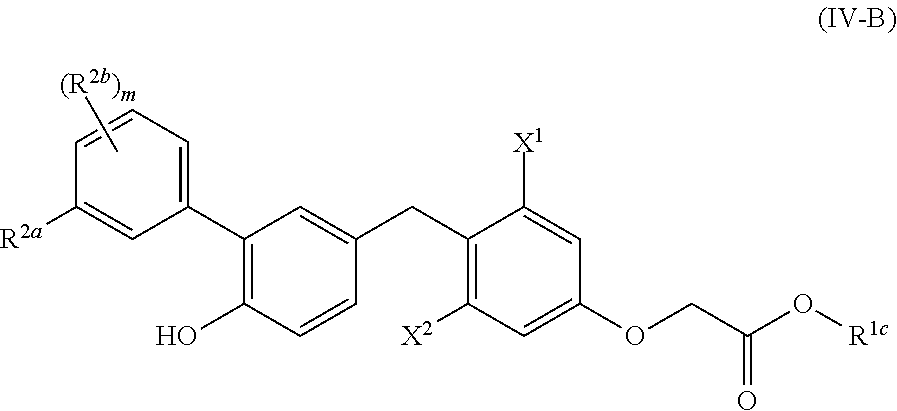






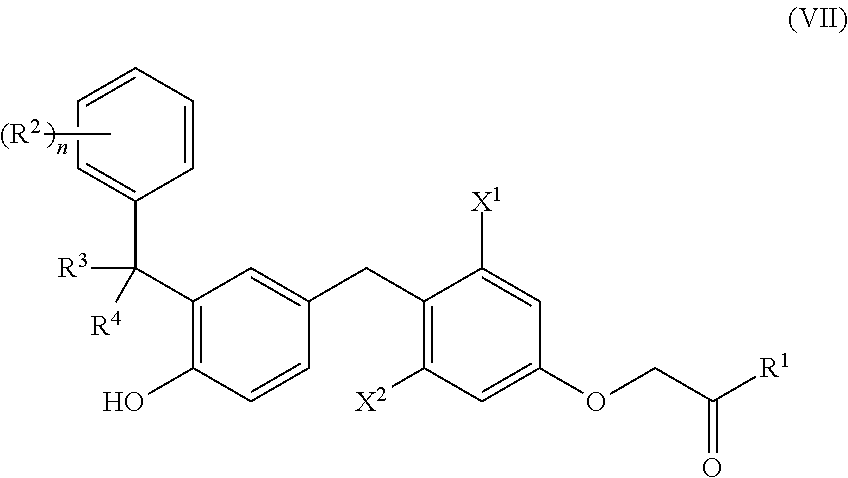




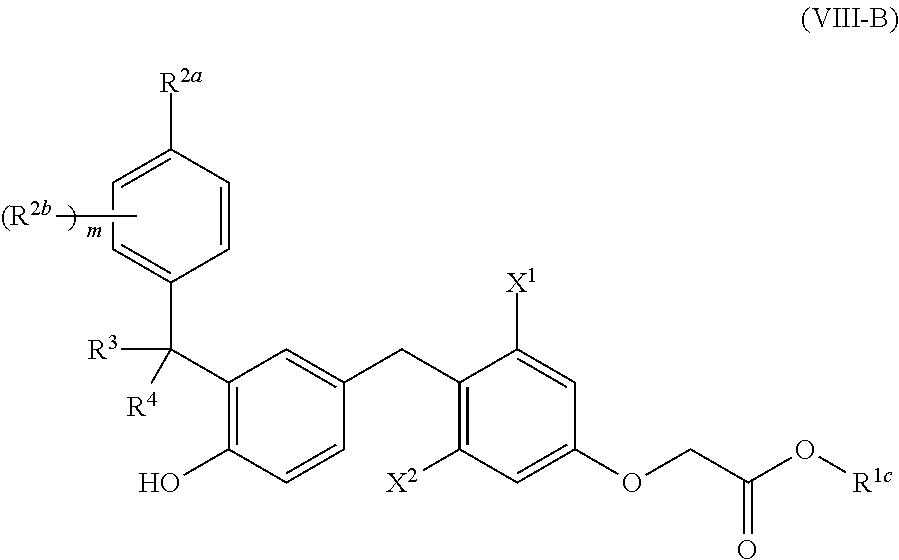


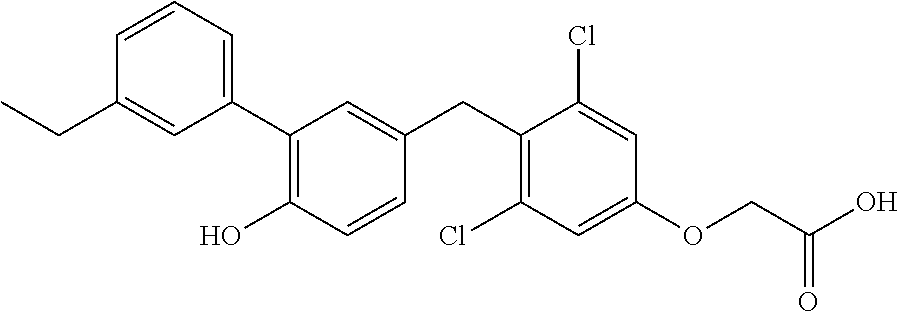




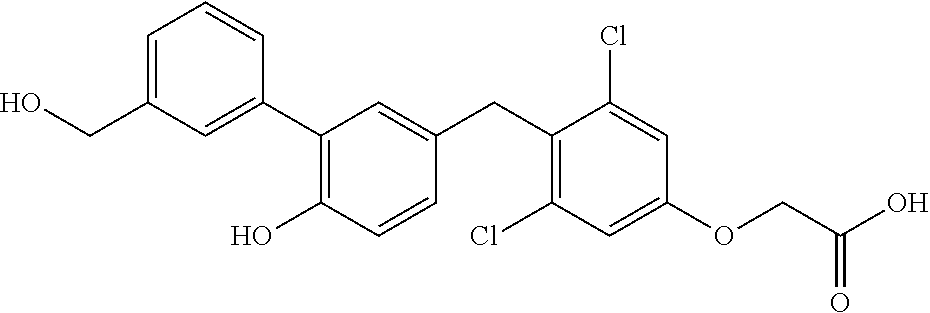
























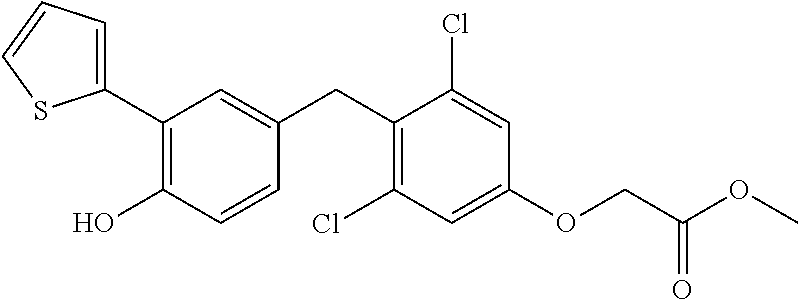




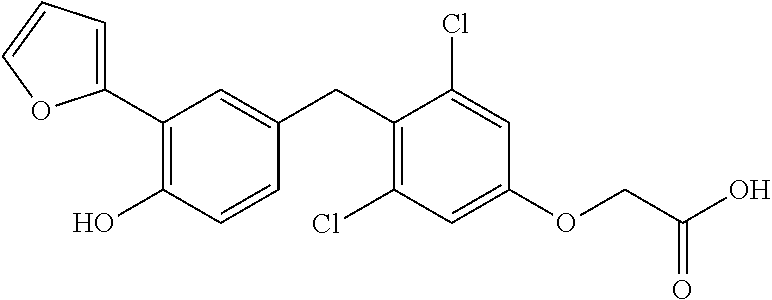

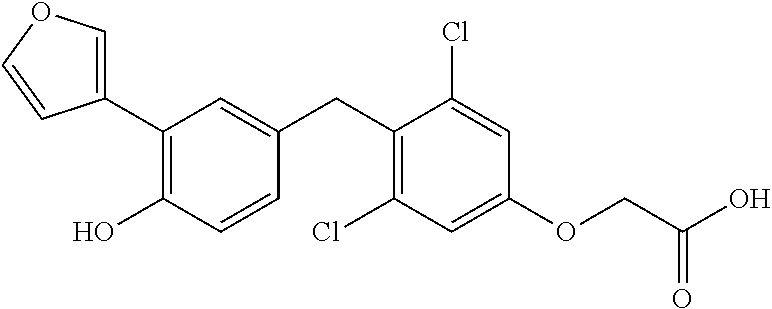












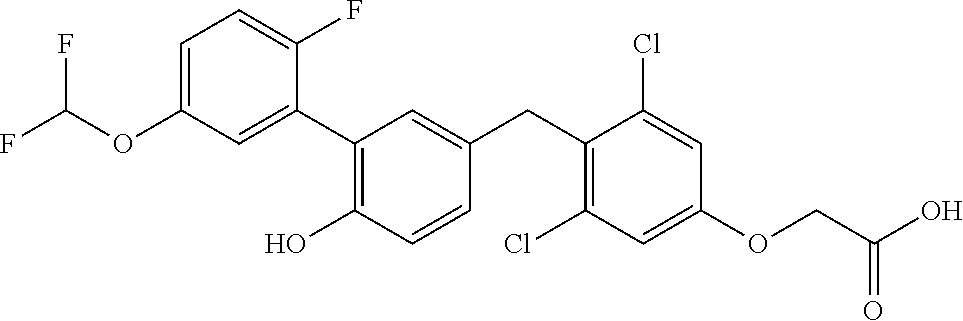

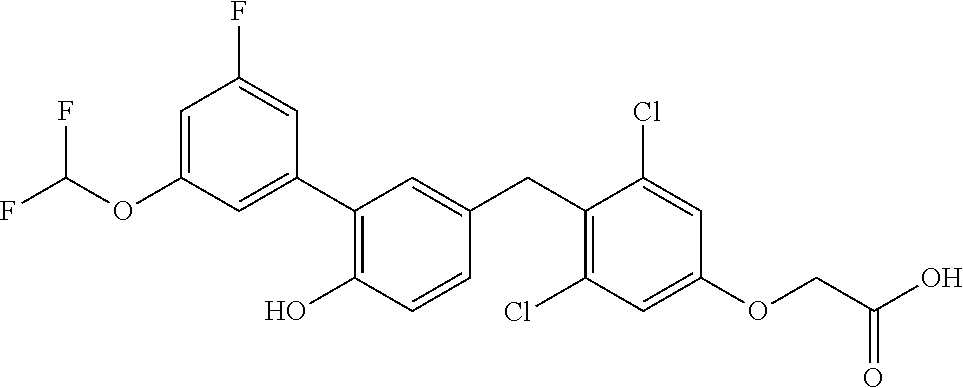

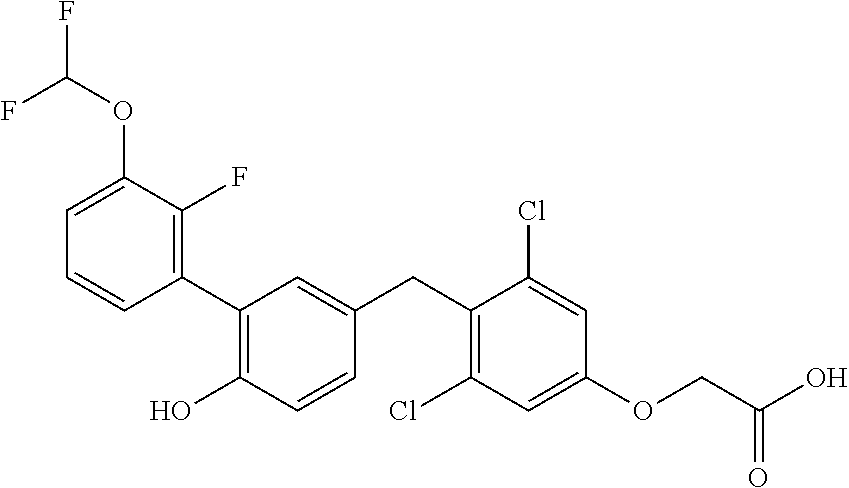















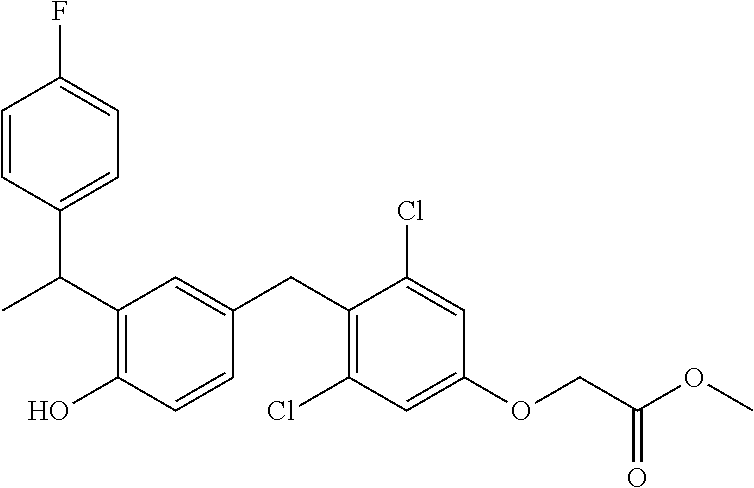








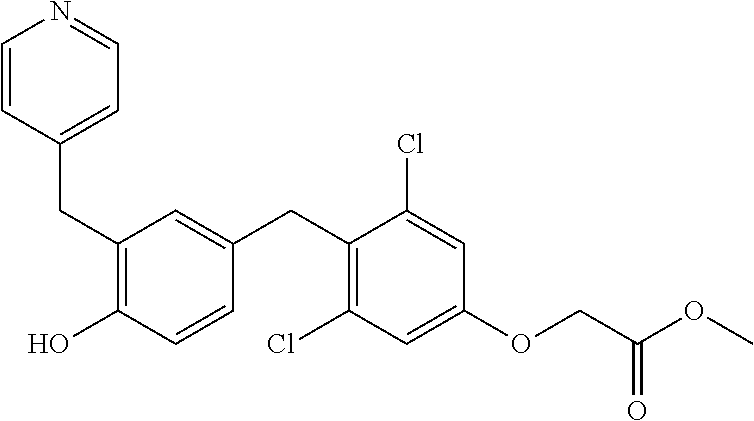


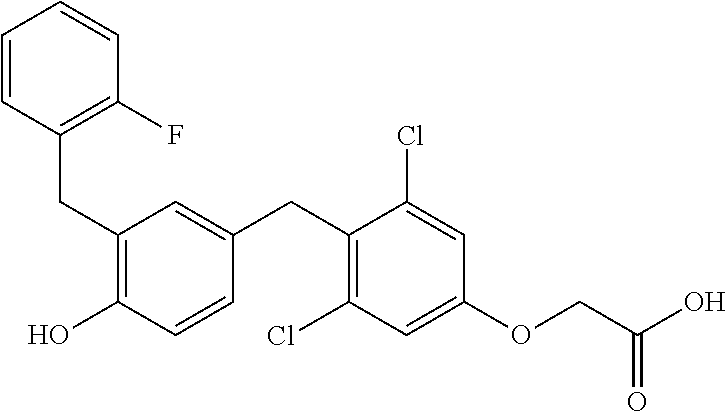




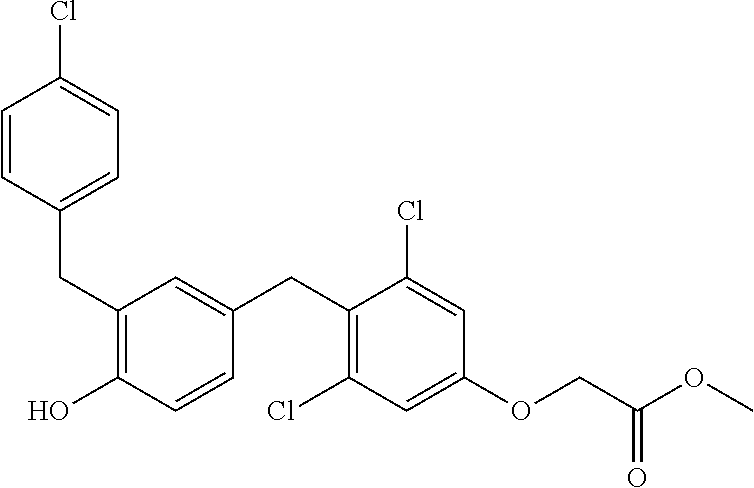




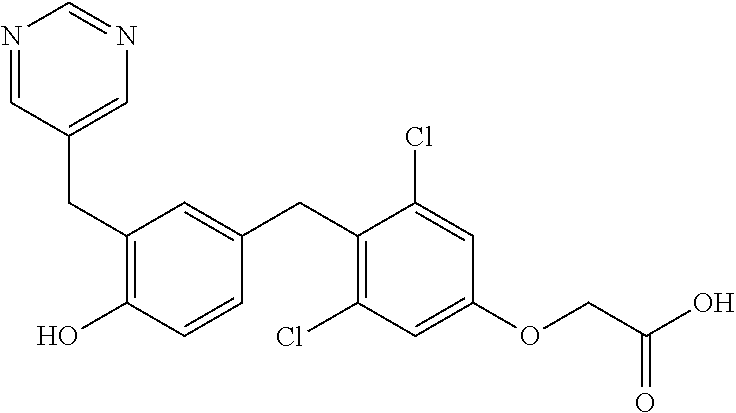




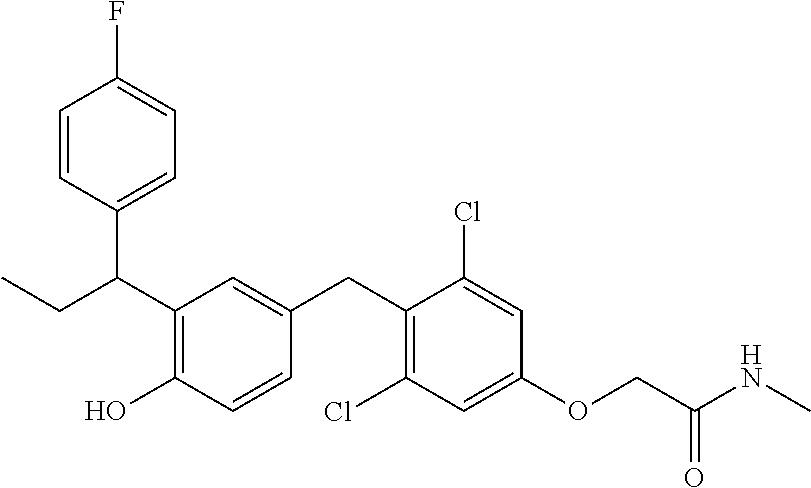







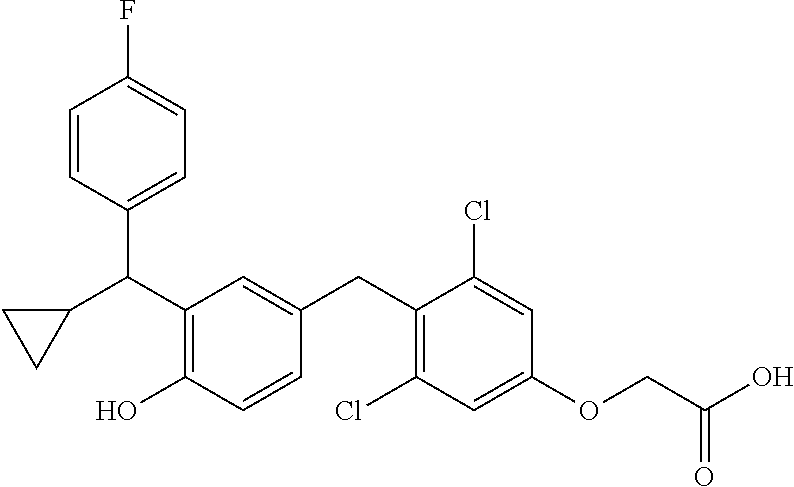


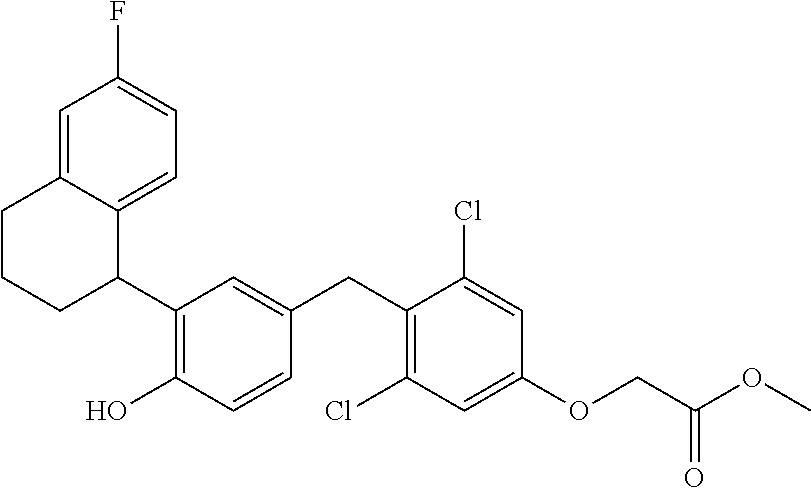














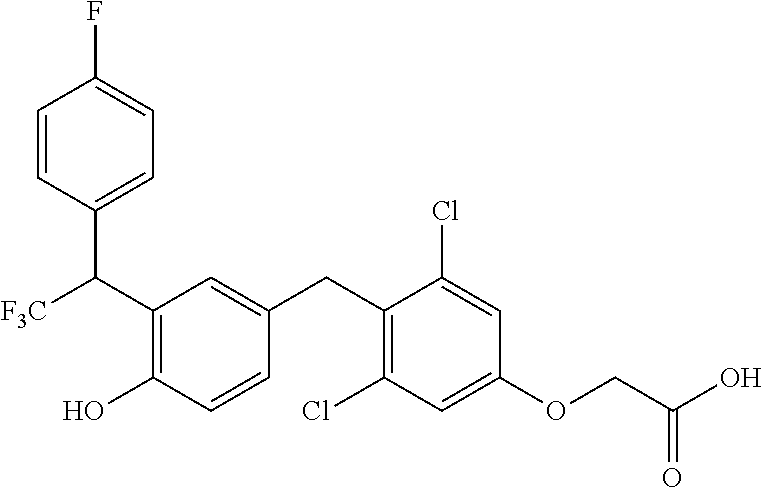





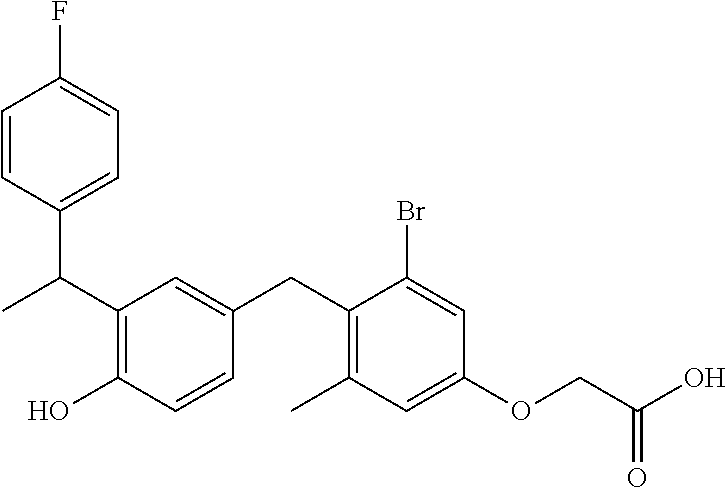

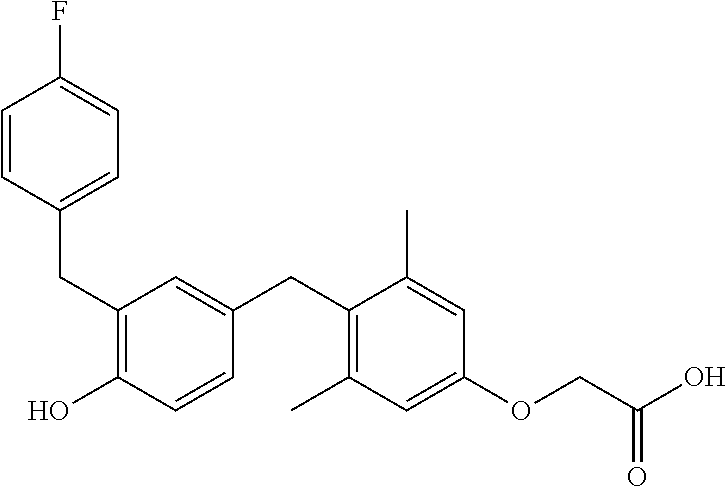


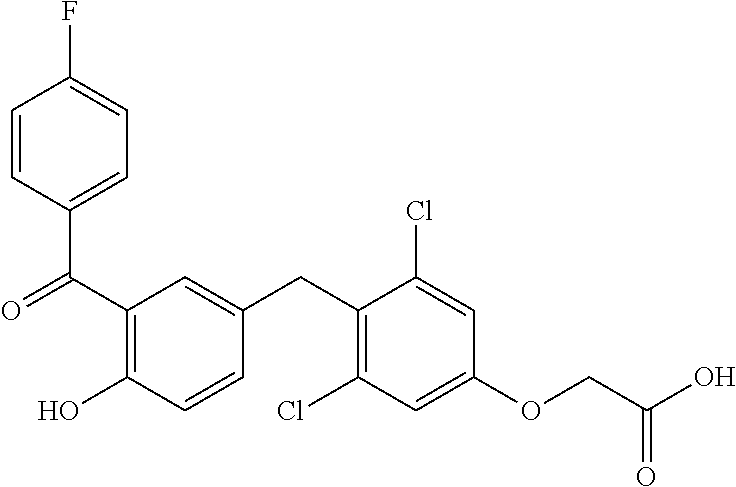





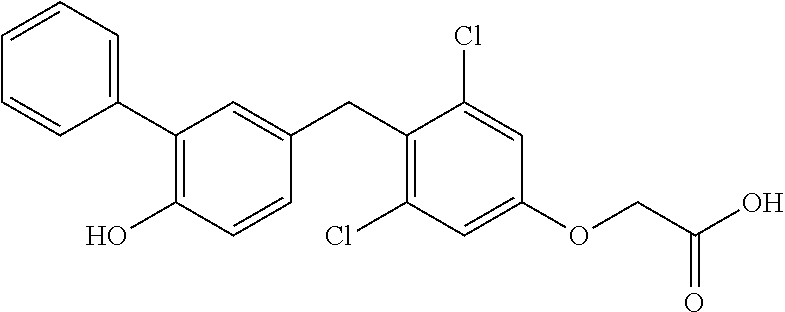









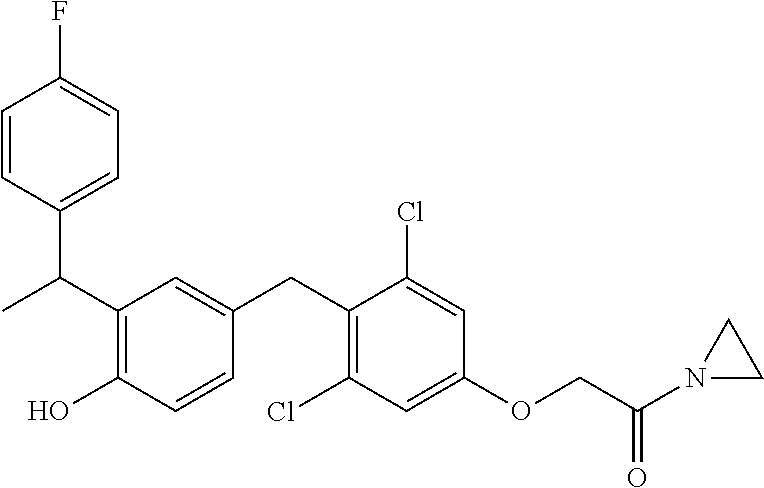





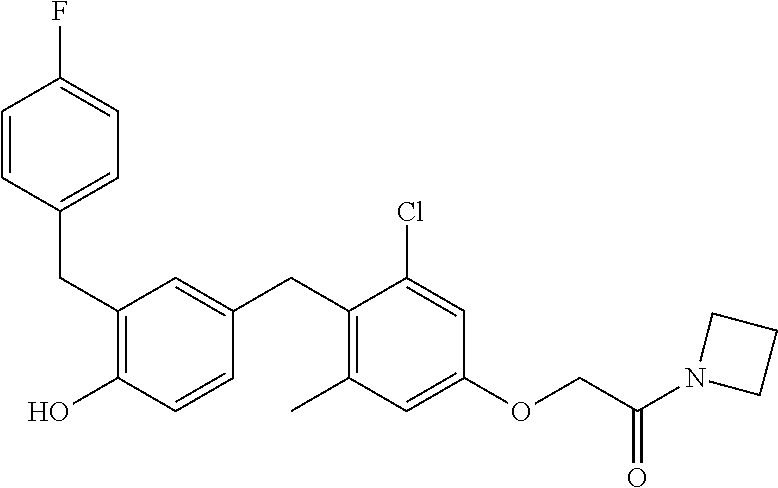



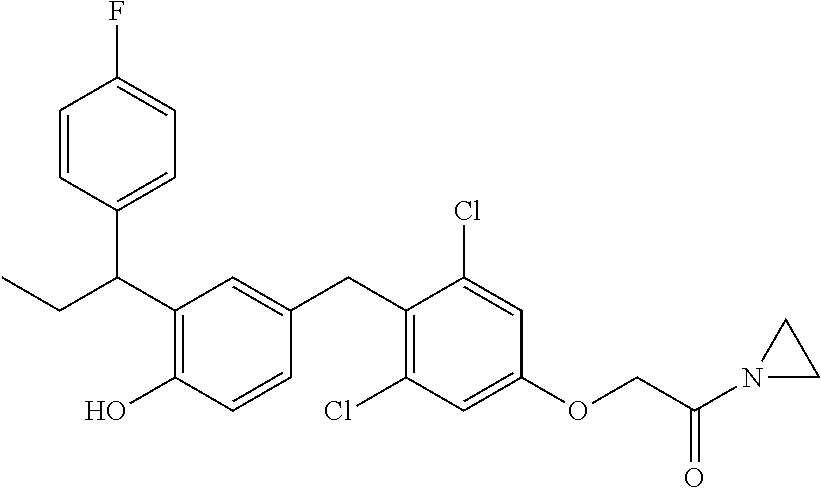
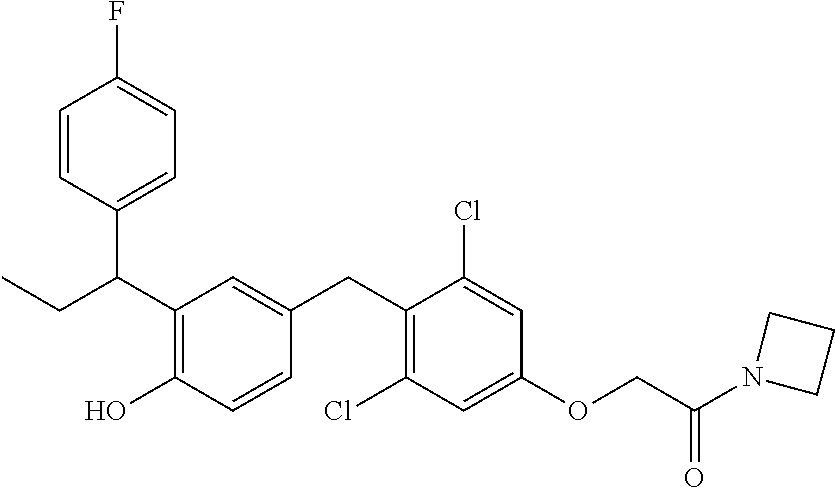

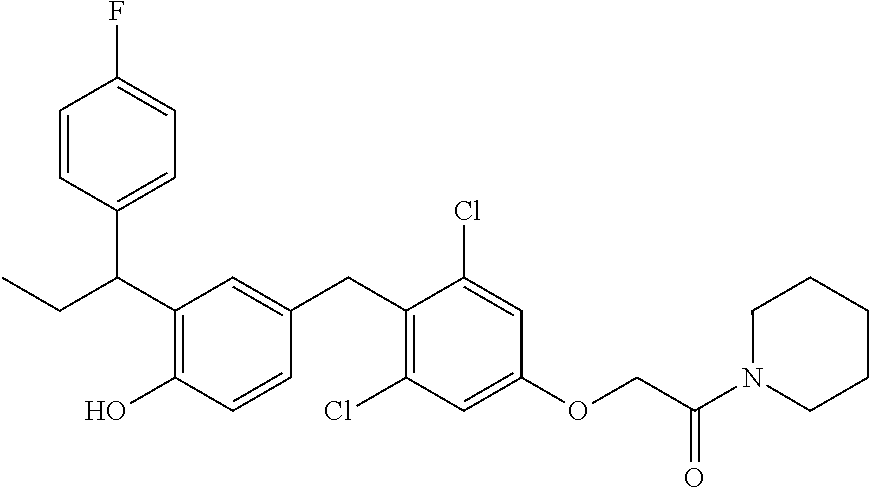


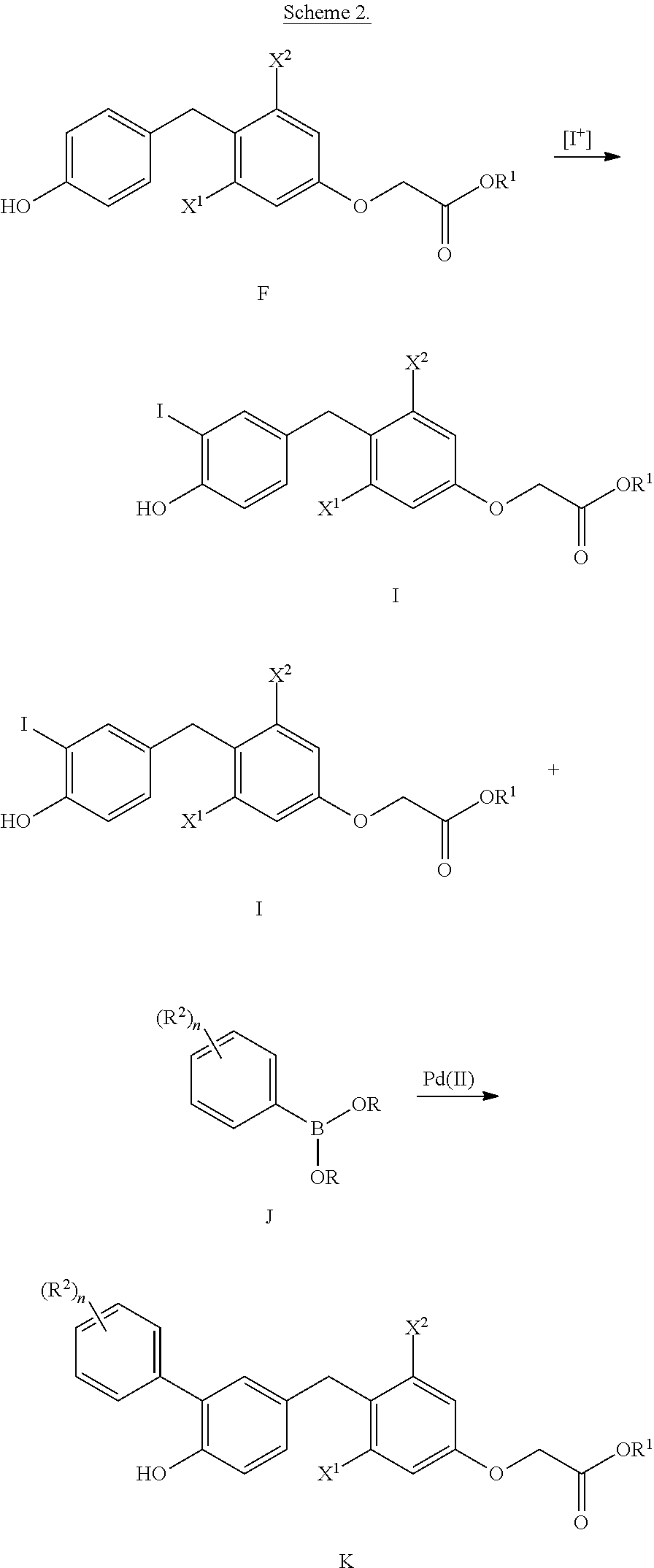




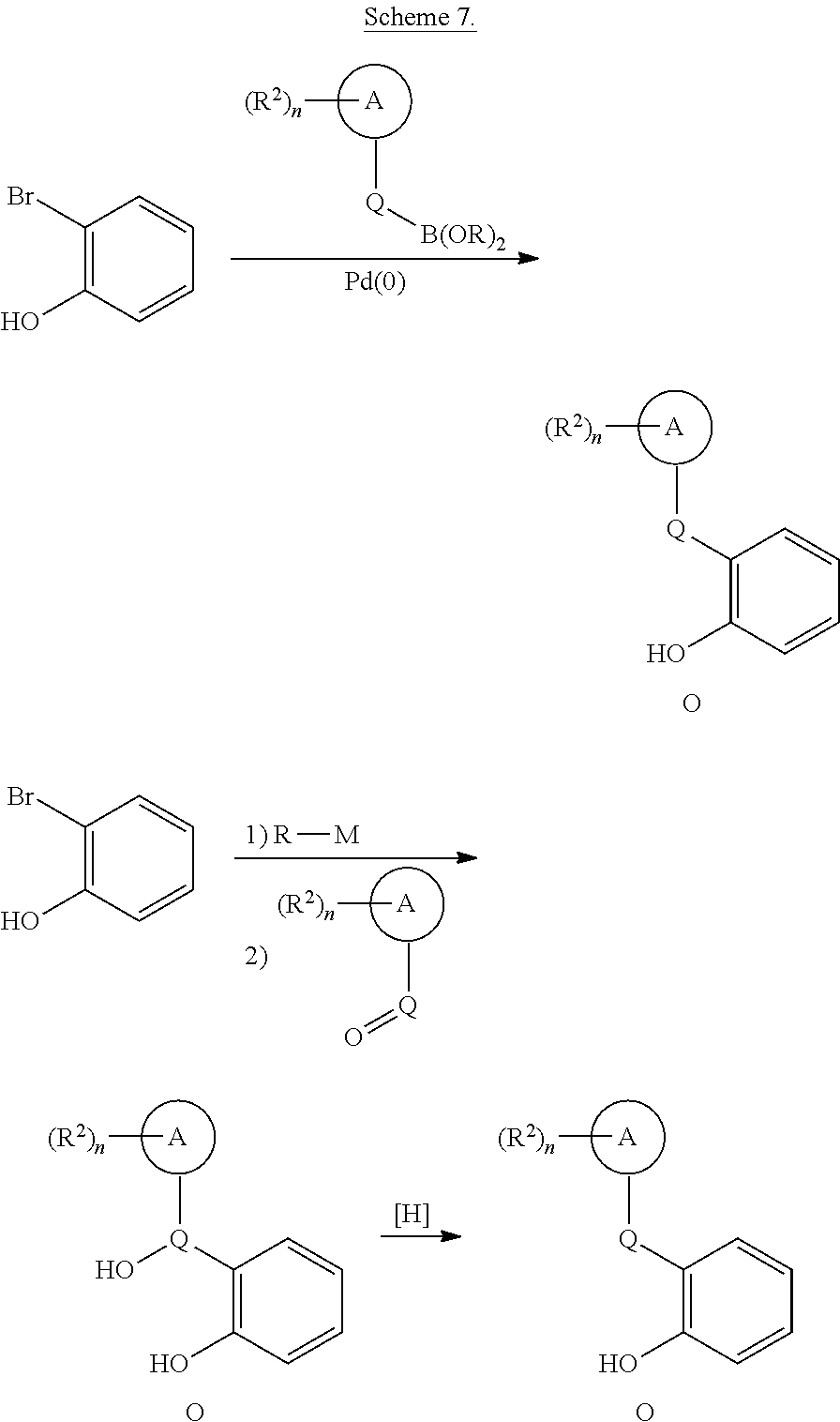




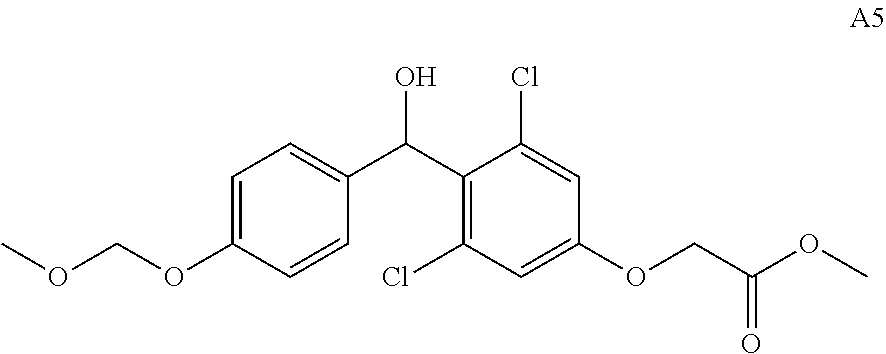




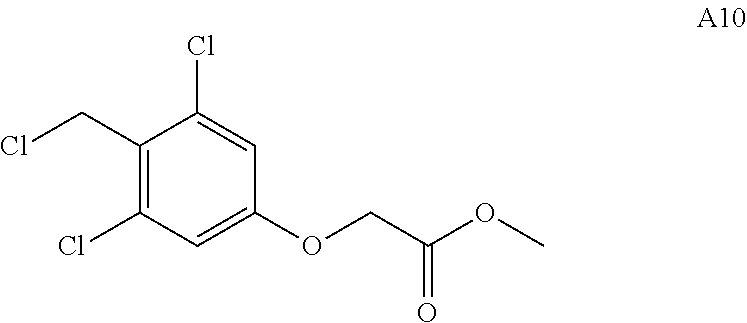


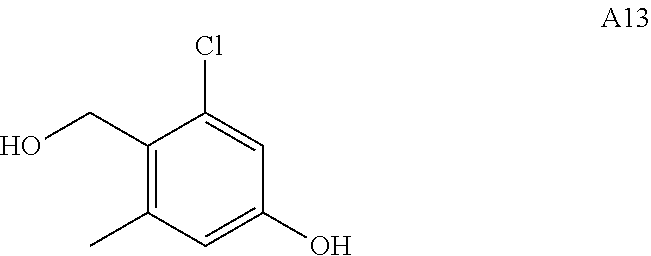




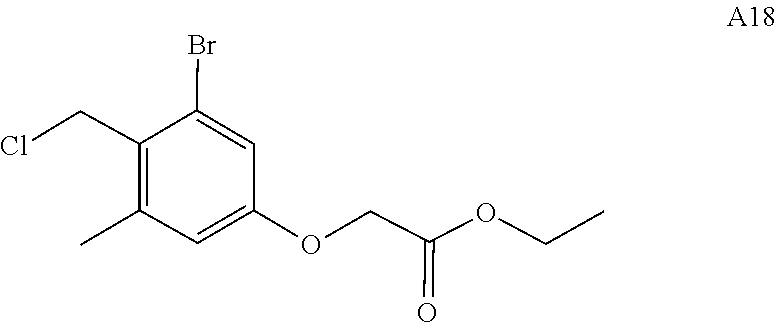

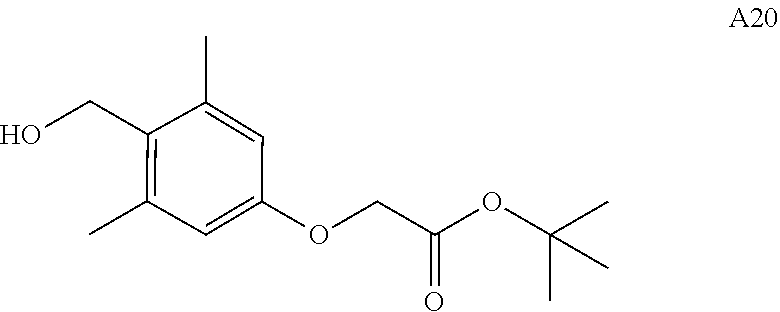















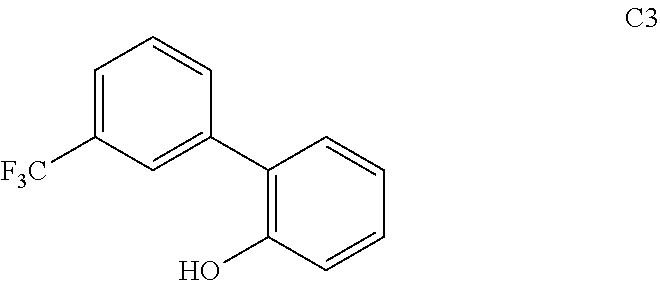







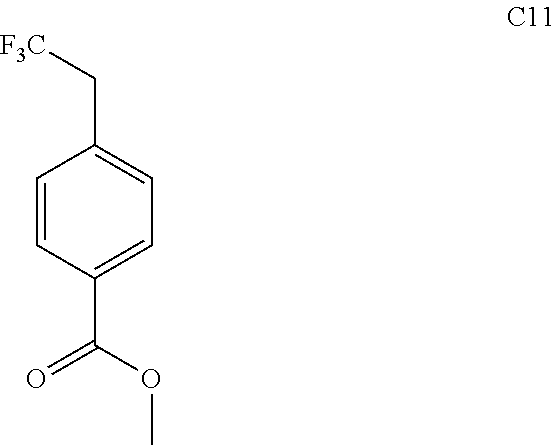






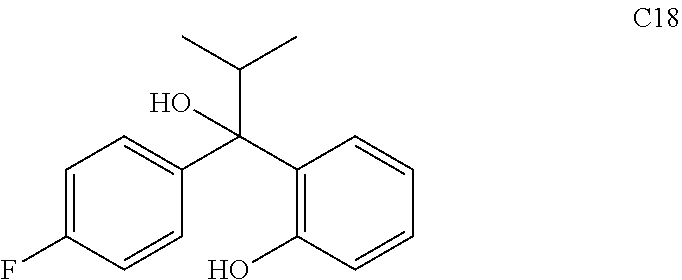





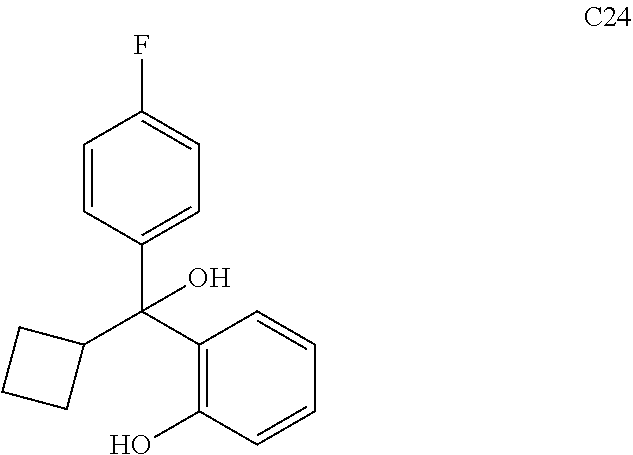
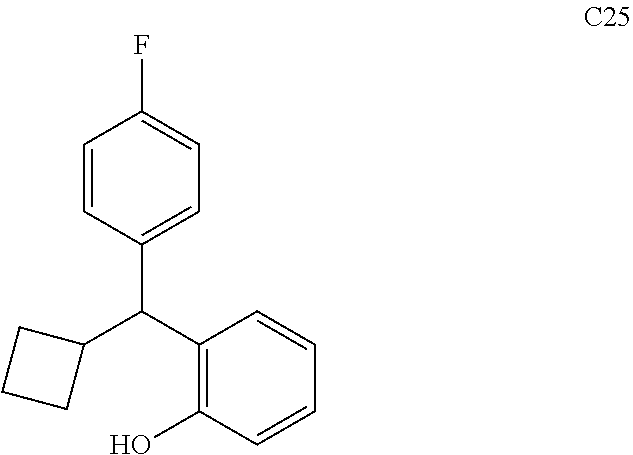
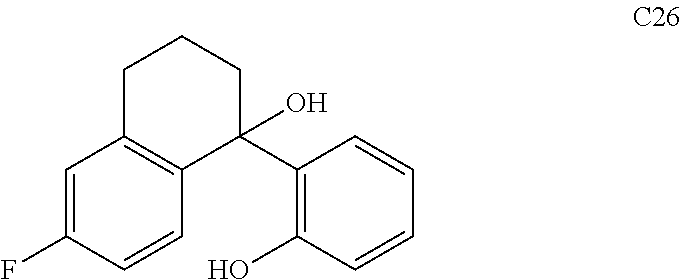



















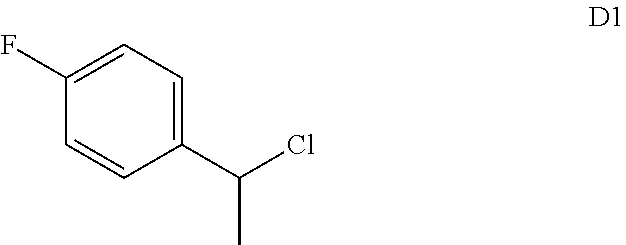
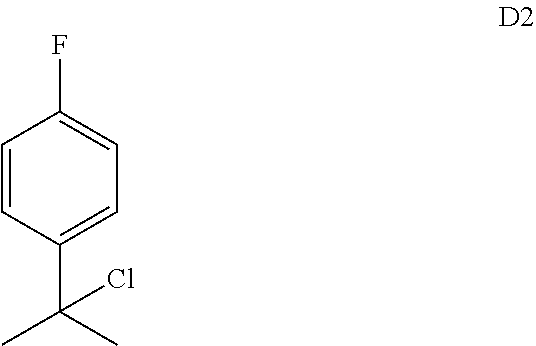



















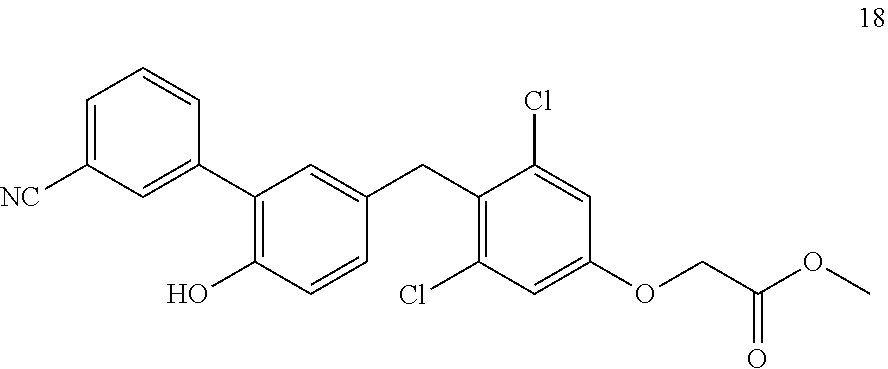











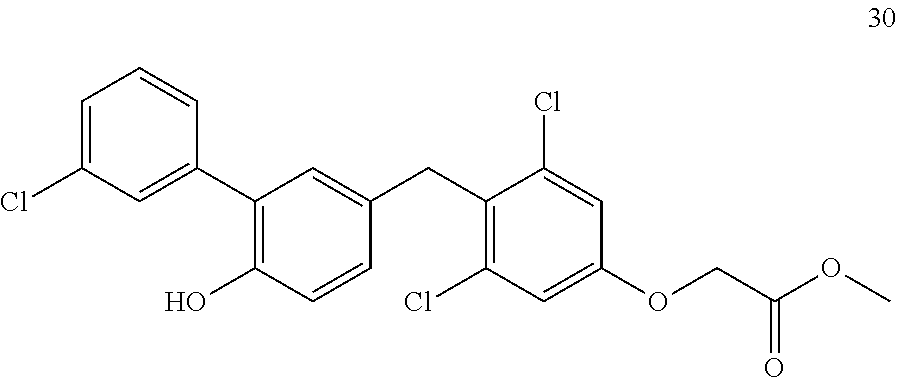






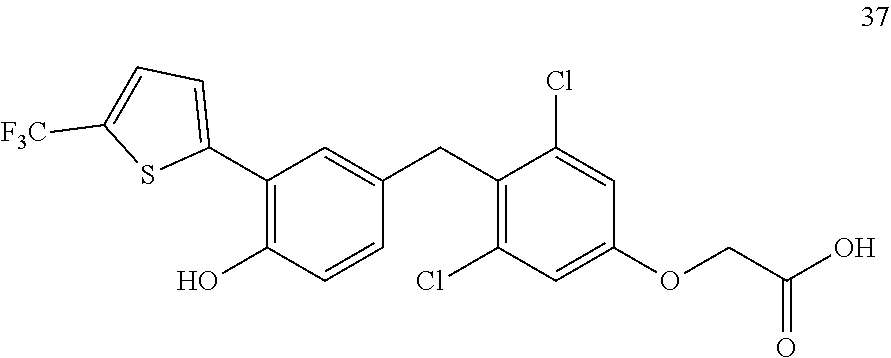

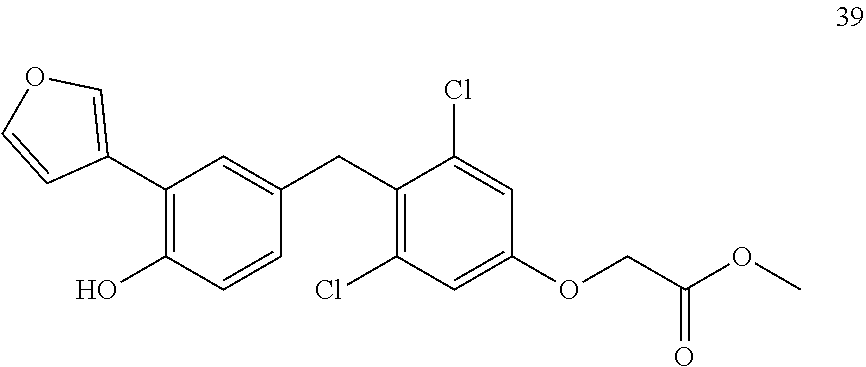



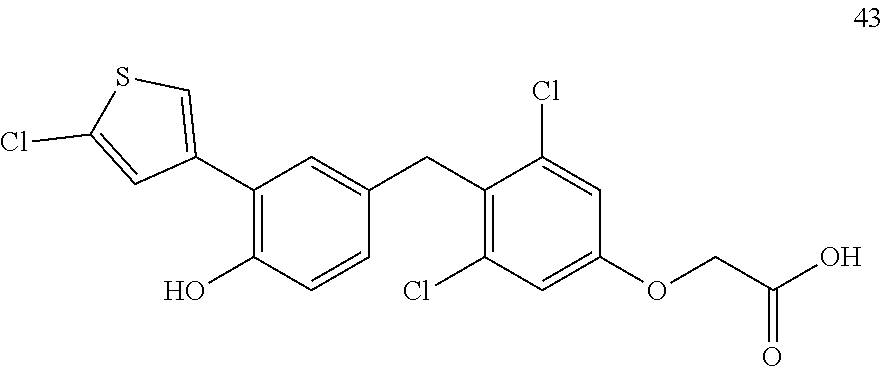











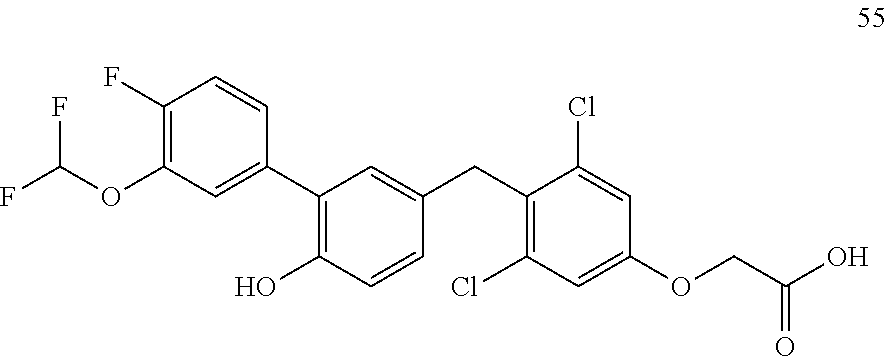

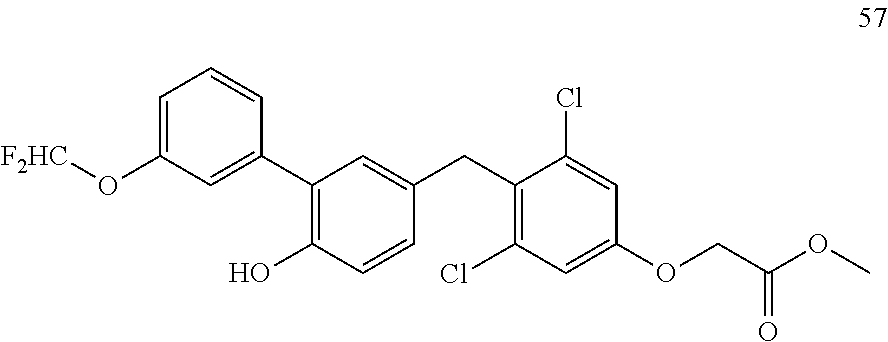






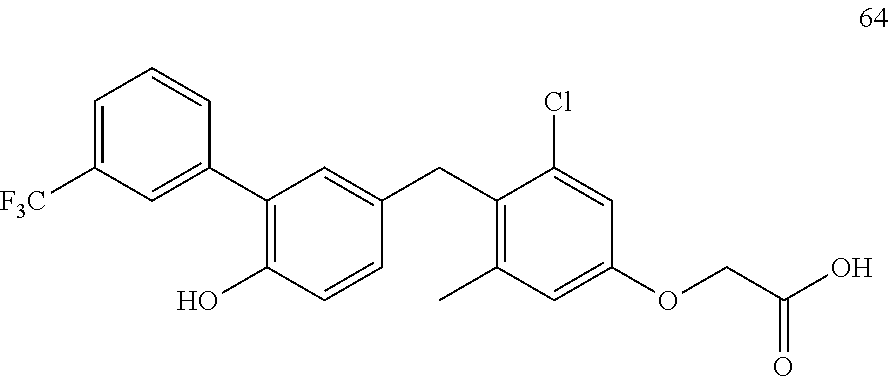






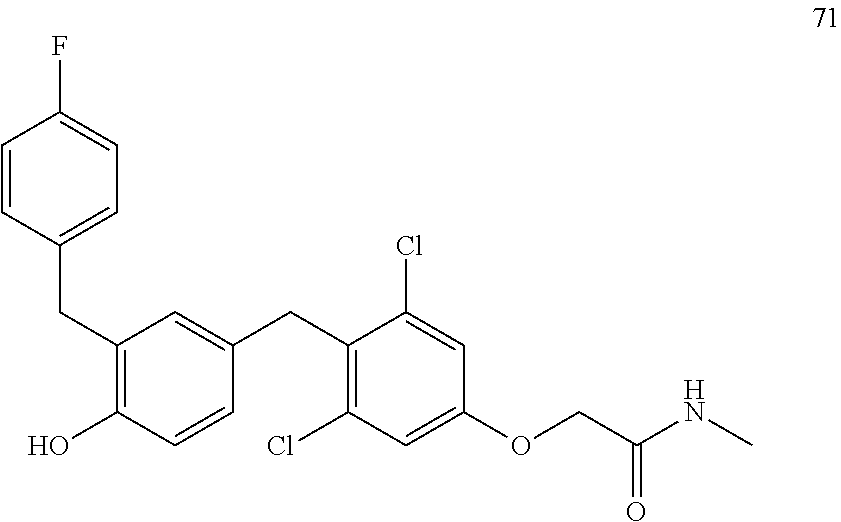



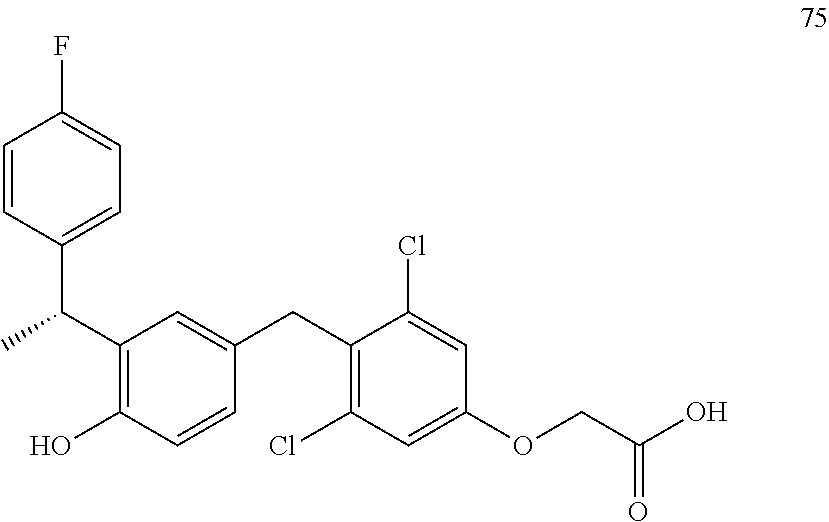





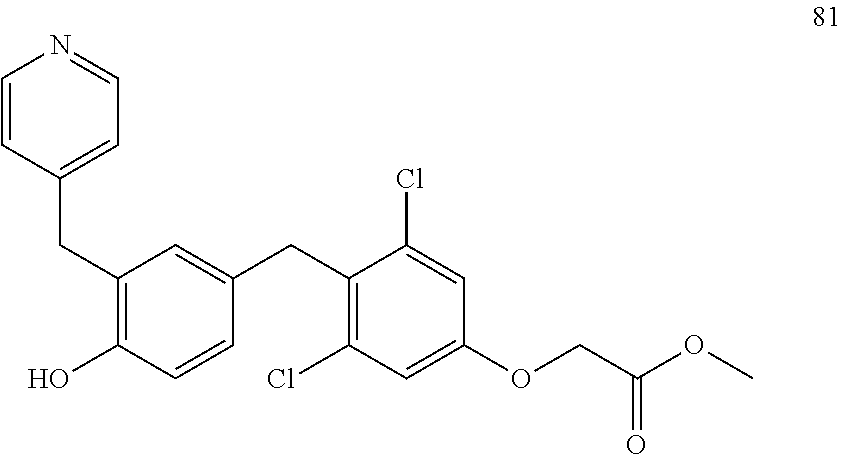


















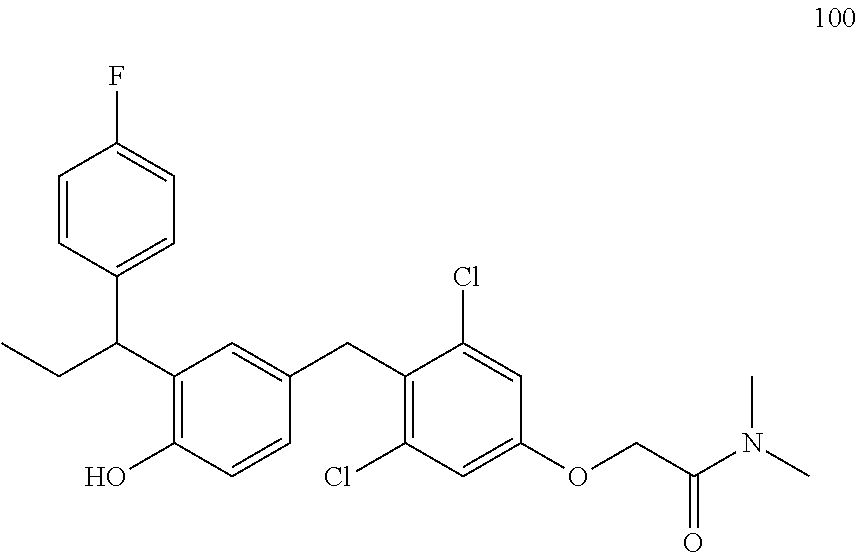




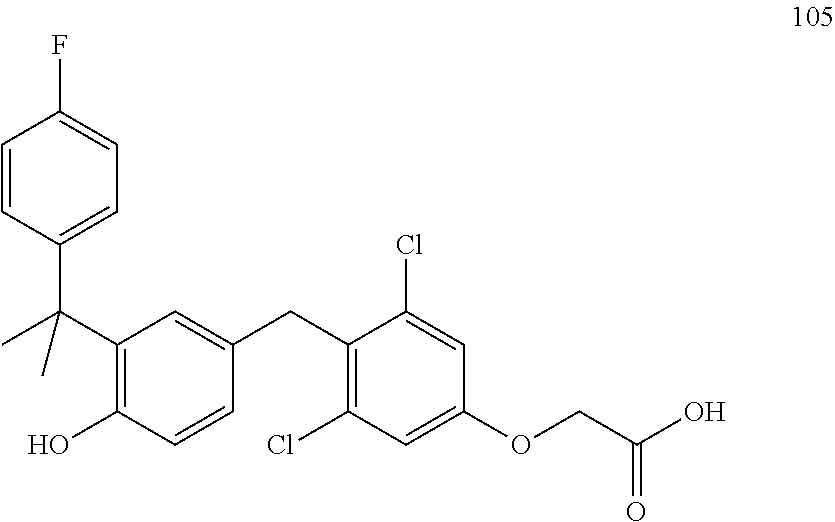
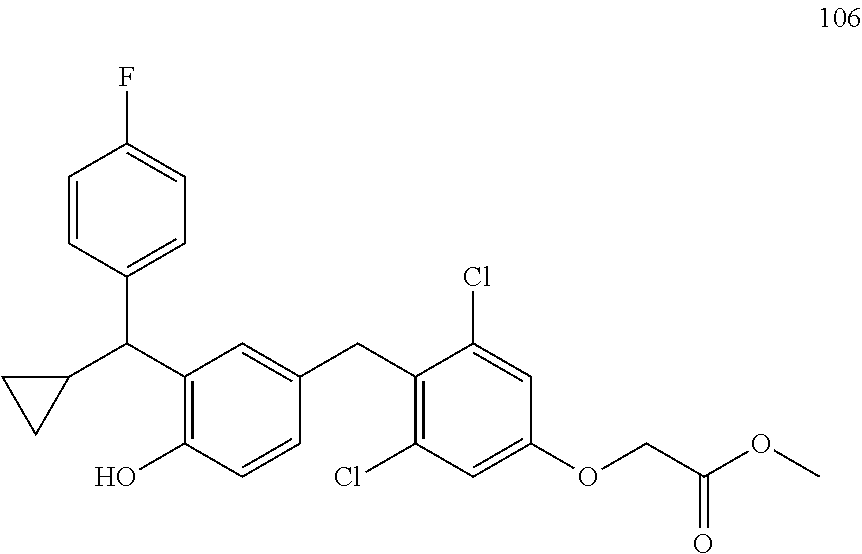










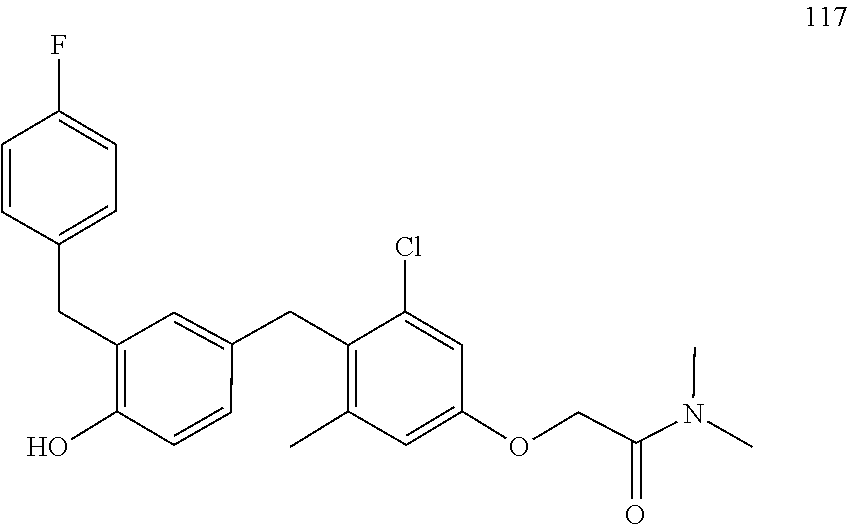










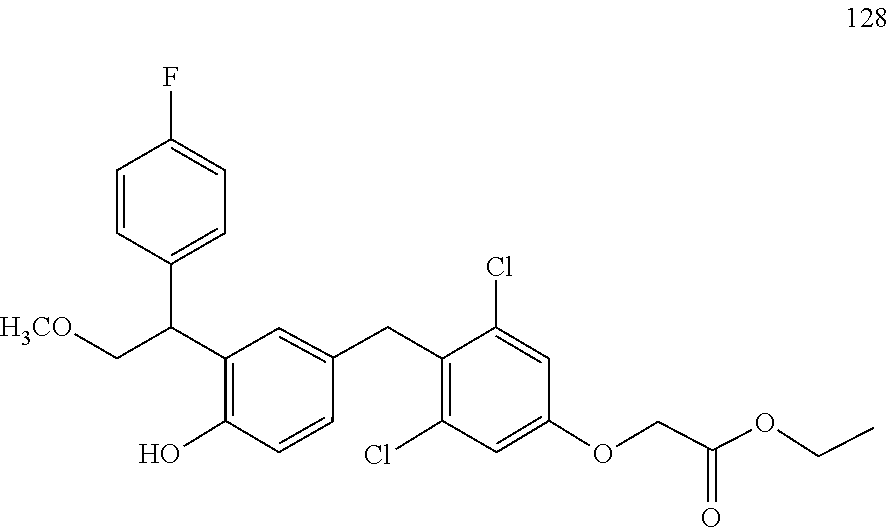

















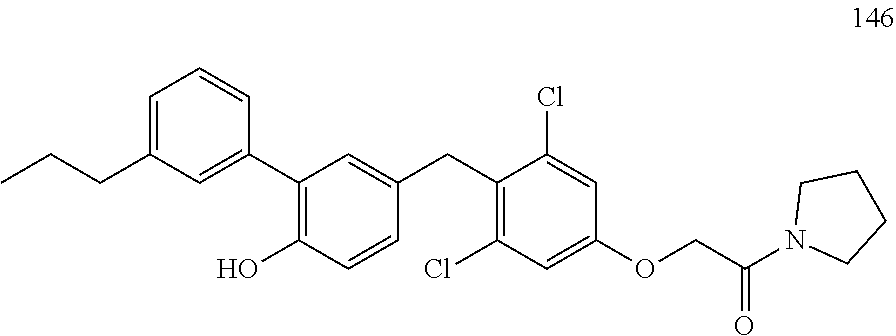


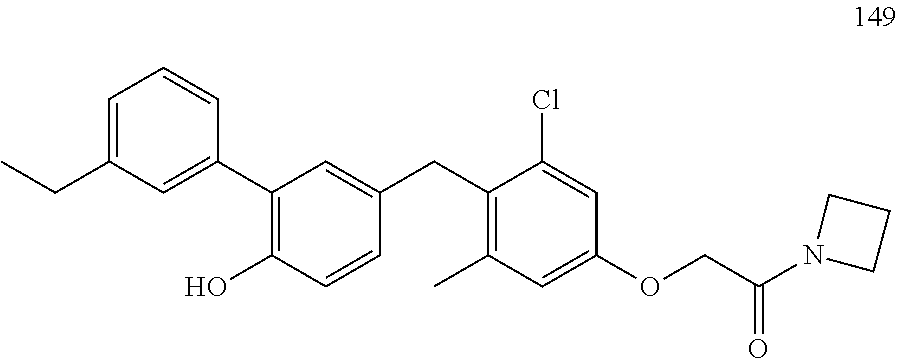
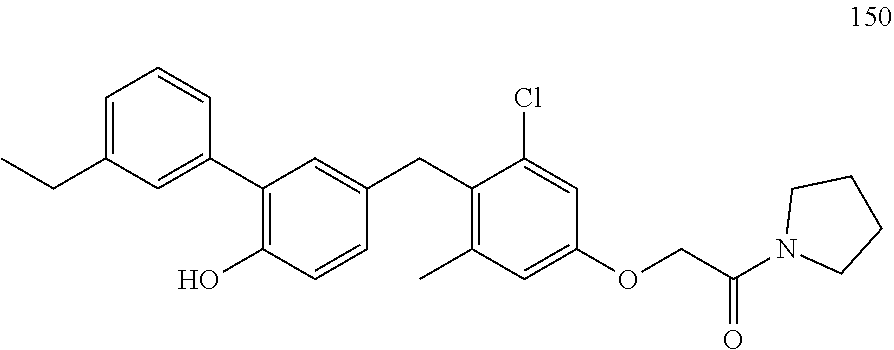





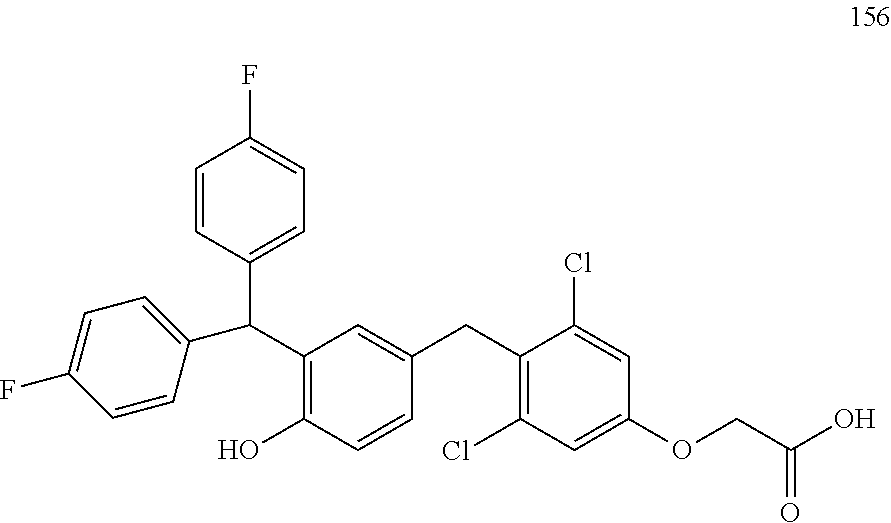
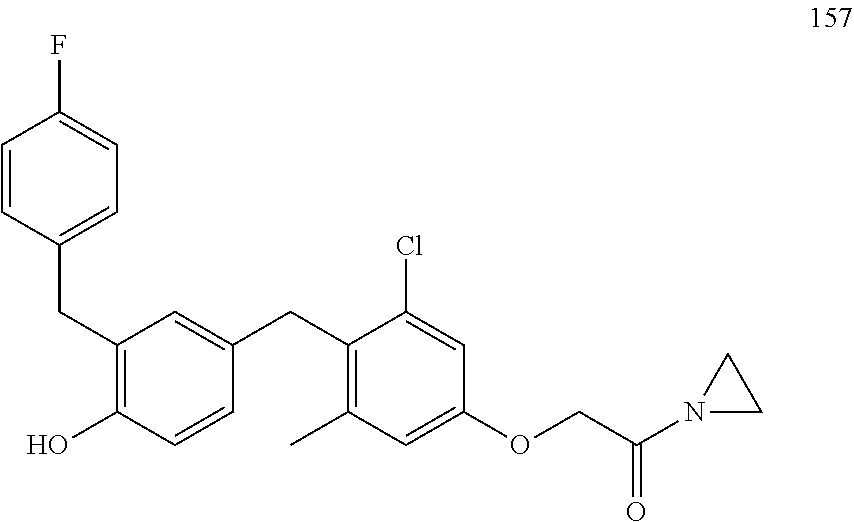





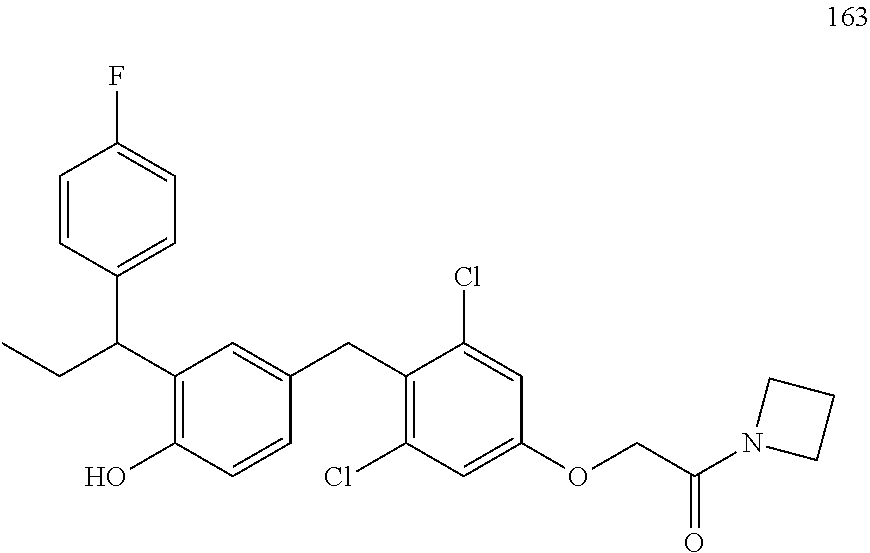








































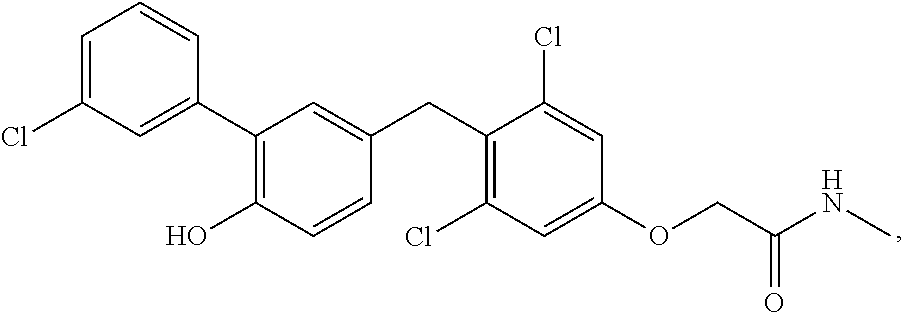
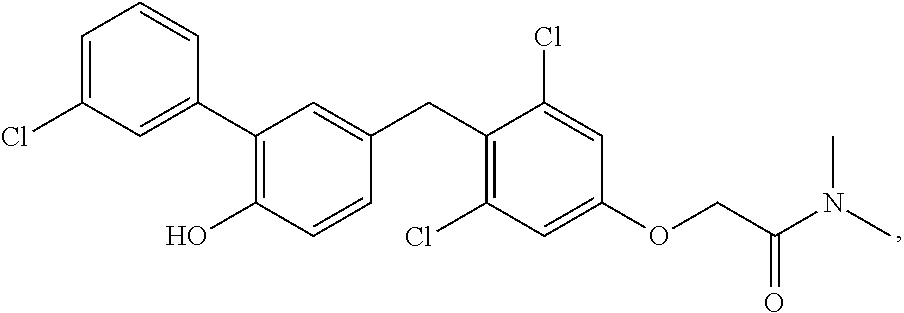
















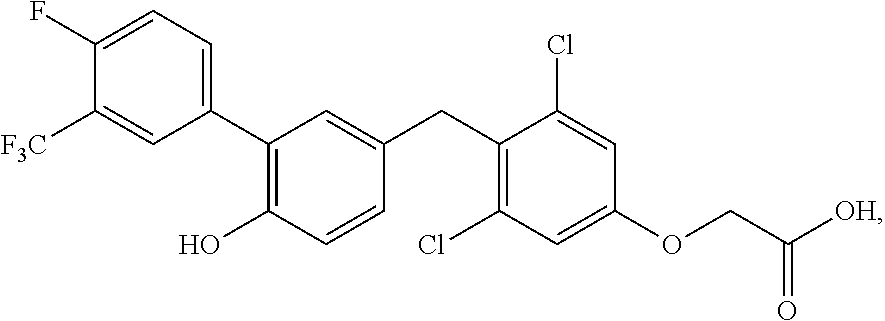




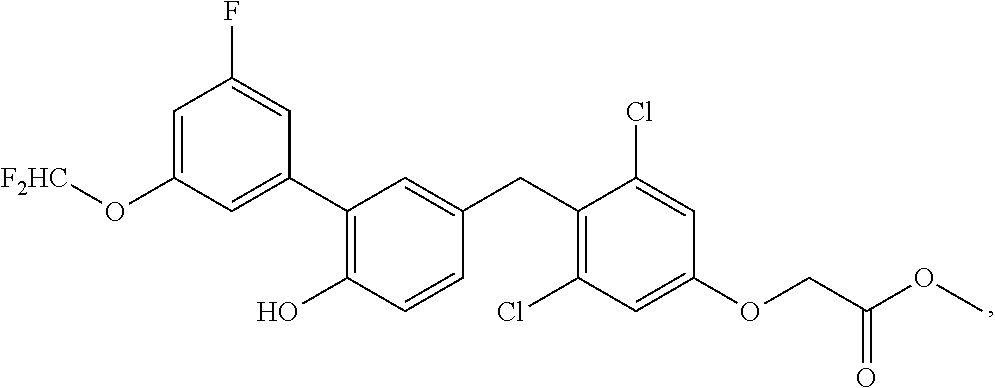




















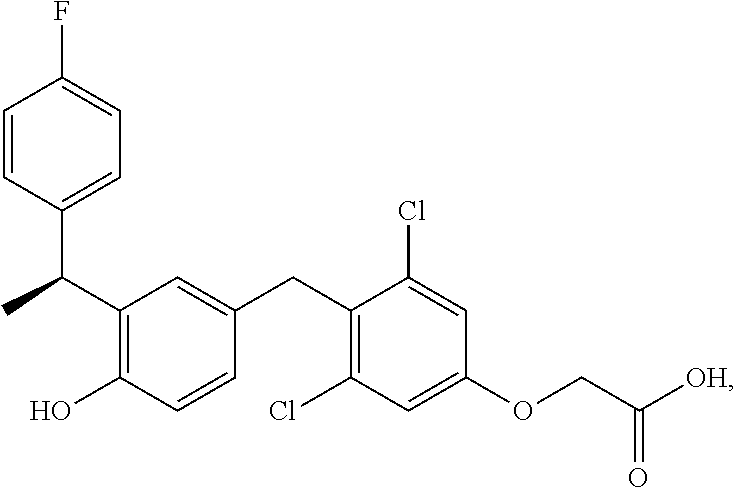





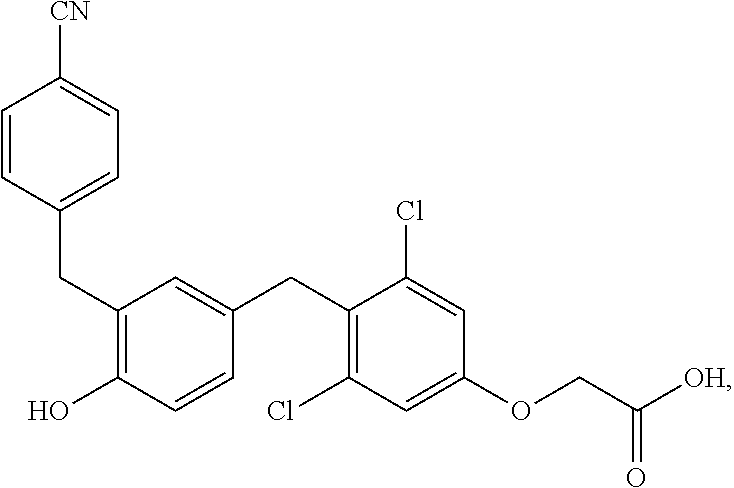






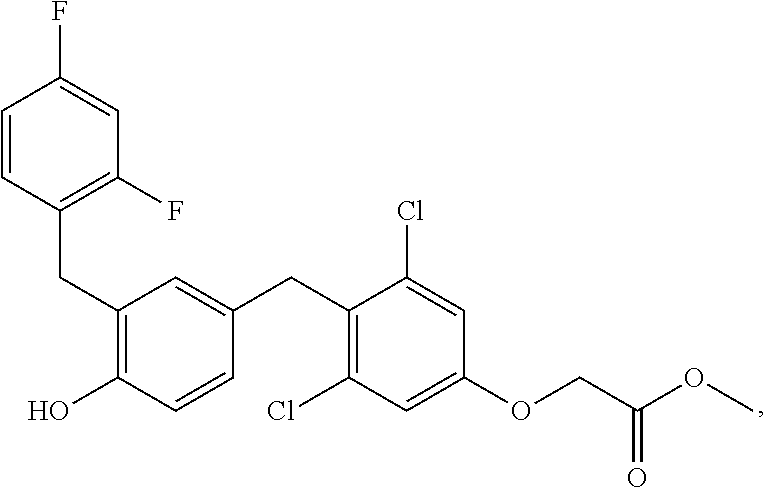


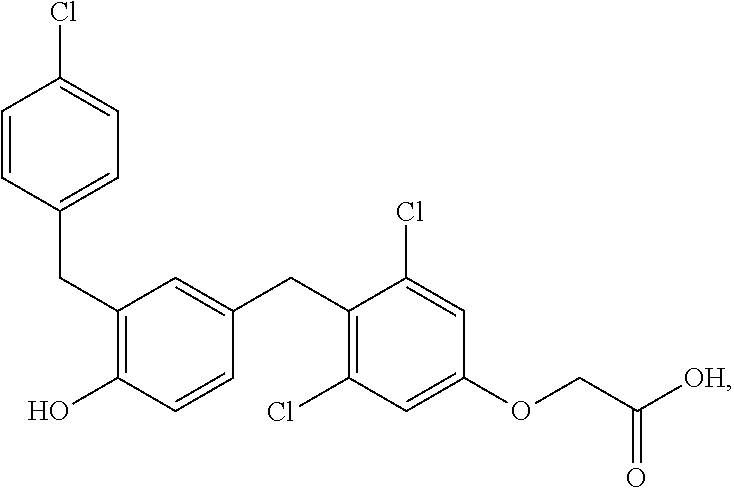














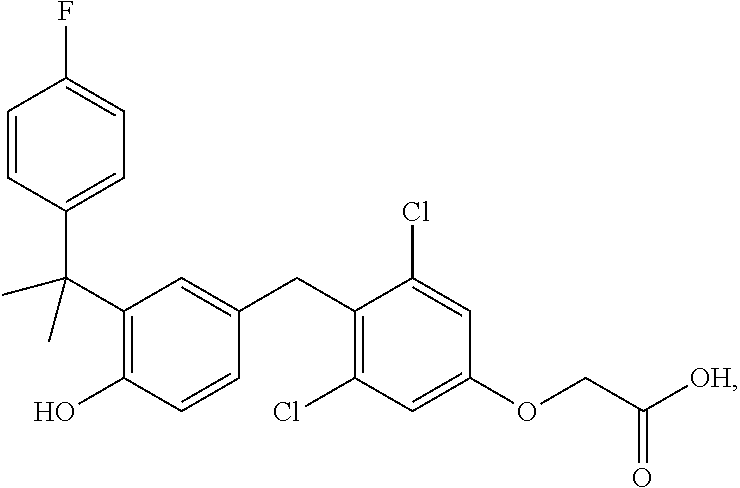










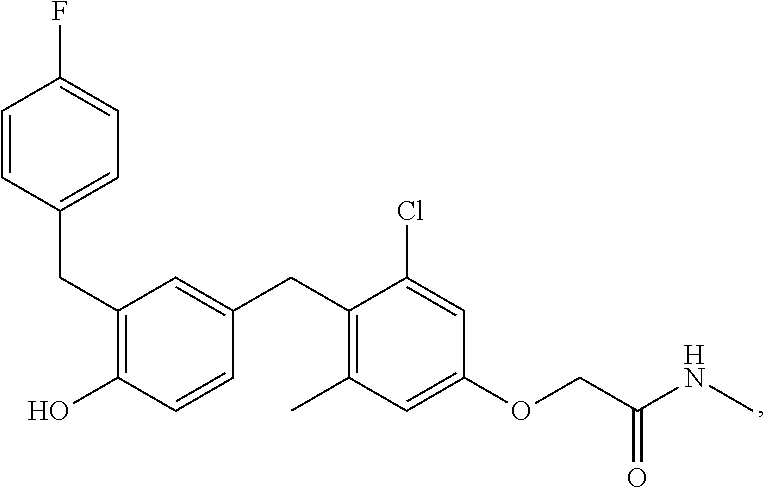


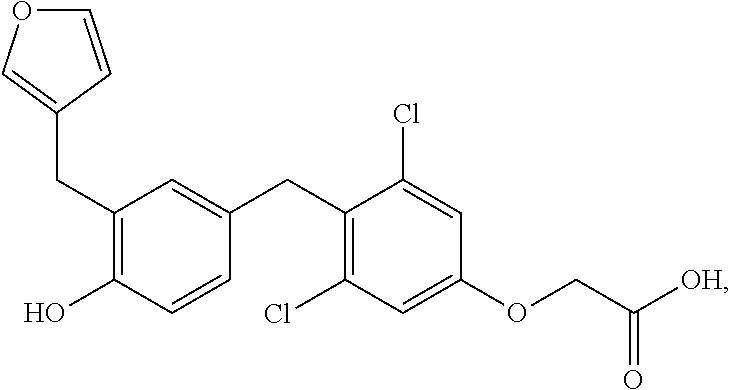






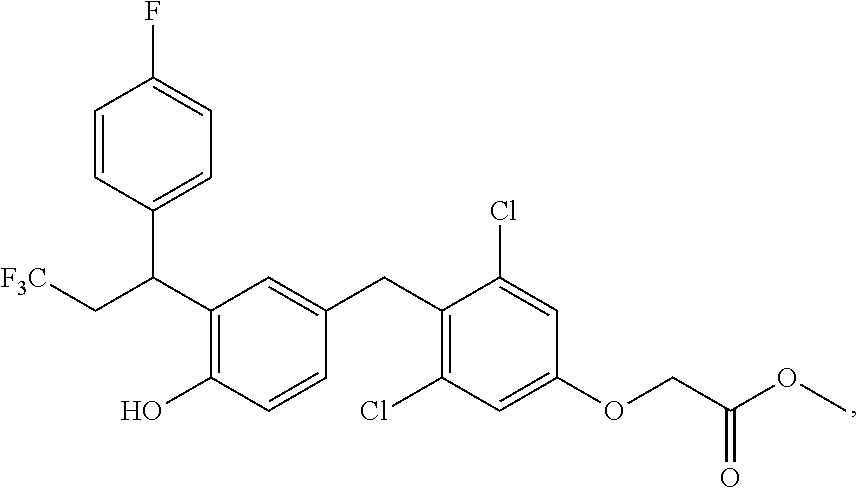




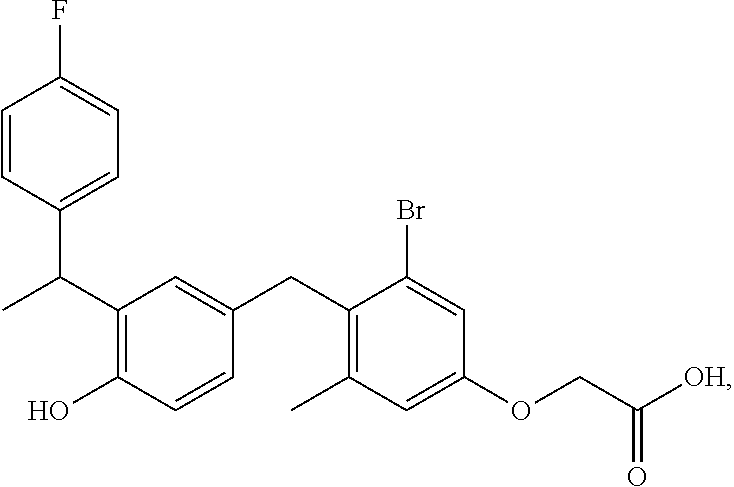




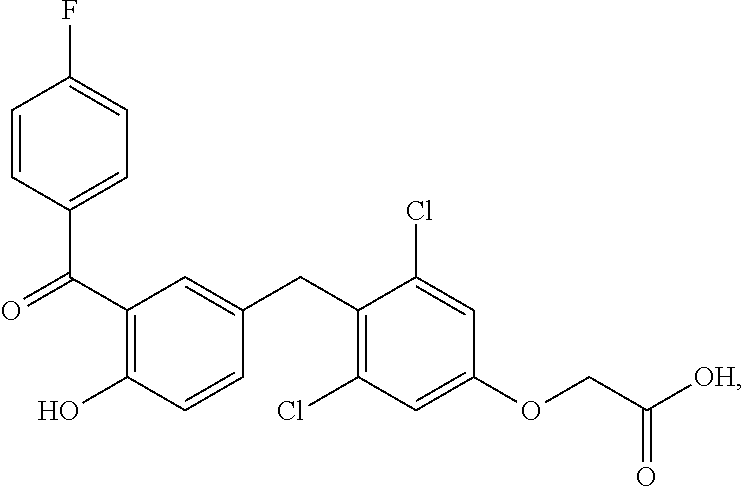





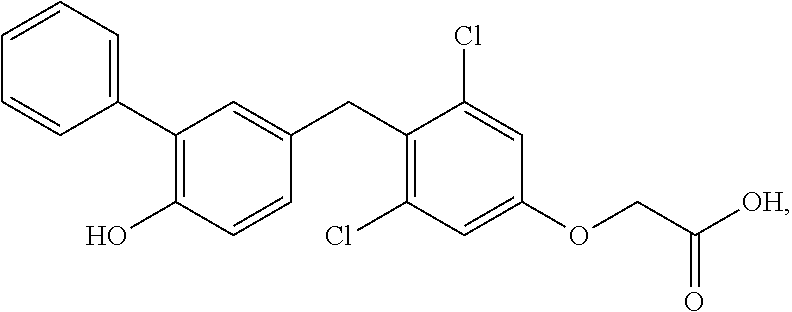
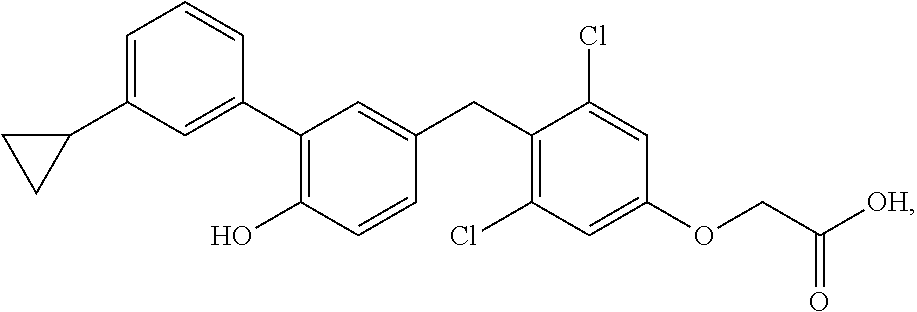



















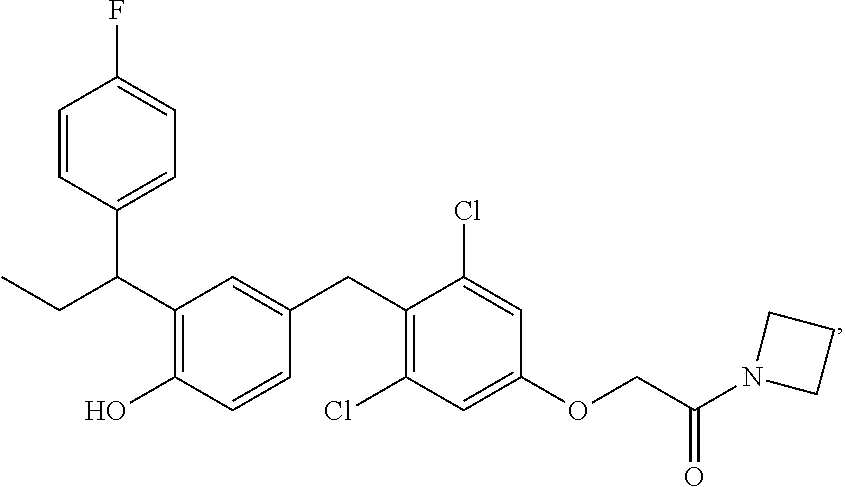


XML
uspto.report is an independent third-party trademark research tool that is not affiliated, endorsed, or sponsored by the United States Patent and Trademark Office (USPTO) or any other governmental organization. The information provided by uspto.report is based on publicly available data at the time of writing and is intended for informational purposes only.
While we strive to provide accurate and up-to-date information, we do not guarantee the accuracy, completeness, reliability, or suitability of the information displayed on this site. The use of this site is at your own risk. Any reliance you place on such information is therefore strictly at your own risk.
All official trademark data, including owner information, should be verified by visiting the official USPTO website at www.uspto.gov. This site is not intended to replace professional legal advice and should not be used as a substitute for consulting with a legal professional who is knowledgeable about trademark law.